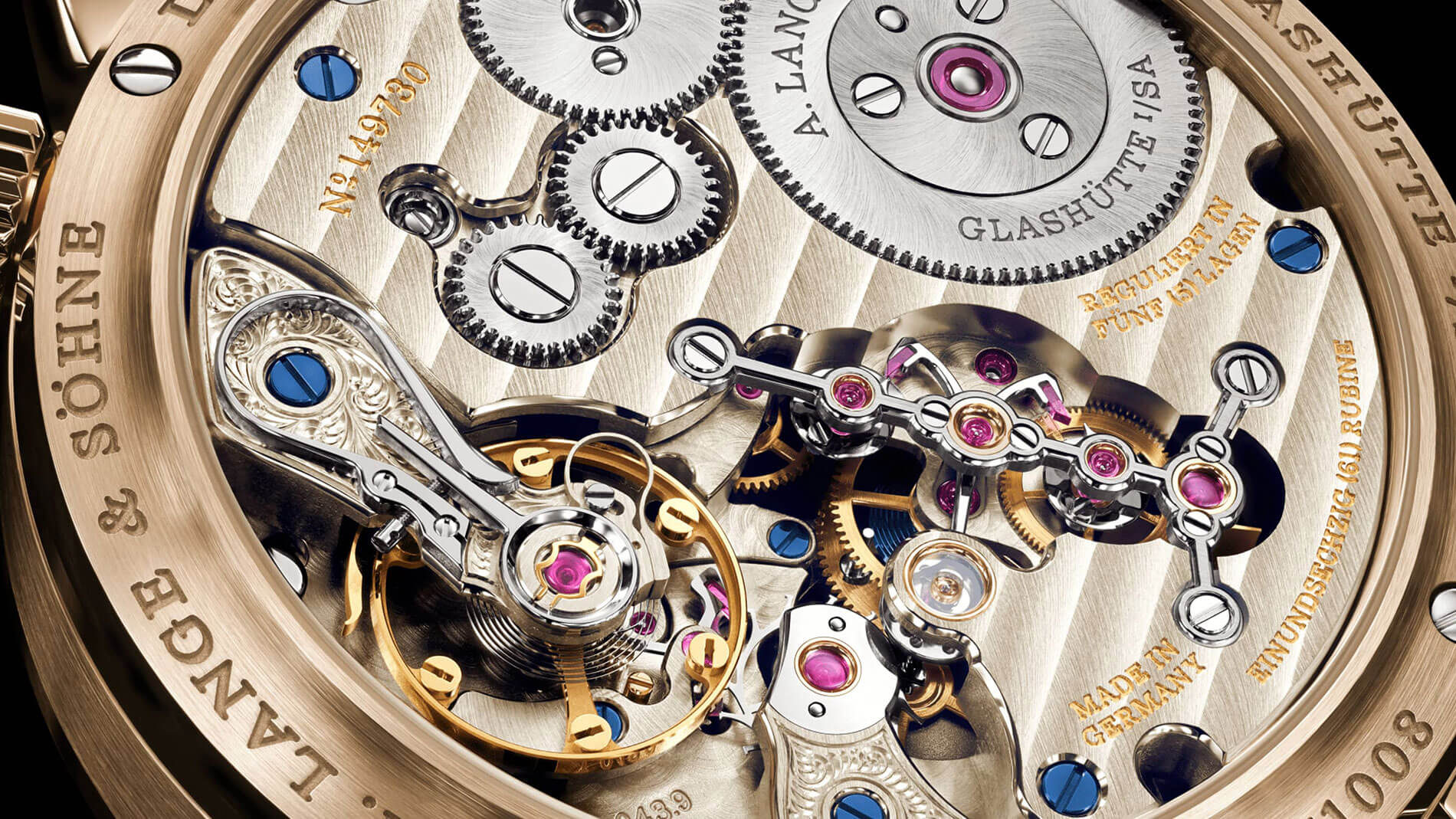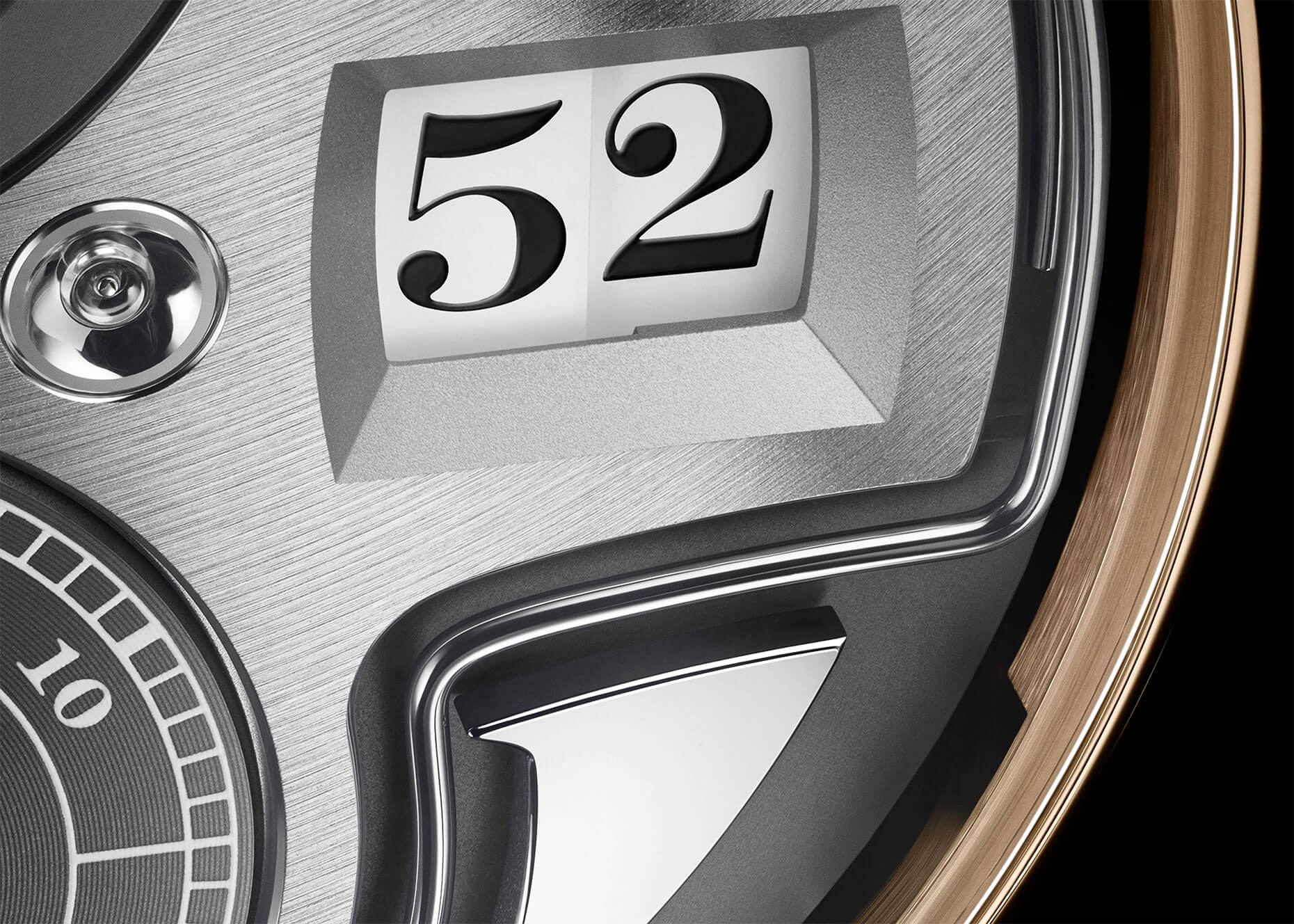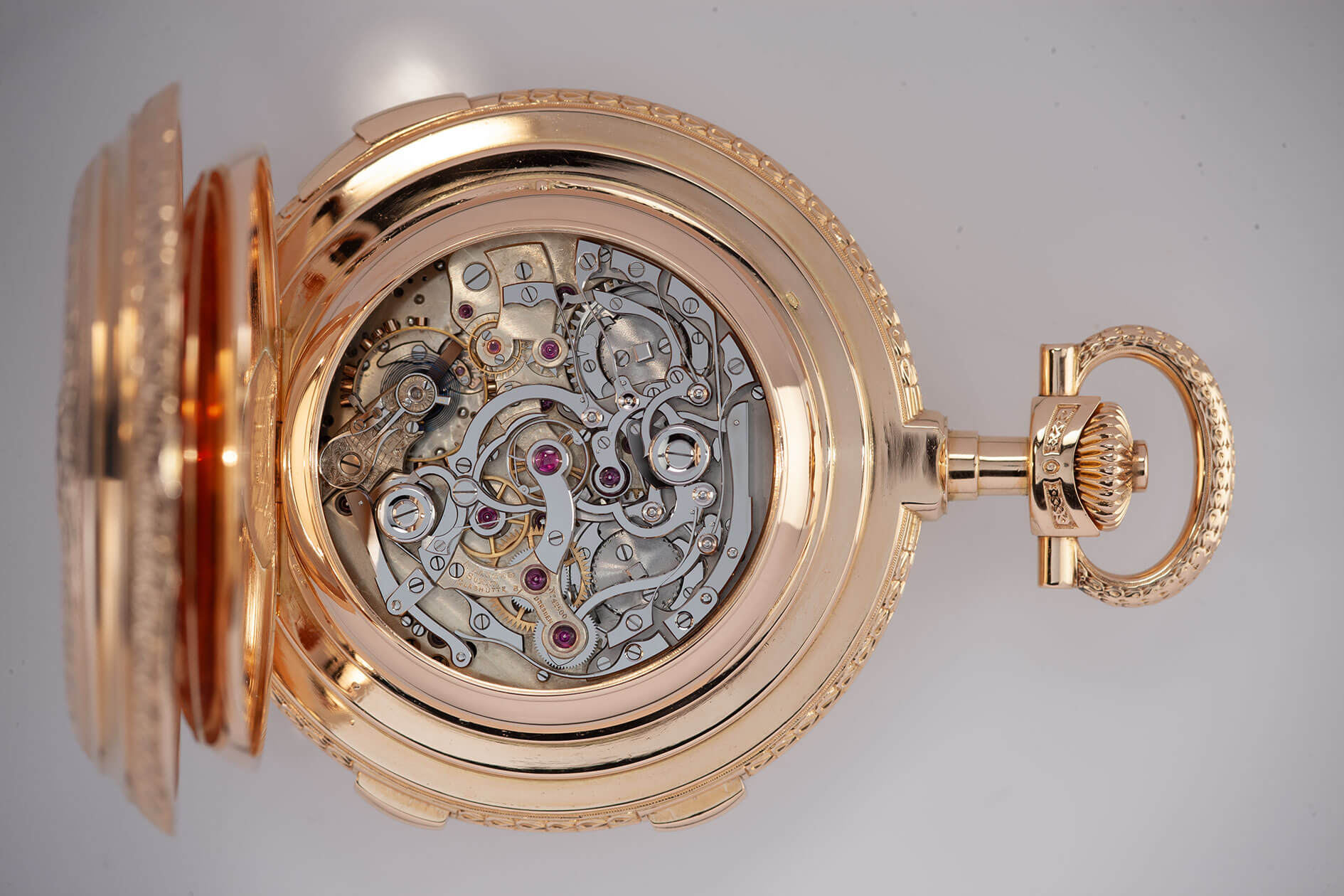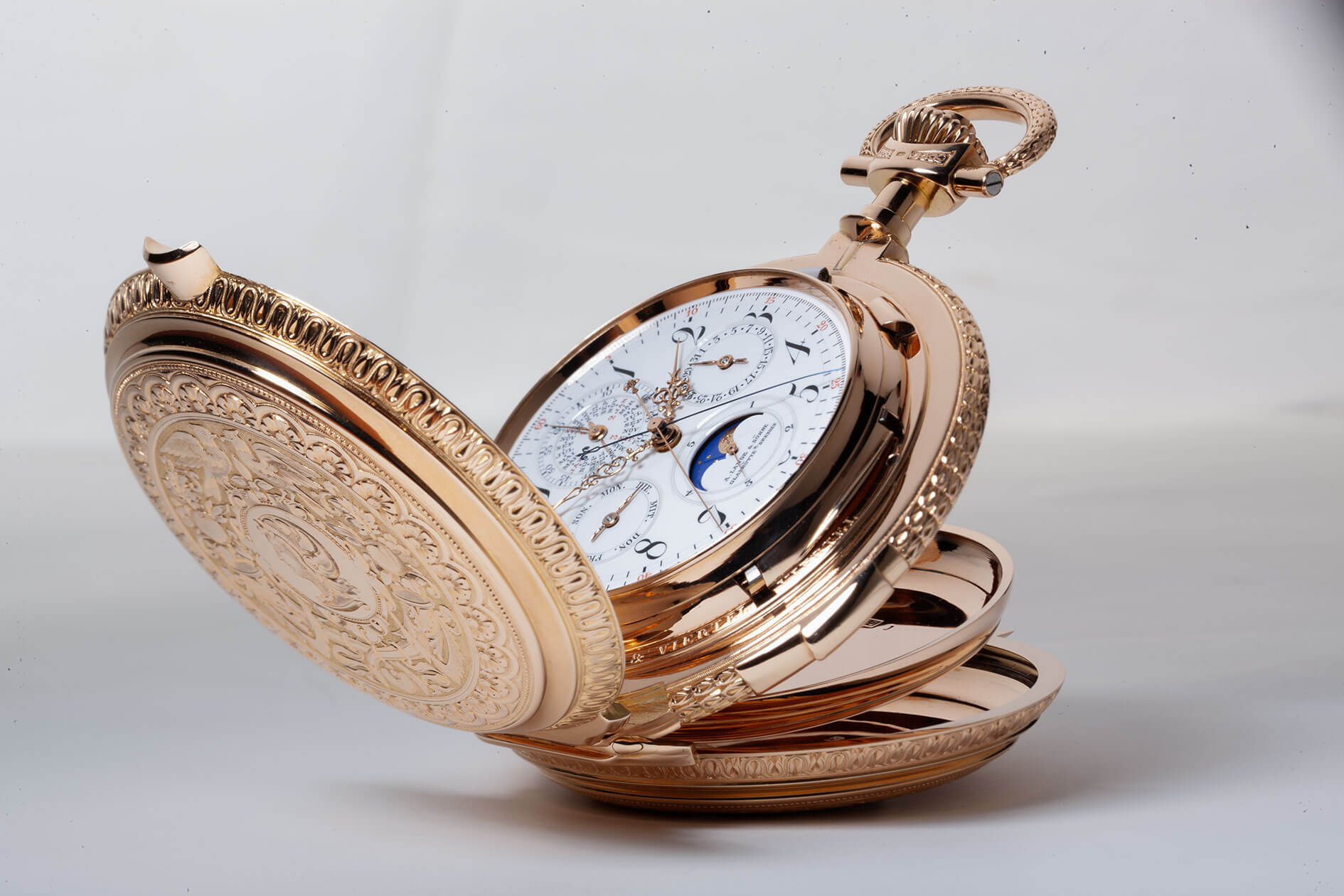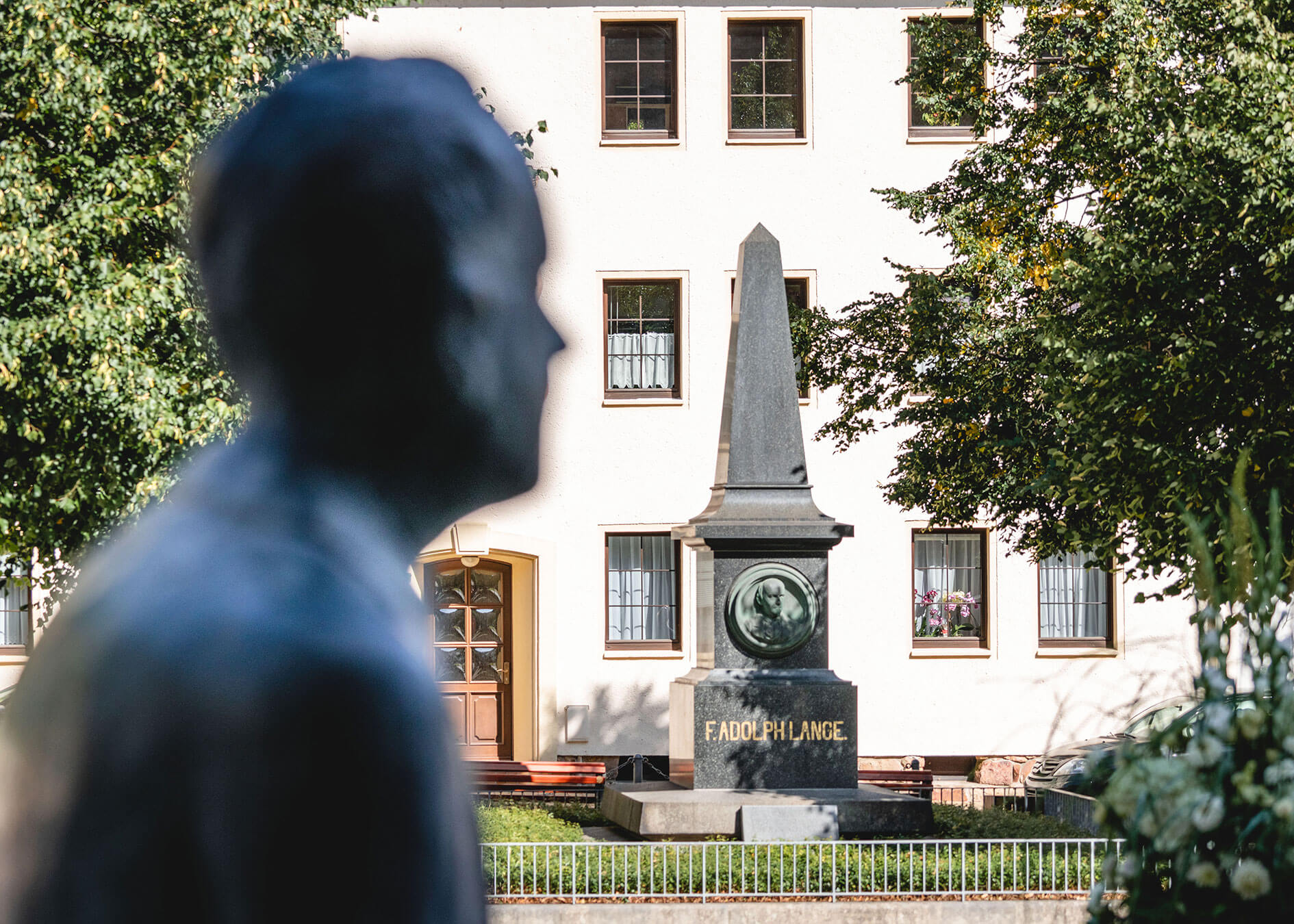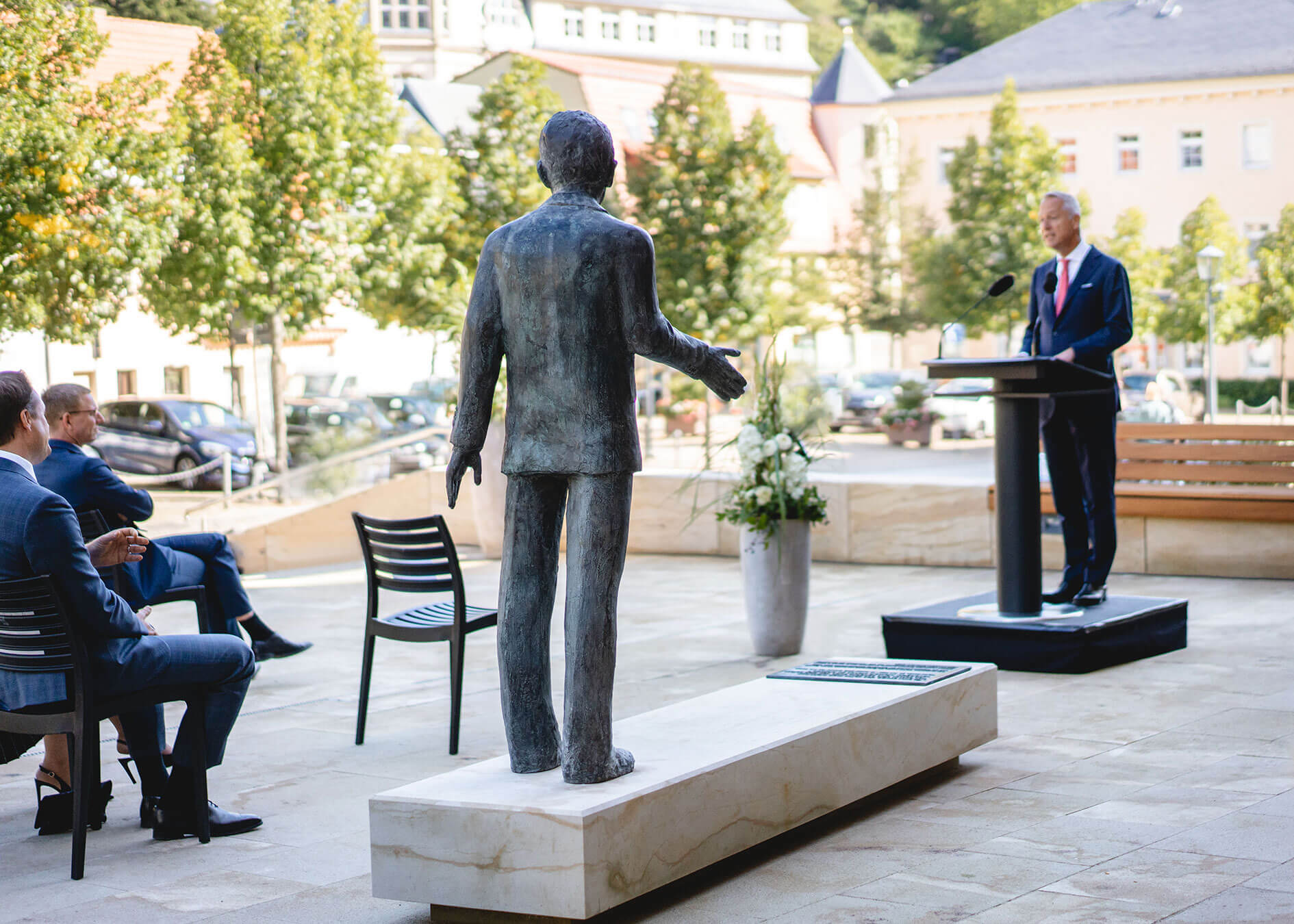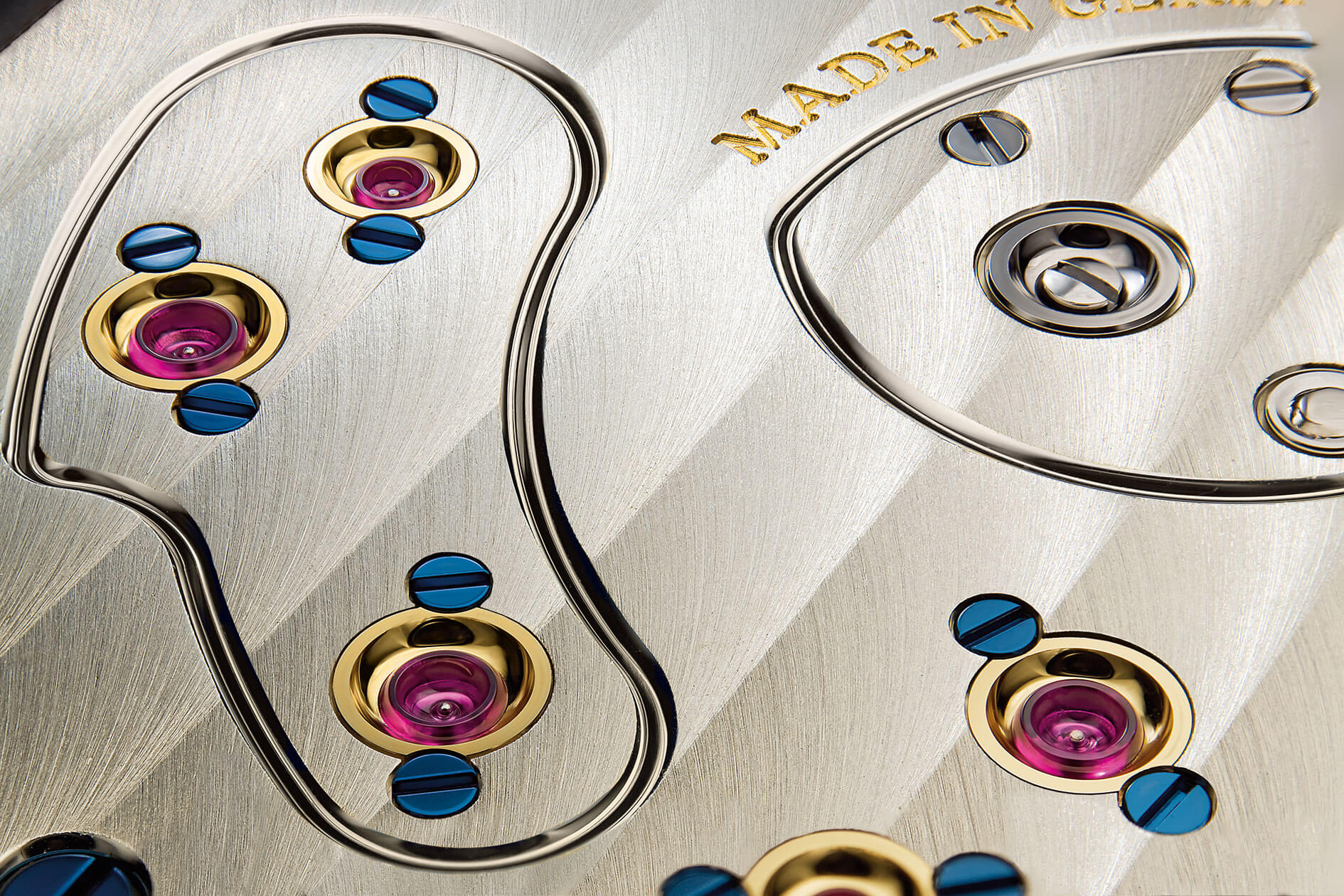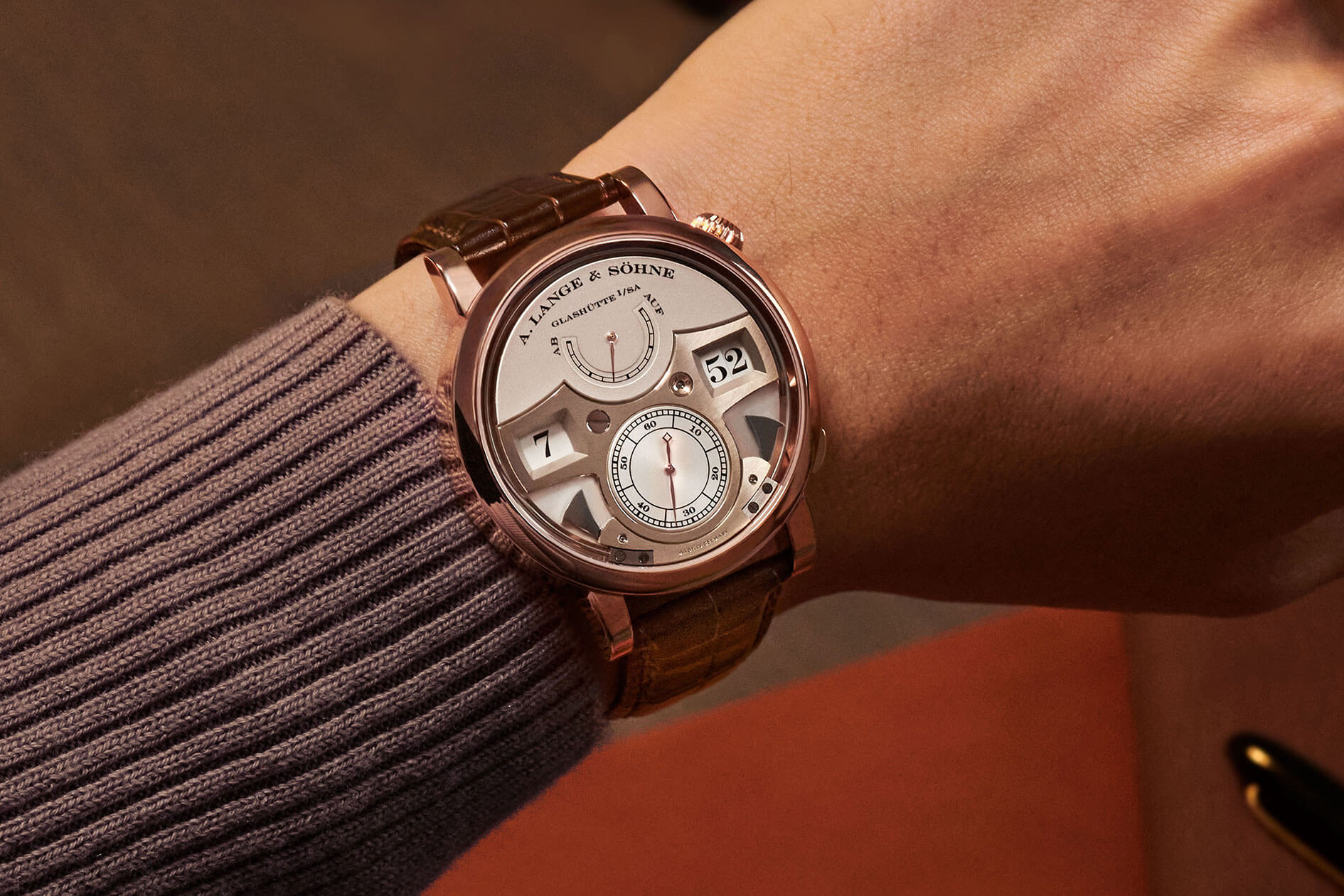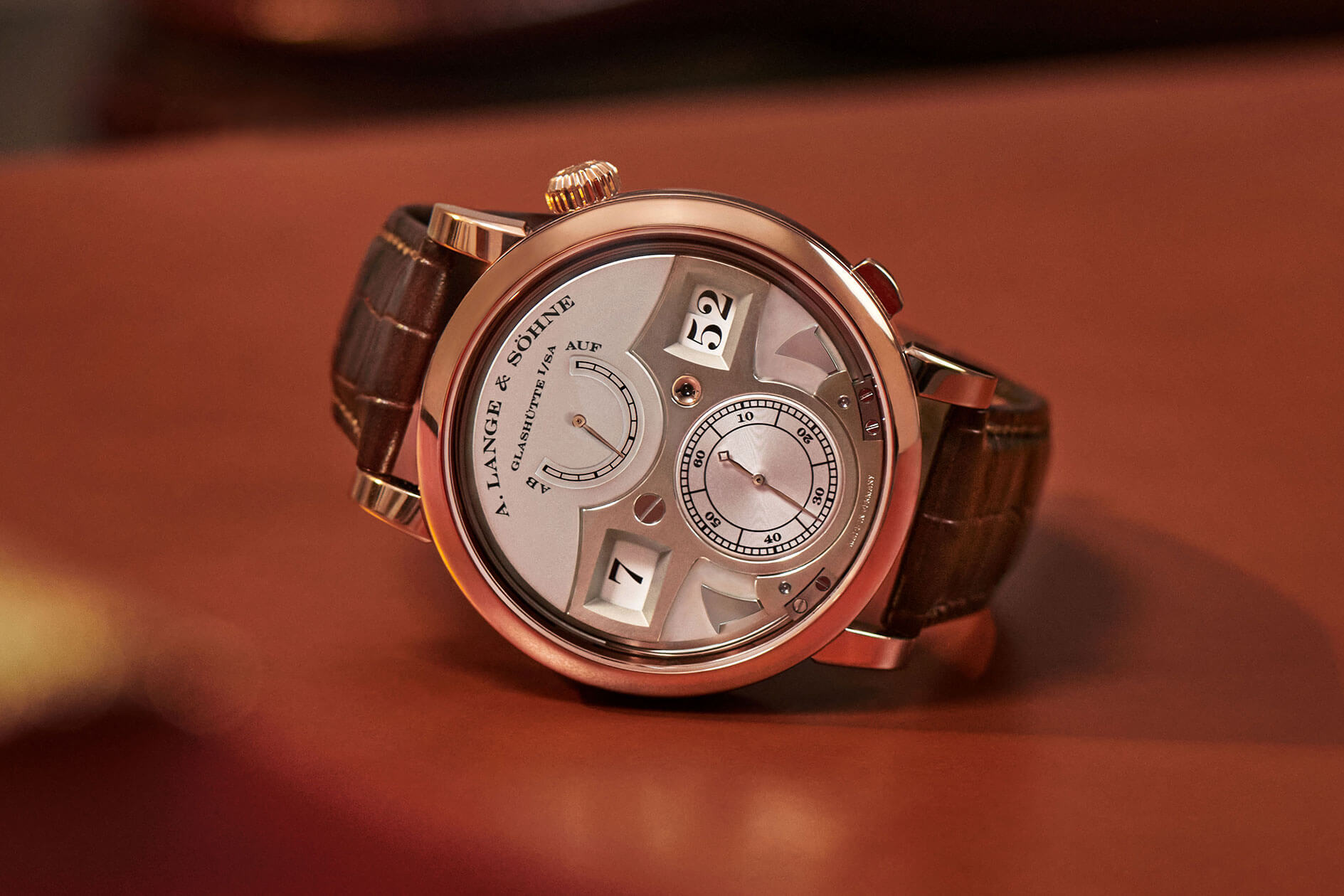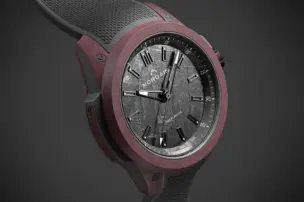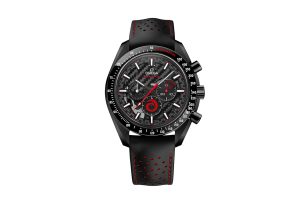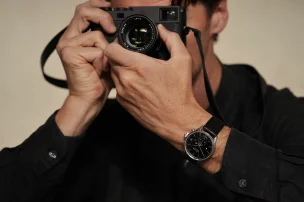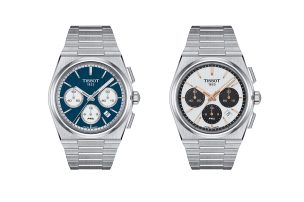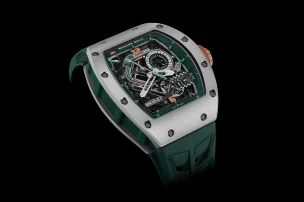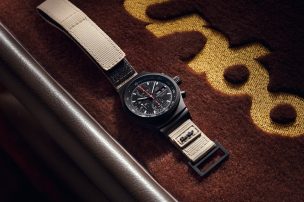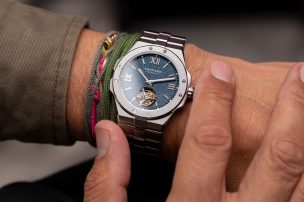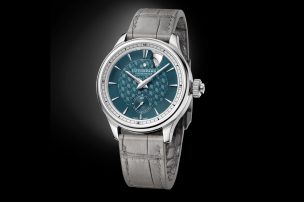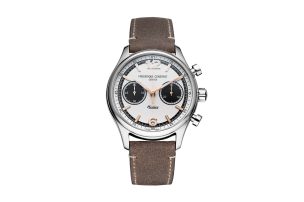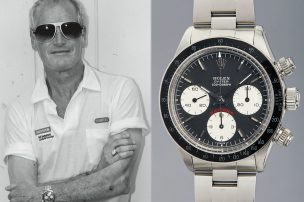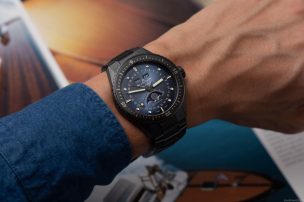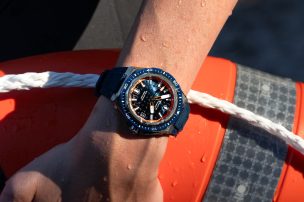
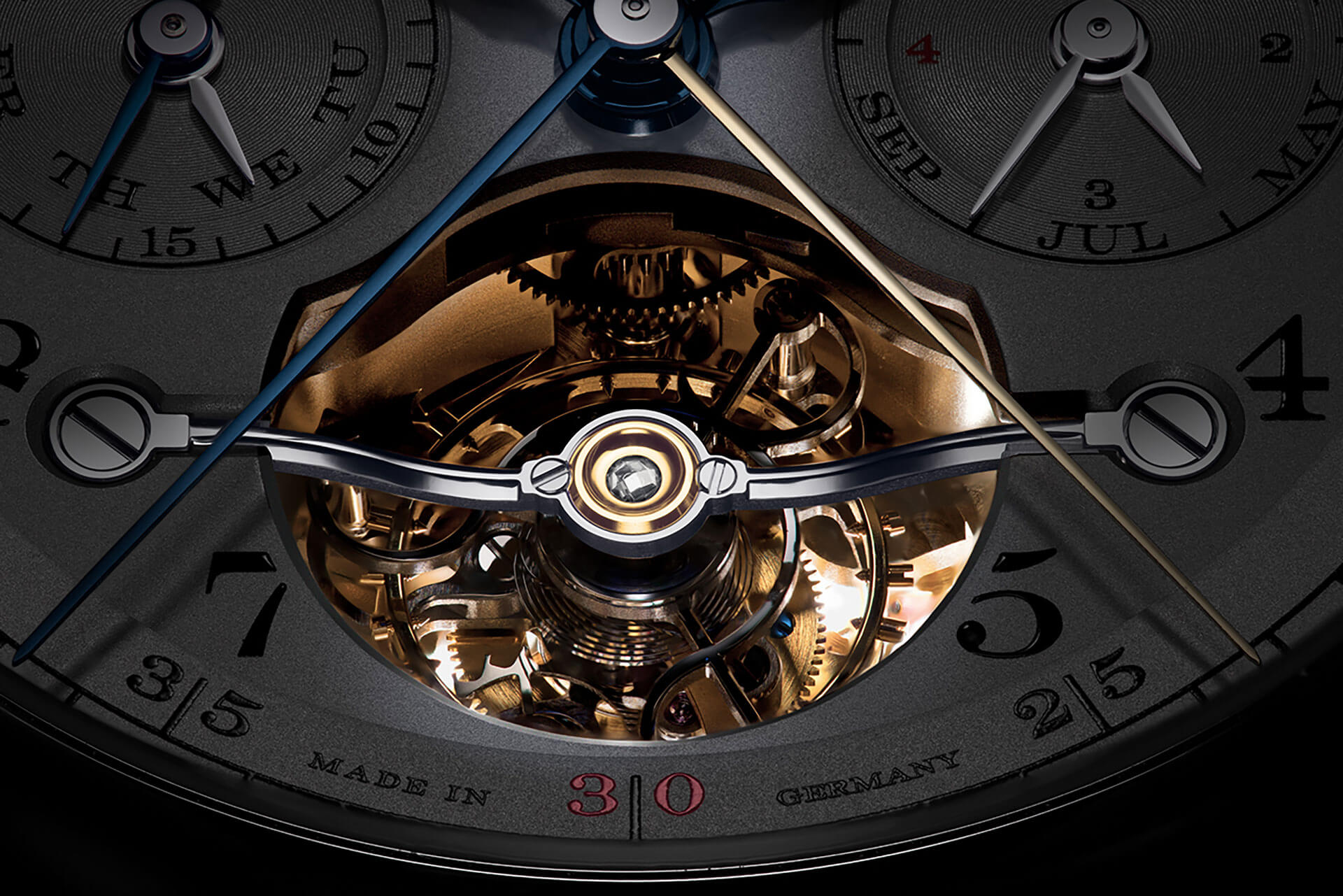
A Symphony of 72 Masterpieces: 30 Years of Calibre Development at A. Lange & Söhne
30 years is actually not a very long period in the watch industry, which tends to move in generations. But when A. Lange & Söhne looks back this autumn to October 24, 1994, the collector community won’t be able to help but say: a news star is shining bright in the sky. 72 movements have been created in the 30 years since the brand’s reestablishment in 1990 and the comeback with their own mechanical movements in 1994. It is a phenomenal achievement that likely sends chills down the spine of fellow Swiss manufactures – as on average, it means that the German manufacture from Glashütte, Saxony, has developed around 2.3 movements per year.
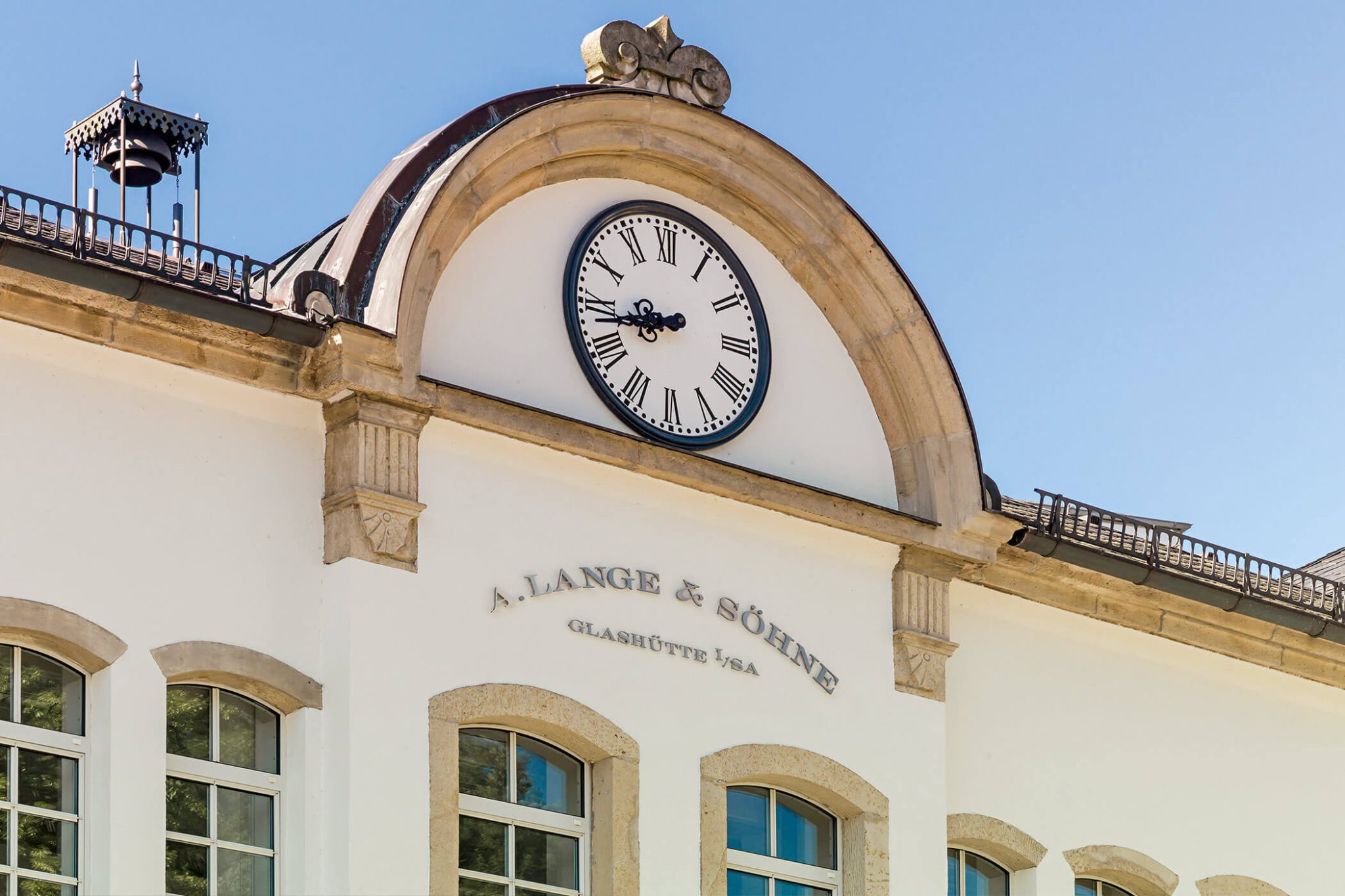
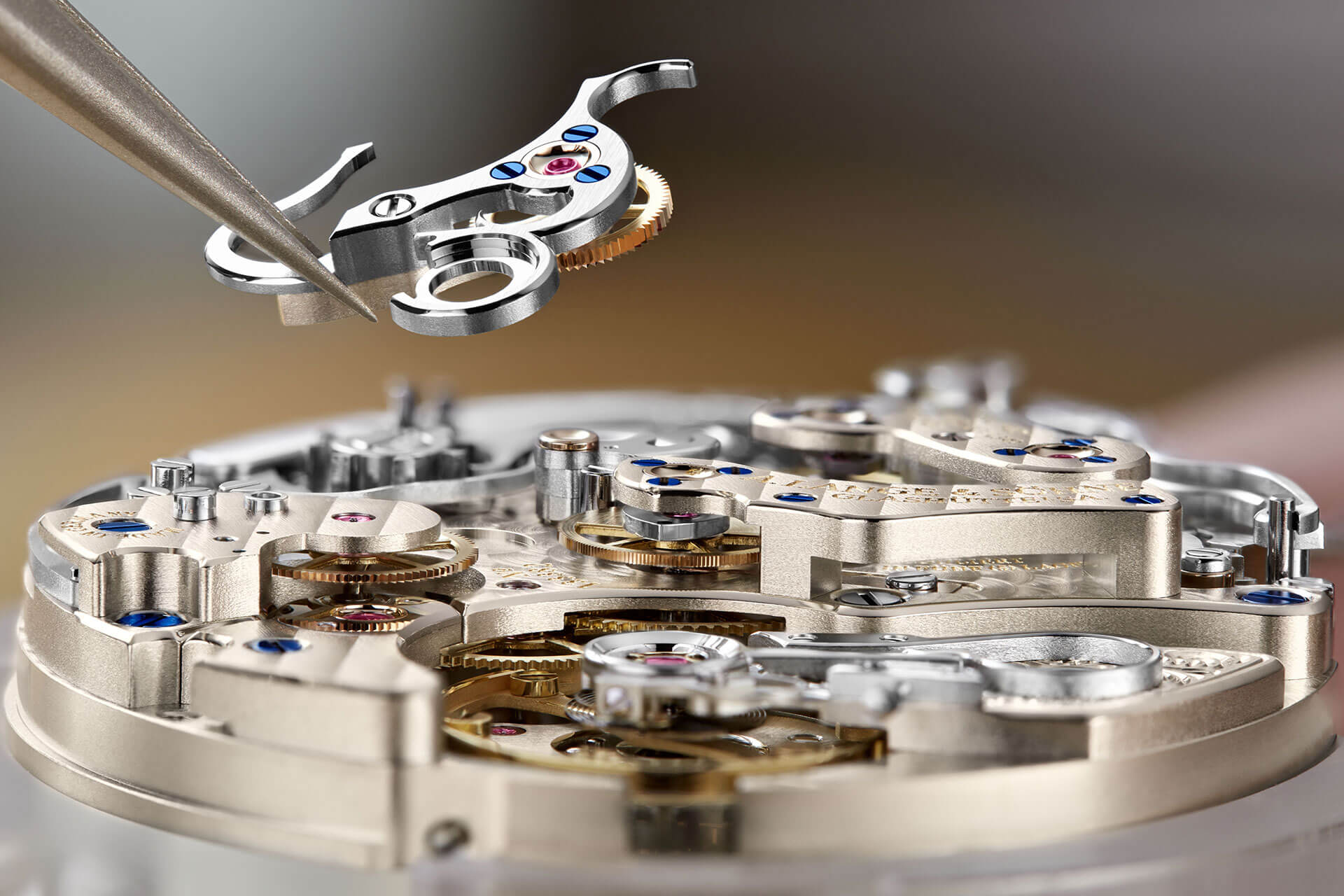
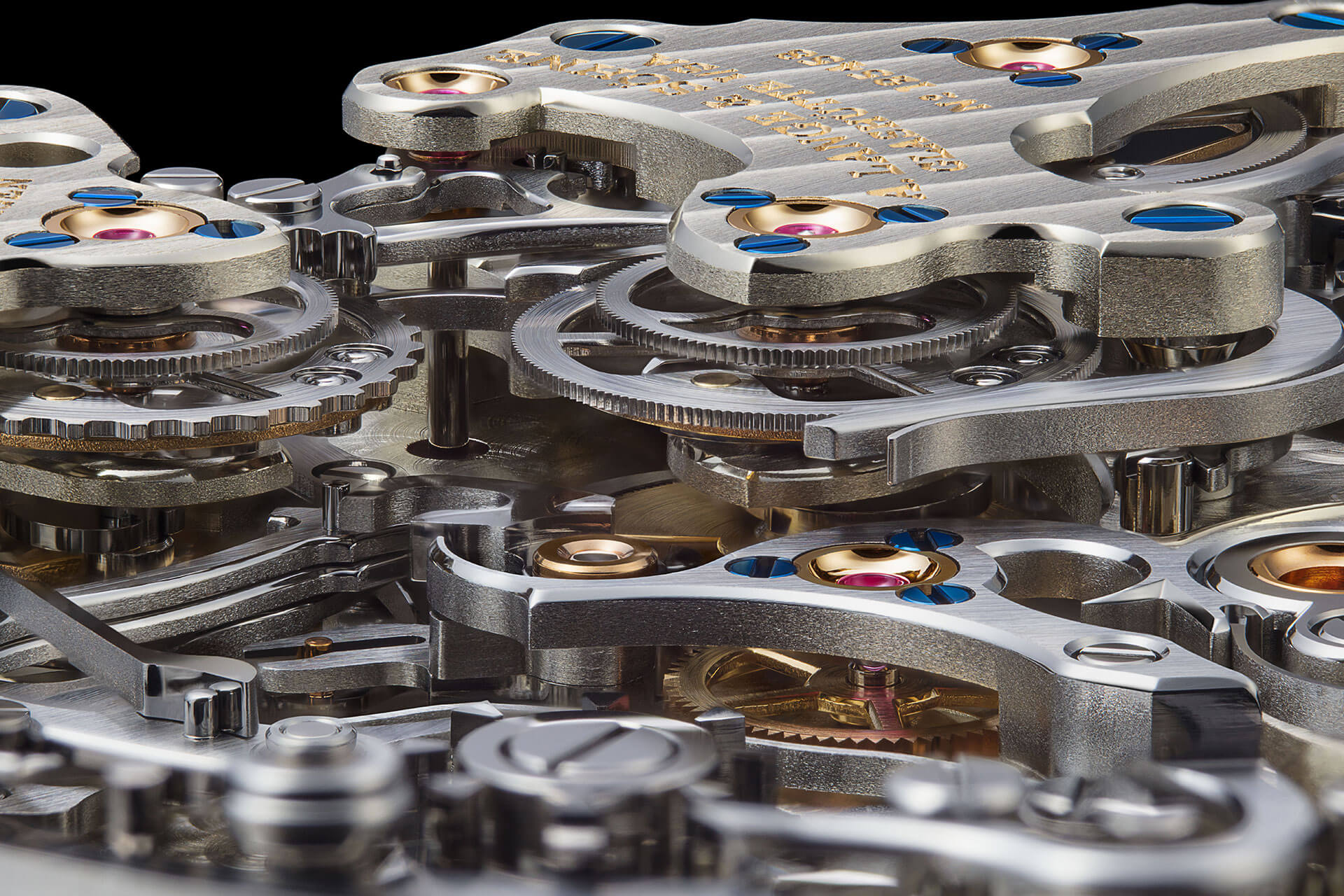
More than two movements per year
2.3 movements per year doesn’t sound like much? We’re talking about brand new developments. There hasn’t been anything comparable in recent watch history. And we mean that literally: not at Patek, not at Rolex, and not even at the master of movements, Jaeger-LeCoultre (with over 1,200 movements developed in the company’s history). At least not in such a short timeframe.
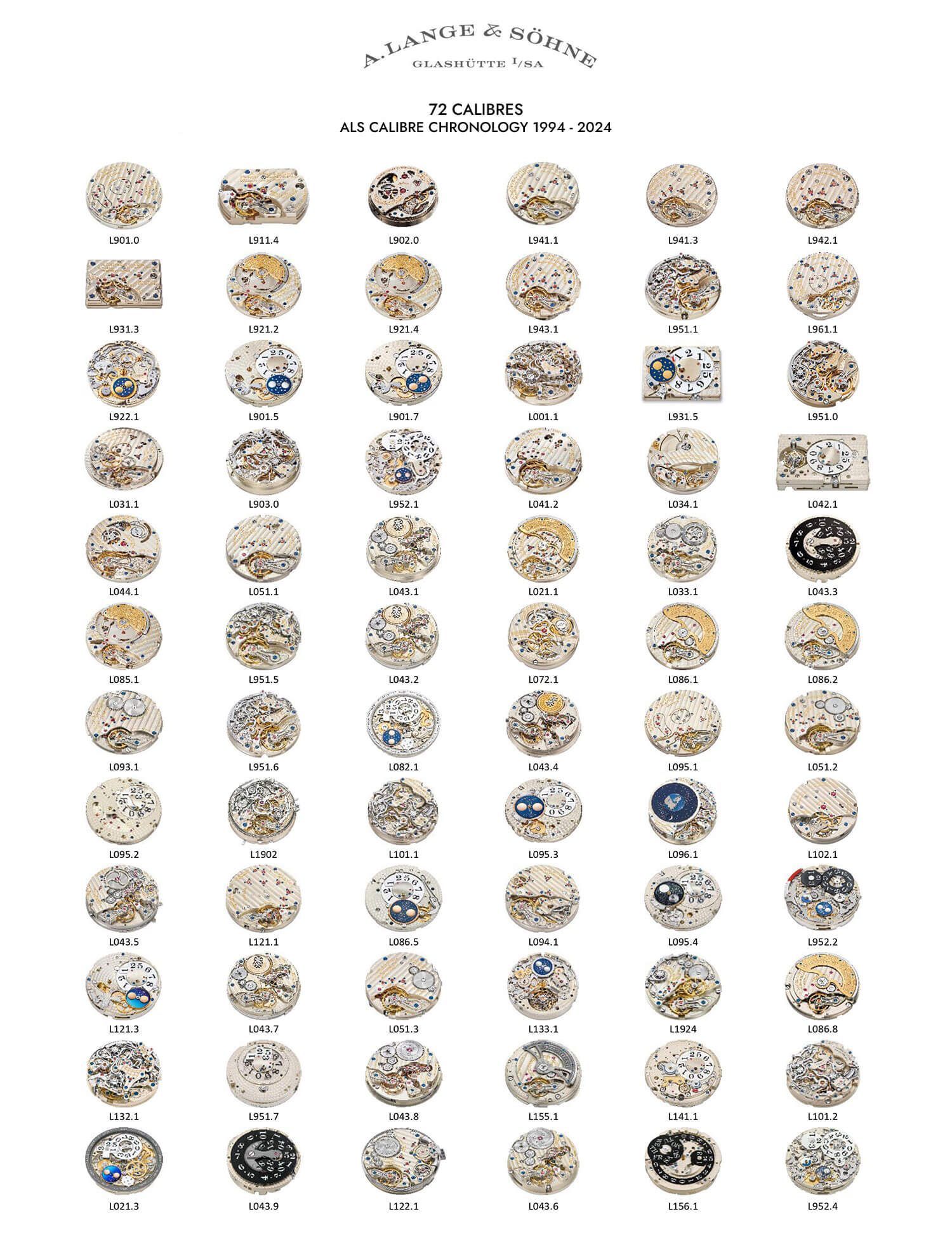

29.07.1924 – 29.07.2024
A Swisswatches Tribute to 100 Years of Walter Lange
Why does A. Lange & Söhne develop only its own movements?
To understand the madness of watchmaking development in recent history and since the resurrection of Lange as a top manufacturer, a Lange collector should know one name: Günter Blümlein. Who was this man, who came from outside of the Lange clan? We not only want to present the most important movements from A. Lange & Söhne but also seek the path to their origins and the philosophy behind them.

Günter Blümlein, first presentation – 1994.
An enduring legend
Günter Blümlein was a manager and entrepreneur. One of his greatest achievements was the revival of the brand A. Lange & Söhne, together with the great-grandson of the company’s founder, Walter Lange – practically from scratch. ‘From scratch’ in the sense that the field of high-end mechanical watchmaking no longer existed in Saxony, but Blümlein was, of course, not inexperienced.
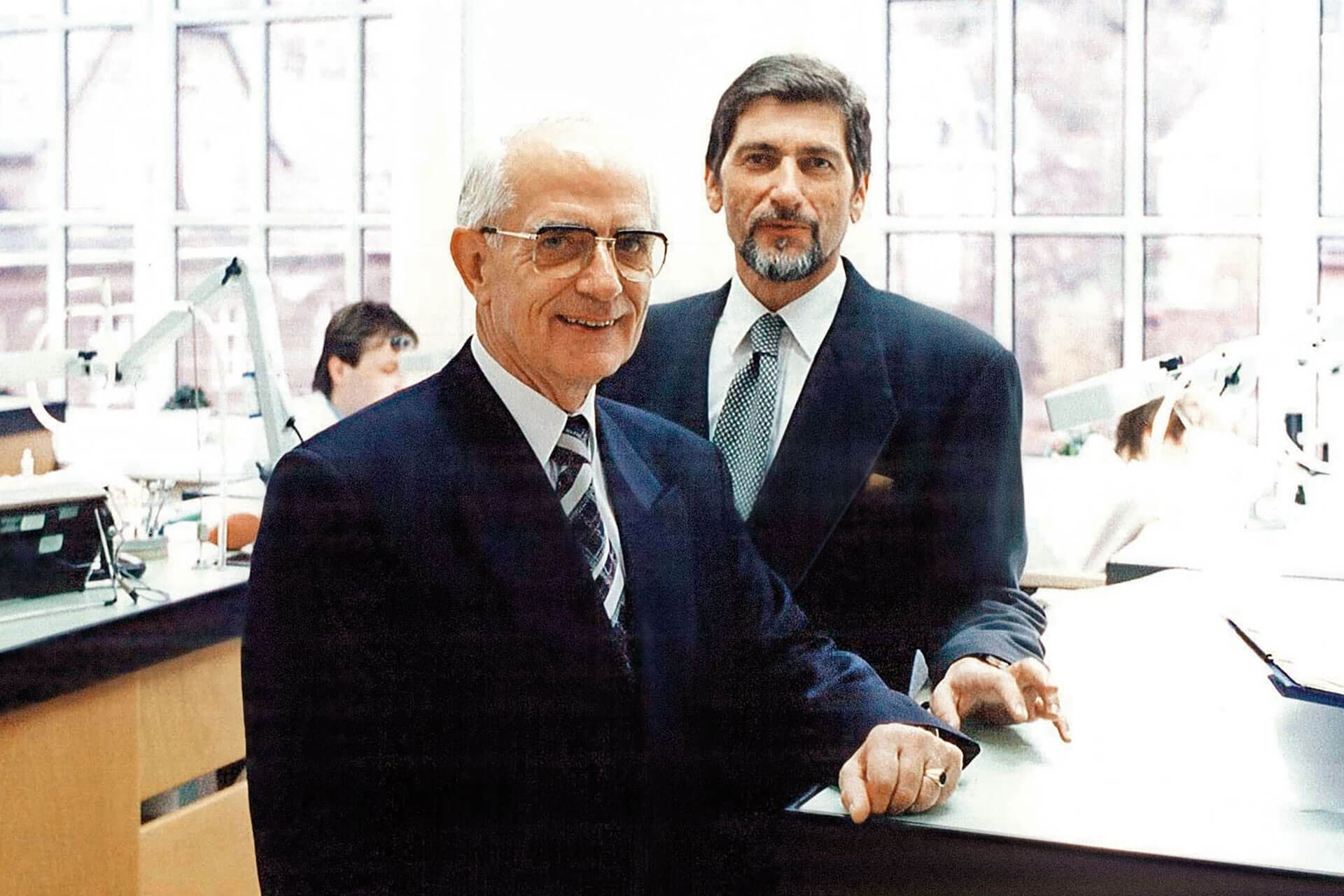
Walter Lange (left) and Günter Blümlein (right)
Who was Günter Blümlein?
Blümlein built up his expertise over the years: previously, he had successfully realigned the Swiss watch brands IWC and Jaeger-LeCoultre. Therefore, the precision engineer and marketing expert is not only regarded as one of the saviours of the Swiss watch industry after the quartz crisis of the 1970s, but also of the fine watchmaking industry in Glashütte in reunited Germany. Who could have summed up his life’s work better than the man who embarked on this adventure with Blümlein, and whose last name the company bears? Walter Lange, whom we will discuss later, once clarified: “Without Günter Blümlein, A. Lange & Söhne would no longer exist — and Glashütte would not be the centre of German fine watchmaking today.”
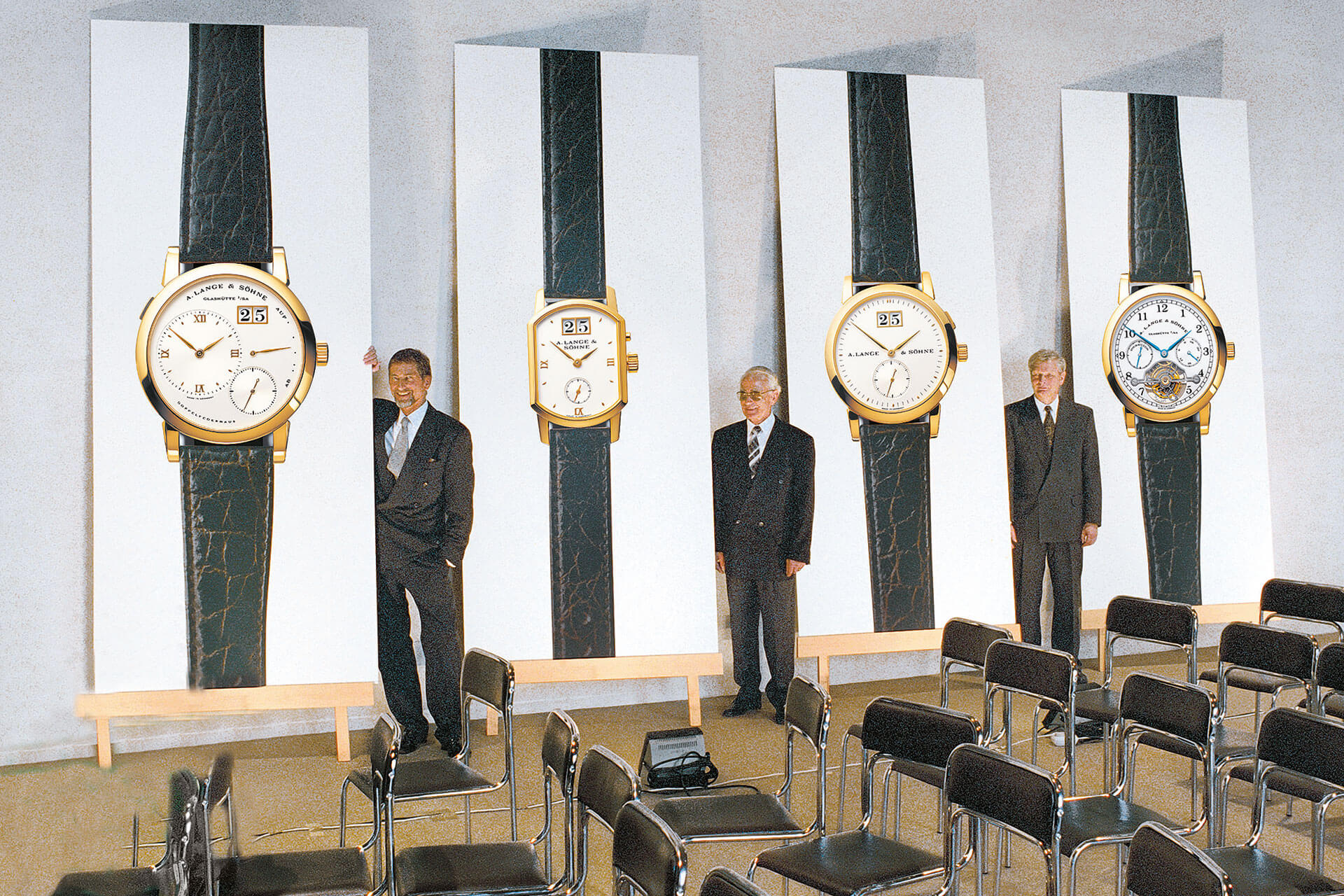
However, it should be noted in the interest of fairness that another company alongside Lange & Söhne has helped revive the Glashütte location since 1990: the firm Nomos. Additionally, since 1994, the Swiss Swatch Group has also played a part in making the name Glashütte known once again among watch enthusiasts around the world. They took over VEB Glashütter Uhrenbetriebe, from which the brand Glashütte Original emerged. All these companies now train their own watchmakers, with Lange & Söhne doing so since 1997. In 2007, a watch museum opened in Glashütte with the support of the Swatch Group.
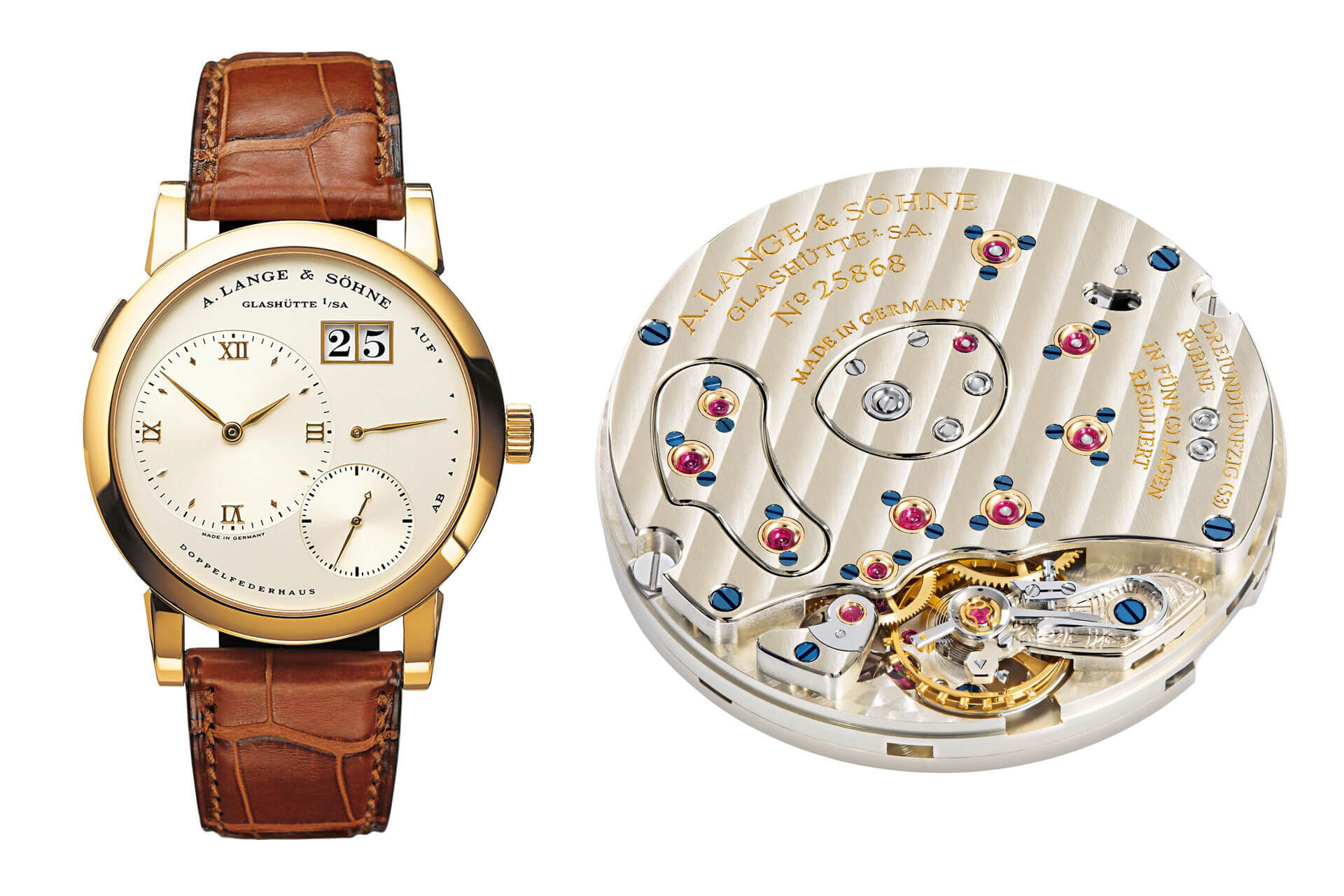
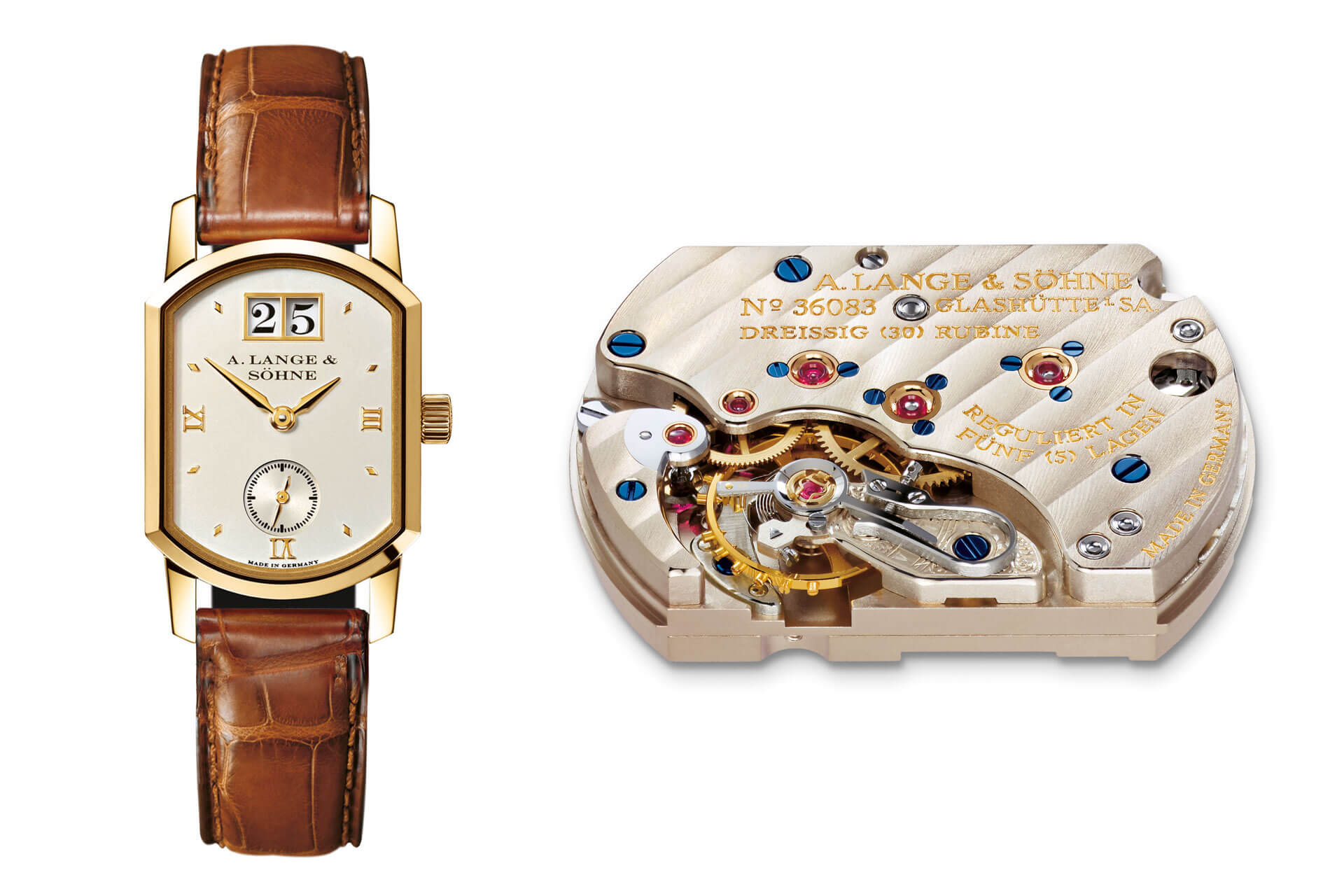
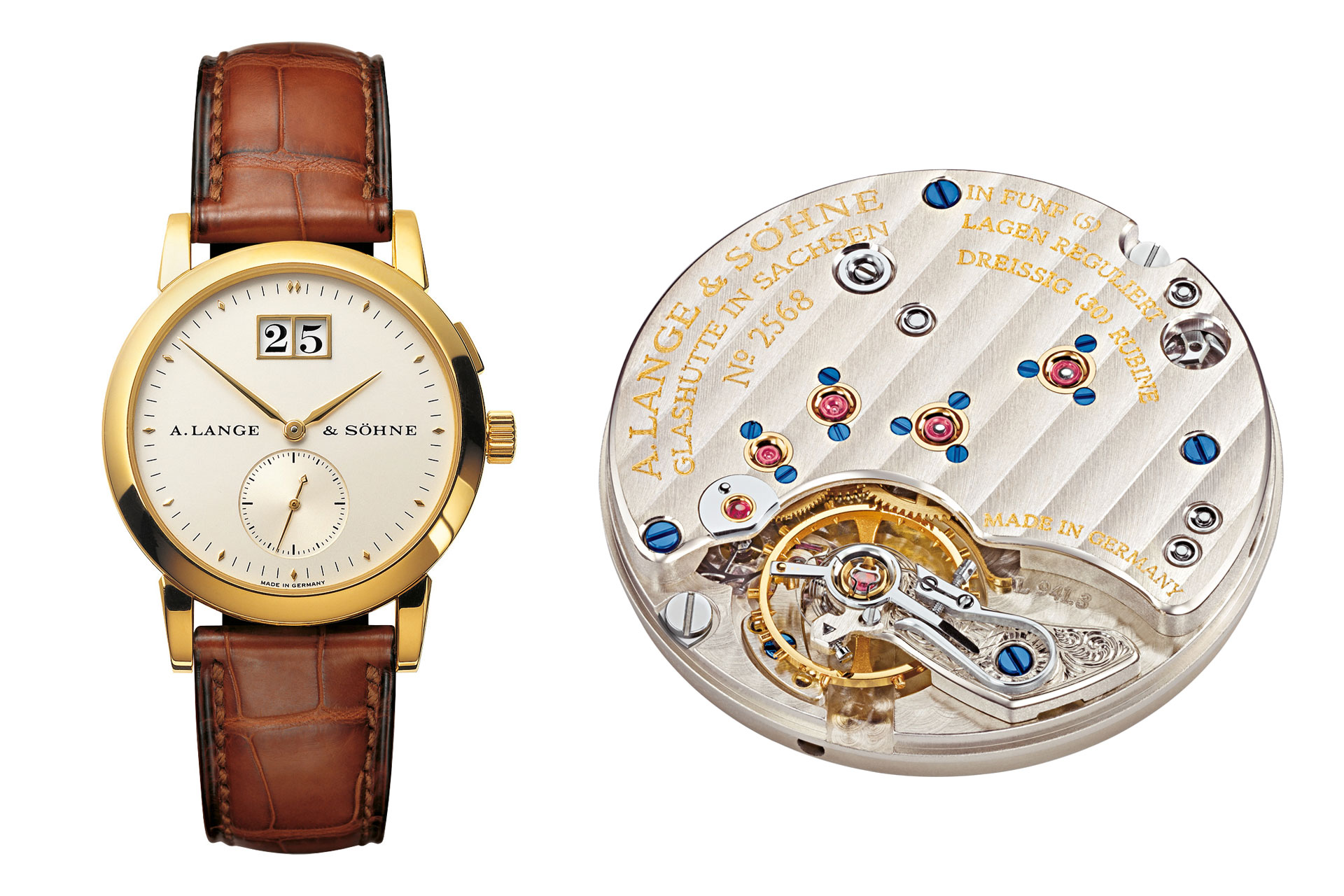
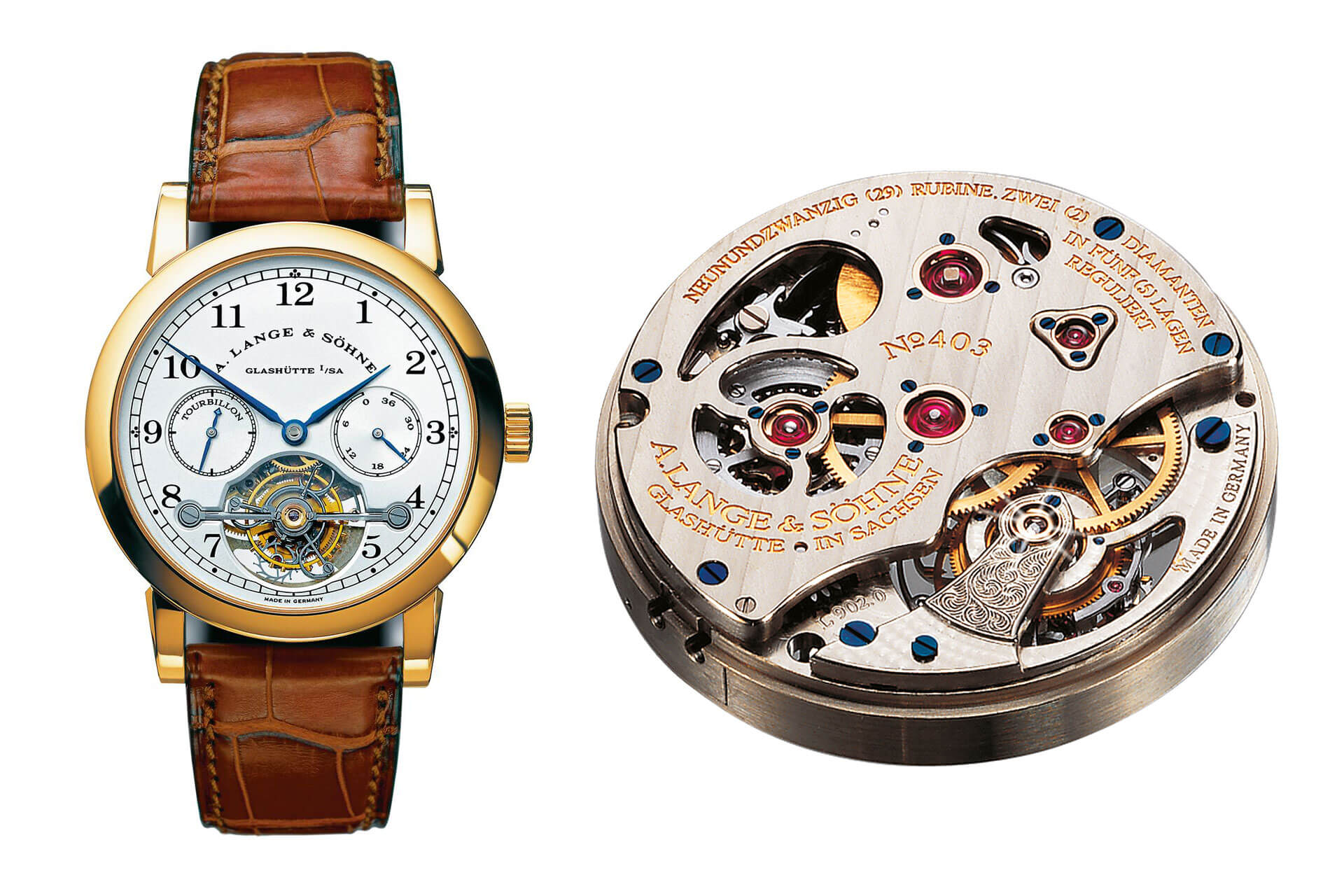
The resurrection of precision mechanics in Saxony
Back to A. Lange & Söhne and the resurrection of fine mechanics in Glashütte: Blümlein died far too early, in 2001, at the age of only 58. His reputation remains to this day, as chief developer Anthony de Haas repeatedly emphasised in our interview. Without Blümlein, it is likely that he would never have come to Glashütte. How important Blümlein really was for A. Lange & Söhne can also be seen from the fact that they dedicated a press release to him in 2021 on the occasion of his 20th death anniversary. And again: we are talking about a manager here, not the owner of the manufacture.
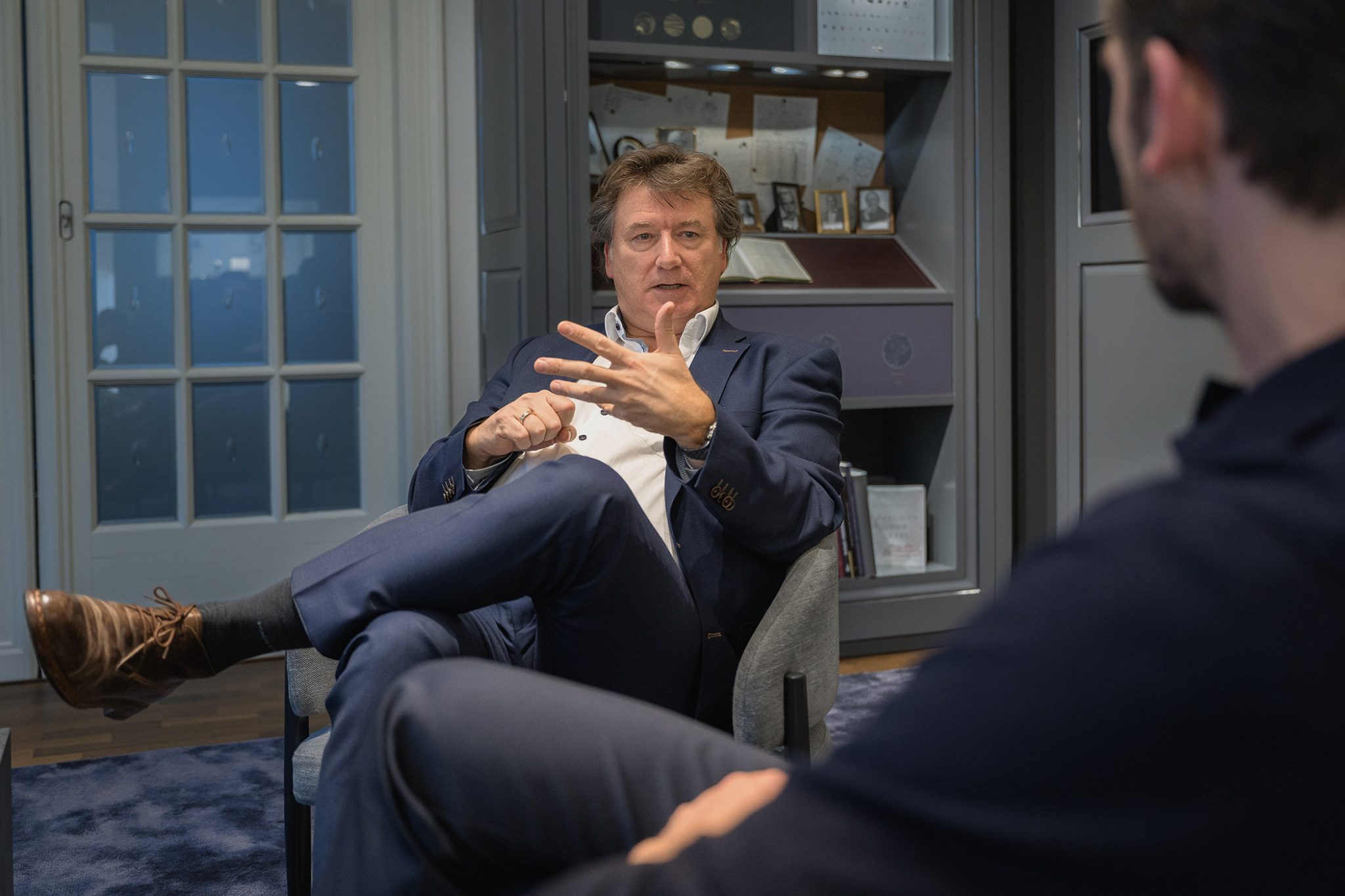
A master plan for A Lange Söhne in the 21st century
Blümlein is so crucial because his master plan is still the Bible and the guide for Lange today. Many things can be traced back to his ideas and – unusual for a subsidiary of a luxury group – much has endured to this day. Essentially, the company Lange Uhren GmbH, part of the Richemont Group, is run like a family business that thinks in generations rather than in quarters. Whether this is because the brand is one of Chairman Johann Rupert’s favourites is debatable, but it would be unfair to all those who have committed to this ethos for decades, particularly the current CEO Wilhelm Schmid – now 12 years in office – or the head developer Anthony de Haas, who is not insignificantly important to this story and is celebrating his 20th company anniversary this year.

Wilhelm Schmid, CEO of Lange Uhren GmbH

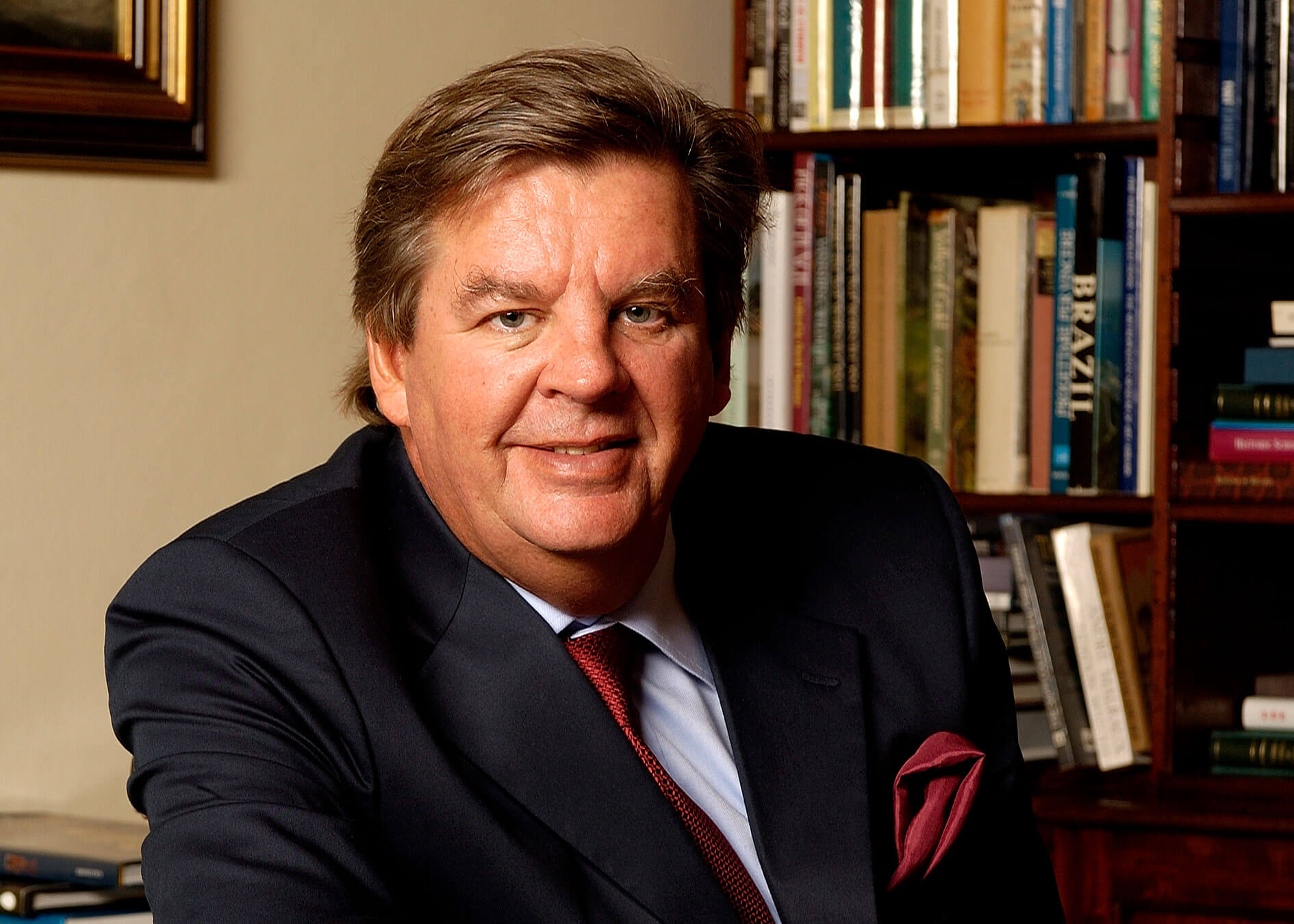
Anthony de Haas (left) © Lange Uhren GmbH
Johann Rupert (right) © Szekszter, CC BY-SA 3.0
Family spirit
These durations of stay within a company are absolutely extraordinary even for the long-term thinking watch industry, and they speak to the fact that something seemingly impossible has come true here, namely, that it is indeed possible (contrary to the claims of many owner-led traditional manufactures) to run a corporate brand like a family business. And, one might add, you just have to know how to do it. To learn more about this, be sure to read the interview with Anthony de Haas, in which he speaks extensively about the family spirit at A. Lange & Söhne. The familial character has been repeatedly confirmed to the author in many personal conversations over the years. What remains crucial: at A. Lange & Söhne, the strategy has never changed since the very first days of the rebirth, and if it has, then only minimally adapted, and they have remained faithful to it to this day. But what exactly does this legendary strategy look like?

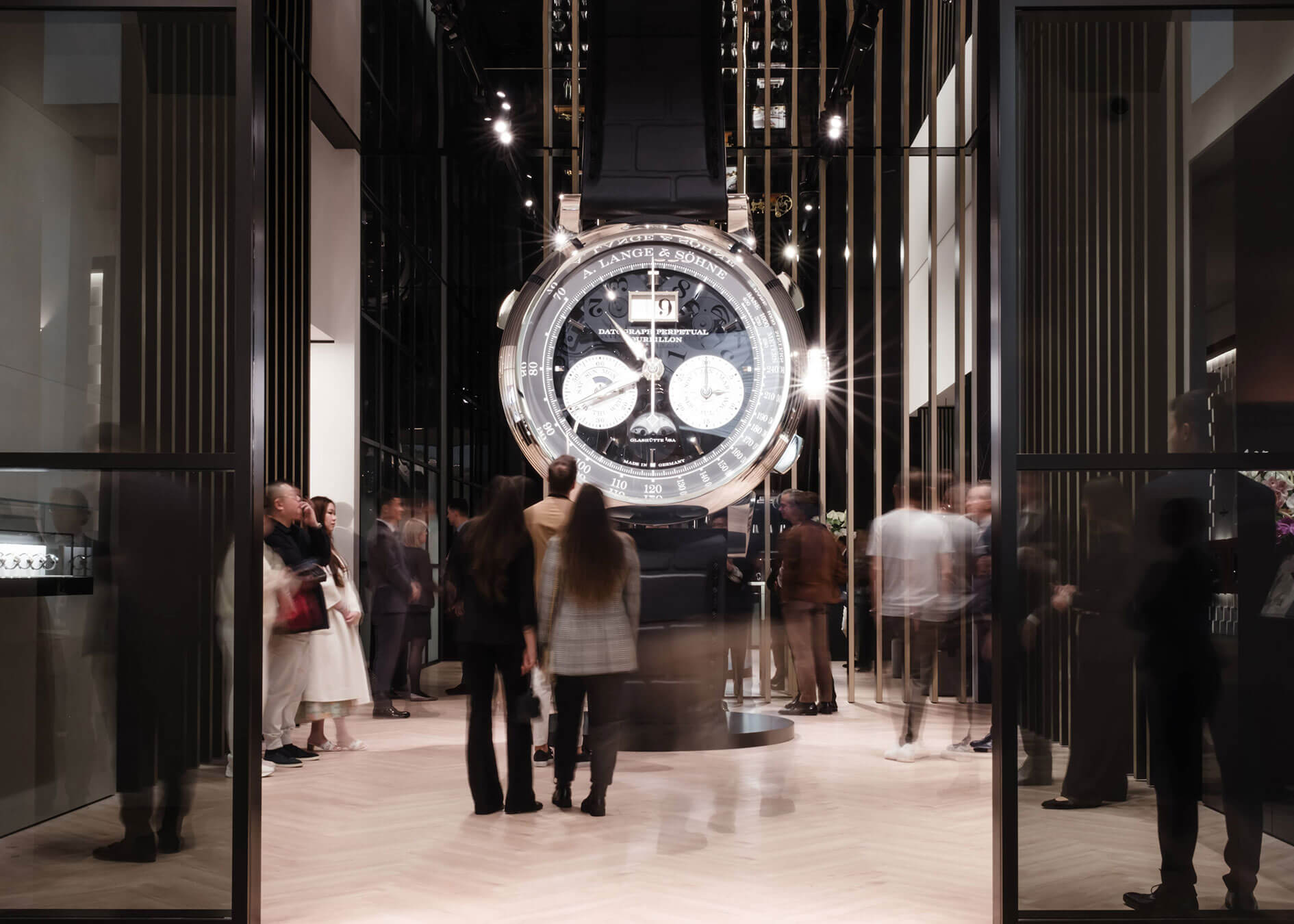
What has the strategy at A. Lange & Söhne been like since Günter Blümlein?
Blümlein’s plan, which A. Lange & Söhne have remained faithful to until today, primarily concerns the brand’s positioning: they aimed to target the top, specifically the area of Haute Horlogerie. Offering nothing in the premium or entry-level segments was extremely bold in the early 1990s, because re-establishing the brand exactly where A. Lange & Söhne had always been required not only significant investments, but also meant finding a global luxury target audience that at the time was only marginally interested in fine mechanics, mostly favouring Swiss manufactures when they were. Historically, Lange had always been globally known for intricately crafted, golden pocket watches with various complications in small numbers, even up to unique pieces. The big gamble was: would the principle of luxury work in the late 20th century with completely newly developed wristwatches, of which there were only limited numbers at the time of the expropriation in 1948?
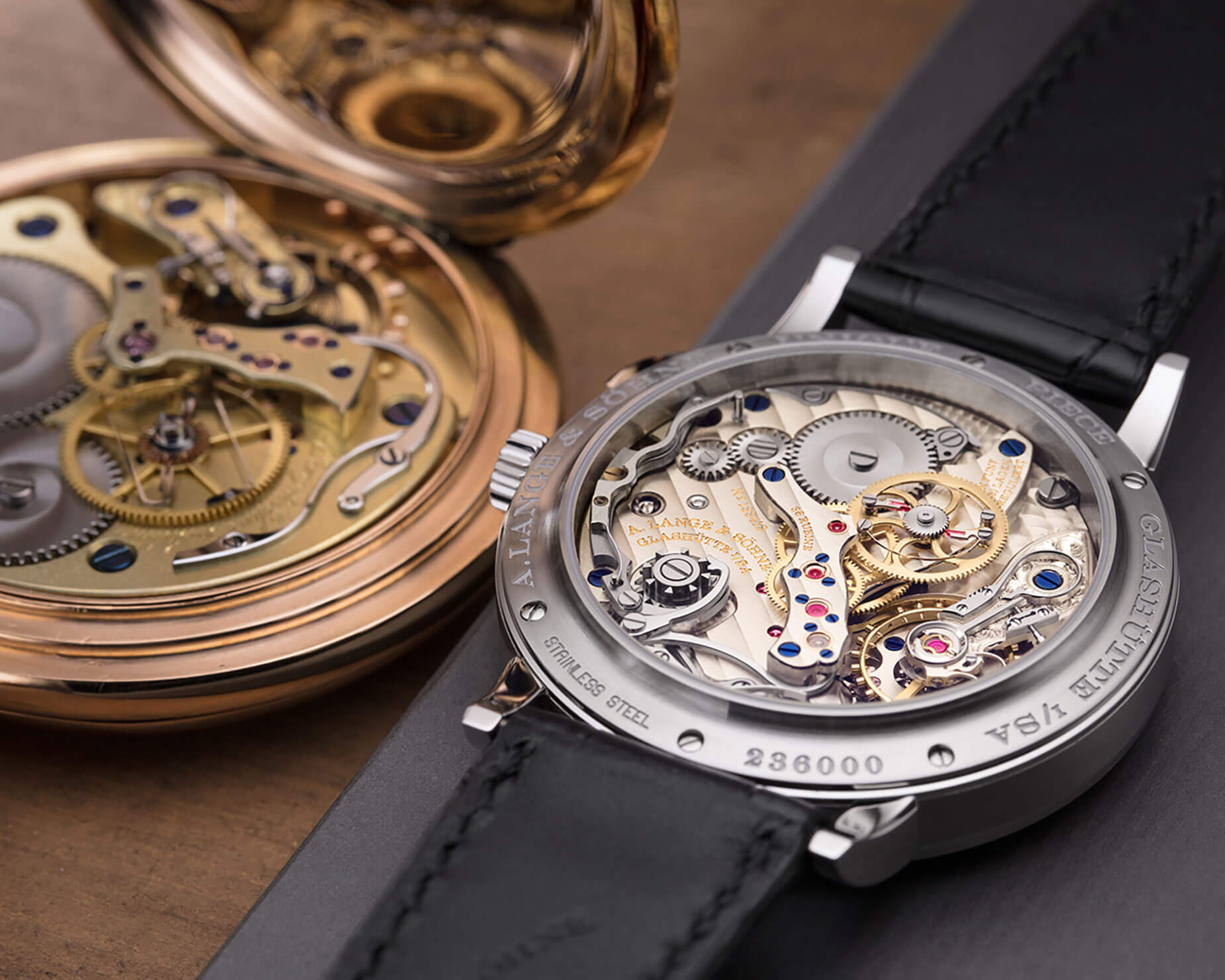
Watches for the price of a house
This decision to enter the market at the top with wristwatches seems quite logical today, considering A. Lange & Söhne has no issues presenting a limited model for over 600,000 euros at the Watches & Wonders fair in Geneva (the very exciting Datograph Perpetual Tourbillon Lumen, with Lange’s 72nd calibre, here is the article about it) and has more than 40 own boutiques worldwide from New York to Shanghai to Tokyo. But how bold it was in 1994, when the grand comeback of the mechanical watch world was by no means foreseeable or assured, can only be imagined. Just for comparison: companies like Richard Mille did not even exist back then (the company was founded in 1999), Cartier was predominantly selling quartz watches at that time, and Rolex was equipping its most coveted model to this day, the stainless-steel chronograph Daytona, with an automatic movement from Zenith. This brings us to the second point of Blümlein’s strategy.
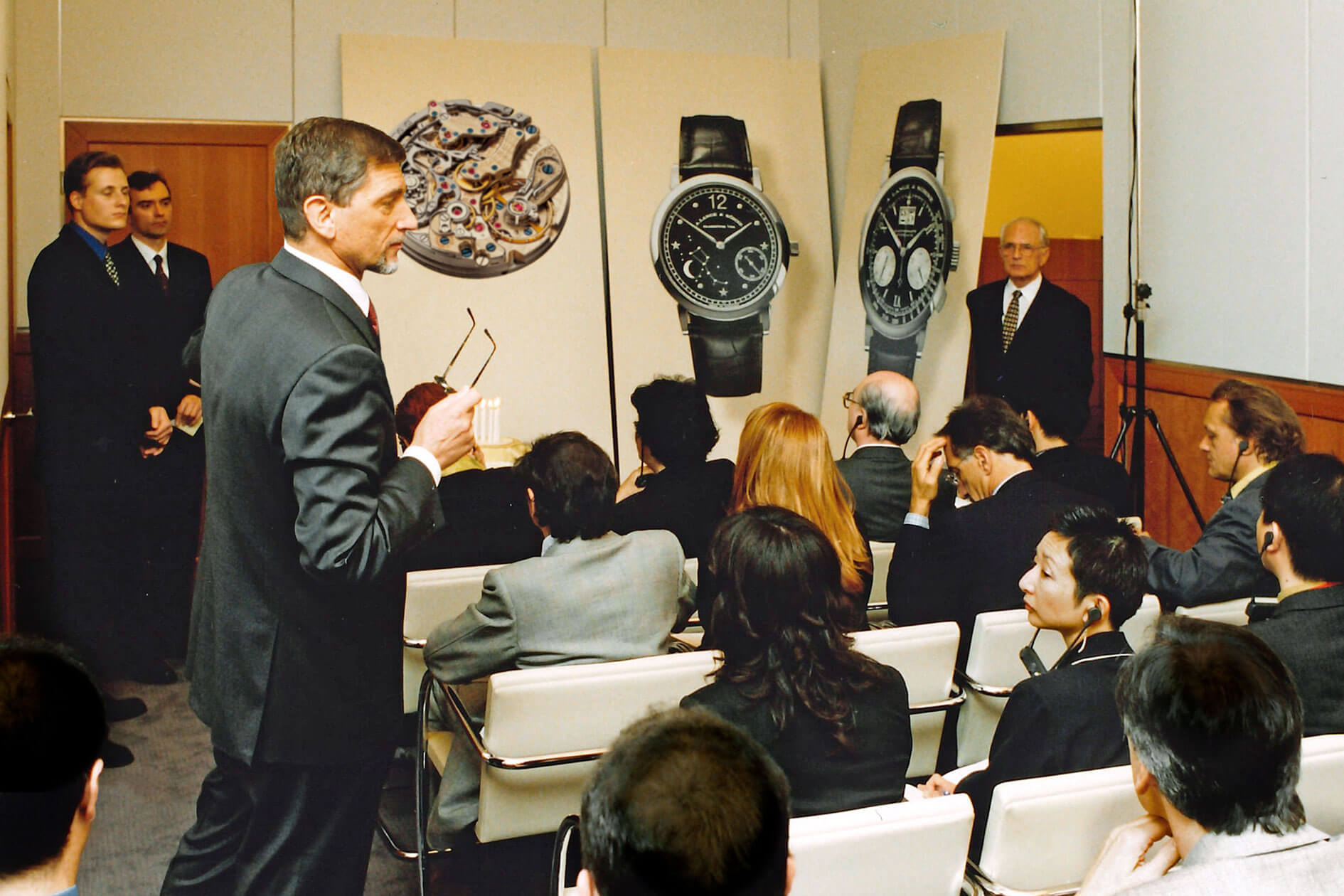
A. Lange & Söhne presentation of the Datograph with Günter Blümlein and Walter Lange, Baselworld 1999
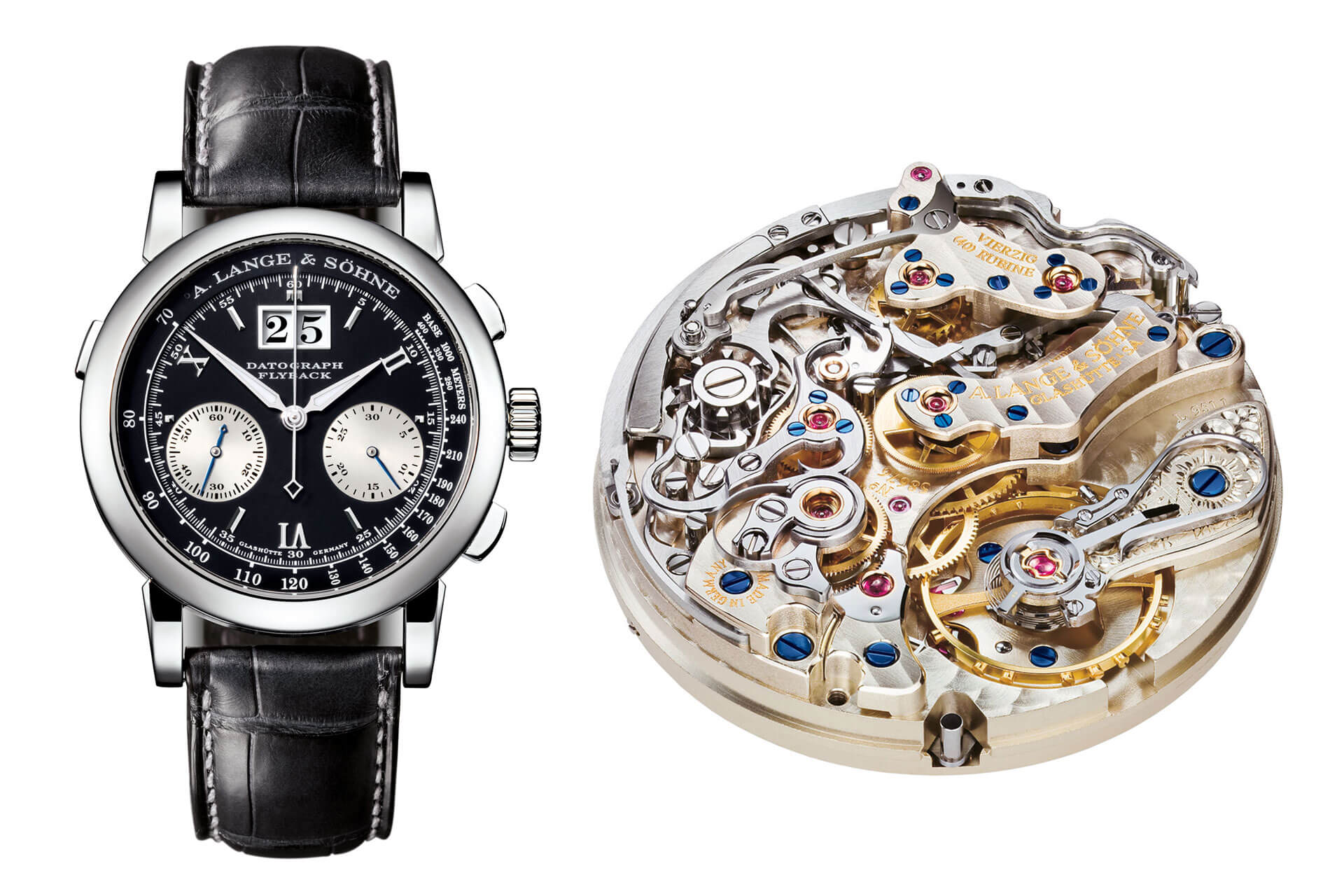
Datograph from 1999, Calibre L951.1
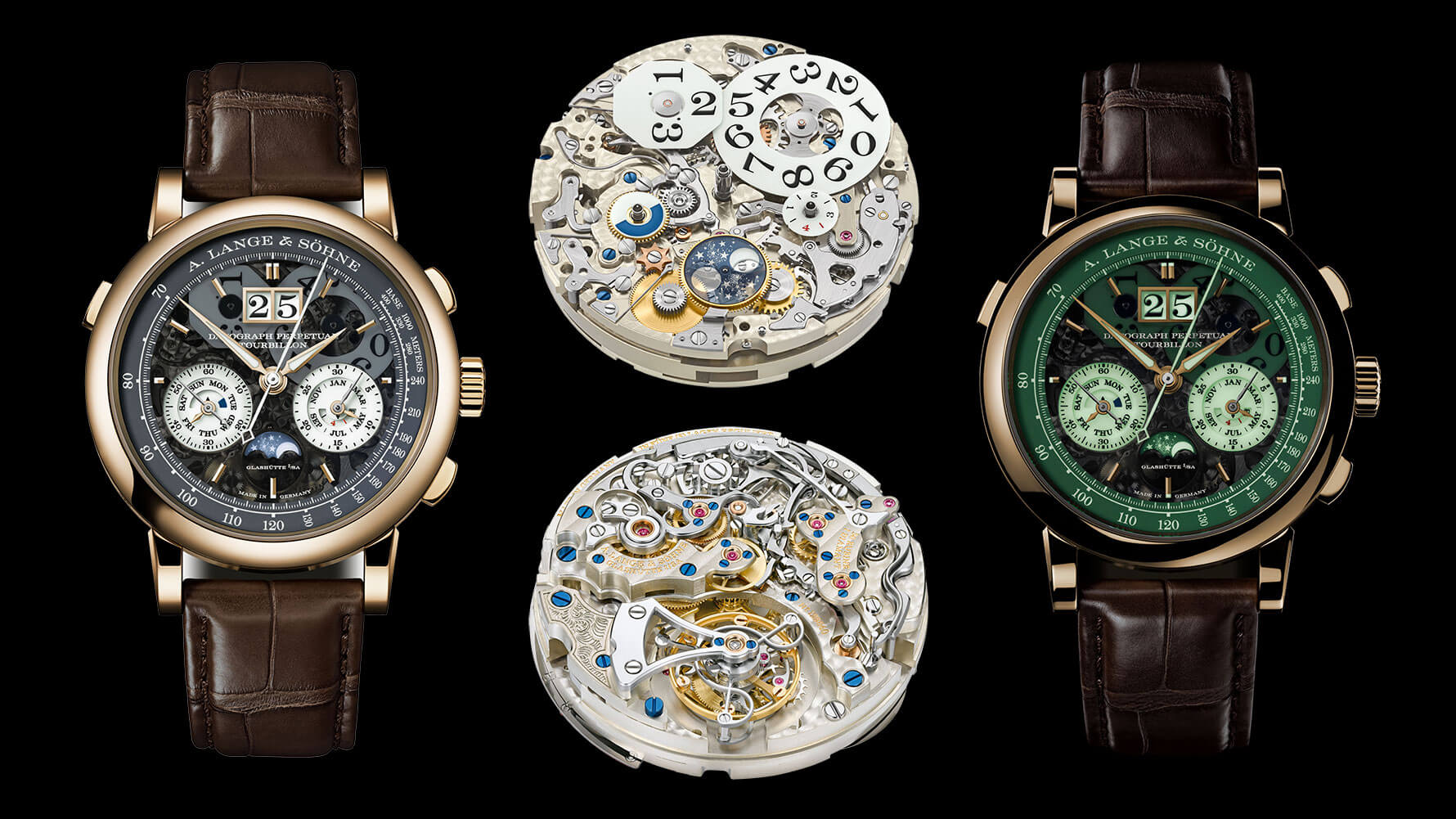
Datograph Perpetual Tourbillon Honeygold ‘Lumen’, Calibre L952.4
Exclusivity: No movements from other manufactures – no movements for other brands
Blümlein and Walter Lange presented four models on October 24, 1994, each powered by its own in-house developed movement. This alone is quite a sensation. Many collectors of A. Lange & Söhne models are very familiar with October 24, as the brand typically unveils new watches on that day every year, and they can look forward to what might be presented this year for the anniversary.
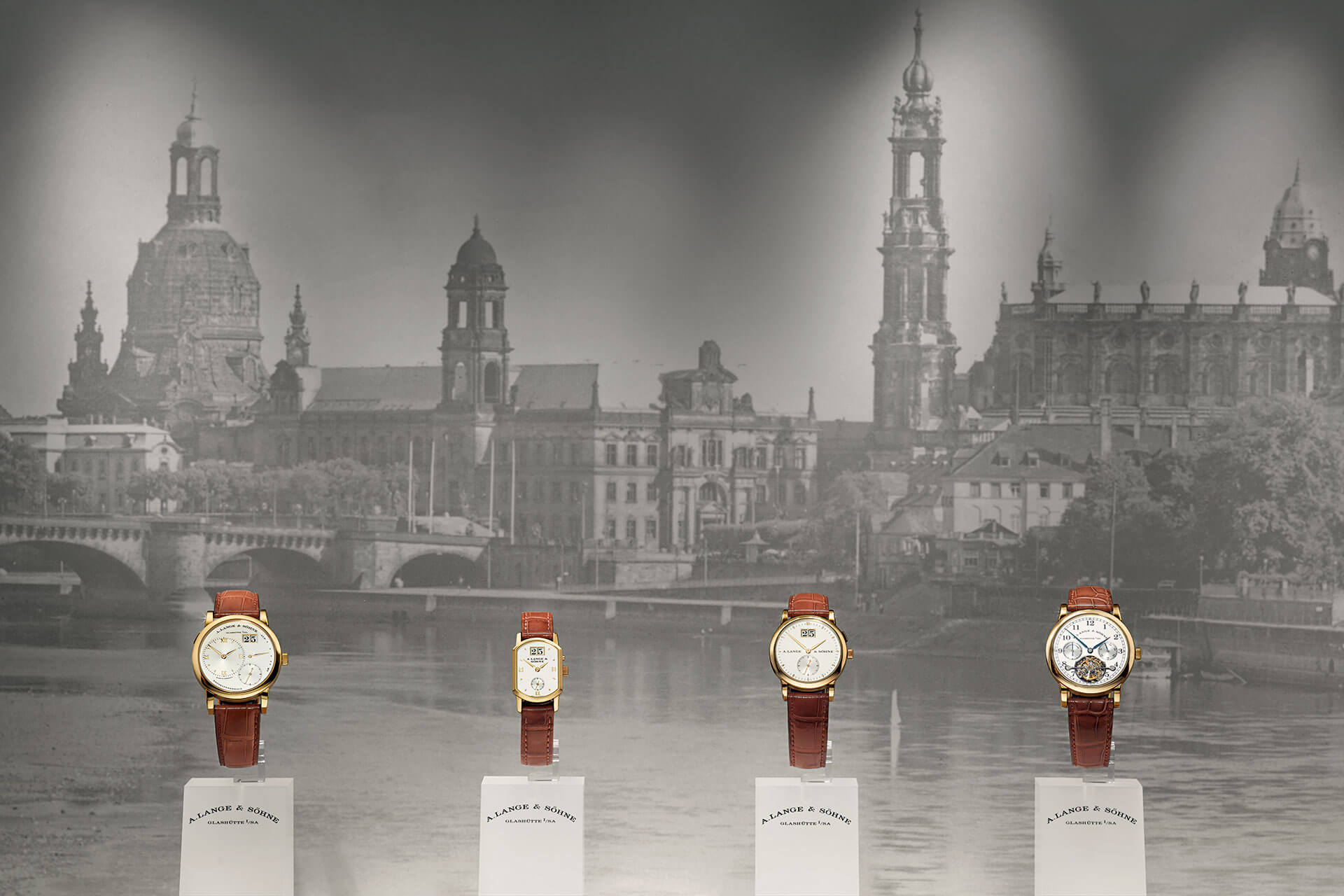
123 watches – sold out in a matter of hours
But back to the story: the 123 produced examples at that time were sold out within a few minutes, as Walter Lange later recalled in his autobiography. Among them was the future face of the brand, the Lange 1 with the decentralized time display, the first patented oversized date in a series wristwatch, and a double-barrel for a power reserve of 72 hours. Added to this was another outstanding model, the Tourbillon “Pour le Mérite” with a chain and fusée drive and its connection to the legendary Prussian Order of Merit, alongside a ladies’ watch with a shaped movement and oversized date called the Arkade, which was manufactured until 2009, and the Saxonia dress watch with a central time display, small seconds, and oversized date.

Lange 1 ref. 101.021 from 1994, calibre L901.0
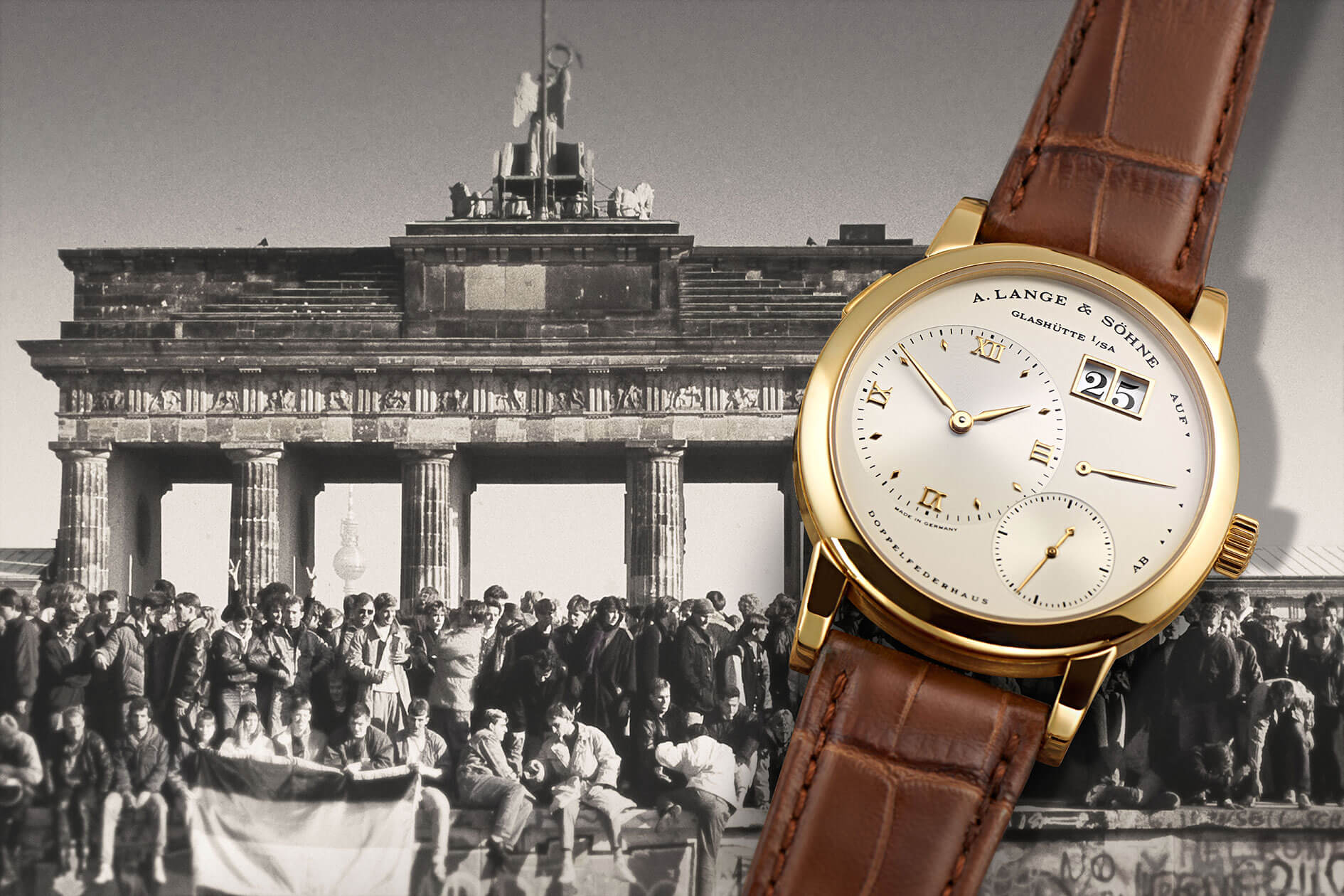
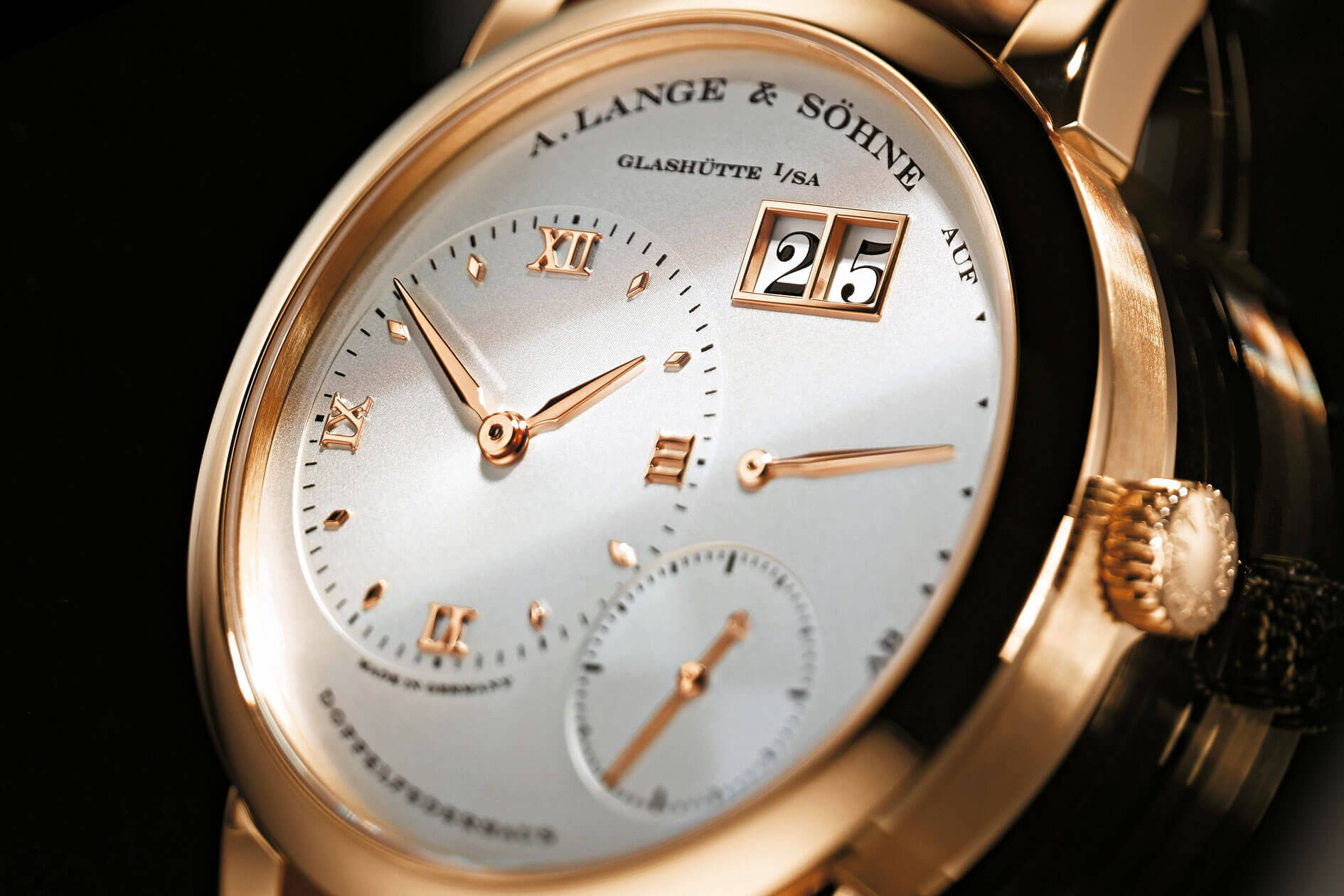
Four in-house movements for the comeback
Introducing four in-house movements in one year would still be a monumental task for most Swiss watch manufactures today. Even if one were to attempt it, they would look for synergies with other producers or at least supply brands belonging to the Richemont Group. None of this is the case with A. Lange & Söhne. Despite the extremely low production numbers, Lange movements are only found in watches by A. Lange & Söhne and are developed exclusively in-house. However, connoisseurs might point out (and it is well documented in an interview with Anthony de Haas) that initially, and this is no secret, Lange collaborated with Renaud & Papi, a renowned movement developer belonging to Audemars Piguet from Le Locle, in the area of complications. Interestingly, this very company formed the bridge for Anthony de Haas to A. Lange & Söhne, as he advised A. Lange & Söhne as an employee of this company before moving to Glashütte as chief developer in 2004.


Claim to further develop fine watchmaking with new ideas
The second strategic pillar of Blümlein may not be so obvious, because even though Lange is considered conservative and has a very classic look, there is one thing they definitely want: to further develop fine watchmaking with new ideas. Because even though there are many technically playful brands today like MB&F or Urwerk, Lange also always wanted to remain an innovative brand, but one that is particularly dedicated to the values of classic fine watchmaking. Is that a contradiction in terms? And what does that mean in detail?
How innovative can mechanical movements from traditional watch brands be?
This question of how innovative movements can be, especially in traditional companies, is currently occupying many watch manufactures that develop their own movements. A. Lange & Söhne has answered this in its own distinct but consistent way: both are possible if done consistently. This is because there are very traditional collectors as well as more progressively minded watch enthusiasts. Lange addresses this dilemma by offering many complications in two versions, namely classically watchmaking and a very technically innovative variant. There is no set term for this strategy at A. Lange & Söhne, but we call it ‘Double Track Approach’. This approach is particularly well exemplified by four models from A. Lange & Söhne.
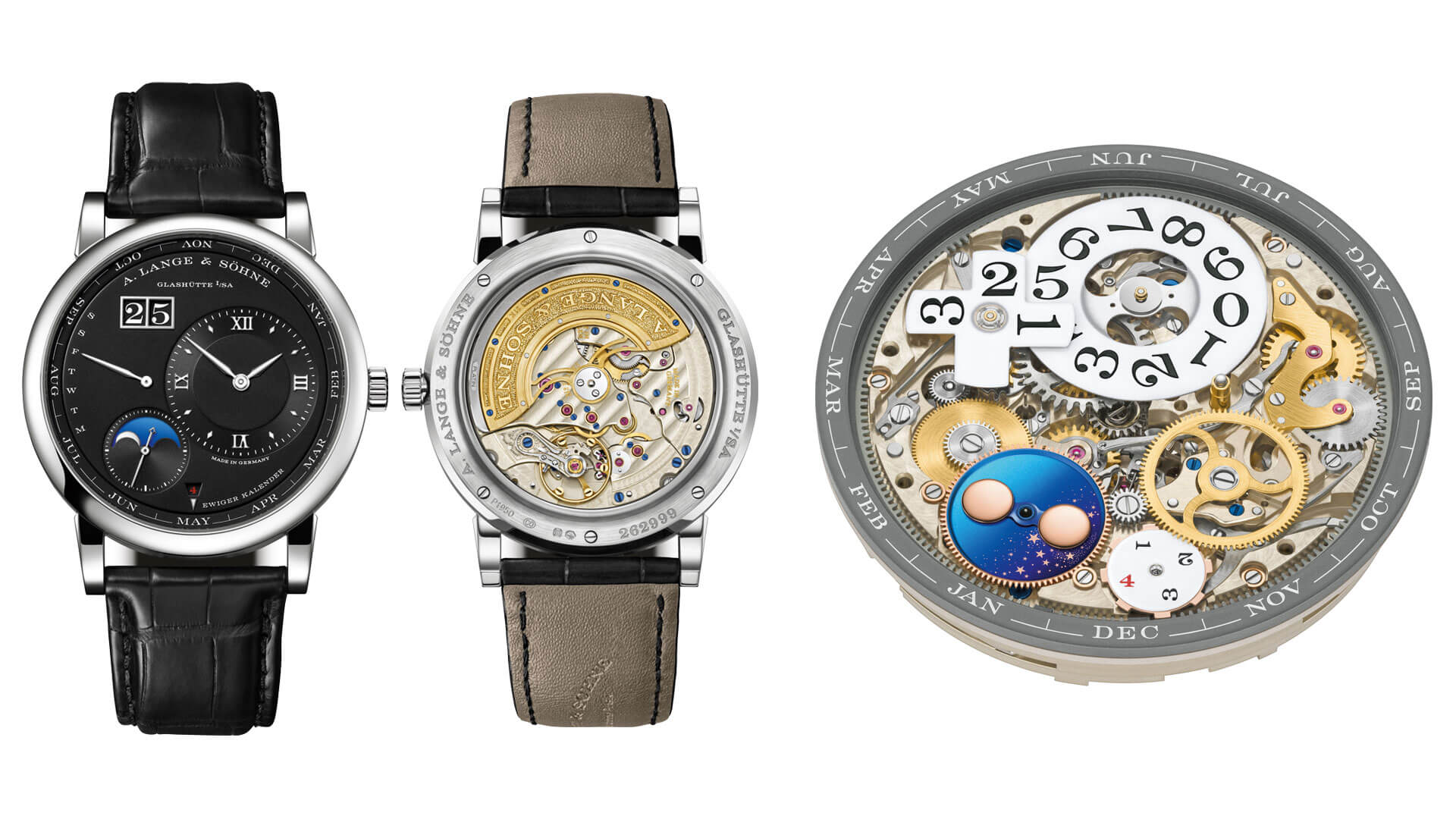
Lange 1 Perpetual Calendar, calibre L021.3
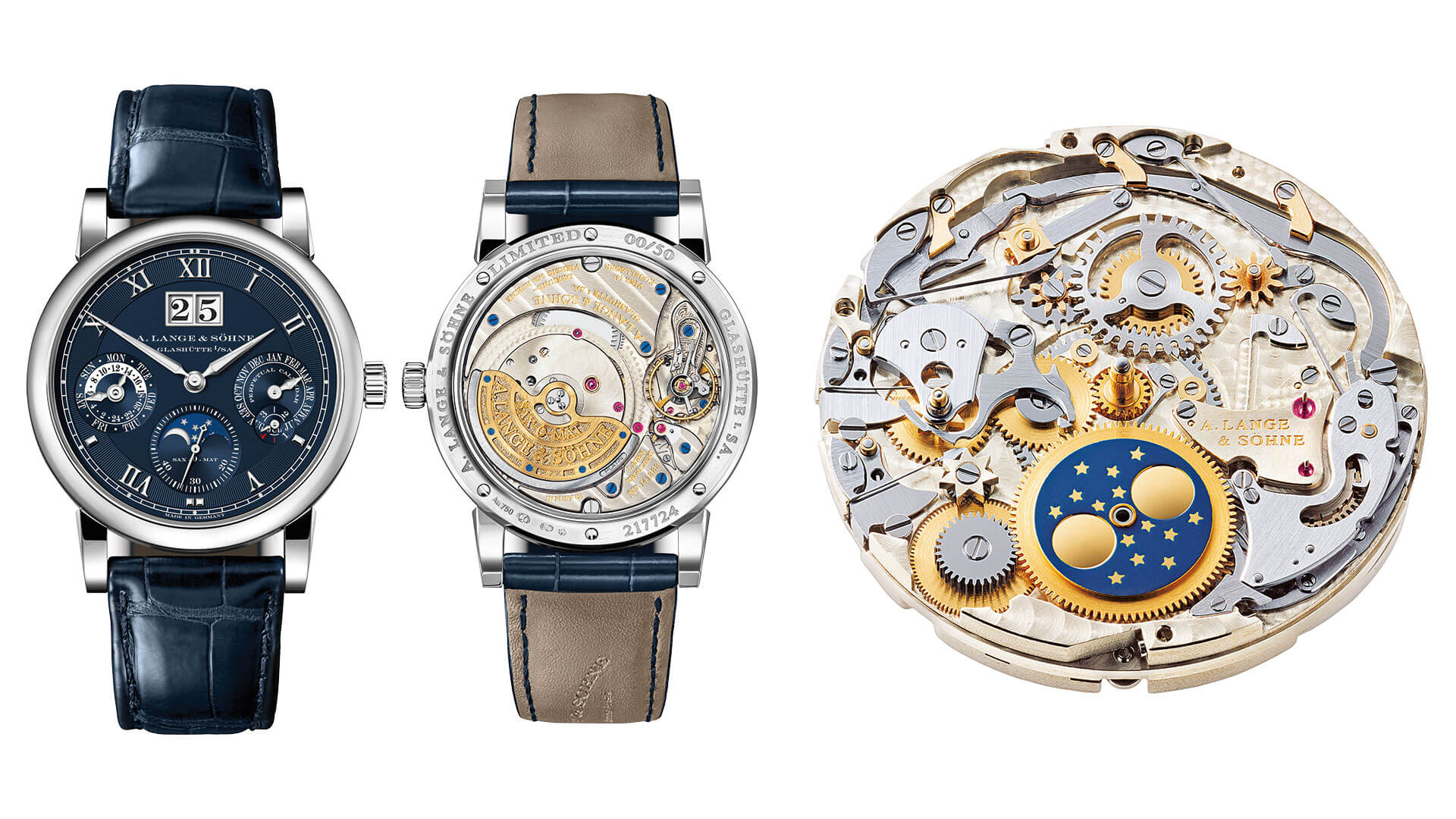
Langematik Perpetual, calibre L922.1
The Lange Double Track Approach
There is an eternal calendar in a rather classic solution to be found in the Langematik Perpetual with a 48-wheel and slow-moving indicators. But there is also the Lange 1 Perpetual Calendar with a rotating monthly ring and jumping indicators. This principle is found in all important complications: the 1815 Rattrapante Chronograph has a traditionally dragging minute counter, while the Datograph UP/DOWN has a precisely jumping minute counter with a large date. In the minute repeaters, the classic-innovative pair are the Richard Lange Minute Repeater with a traditional quarter-hour strike, separate barrel, and activation via a slider, and the innovative Zeitwerk Minute Repeater as the only decimal minute repeater with one barrel and activation via a pusher. And finally, you find this pair also in the tourbillon mechanism: the Tourbillon “Pour le Mérite” in classic design does not have a stop mechanism, but the 1815 Tourbillon does.
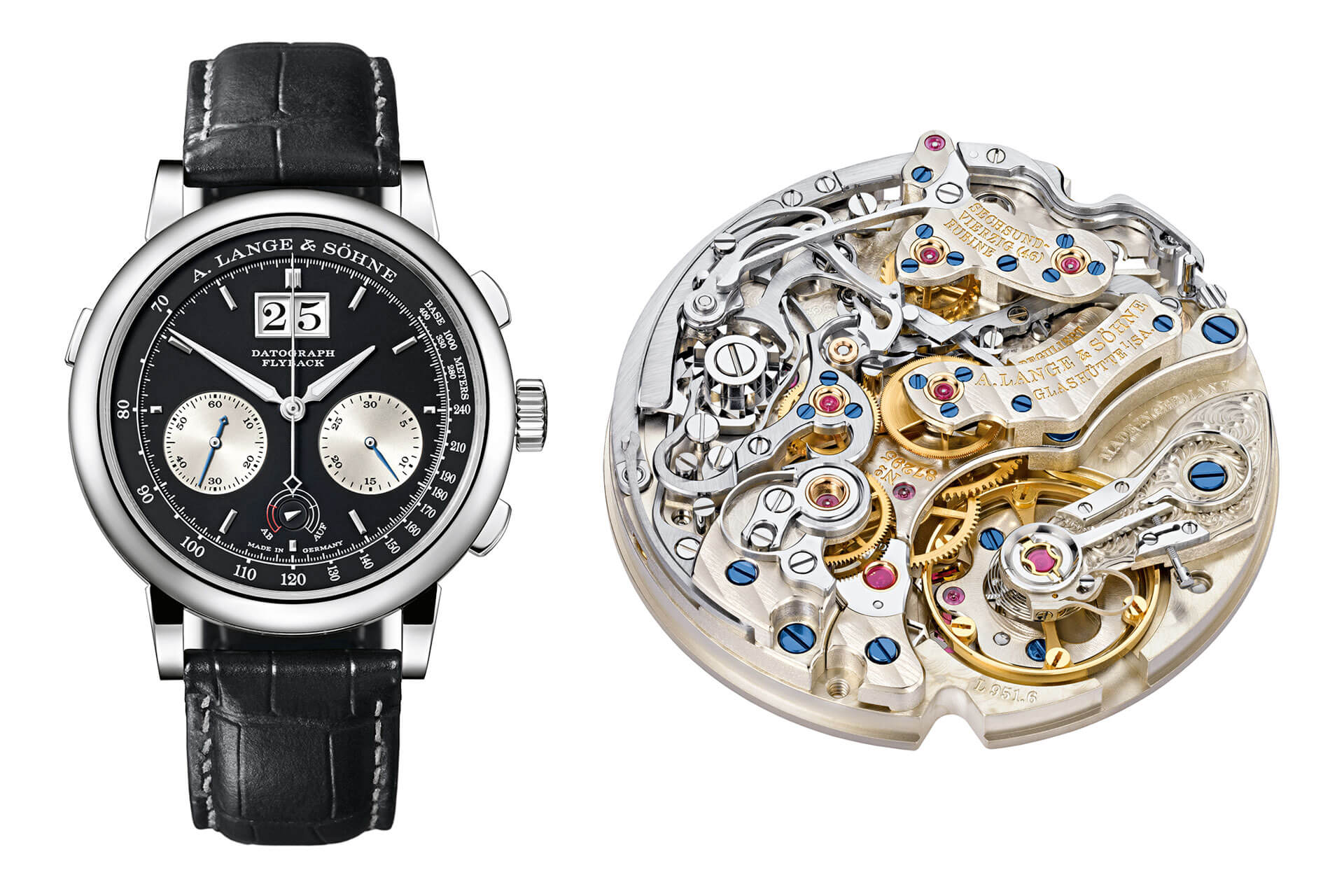
Datograph Up/Down, calibre L951.6
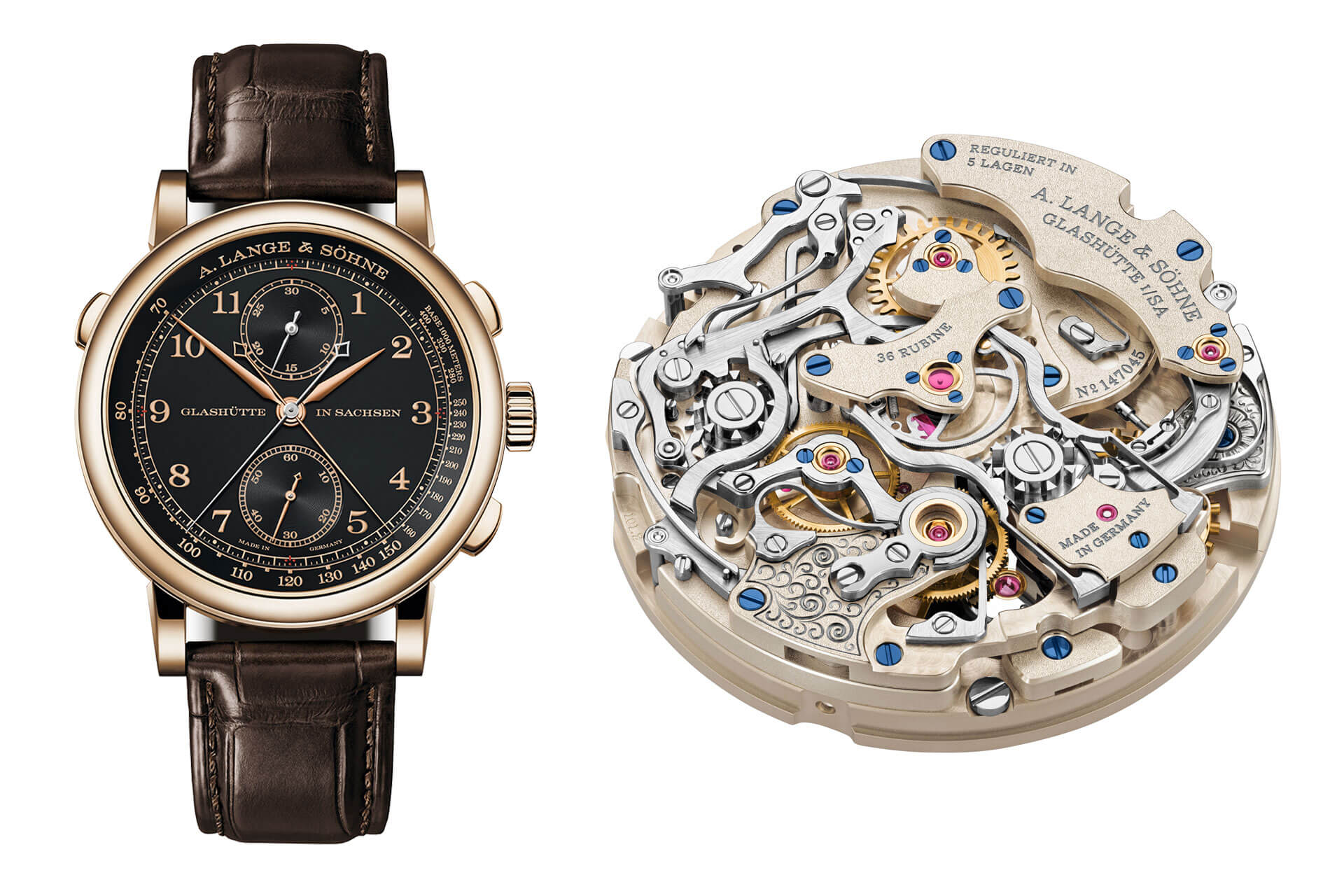
1815 Rattrapante, calibre L101.2
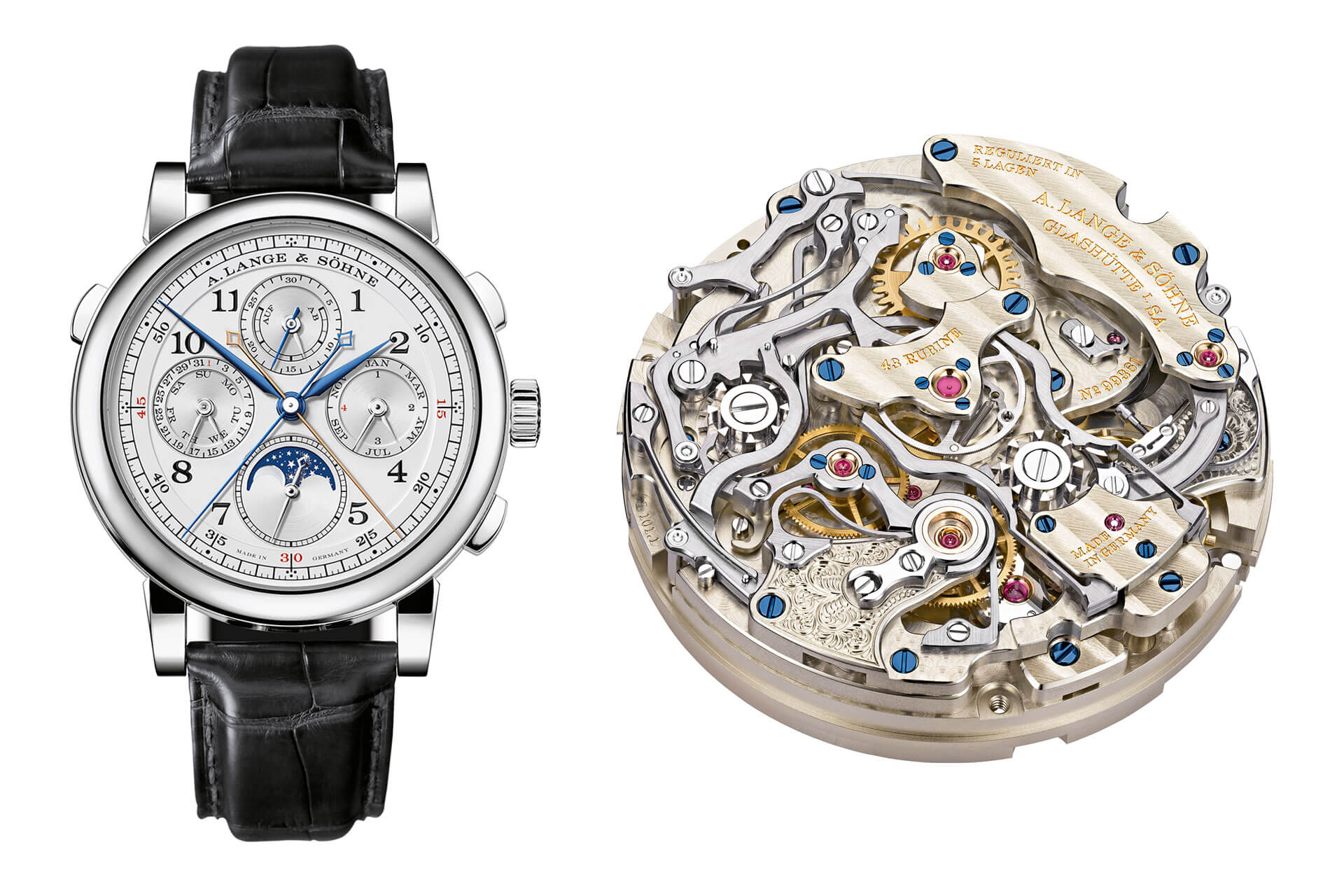
1815 Rattrapante Perpetual Calendar, calibre L101.1
Trendsetter in the field of calibre-making
Precisely this mix, combining both traditional and modern elements, characterises Lange’s way of developing their own works and is reflected in current market trends. The dilemma of being innovative while not straying too far from traditional craftsmanship techniques and constructions is today, 30 years after the rebirth of A. Lange & Söhne, primarily fuelling the growing world of niche brands in the manufacturing sector and is eagerly embraced by them. These sometimes tiny companies often want to go back to the artisanal roots of fine watchmaking without, for instance, using silicon components.
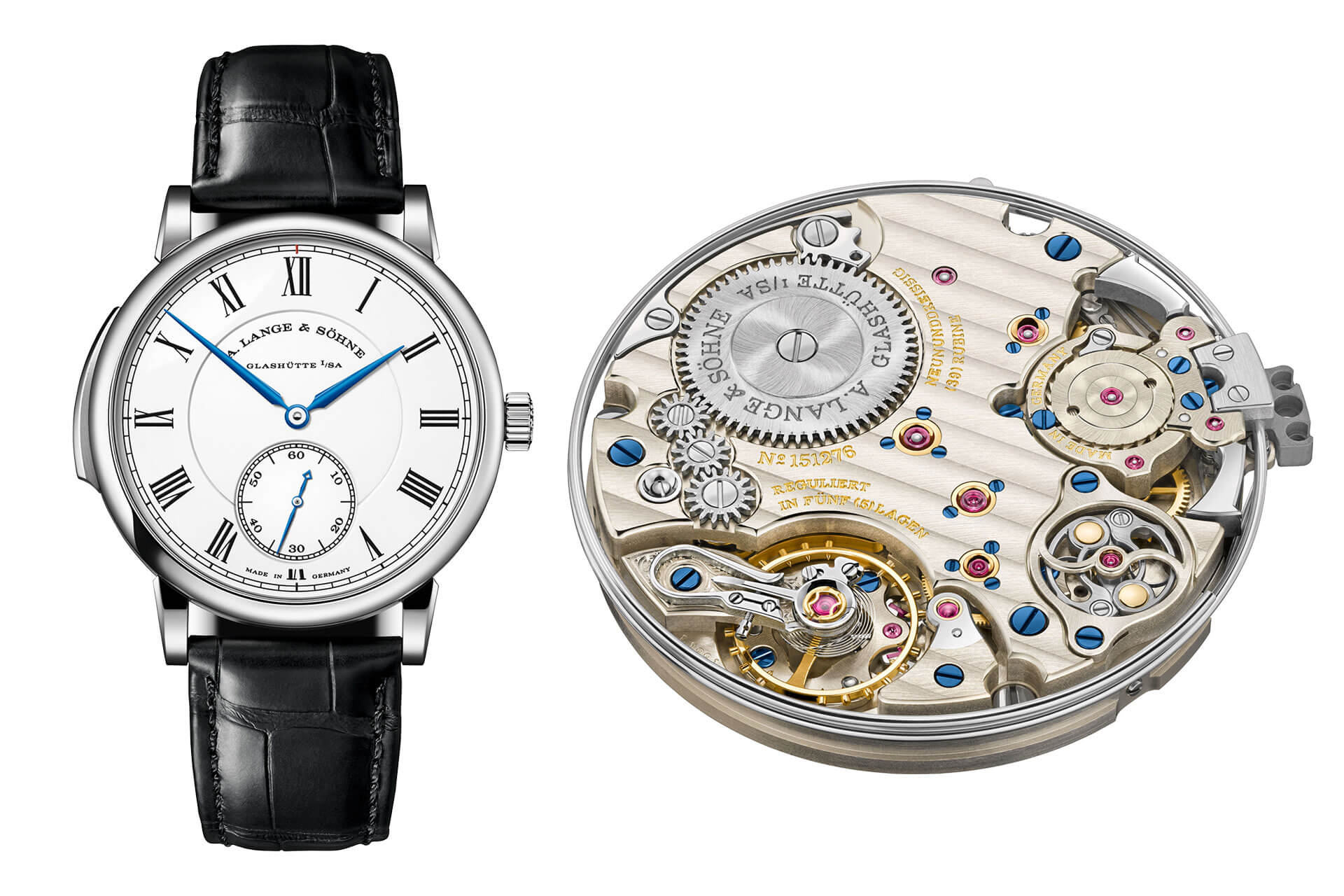
Richard Lange Minute Repeater, calibre L122.1
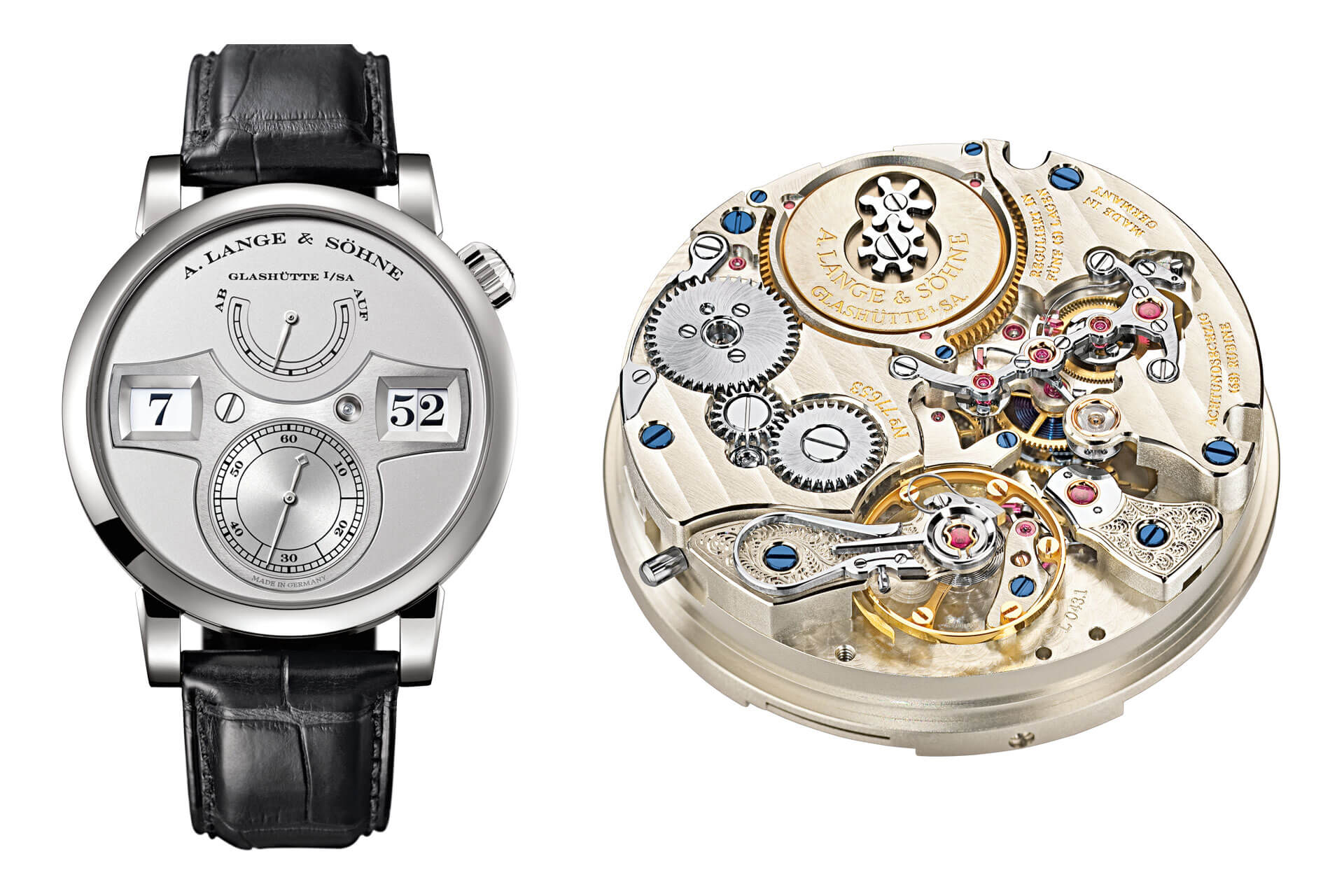
Zeitwerk Minute Repeater, calibre L043.5
High-tech in haute horlogerie: A tightrope walk for traditional companies
In times of CAD design and numerous industrially manufactured mechanical works with increasingly more high-tech components such as silicon spirals in modern movements, the boundaries of physics in the field of fine watchmaking are continually being pushed further. However, this trend becomes a balancing act for brands with a great tradition and a strong craft-influenced image like A. Lange & Söhne, Patek Philippe, or Vacheron Constantin. With its Double Track Approach, Lange can unite both trends under one roof without having to abandon its traditional crafts and the associated knowledge and manufacturing techniques. However, there will be no silicon spiral at A. Lange & Söhne, but more on that later.
Only useful complications
This approach is complemented by the third strategic pillar for the development of new movements at A. Lange & Söhne. This is crucial when examining the movements in detail. Because at Lange, every complication, every newly developed function must also be useful in terms of functionality and everyday use. You won’t find art for art’s sake here. But what does that mean?
But what are useful complications?
Usefulness has become a very flexible term for mechanical watches today, as everyone carries a smartphone in their pocket. At Lange, this primarily means watches must be easy to read and functional, which means: crazy watch mechanism elements like displays that rotate and switch simultaneously, but have no added value other than being fun to look at, have not existed at this company and will not exist in the future.
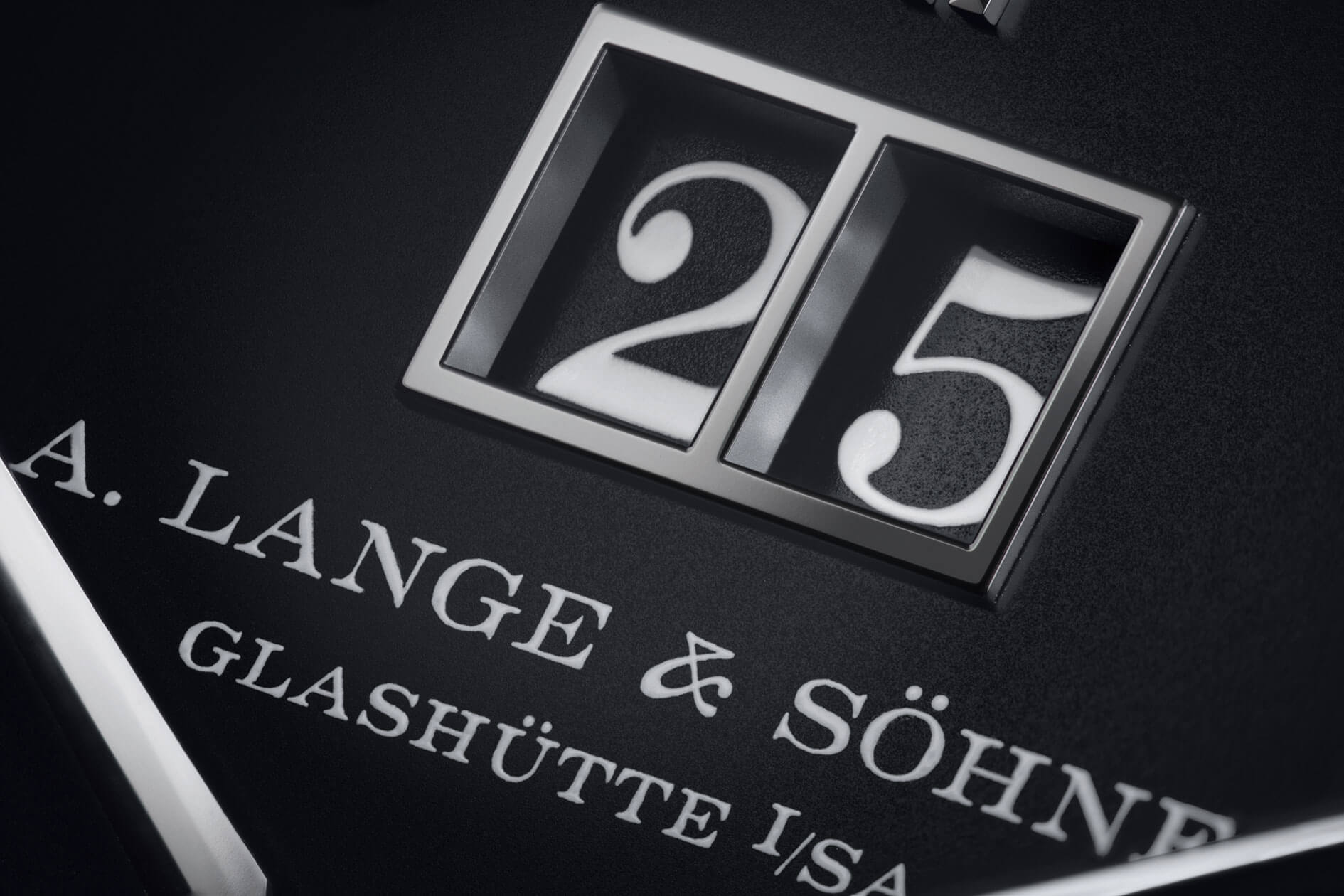
The fact that usefulness can definitely be fun is demonstrated by a typical example of technical excellence: with the Zeitwerk launched in 2009, it wasn’t just about creating a watch with a digital display, but about achieving the largest and most legible digital time display, with hours and minutes aligned on a horizontal axis, in the usual reading direction. This not only delights the engineers at Lange but especially the user, who can see everything at a glance with the Zeitwerk, just like with a smartwatch, but purely mechanically driven. The term “useful complication” cannot be directly attributed to a single person, as I was told at Lange, but if in doubt, it is another term that Günter Blümlein himself might have coined.
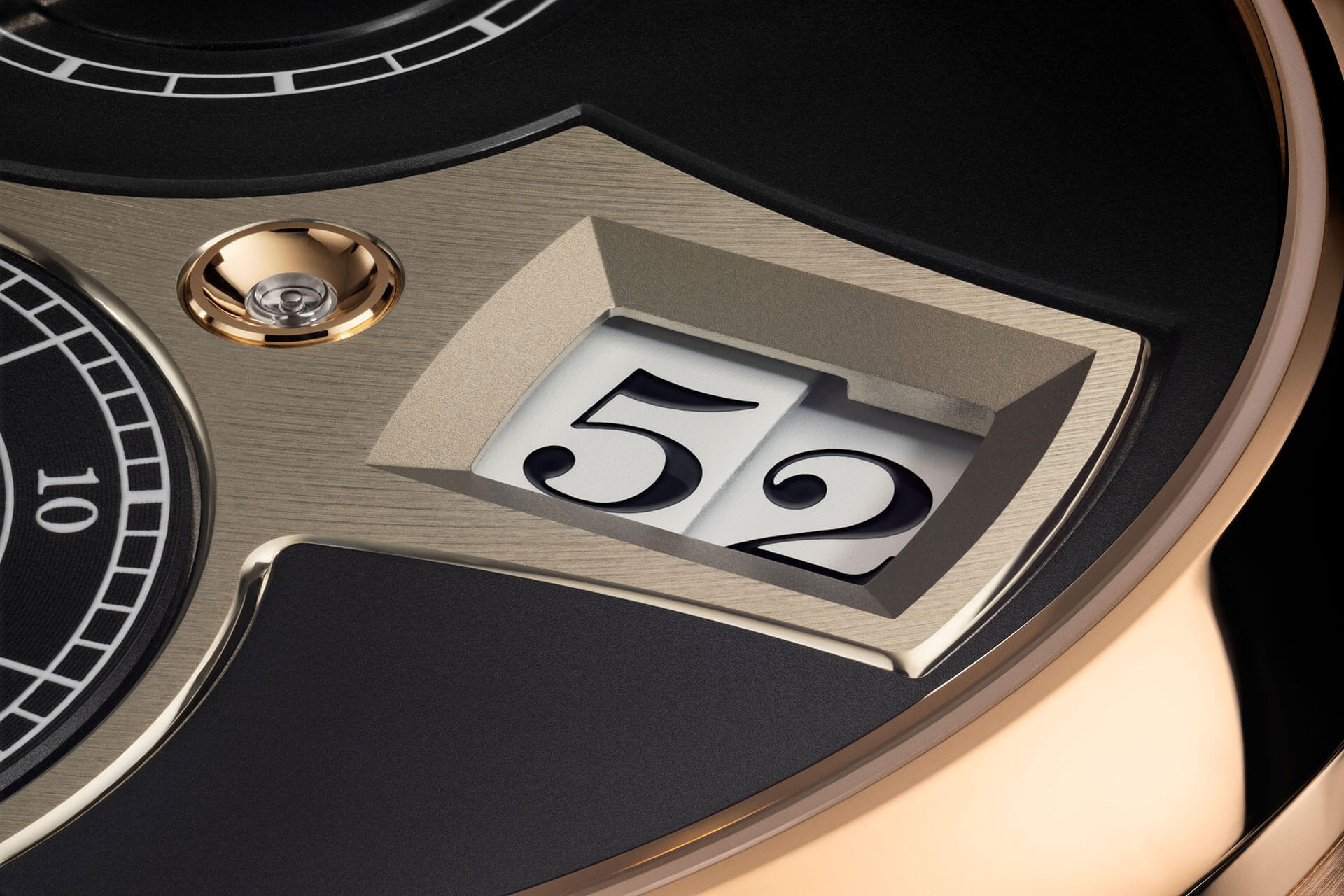
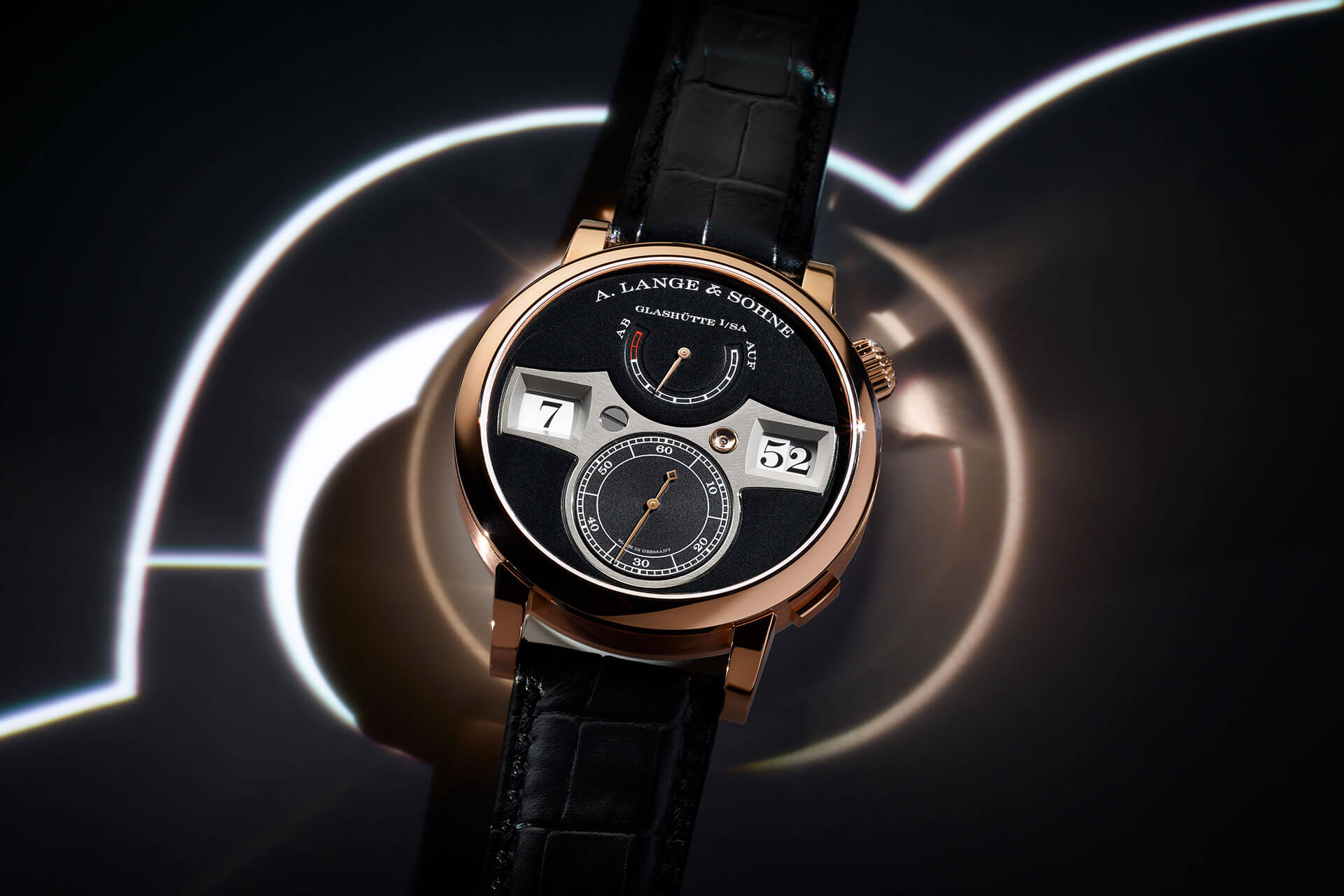
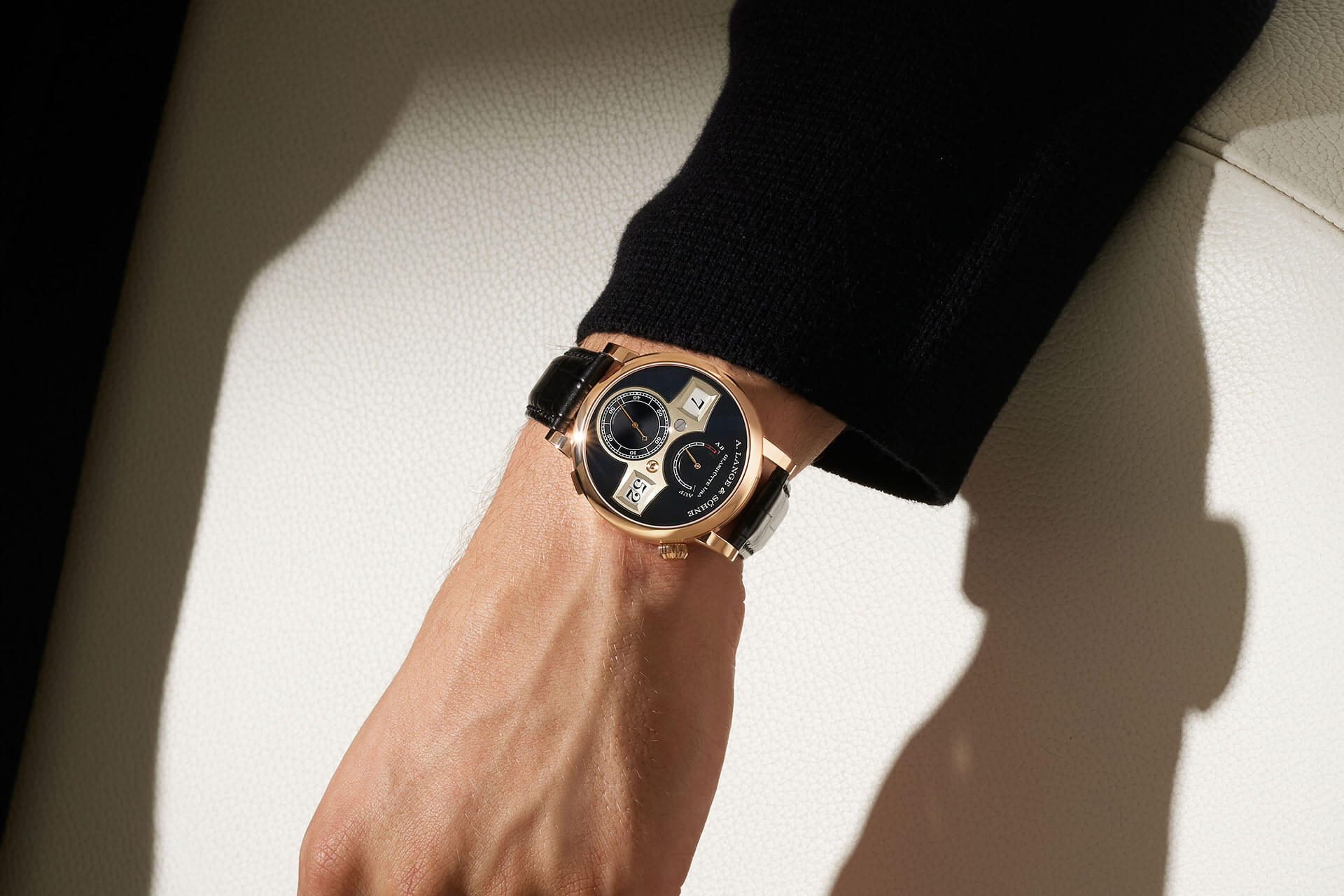
1994: Lange 1, the first Lange of the modern era
The term “useful complication” perfectly embodied the famous Lange 1 from 1994. Naturally, this watch was about more than just functionality and everyday utility: Lange’s first modern wristwatch also needed to become the new face of the brand, be technically innovative, yet stand in the tradition of old Glashütte watchmaking. The completely new large date at the time directly goes back to a patent by Günter Blümlein and this is precisely what he used for the relaunch of Lange. This distinctive large date, in turn, necessitated the decentralised dial layout, which gave the brand and the watch its character. And as with so many manufacturers, this boldness polarised opinions. For this now much-admired design did not appeal to everyone. But it is precisely this mixture of genuine innovation, tradition, and individuality that quickly excites collectors.
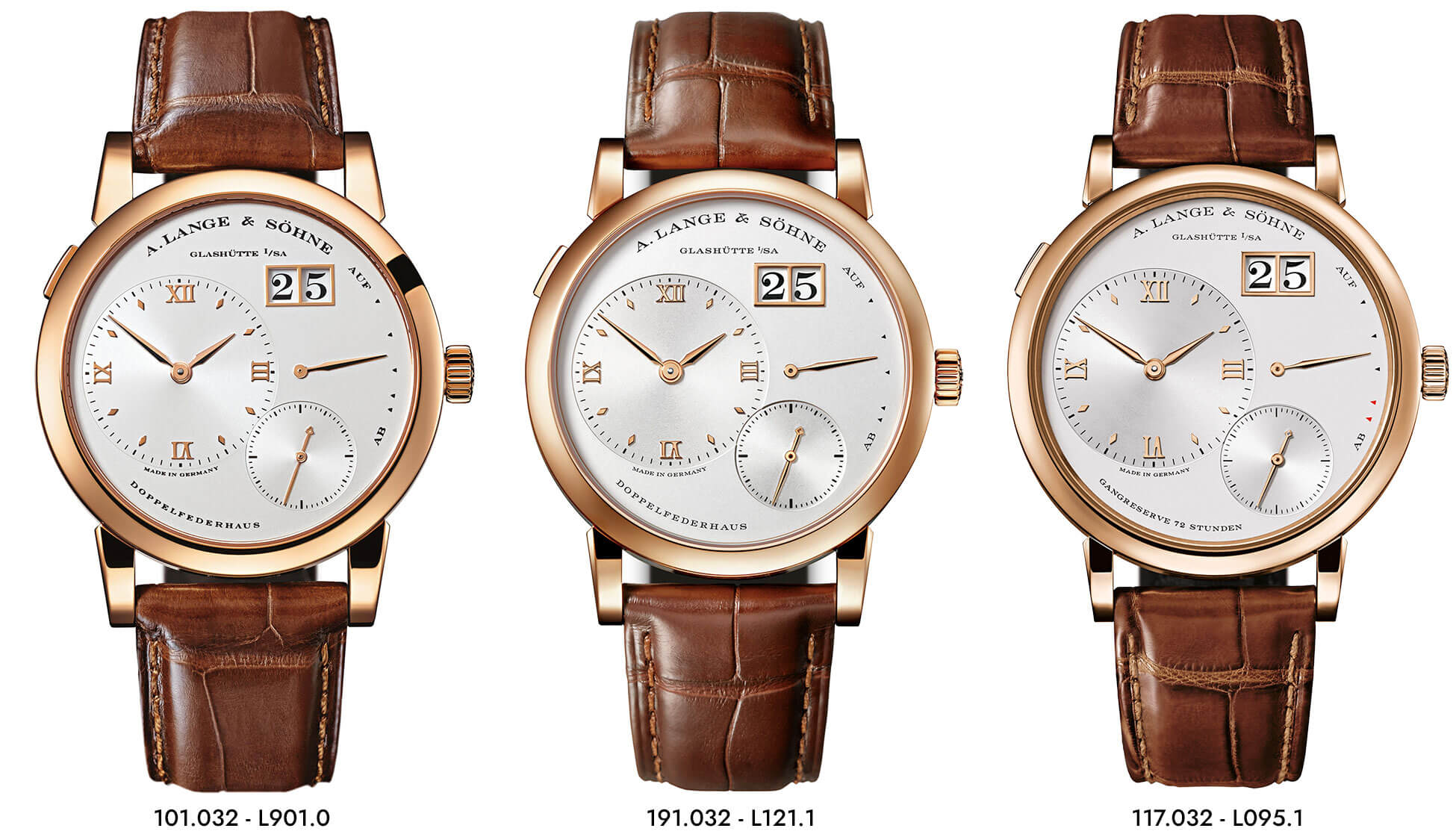

What inspired the large date at Lange & Söhne?
Of course, the big date had a historical reference, as practically every detail of this exceptional manufacture did: in this case, it was the display of the legendary five-minute clock in the Dresden Semper Opera House, but that’s another story. The key point is: the Lange big date represented the first real innovation in a field where Rolex founder Hans Wilsdorf had last filed a patent with the introduction of the date magnifier in 1954 – and thus made wristwatch history with a compellingly simple idea.
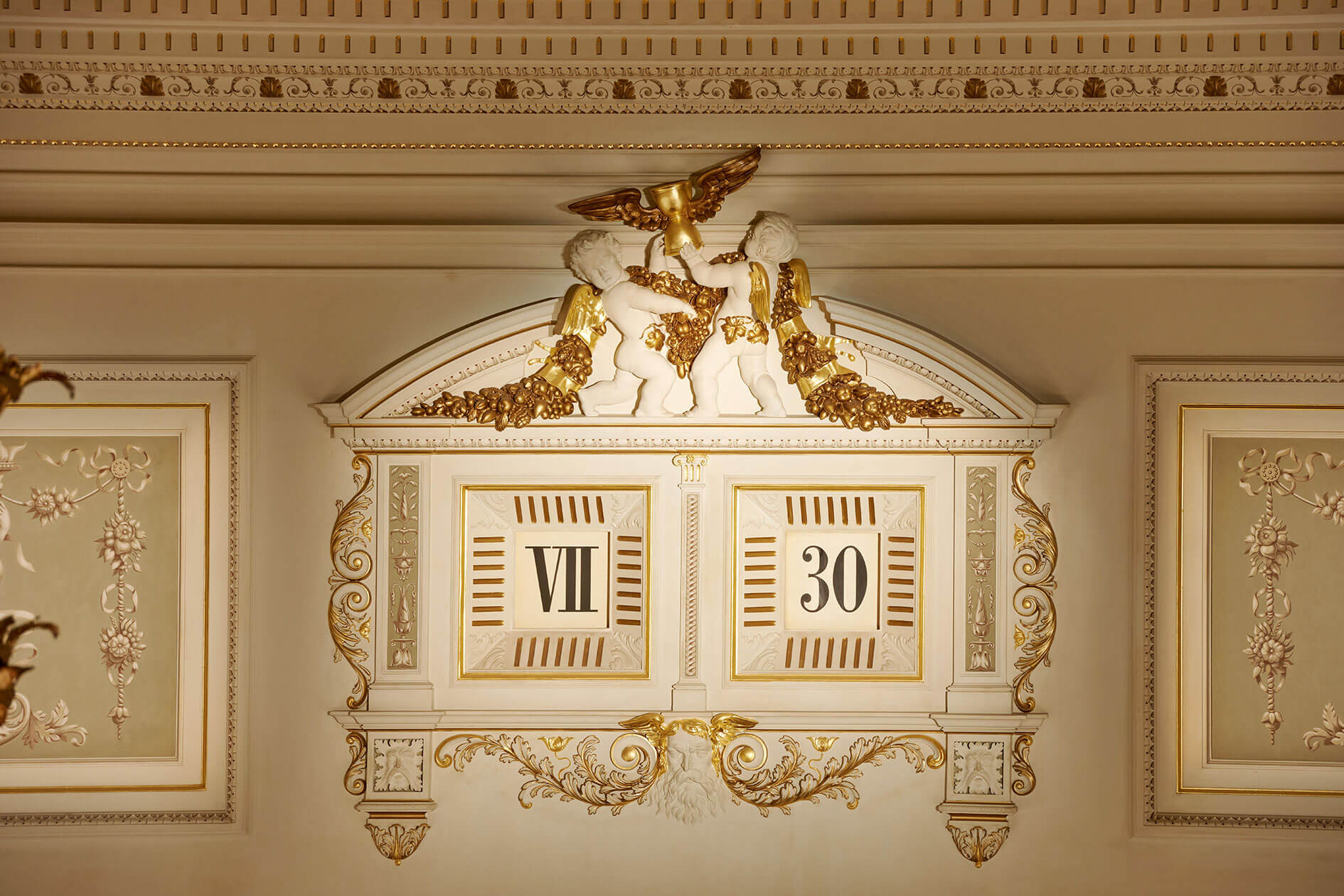
View from the audience onto the current five-minute clock of the Semperoper above the stage
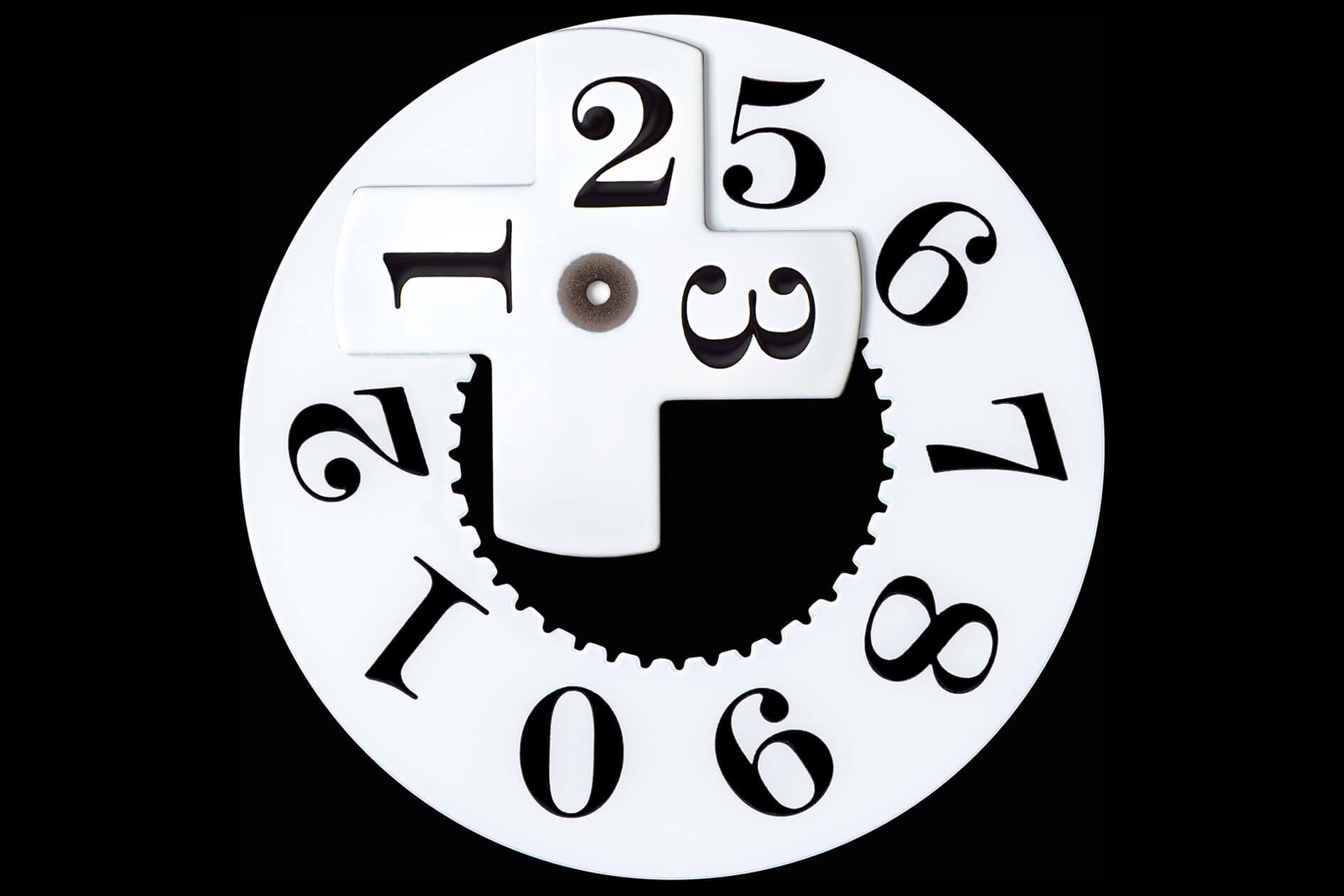

The Big Date by A. Lange & Söhne
The perfect duo: Günter Blümlein and Walter Lange
That A. Lange & Söhne was run like a family business for many years has another reason, and that reason is, of course, Walter Lange. Long before other companies, Günter Blümlein recognized the potential of a member of the family dynasty for the rebirth of such a company. Just for comparison: Tag Heuer took until 1999 before they dared to call Jack Heuer (who was then living in Asia) to ask if he was interested in working as honorary president for the company that had been taken from him by banks in 1982. To this day, his significance in the brand’s comeback under LVMH leadership cannot be underestimated. Every CEO who has worked with him will gladly confirm this.
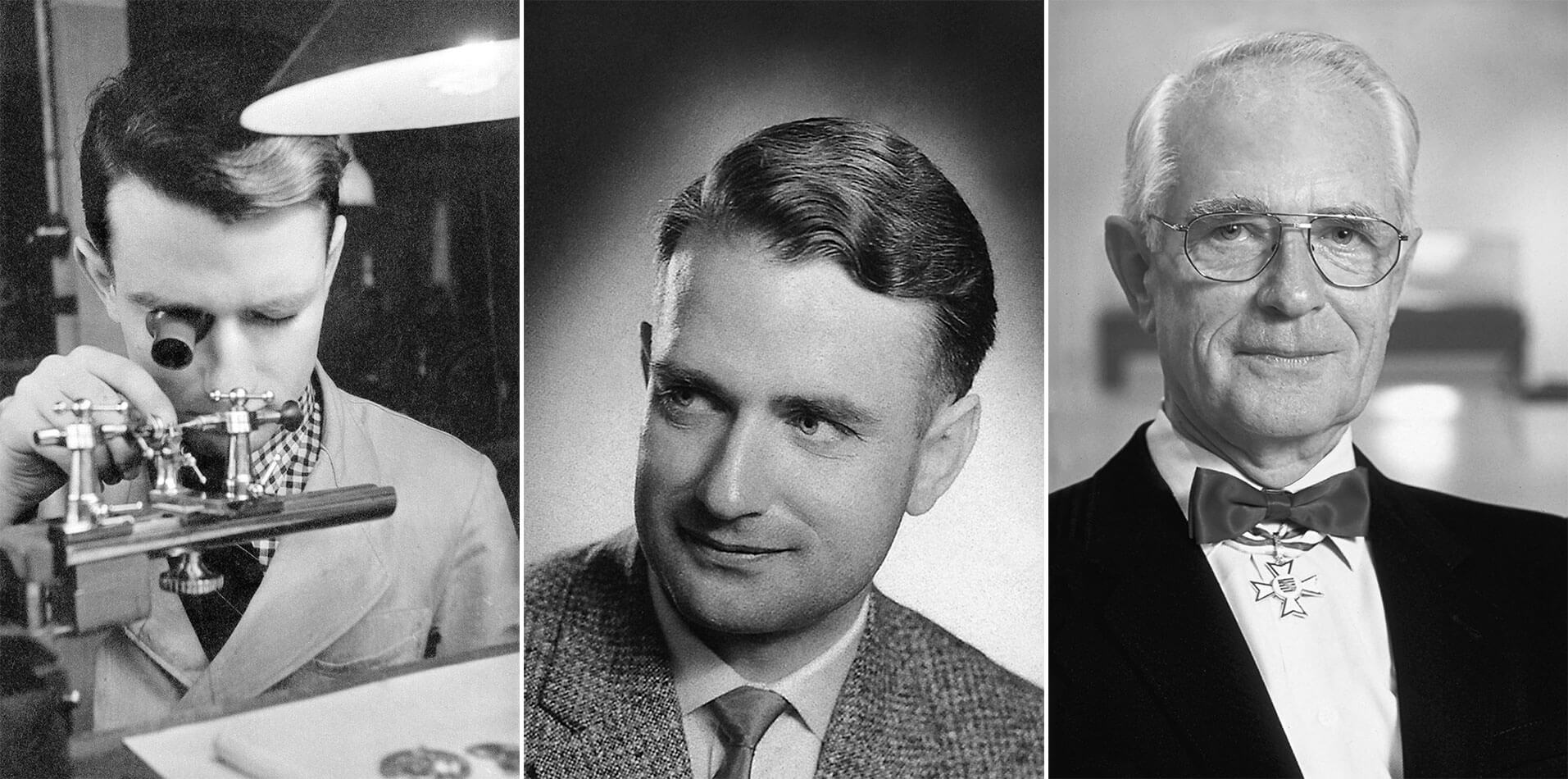
Walter Lange
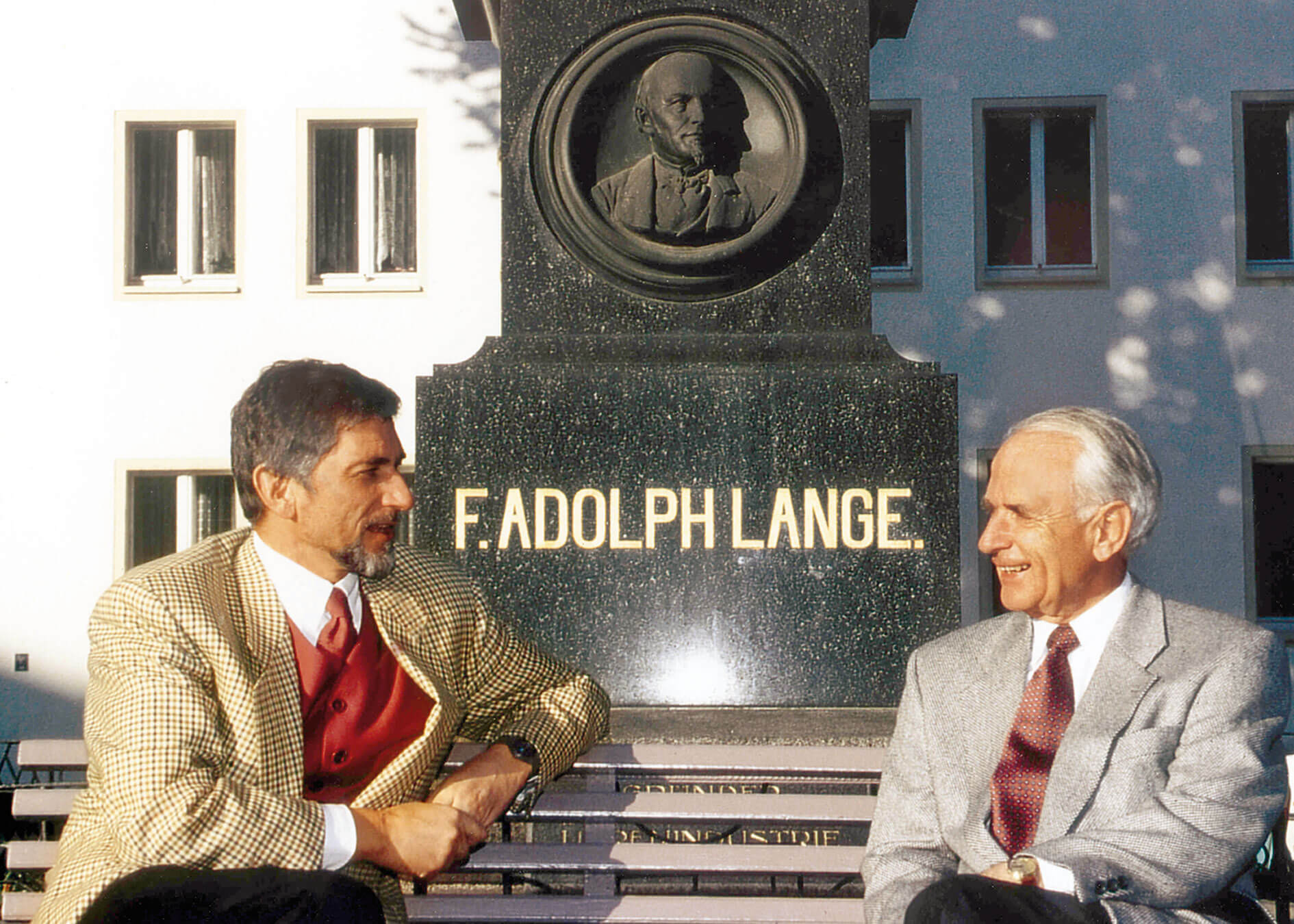
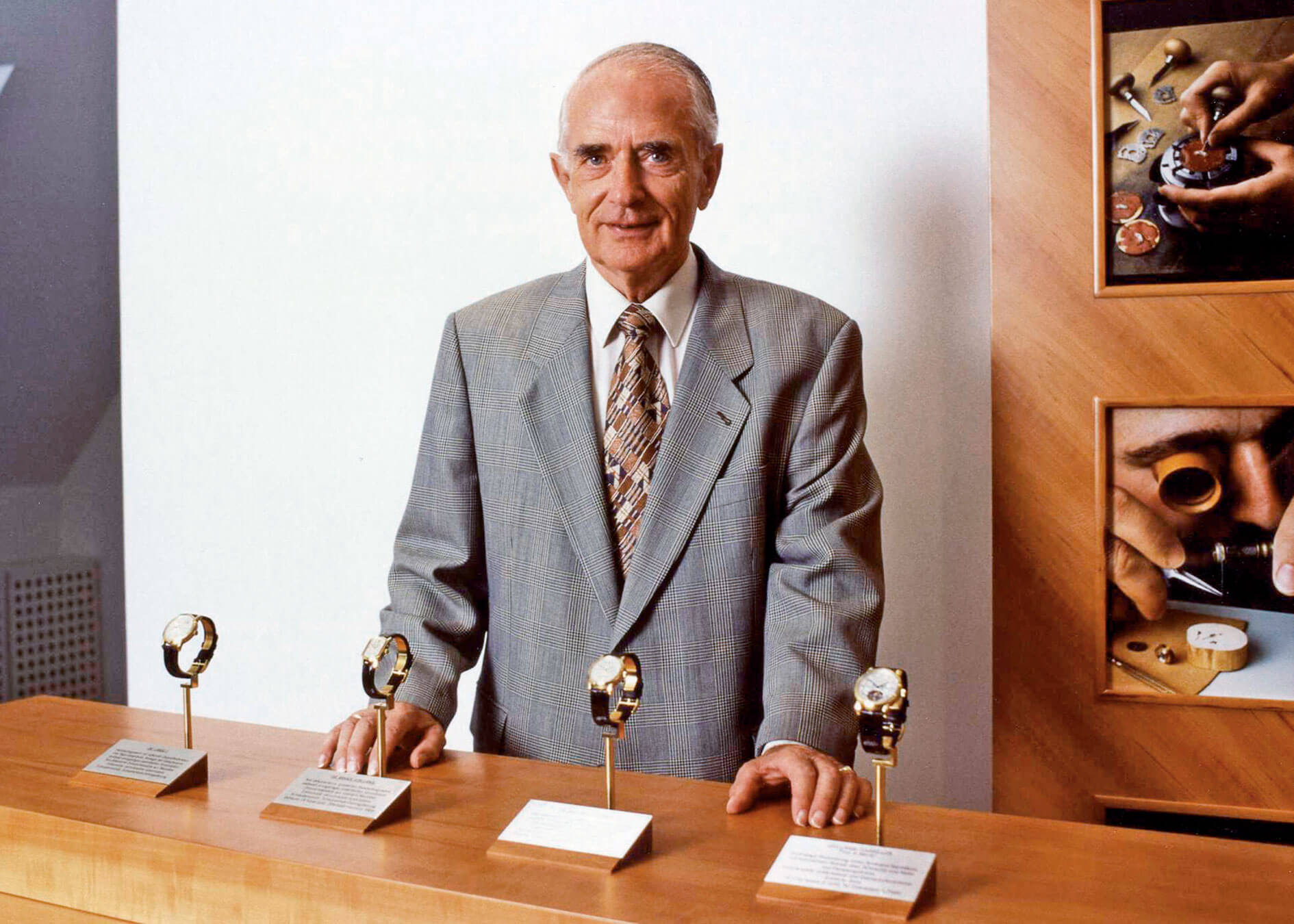
A comeback with a few detours
How did Walter Lange return to Saxony? On December 7, 1990, exactly 145 years to the day after the founding of A. Lange & Söhne, he re-registered the brand in Glashütte at the address of a former classmate. Despite post-war expropriation, he dedicated his entire life to the comeback of his company. He was the one who shaped the motto of all employees at A. Lange & Söhne to this very day: “Never stand still,” never to be idle or stop fighting for one’s ideals, was his creed. Interesting too is Walter Lange’s observation regarding the Lange 1. It was not the accompanying models like the Arkade or the Saxonia that received attention, but rather the exotic Lange 1.
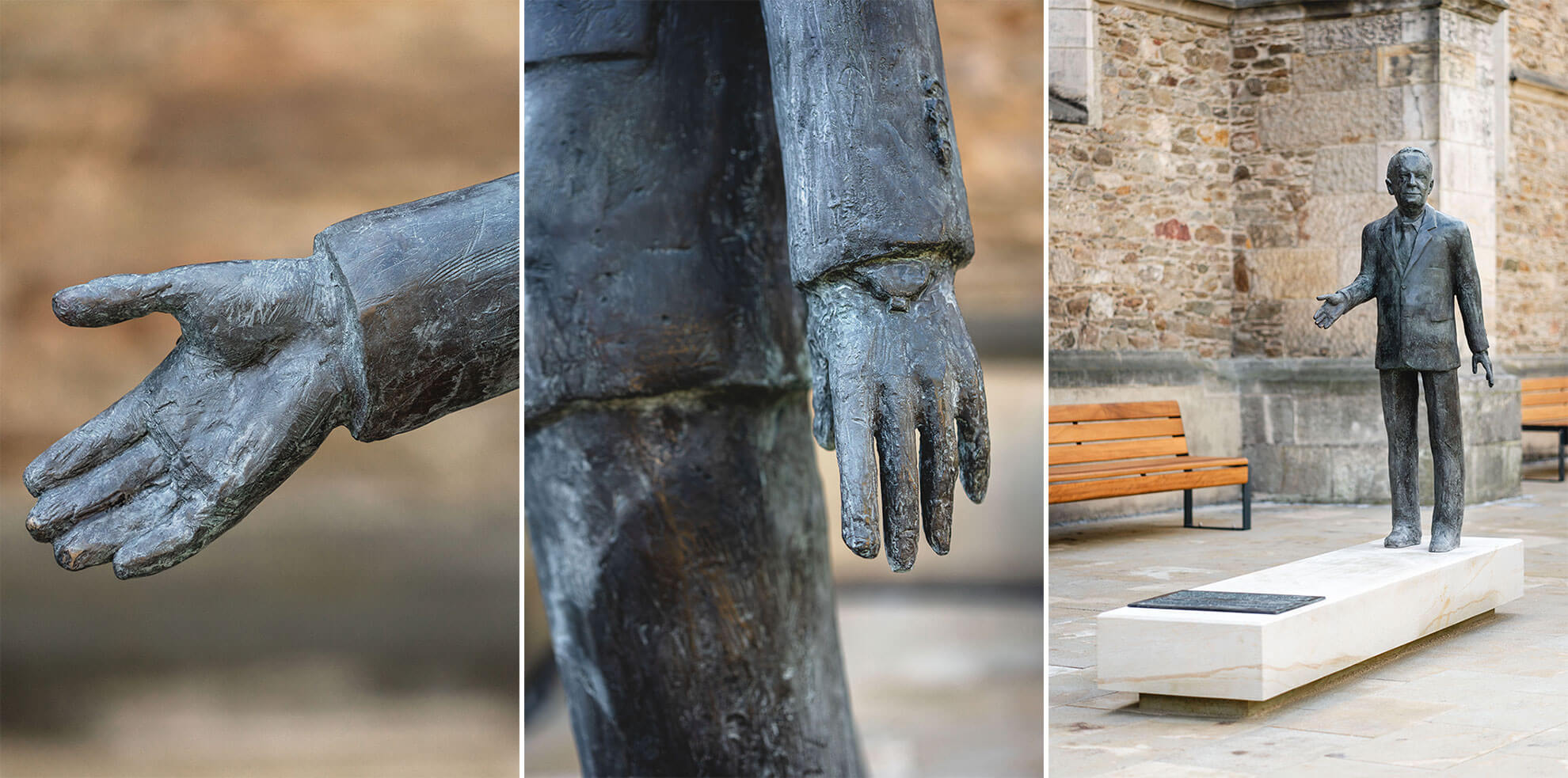
The fame-making exotic Lange 1
Walter Lange once said: “The exotic quickly made the brand very well-known.” So well-known that today, decentralised dials are often referred to internationally as “German watch face.” And essentially, Lange set the concept that was initially followed by certain collections of Glashütte Original and much later by Moritz Grossmann or Tutima with their high-end models. The most recent example is the new establishment of the Berlin watch brand Löbner with decentralized time display.
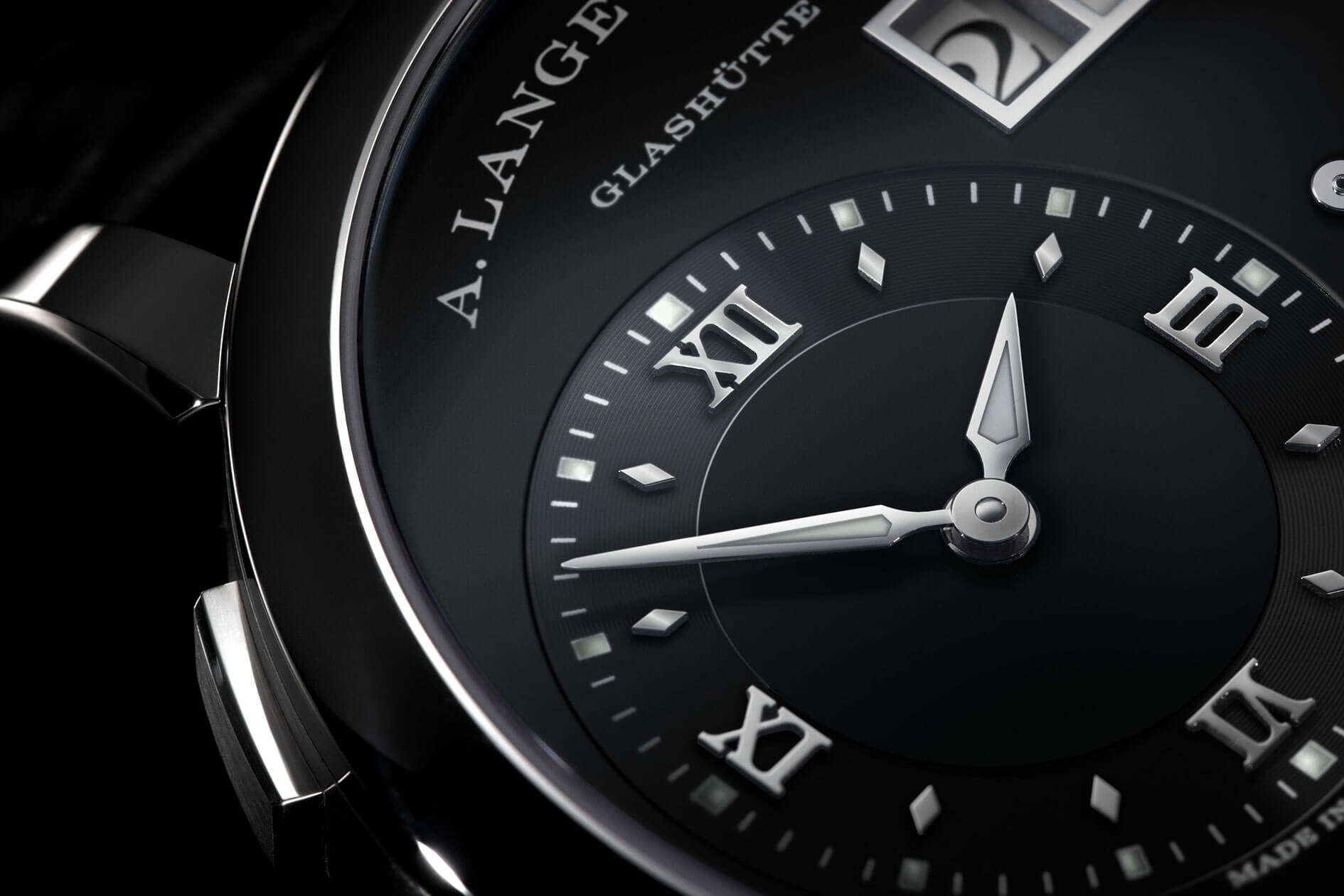
The three strategic pillars of A. Lange & Söhne
With these three strategic pillars, namely, first, the ambition to further develop fine watchmaking with new ideas, the Double Track Approach, and the exclusivity of their own movements only for their own models, A. Lange & Söhne positioned itself visionary and ahead of almost the entire Swiss watch industry early on. Combined with the philosophy of developing only useful complications, it was well-prepared for the comeback of mechanical watches that has been ongoing for over three decades, giving its models a very distinctive character. But how did A. Lange & Söhne manage to develop these innovations out of nowhere in the early 1990s, while the Swiss watch industry still seemed to be in a technical slumber? This will be explored in the next chapters.
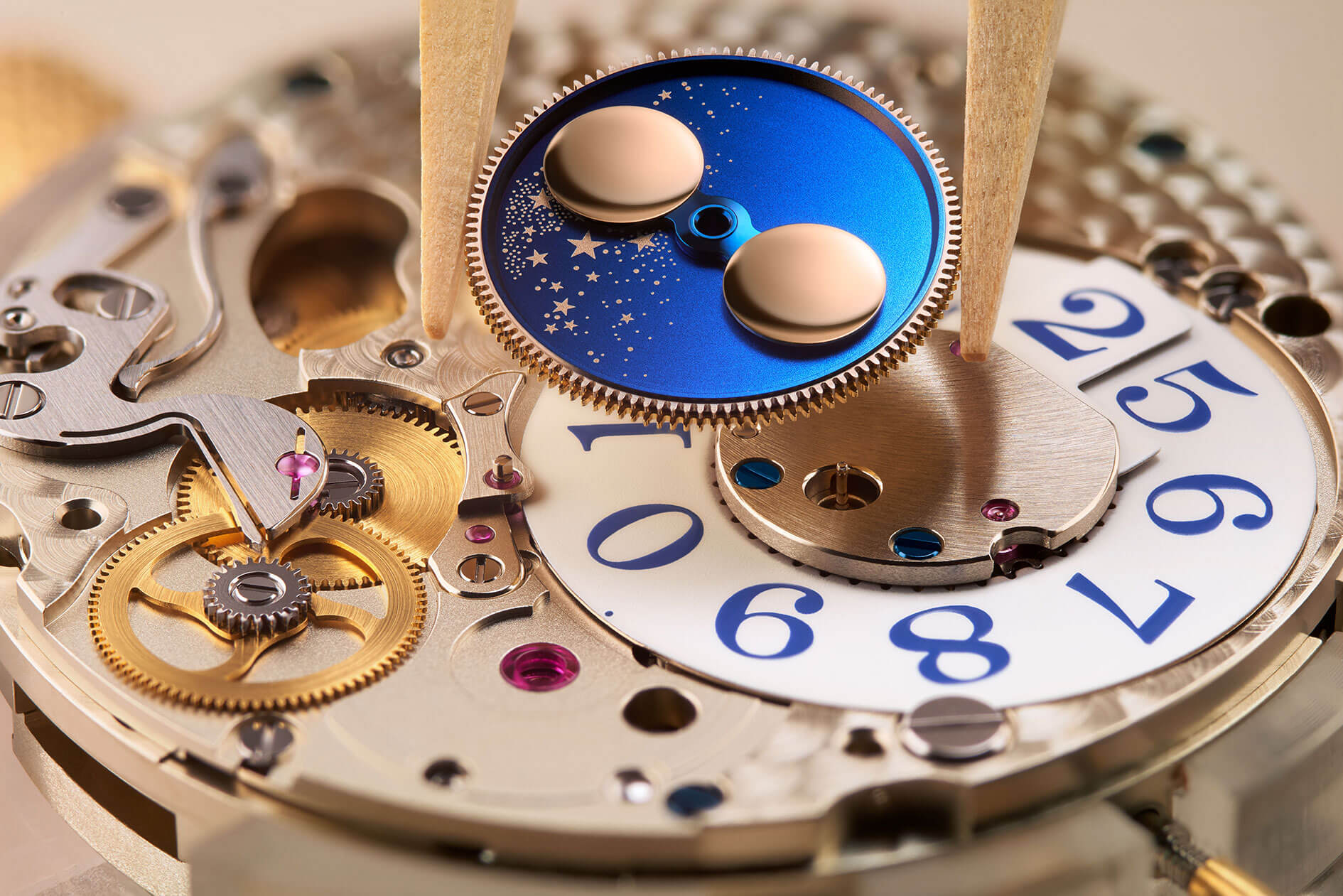
Let’s get down to the movements. There isn’t enough space here to list them all, but they are crucial to the success of Lange watches, in addition to the very unique look of many Lange models.
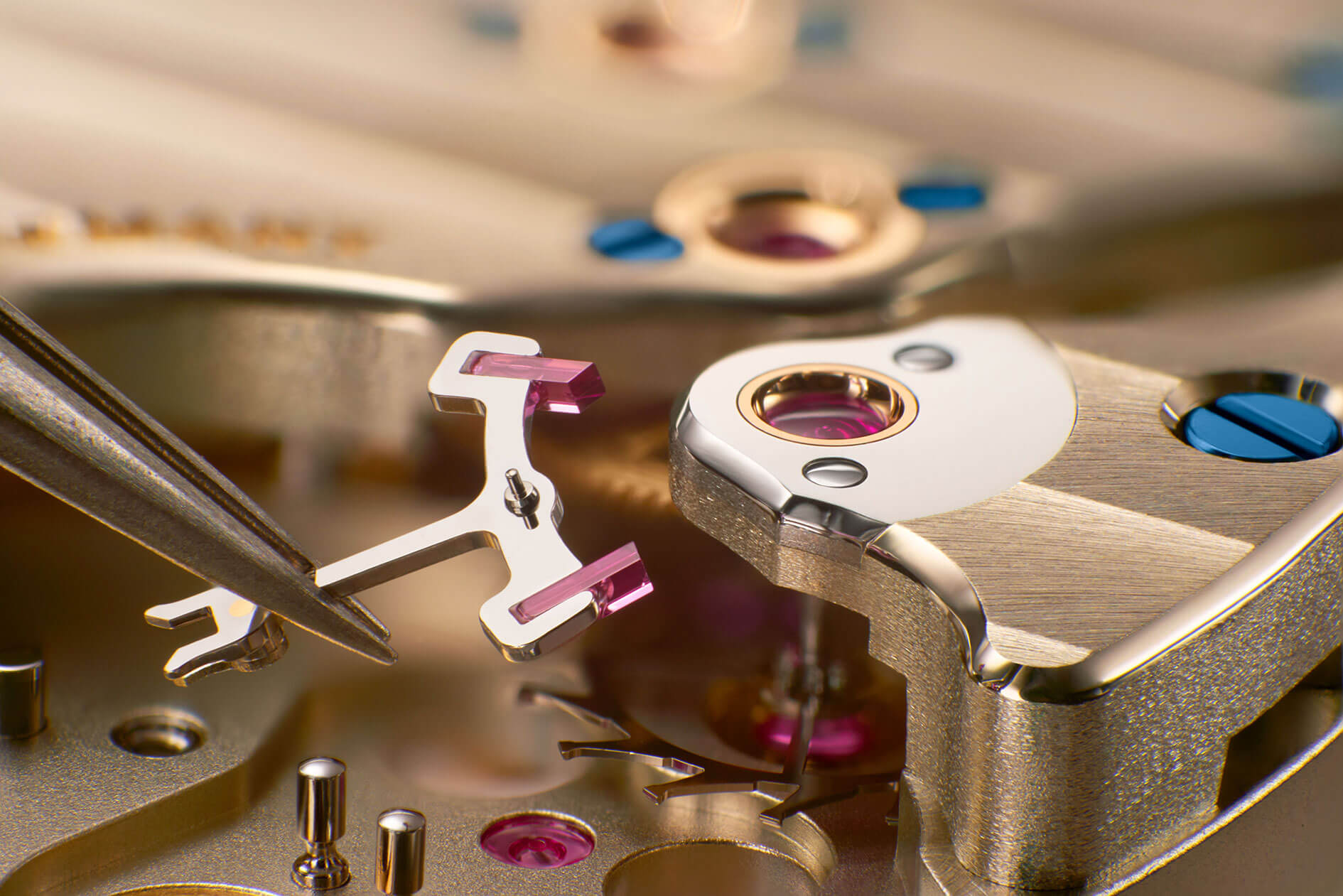
Let’s address the fundamental question: How are the Lange manufacture movements created and what is the philosophy behind them?
A very special achievement: Every Lange movement receives its own balance spring
All calibres since 1994 already possessed essential features of today’s Lange movements, except for one: the Lange balance spring. Since 2003, balance springs have also been produced in-house in Glashütte—a highly complex process that only a handful of other manufactures master at all. Their development took eight years, placing the small manufacture, which produces an estimated 5,500 watches per year, in the exceptional position of being able to create springs optimised for every type of movement. And this development, of course, also has historical significance.
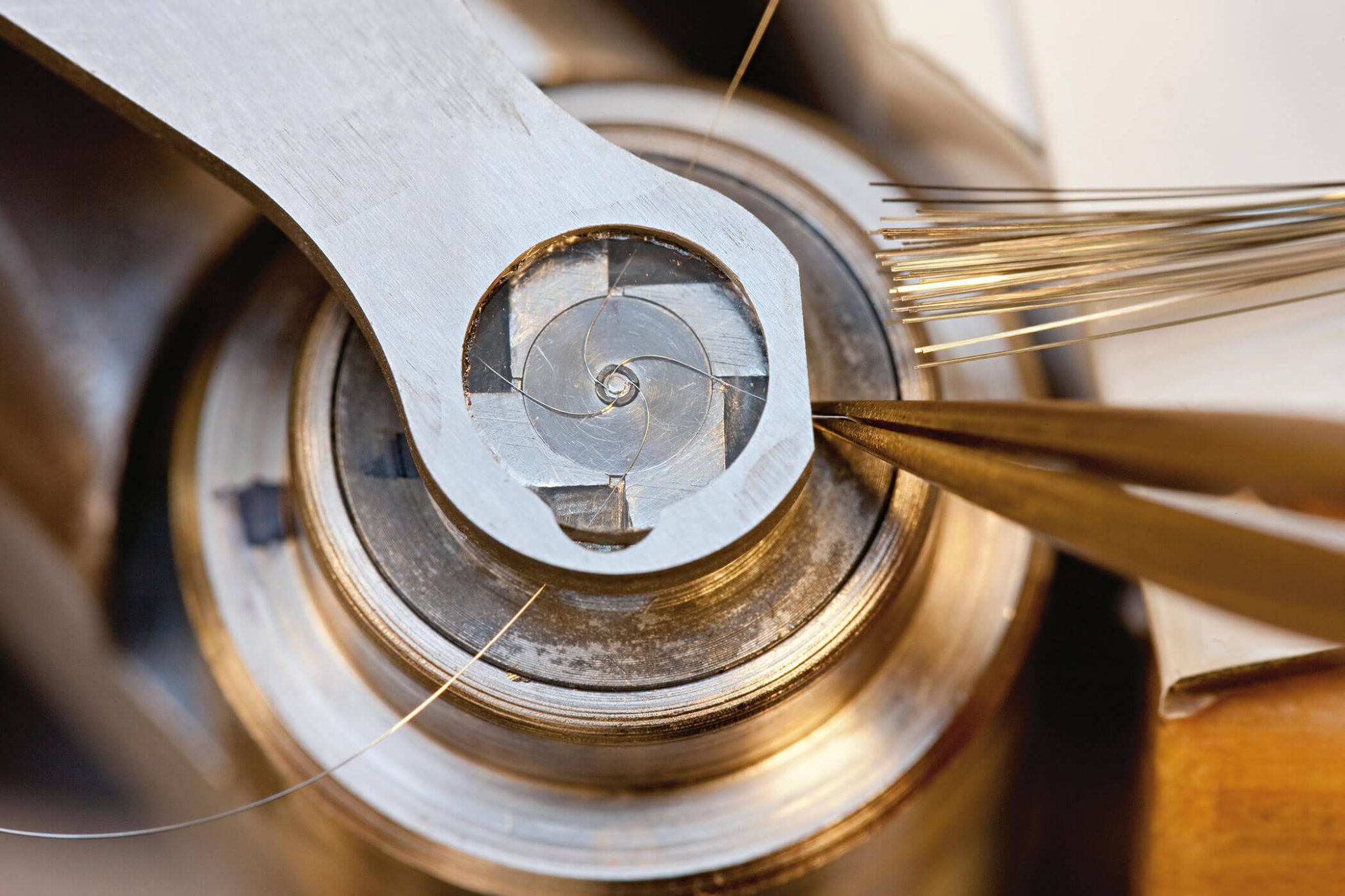
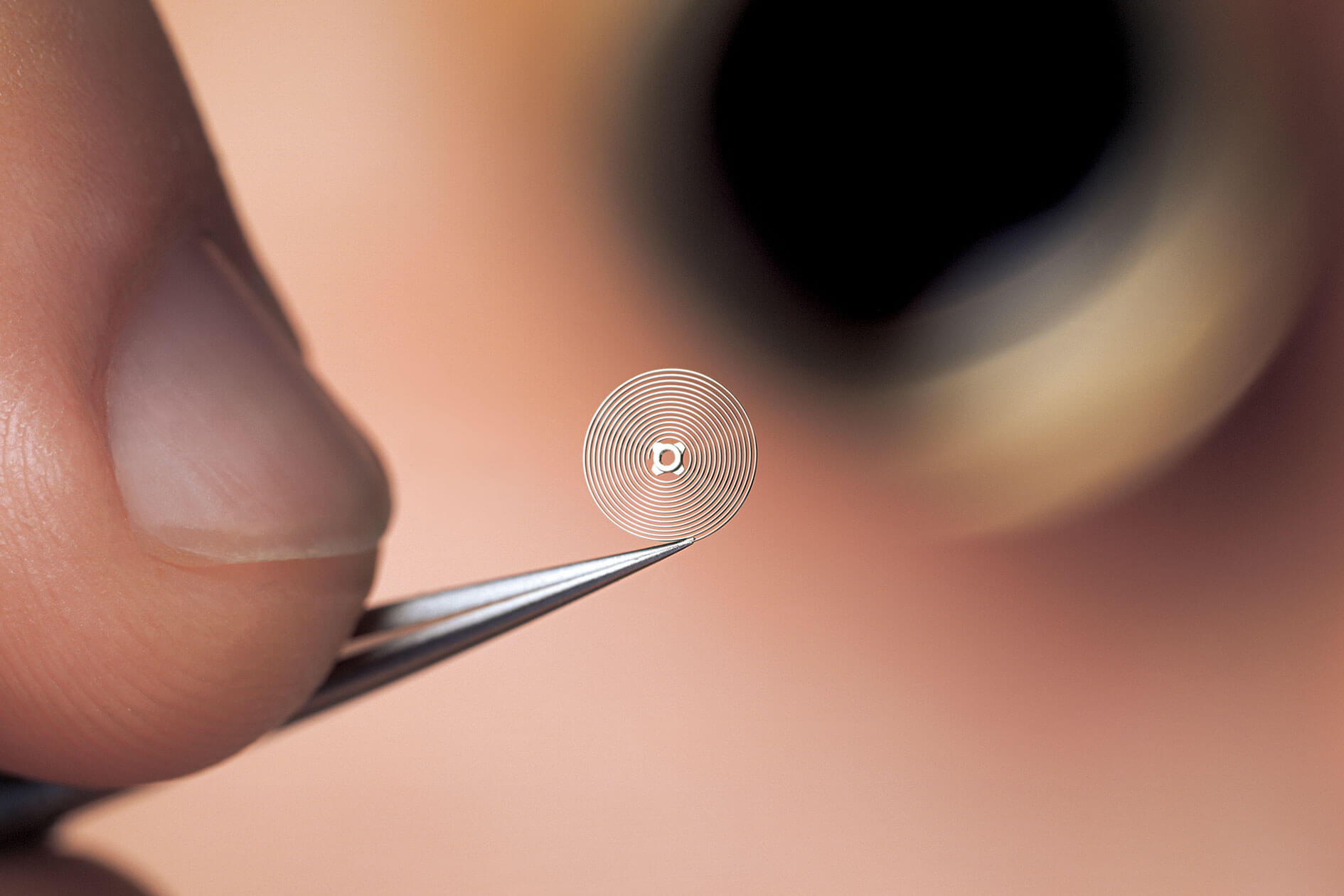
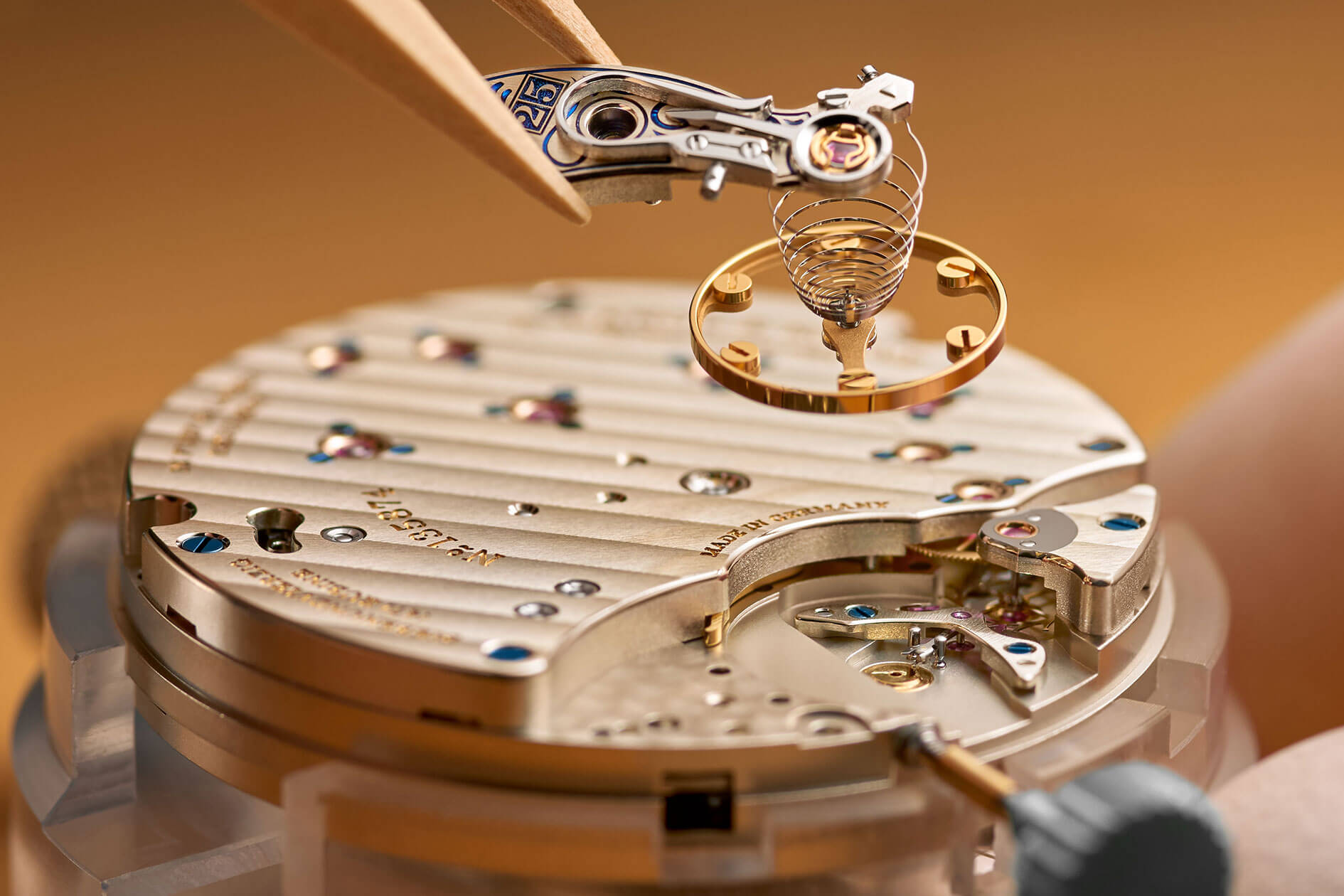
The Great Innovator: Richard Lange
Richard Lange, the firstborn son of the company’s founder, Ferdinand Adolph Lange, not only provided decisive impetus for the advancement of fine watchmaking through numerous inventions. His most important discovery can still be found in almost all high-quality mechanical watches today: the addition of beryllium as an alloy component for watch springs. Richard Lange patented this invention in 1930, which at the time triggered a surge in precision in fine watchmaking. This at least provides an answer as to why silicon springs are not currently a topic for A. Lange & Söhne. Another answer is vividly provided by chief developer Anthony de Haas in our exclusive interview.
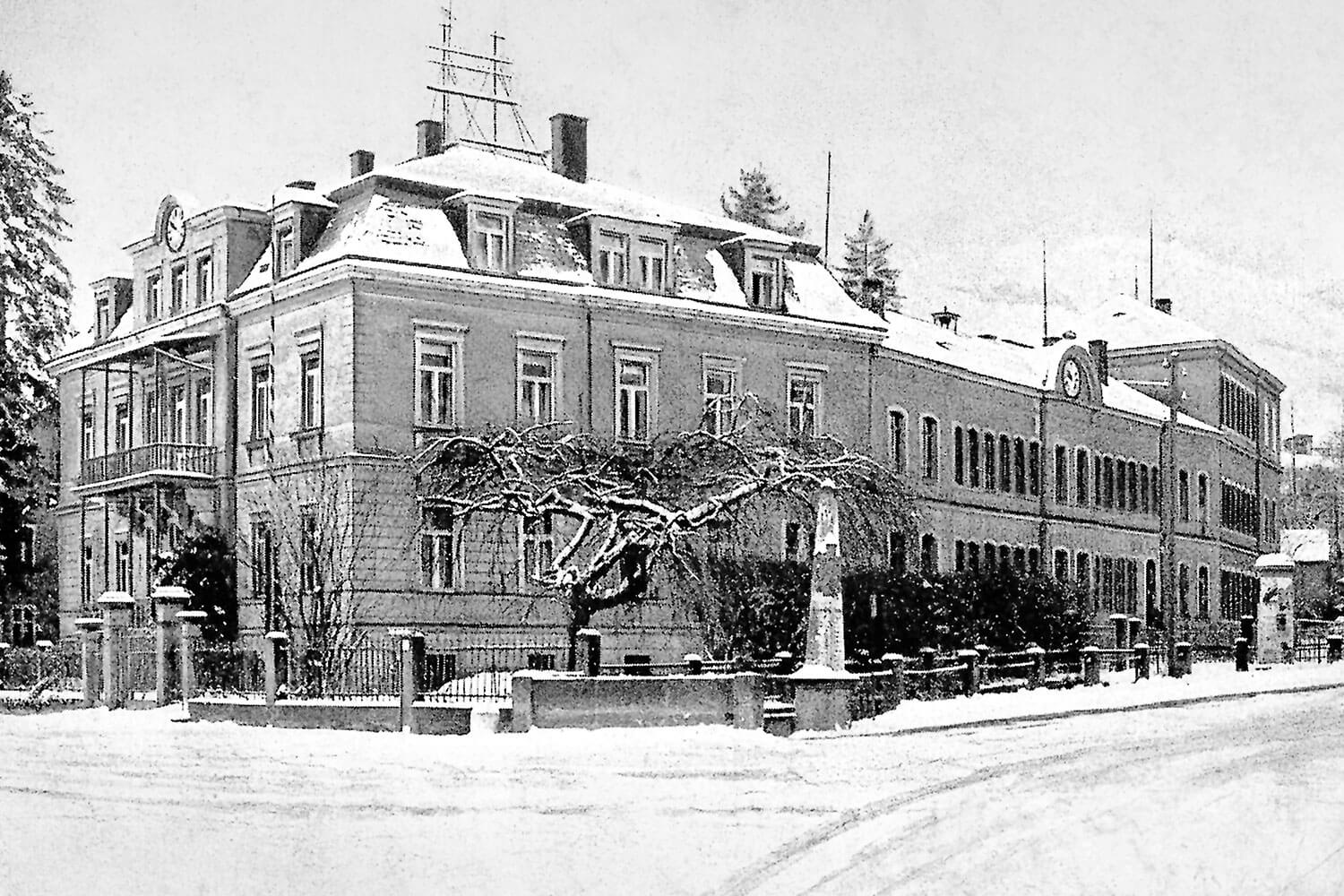
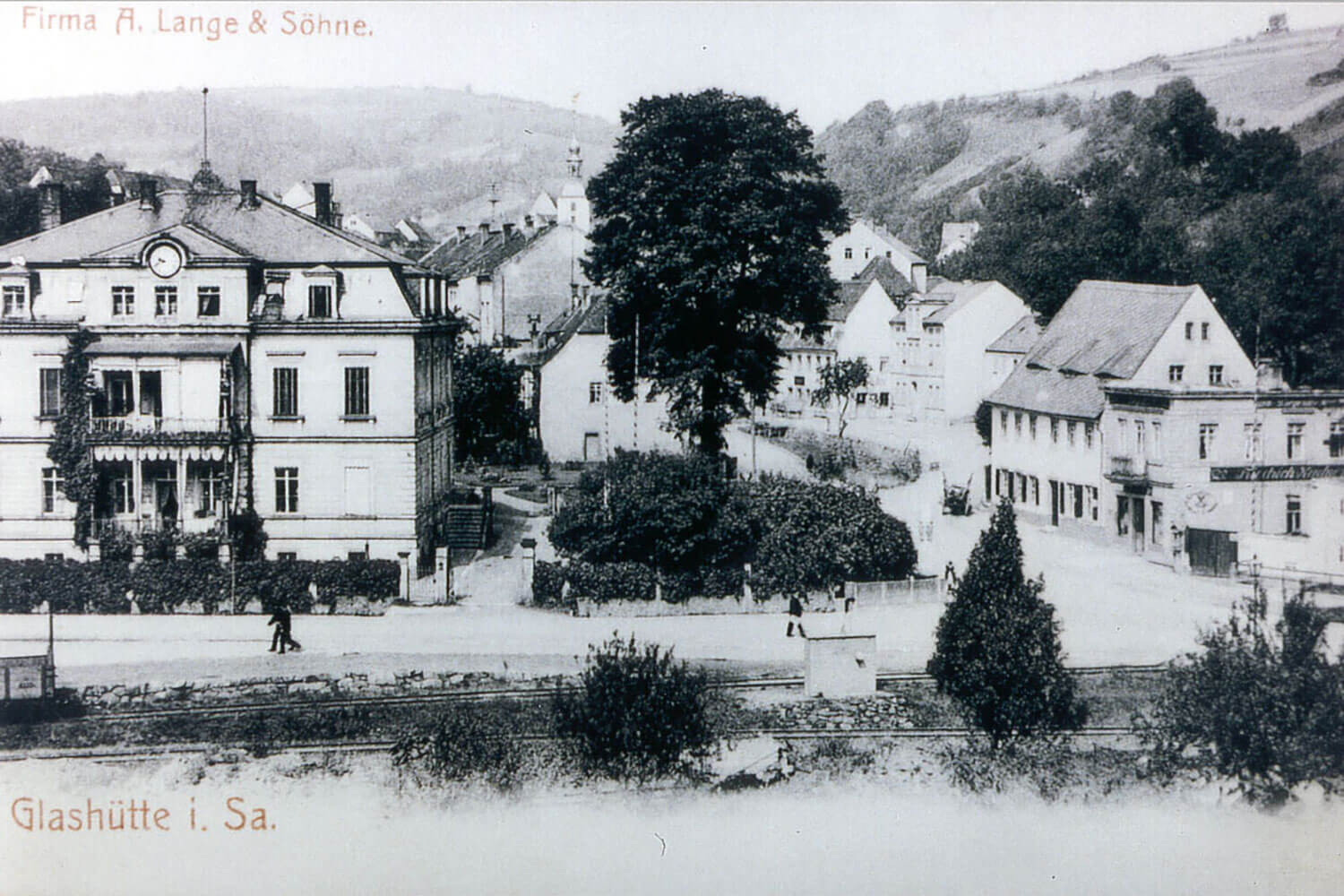
The old family estate from 1920 (left) and A. Lange & Söhne headquarters, postcard, 1920 (right)
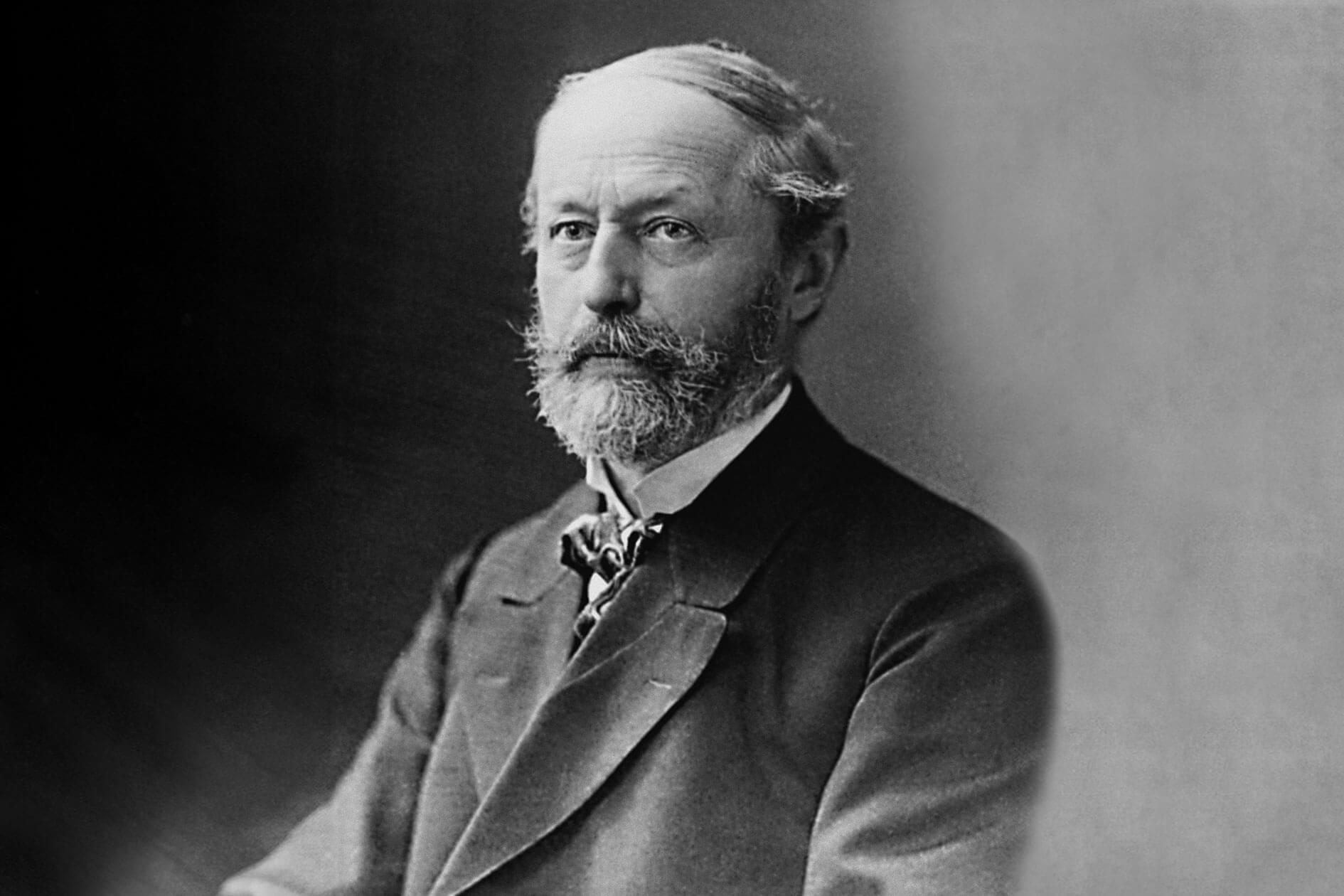
Richard Lange
The most important distinguishing features of the movements from A. Lange & Söhne
In addition to the exceptional craftsmanship of all parts in the workshop, even those one cannot see, the hallmark of movements from Glashütte is, of course, the three-quarter plate, which appears in almost every movement except for some automatic movements. The second characteristic is the hand-engraved balance cock. Both features are once again borrowed from the era of Lange pocket watches. When you look at the complicated movements like those of the chronographs, you can always see this three-quarter plate through the other modules. Even in movements with two complications such as the perpetual calendar and the chronograph, the movement with this plate design lies in the middle like a sandwich between the two modules.
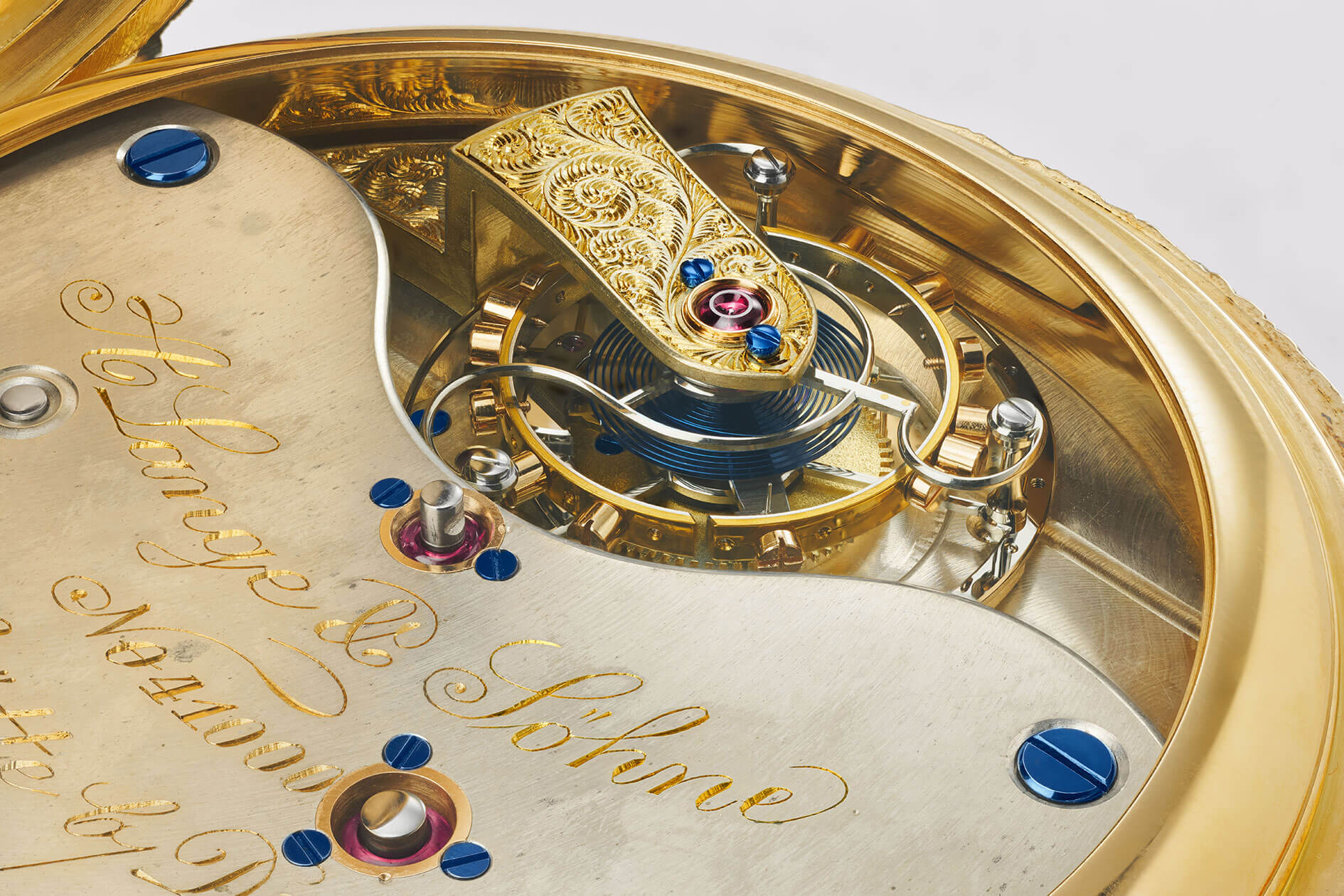
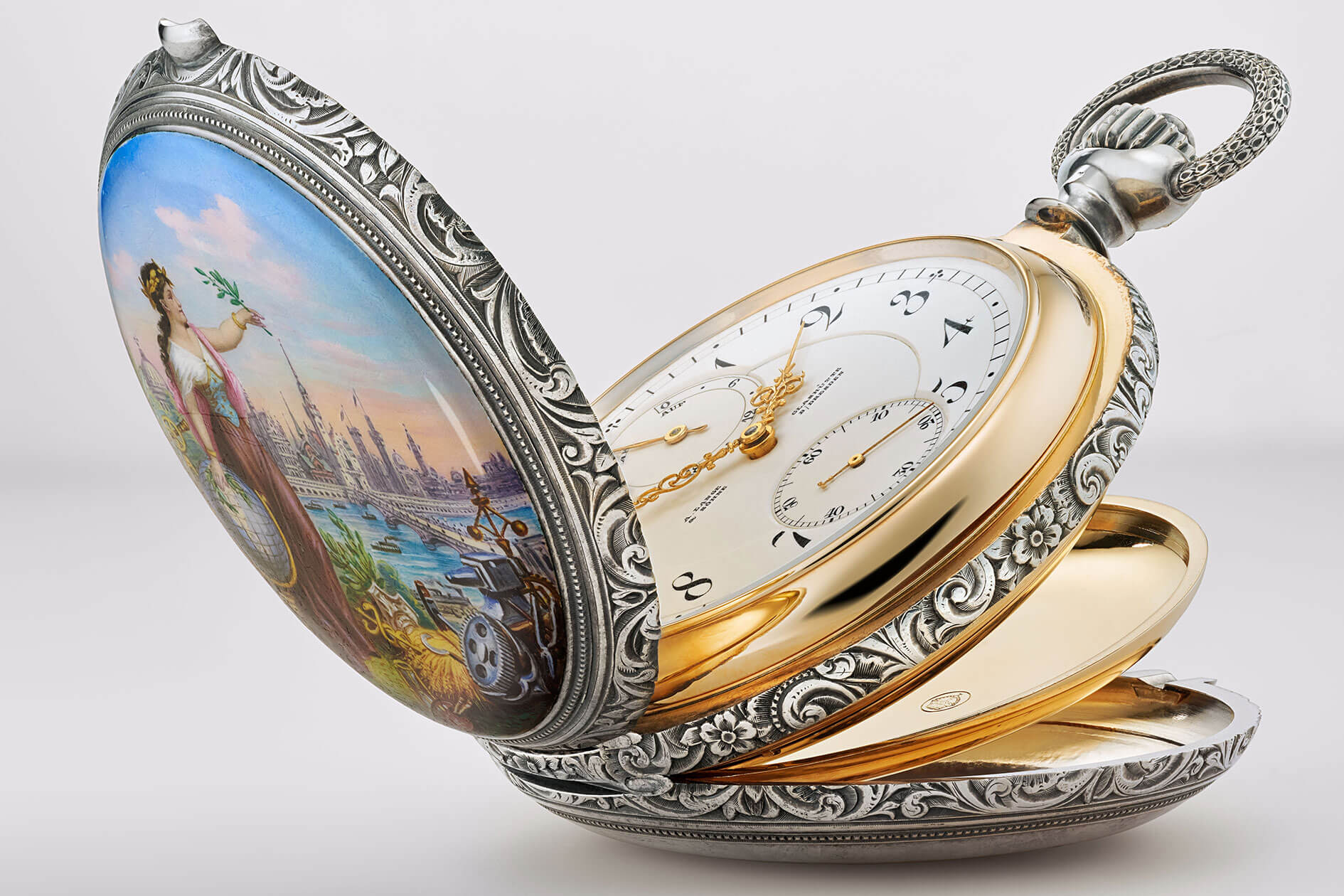
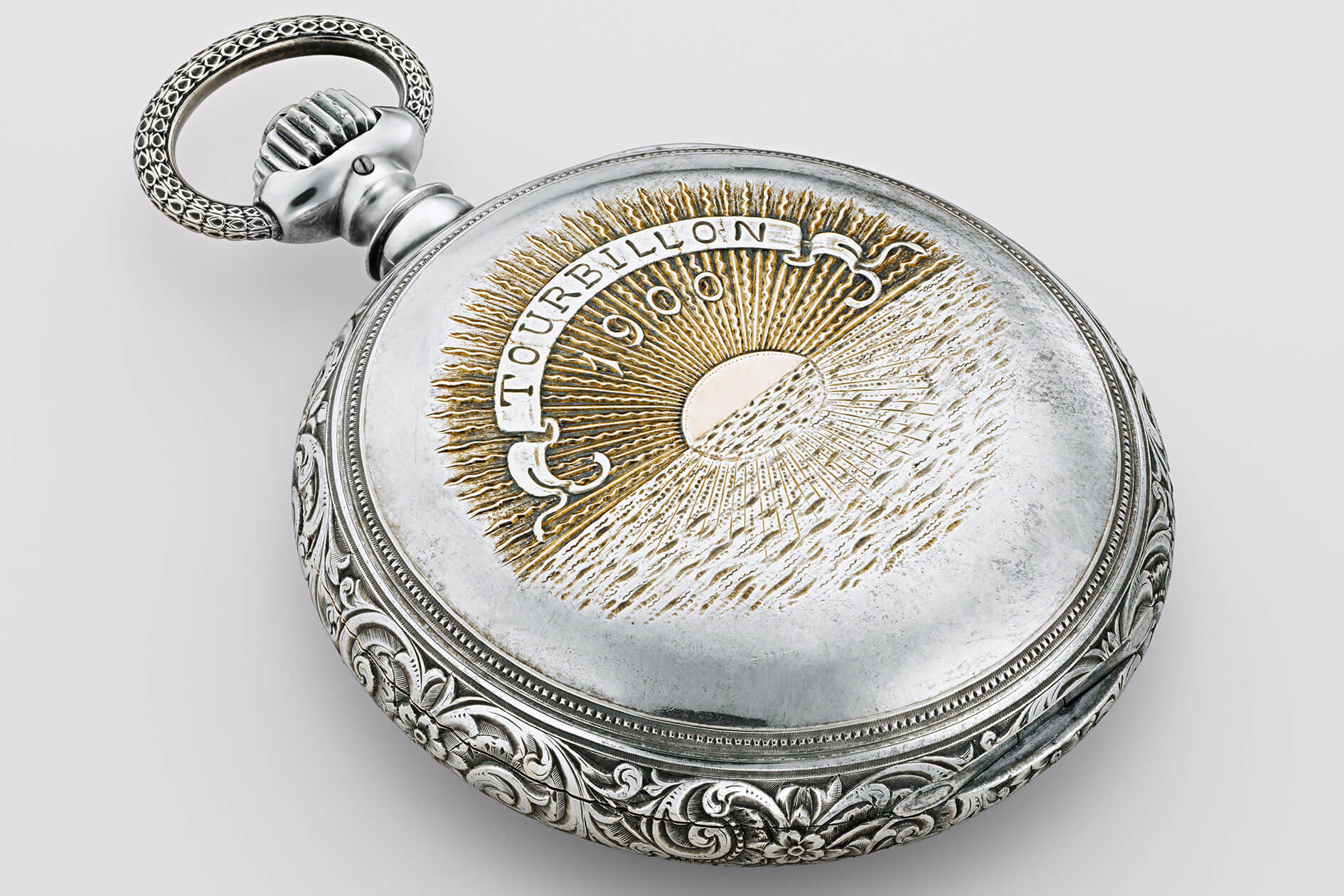
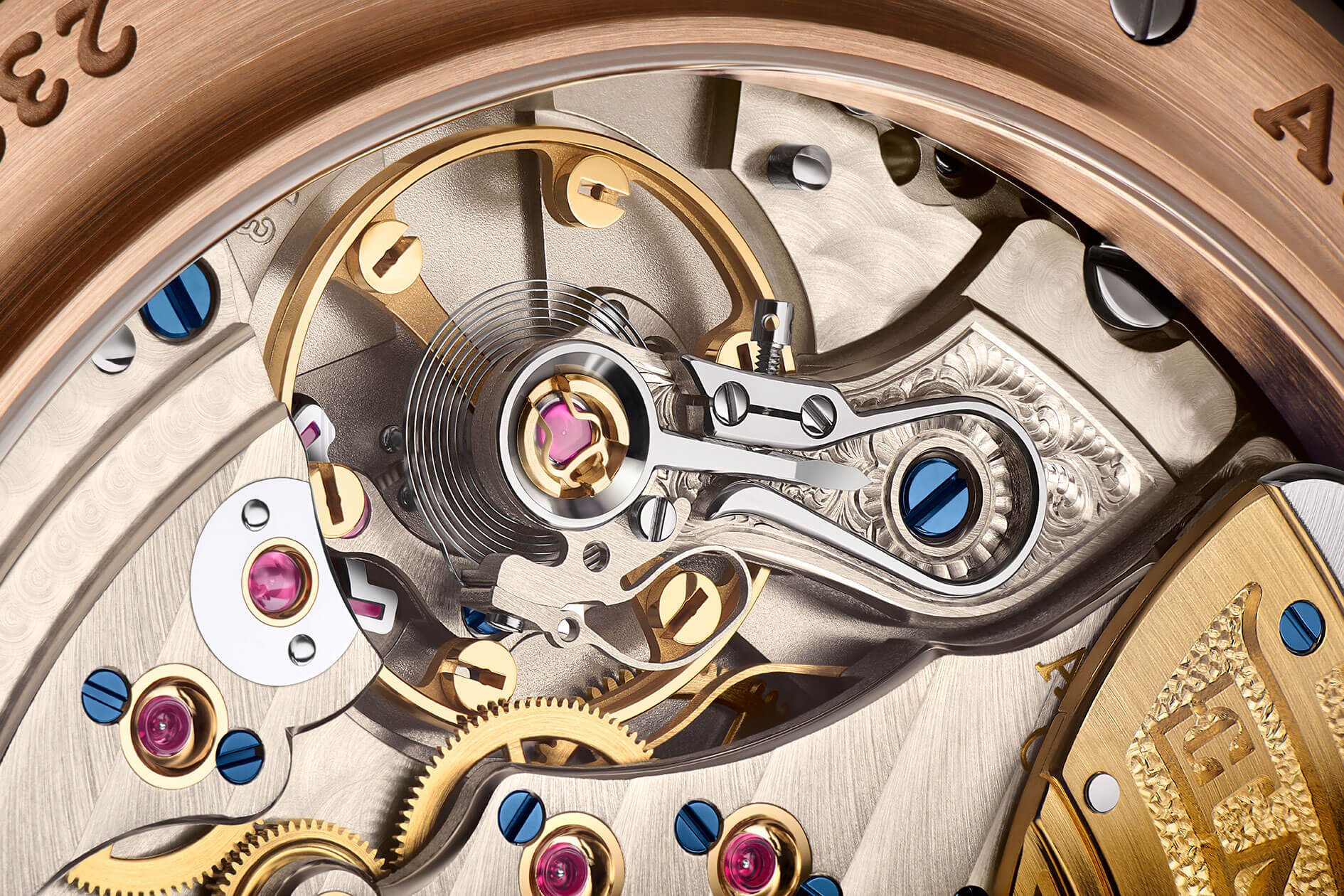
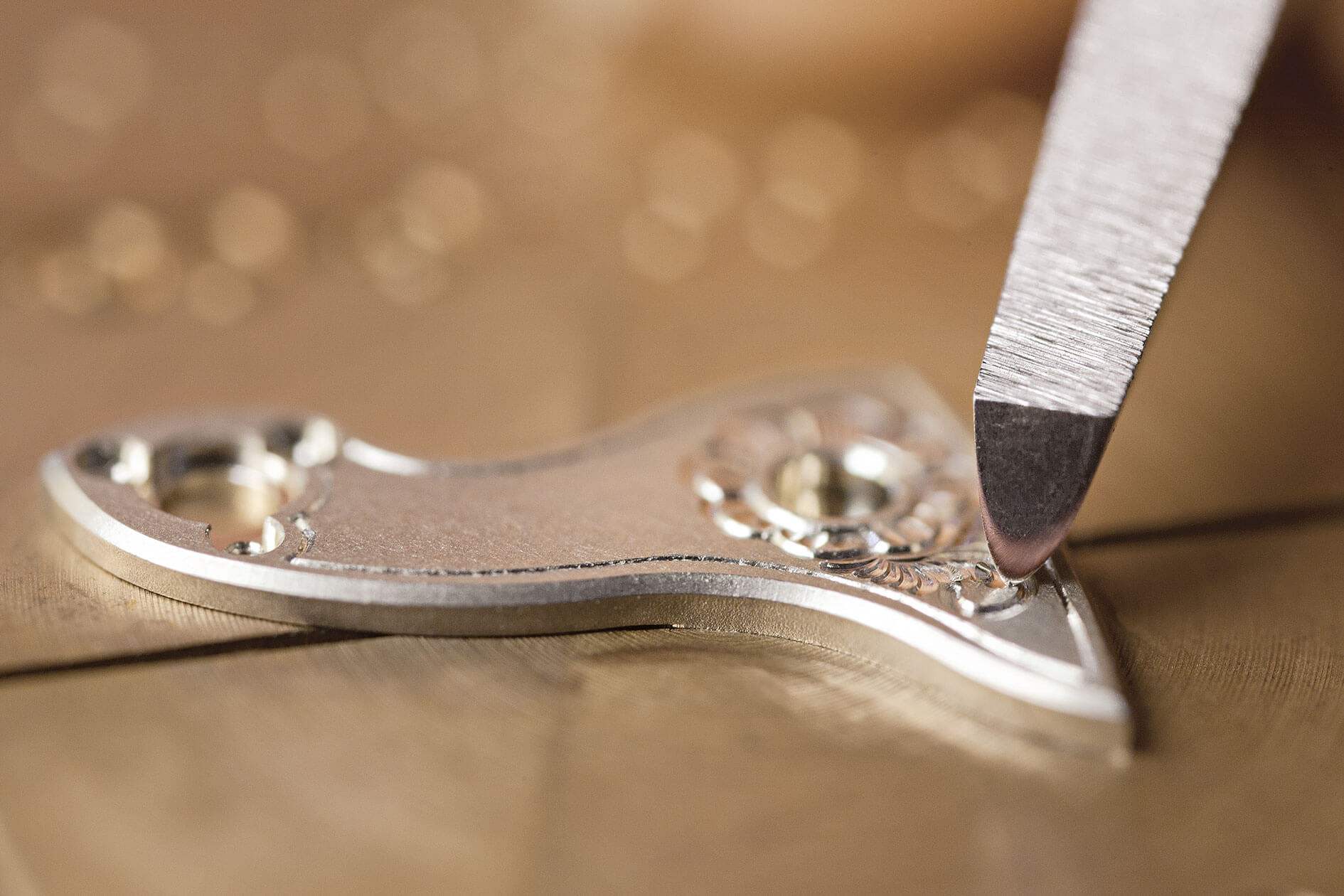
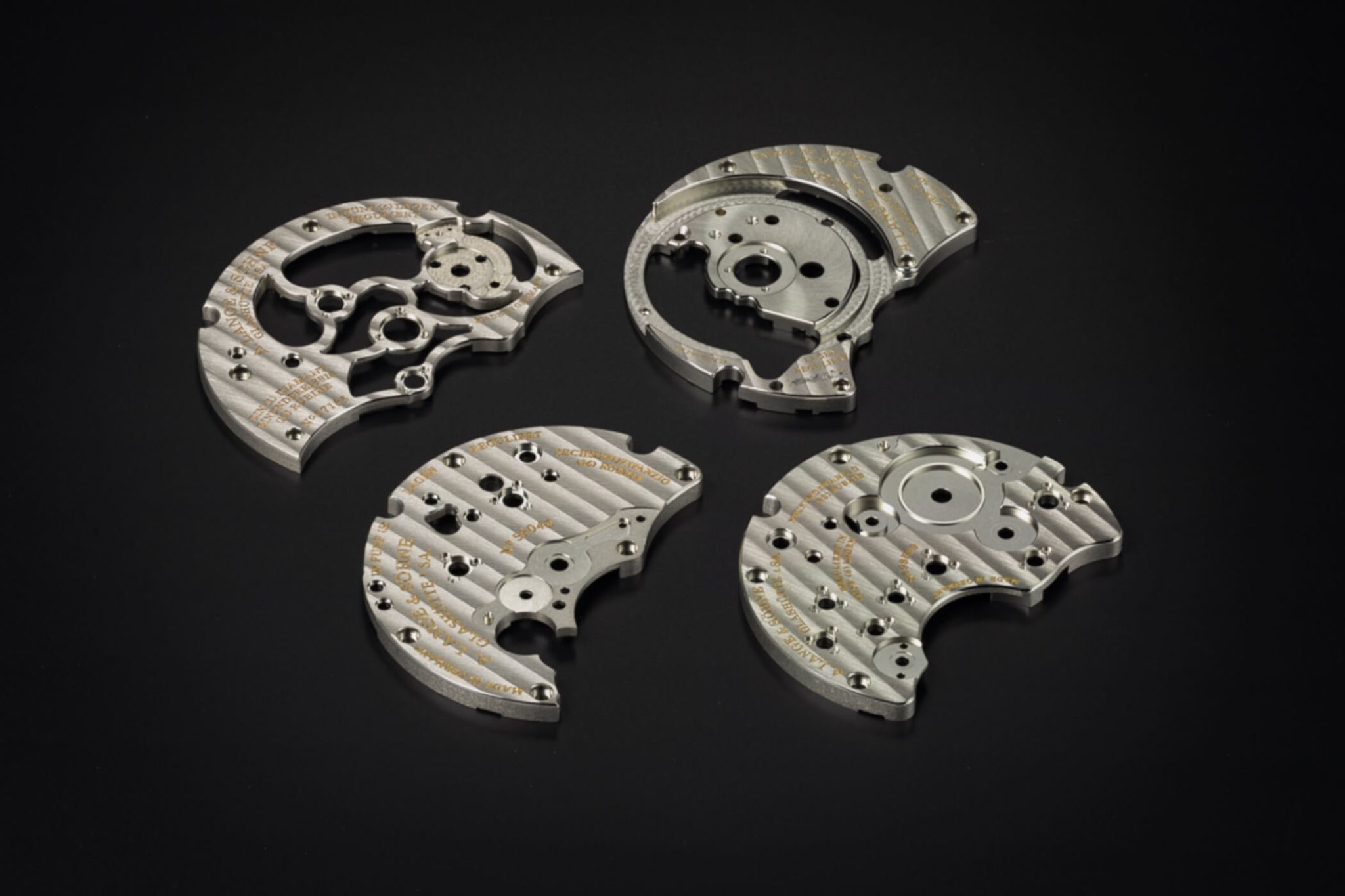
Why the Lange does not always show the tourbillon
The fact that certain functions such as a tourbillon are sometimes only visible on the back of the movement or on the dial has to do with the initially described Double Track Approach and is by no means arbitrary. Therefore, at Lange, both variants are available here as well. In the innovative Lange 1 Tourbillon Perpetual Calendar, the tourbillon is only visible on the back, just like in the Datograph Perpetual Tourbillon, while in the classic “Pour le Mérite” models, the tourbillon mechanisms are prominently displayed through an aperture in the dial.
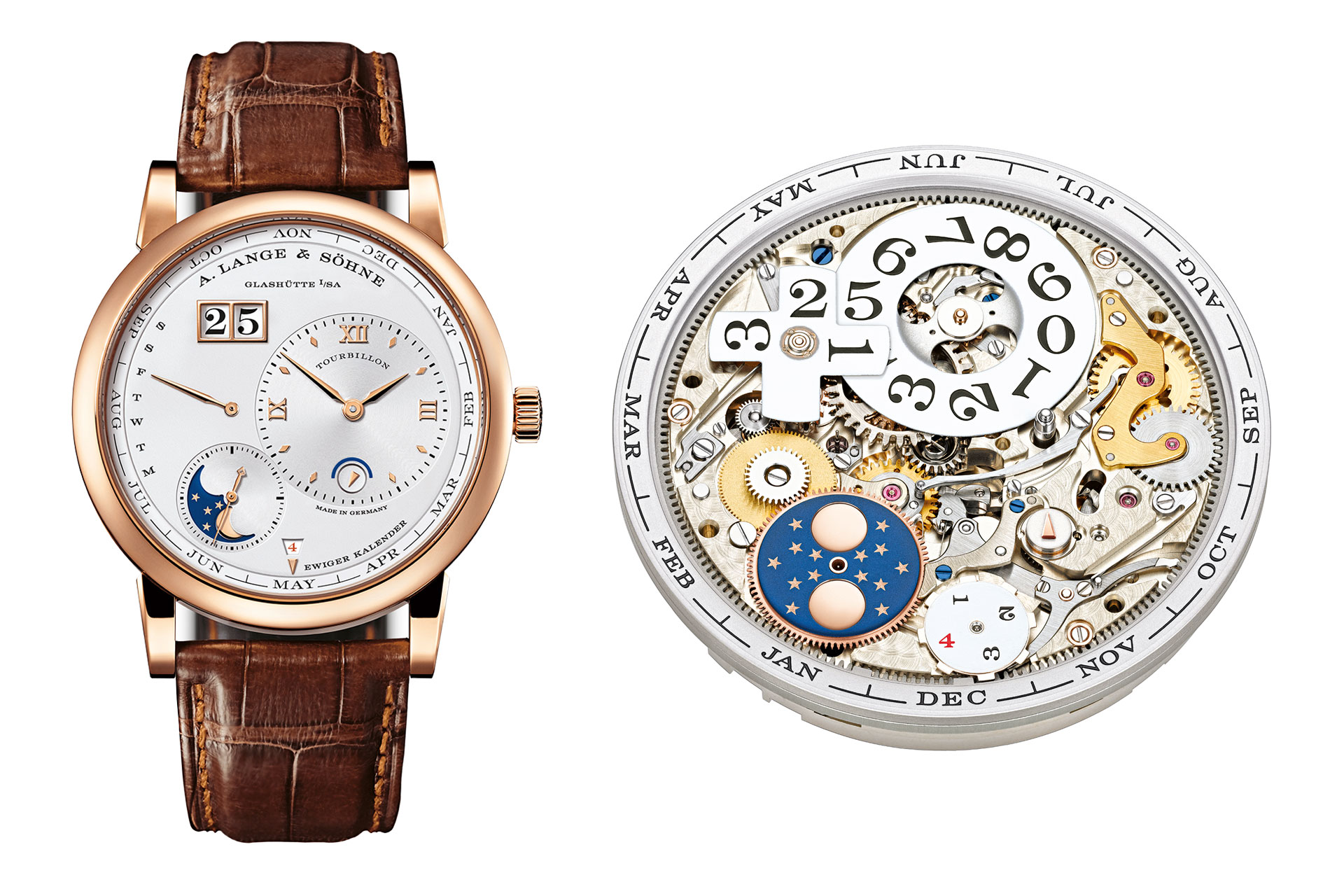
Lange 1 Tourbillon Perpetual Calendar, calibre L082.1
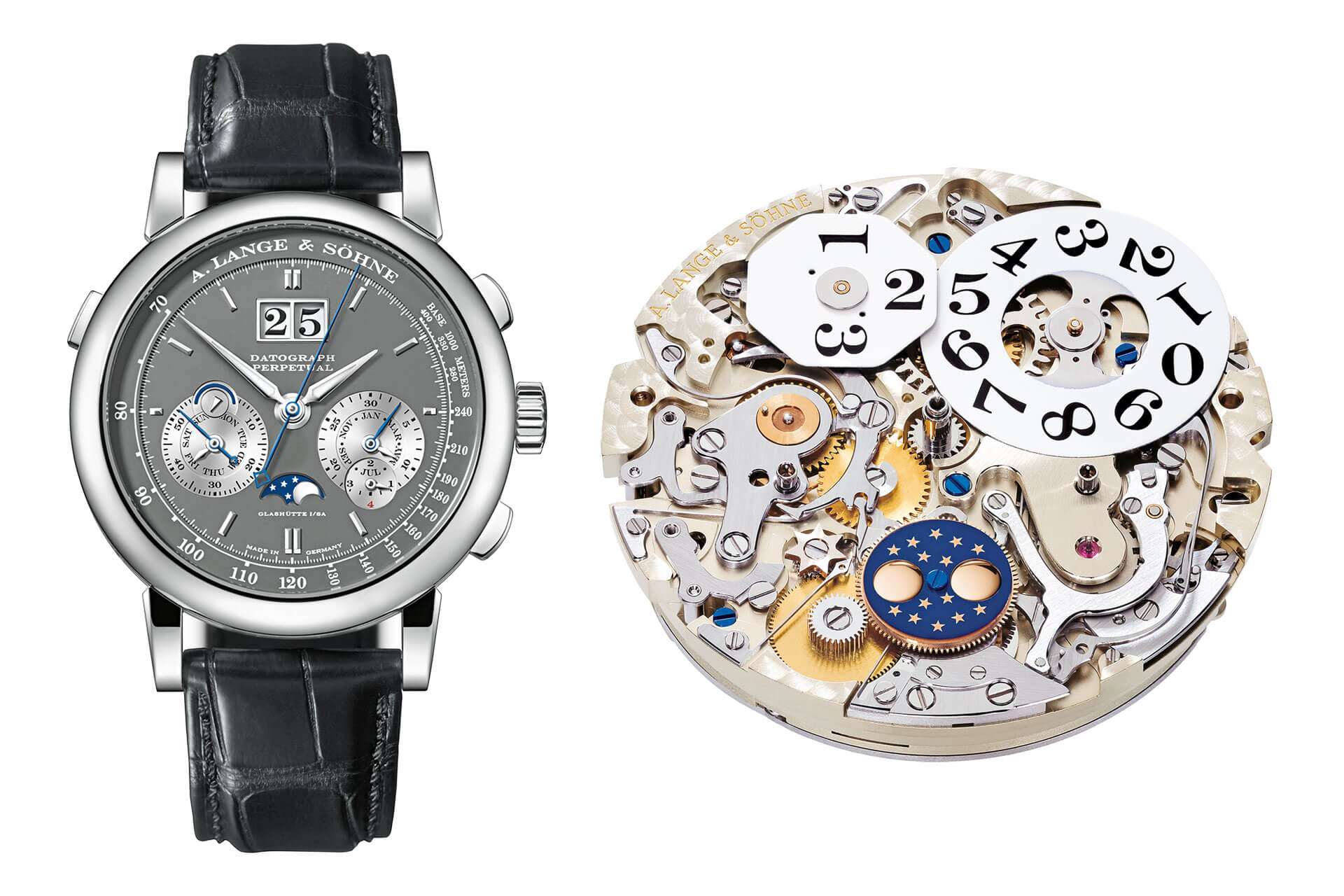
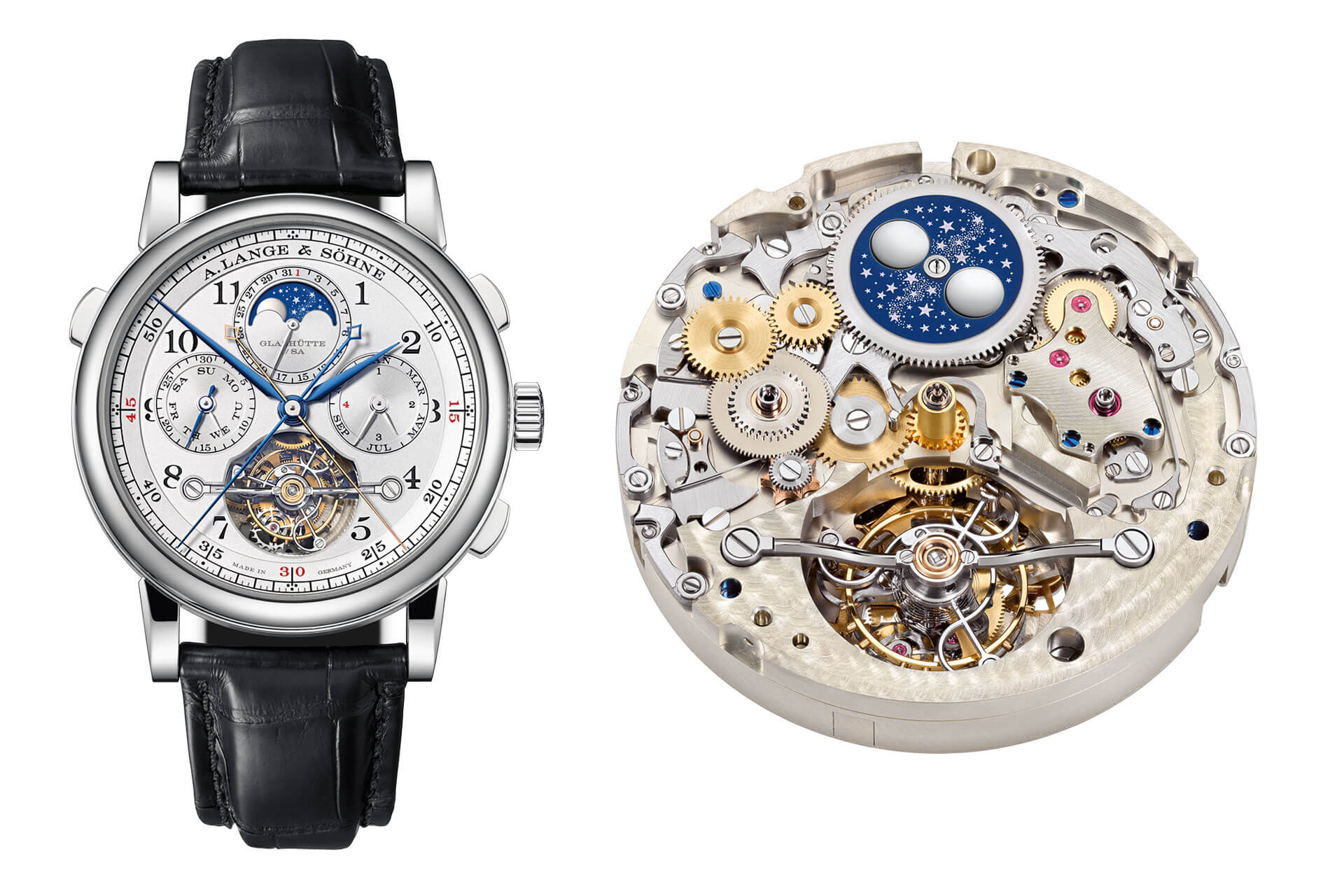
Datograph Perpetual Tourbillon, calibre L952.1 (left)
Tourbillon Pour Le Mérite, calibre L133.1 (right)
Nickel silver – a traditional material at Lange
All bridges and frame parts at A. Lange & Söhne have been made from German silver since their inception. This alloy, composed of copper, nickel, and zinc, emerged in the 19th century and was once commonly used, though it is now very rare, with only Moritz Grossmann joining A. Lange & Söhne in its use in Glashütte. This material is relatively torsion-resistant. In Lange’s early pocket watch movements, plates made from this material were finely grained and gilded. Nowadays, Lange foregoes an electroplated coating and instead takes advantage of one of this alloy’s benefits: it develops a gold-coloured patina that protects the surface and is appreciated by collectors.
How elaborately are the movements of A. Lange & Söhne decorated by hand?
Gold chatons, blued screws, polished and brushed surfaces, as well as hand-engraved balance cocks are features shared by all 72 of the manufacture’s in-house calibres. The principle sounds simple, but the execution is all the more elaborate: Lange always decorates the visible side of the three-quarter plate with a stripe pattern called the “Glashütte ribbing.” It resembles the well-known Geneva stripes but appears somewhat more three-dimensional. The ribbing is done before the second assembly to ensure a flawless surface. The movement plate is adorned with circular graining on the dial side. This refers to the small, overlapping circular grinds produced by a rotating abrasive spindle.
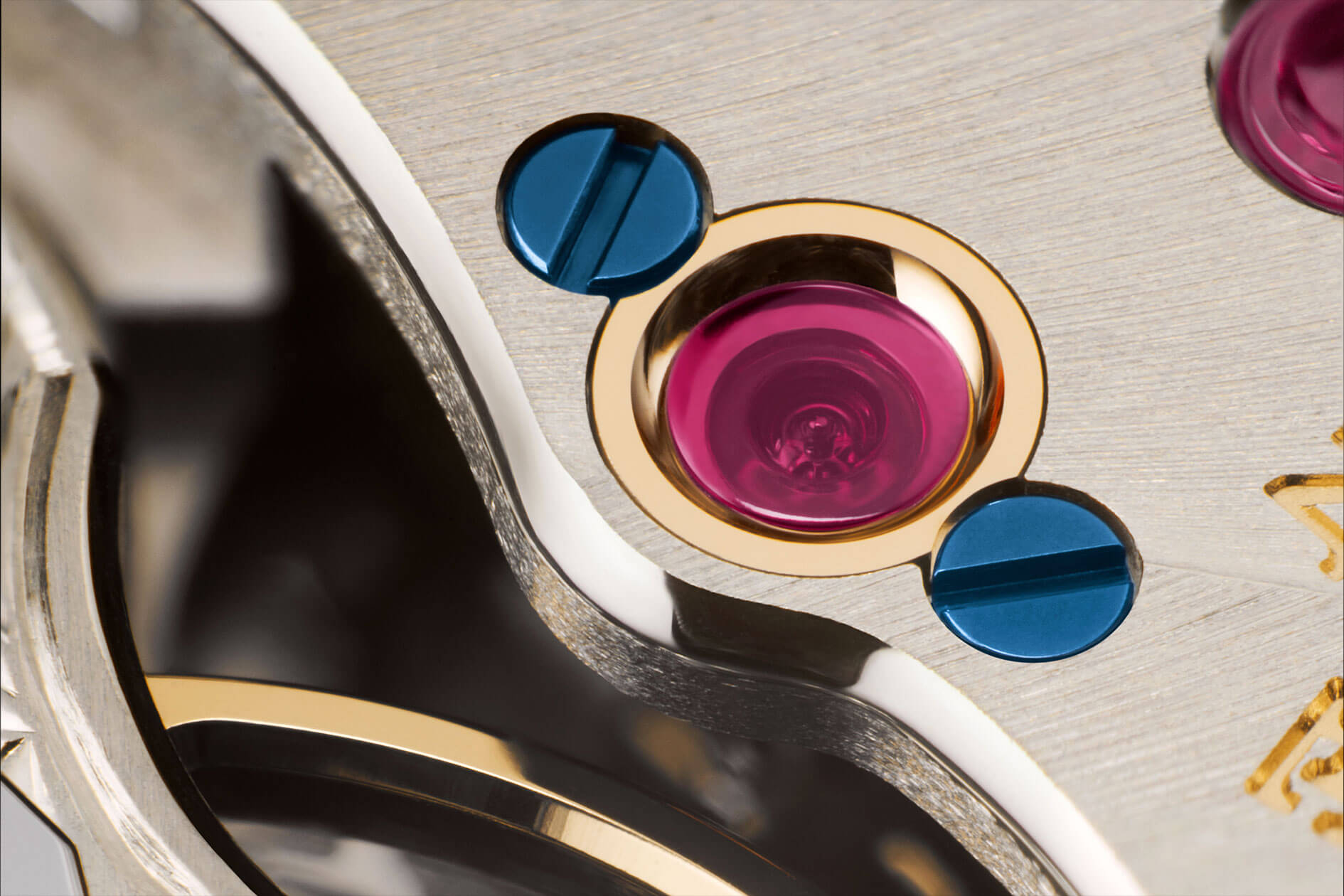
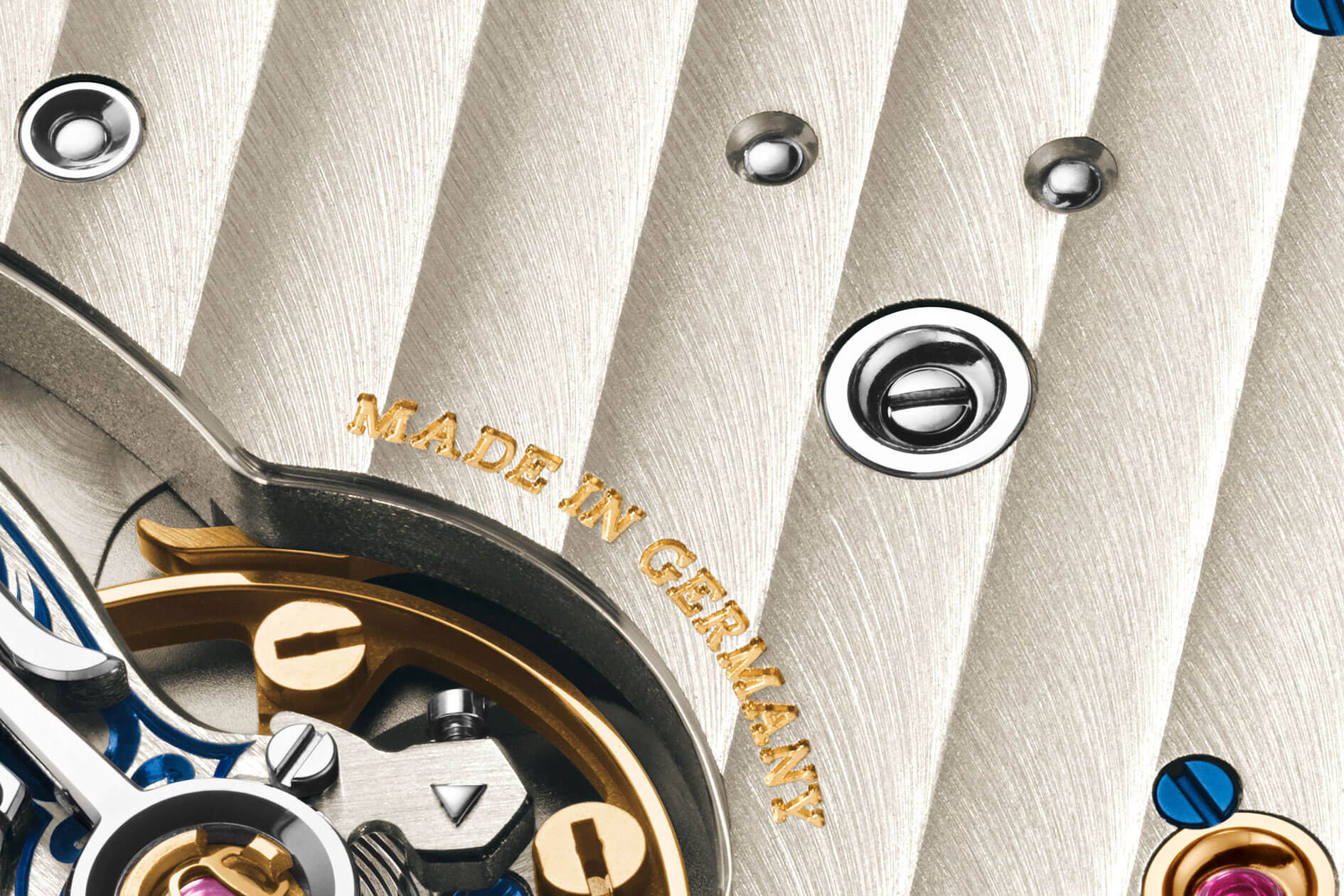
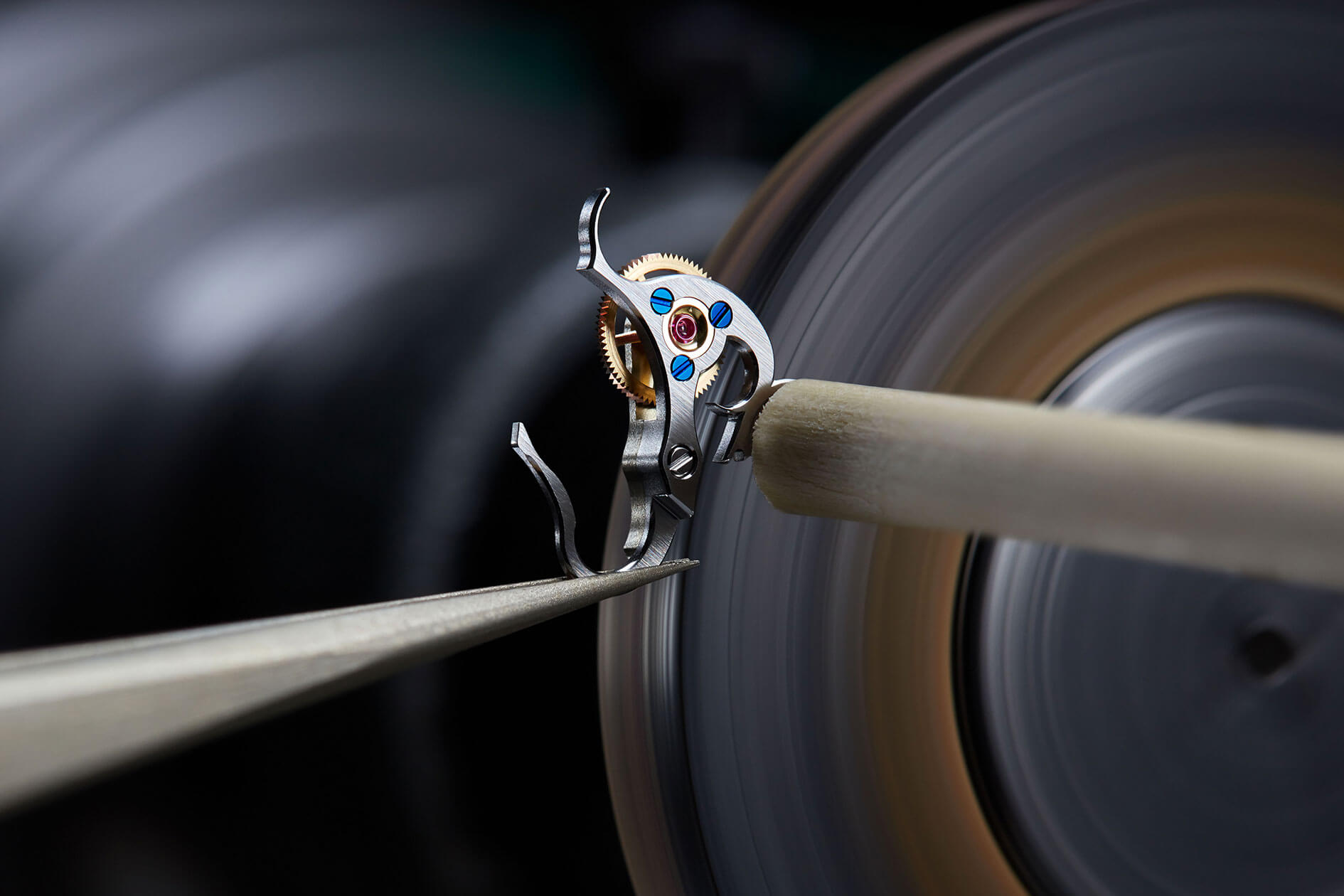
Double assembly – elaborate to perfection
Another similarity is this double assembly, which all models receive. It is elaborate, and it only exists in this form at A. Lange & Söhne. During the second assembly, the hand-blued screws are used and the gold chatons are polished, as they want to avoid any processing traces being visible through the sapphire crystal case back. The double assembly applies to all movements at A. Lange & Söhne, not just those with complications.
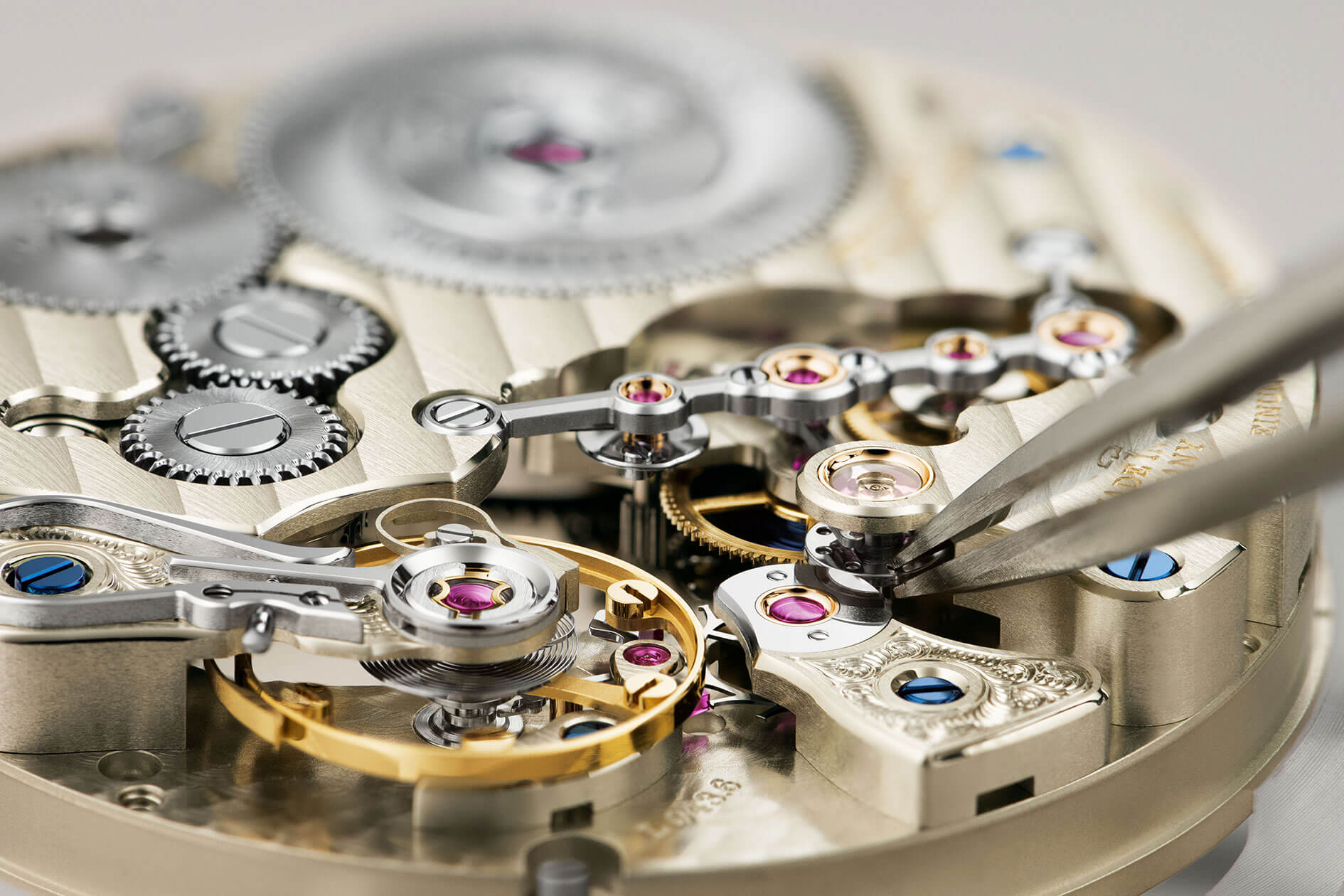
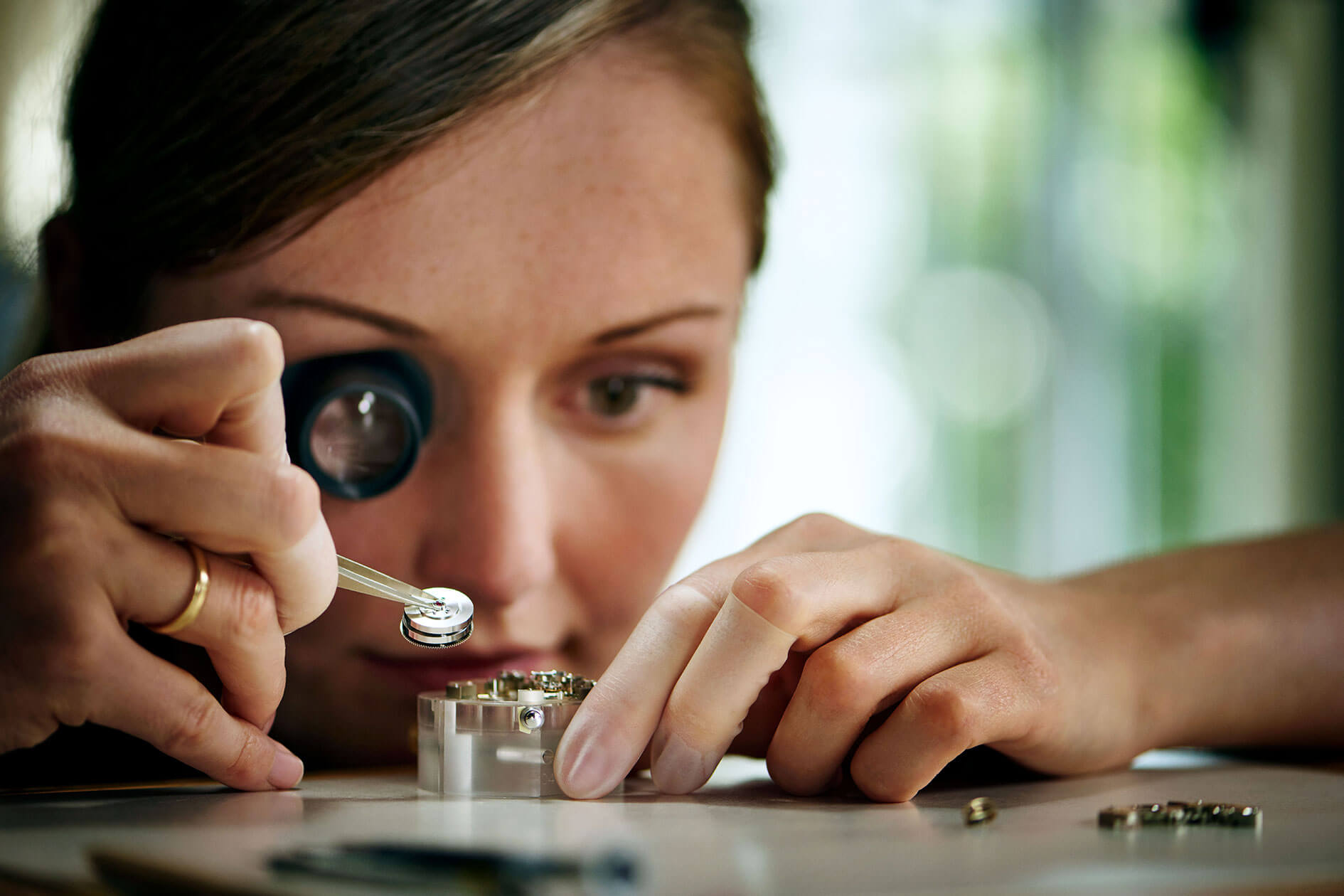

The most important models one should know from A. Lange & Söhne
Before delving into the details of the development of the works, here are the most important watches that every Lange fan should know: the Lange 1 introduced in 1994, which we already mentioned as a brand icon with a big date and decentralized dial, as well as the Tourbillon “Pour Le Mérite” with the first drive via chain and fusée in a wristwatch, aiming to immediately play again in the haute horlogerie league.


Then, of course, one should know the Datograph, the first in-house developed chronograph movement from 1999, followed by the Double Split with the first in-house balance spring in 2003. At the same time, its movement was the first watch equipped with a 30-minute split-second mechanism.

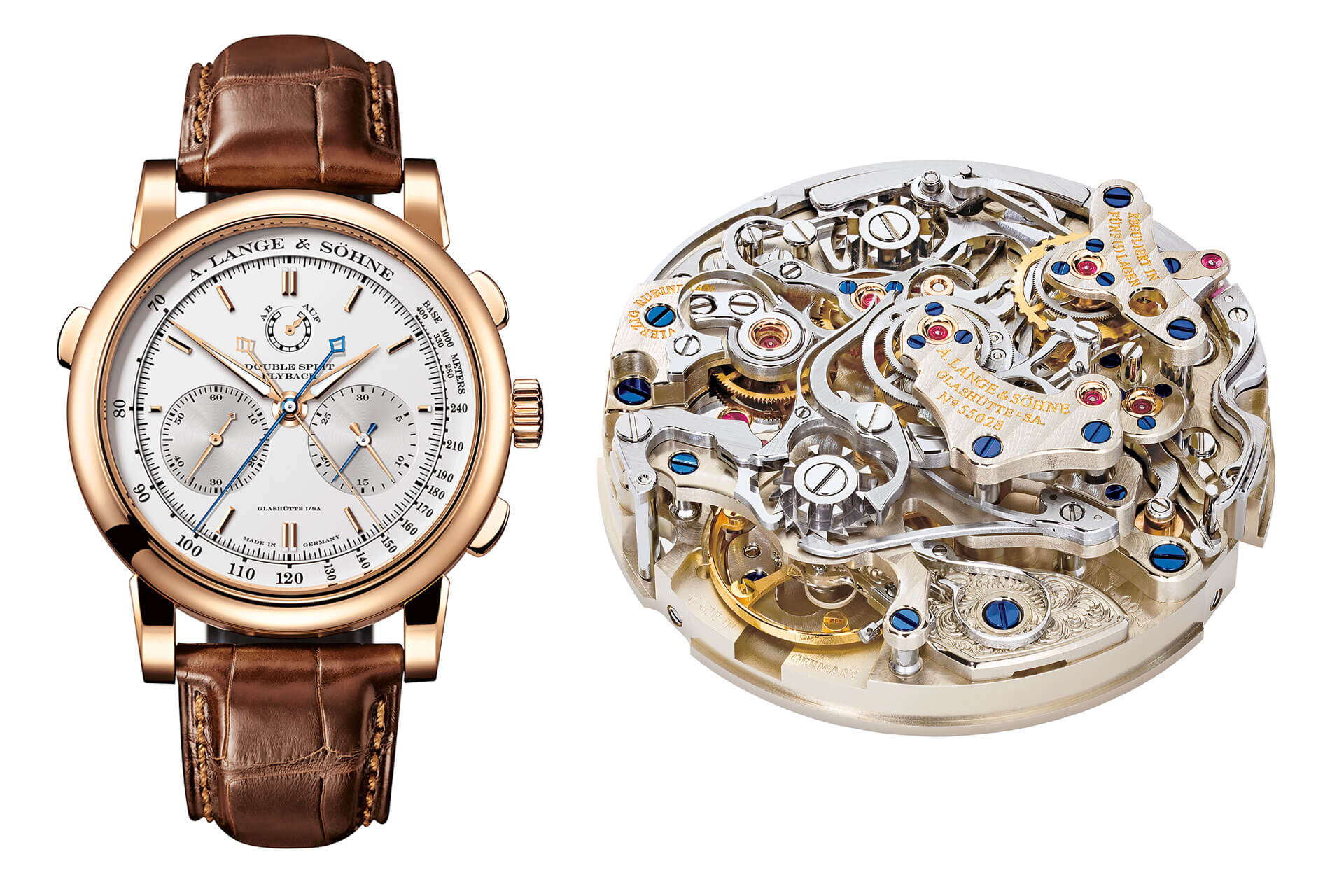
In 2009, Lange made a leap into the 21st century with the Zeitwerk, making a significant mark in the watch scene with its digital time display and numerous patents. With the introduction of the Grand Complication in 2013, A. Lange & Söhne once again entered the realm of minute repeaters, an area in which they had traditionally played an internationally significant role with pocket watches until their expropriation in 1948. With the first stainless steel watch in 2019, the Odysseus, Lange opened an entirely new chapter, without abandoning their commitment to fine watchmaking in the segment of sporty wristwatches.
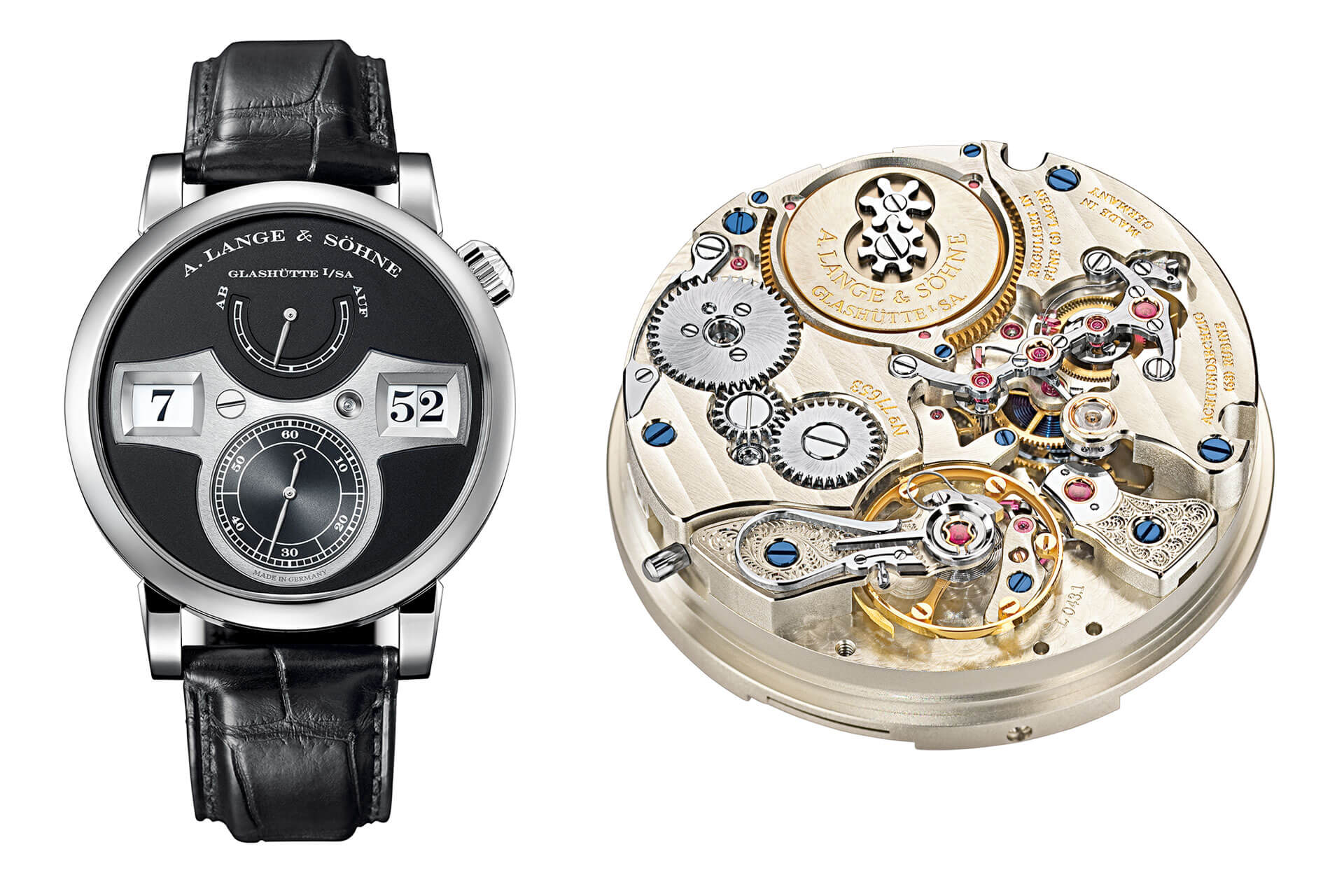
Zeitwerk, calibre L043.1
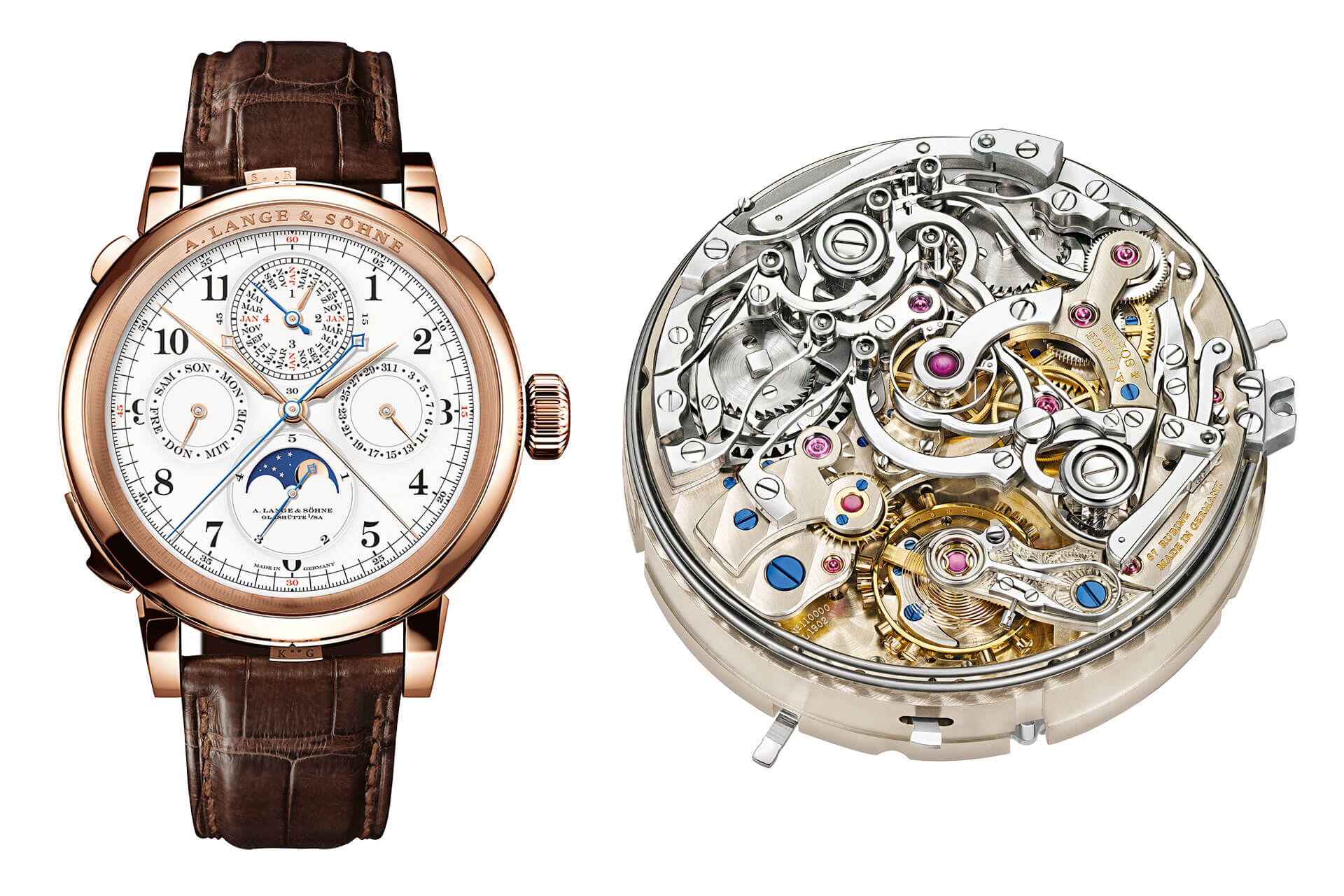
Grand Complication, calibre L1902
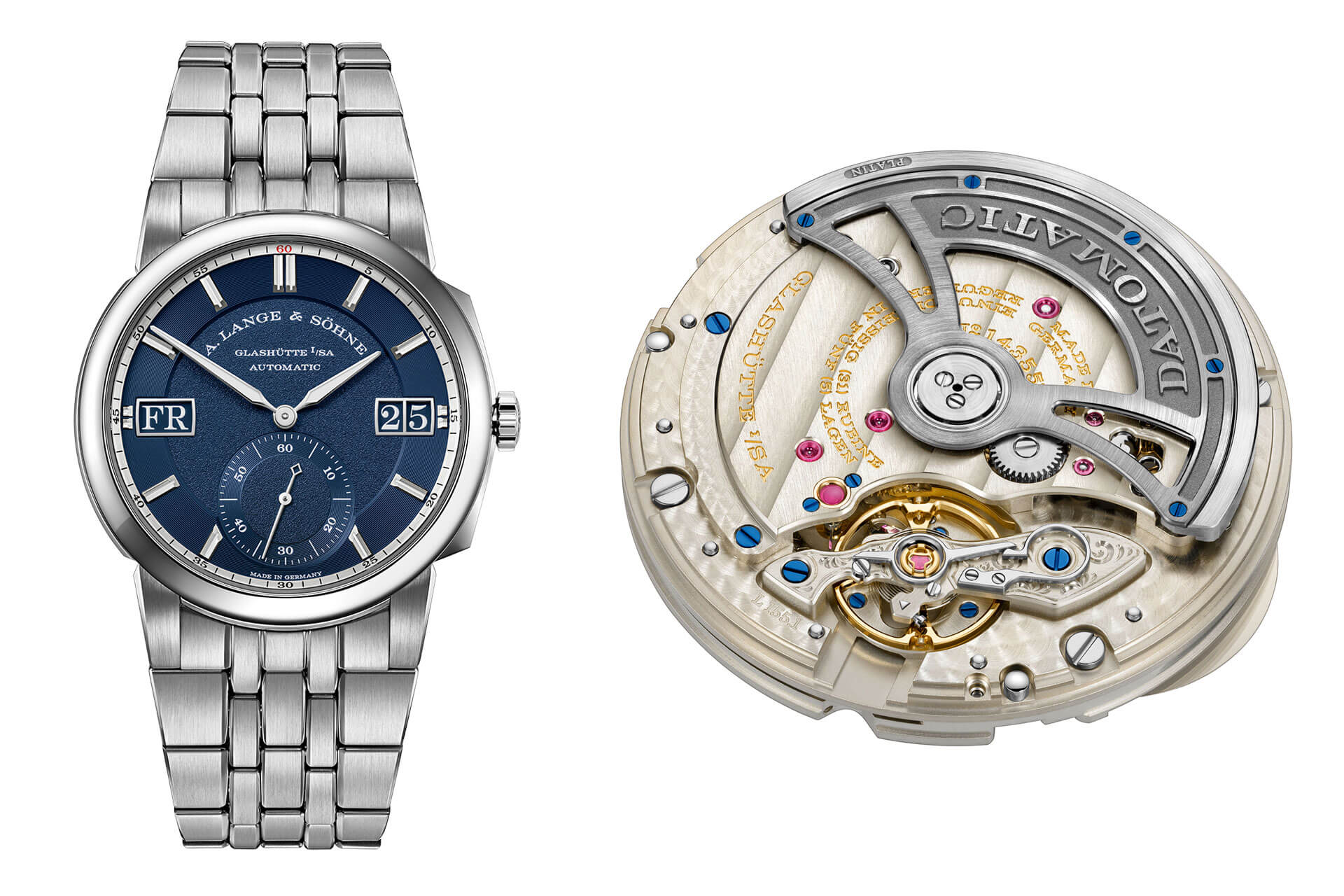
Odysseus, calibre L155.1
How is a new movement created at A. Lange & Söhne?
At Lange there is a product committee (see the interview with Anthony de Haas). This committee consists of designers, case designers, the head of product development, Anthony de Haas, as well as management. These experts bring all their ideas together, which can start with a construction idea or a design idea, as Anthony de Haas explained in our interview. Here too, the strategy defined in advance pays off: because if it is clear from the outset that new developments must be useful to enhance functionality for the collector, many ideas will come on their own sooner or later, and others won’t be suggested at all. However, what is particularly needed then, which ironically many watch companies seem not to have today, is time. For a new movement development takes about 4-5 years, as Anthony de Haas confirmed for the first Zeitwerk which came to the market in 2009.

A five-year journey from the first sketch to market launch
After the product committee has reached an agreement (which can also include very crazy ideas that are never executed), the implementation begins. The work of the designers and engineers runs in parallel during a second phase until a common design and form are agreed upon. Then the prototype is built, and the result is rigorously tested. According to Anthony de Haas, the testing phase can last up to two years, during which the design must be improved if a prototype does not withstand the hammer test, which simulates a drop, or the multi-hour vibration test.

Each Lange watch undergoes extreme tests for everyday suitability
Because even the most complex watches at A. Lange & Söhne must undergo real-world tests, or as CEO Wilhelm Schmid once put it: “All Lange products are put through the wringer. Anyone who has ever visited the test lab knows what I mean.” For example, every complicated watch at Lange has to endure a 24-hour shake test, which is roughly equivalent to a day’s ride over cobblestones on a mountain bike. Nevertheless, we at Swisswatches recommend to every owner of such a watch: don’t push it to the limit!
The Datograph Perpetual in the test laboratory
During the impact test, the watch is subjected to a standardised hammer blow that corresponds exactly to a fall from a height of one metre onto a hardwood floor. The parts are subjected to short-term loads equivalent to 5,000 times their own weight. The push-button tester presses each individual button 50,000 times. Spring-loaded metal rods with silicone caps simulate human fingers, because a precise stylus would put less strain on the mechanism than the elastic skin.
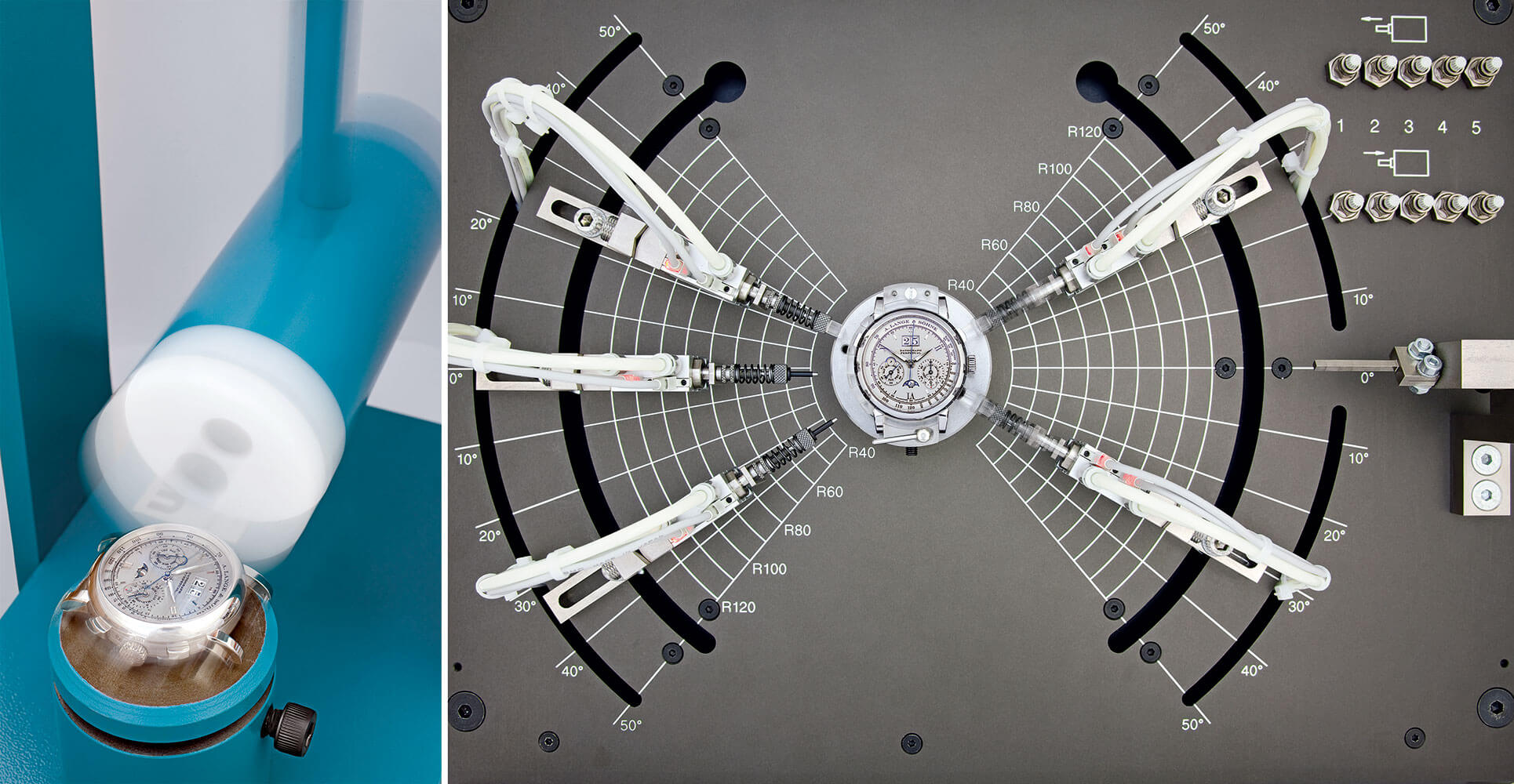
Rapid and extreme temperature fluctuations are among the toughest stresses for a mechanical movement. This is why Christoph Schlencker, responsible for the test laboratory at A.Lange & Söhne, can simulate every climate zone in the world in his heat cabinet. From minus 20 degrees dry cold to plus 80 degrees humid heat.
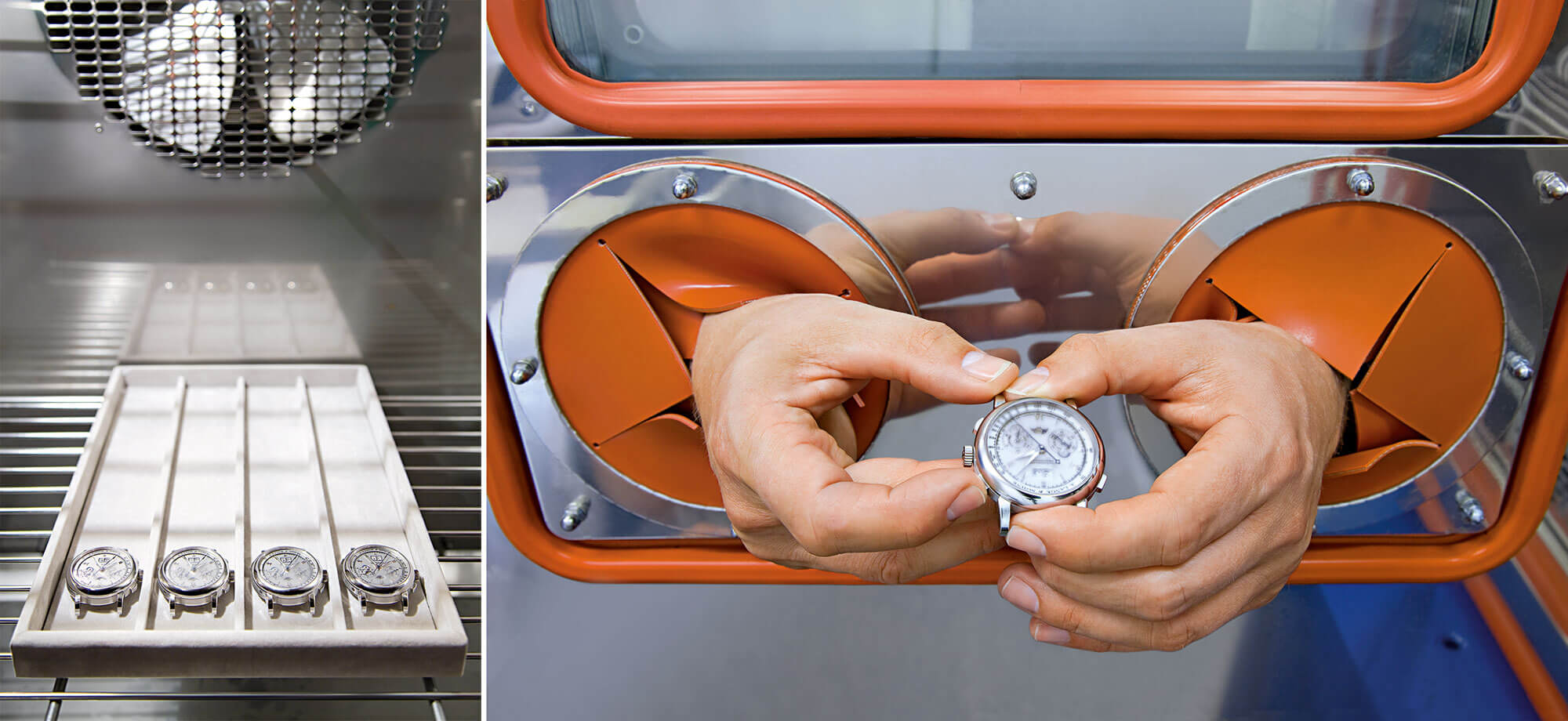
The laser of the oscillation measuring device scans the balance wheel and measures the number and amplitude of the oscillations. This allows the hairspring and balance wheel to be optimally harmonised during the design phase. And this is one of the reasons why the accuracy of the new movements is unrivalled in modern precision watchmaking.
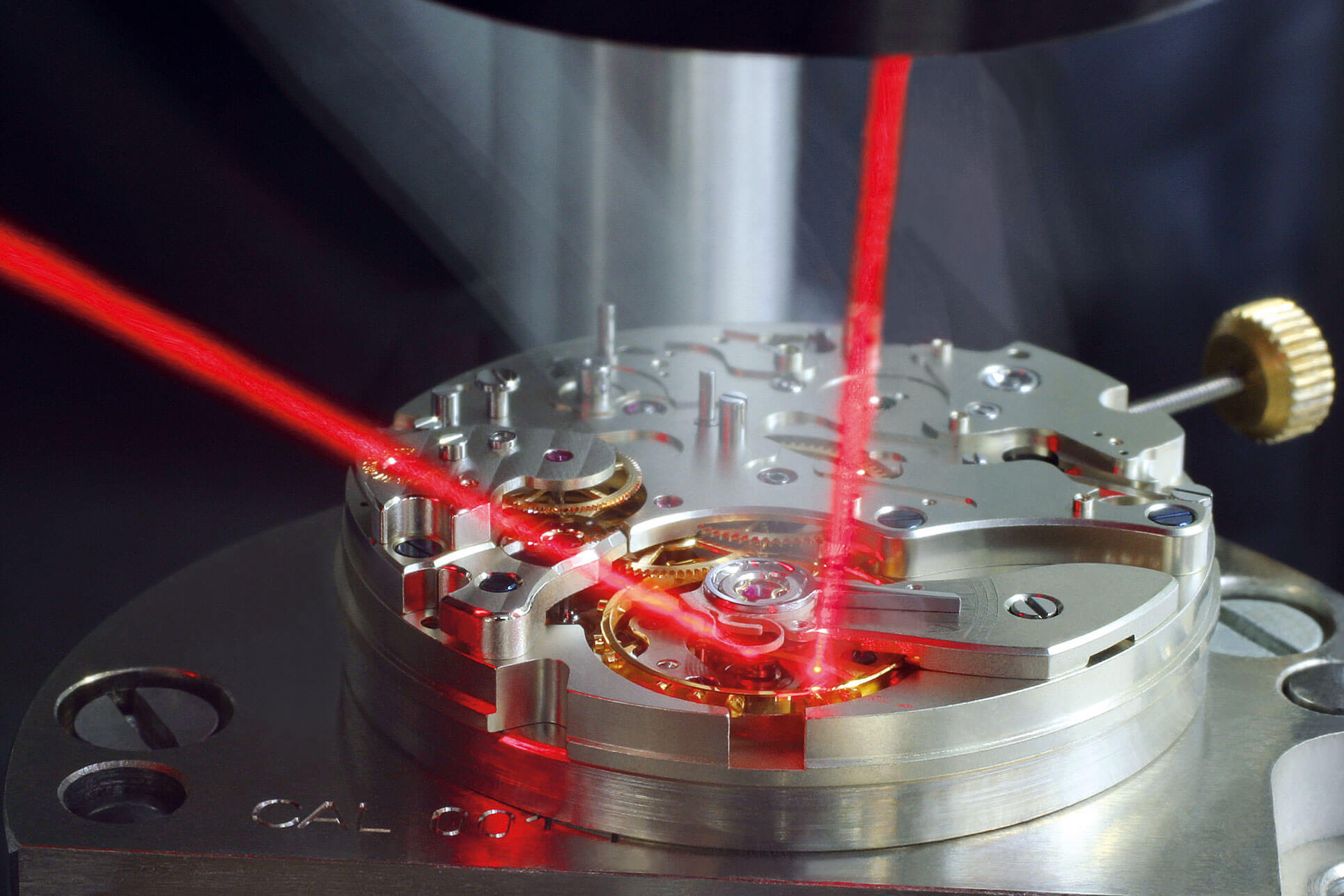
The future is always factored in
Although Lange develops a unique movement for almost every model, the team around Anthony de Haas always considers future models: a good example is the sporty Lange Odysseus from 2019, whose side pushers were only used for adjusting the date and day of the week at launch, but were naturally predestined for additional functions. They already called for a chronograph movement, which, however, was not to see the light of day until 2023.

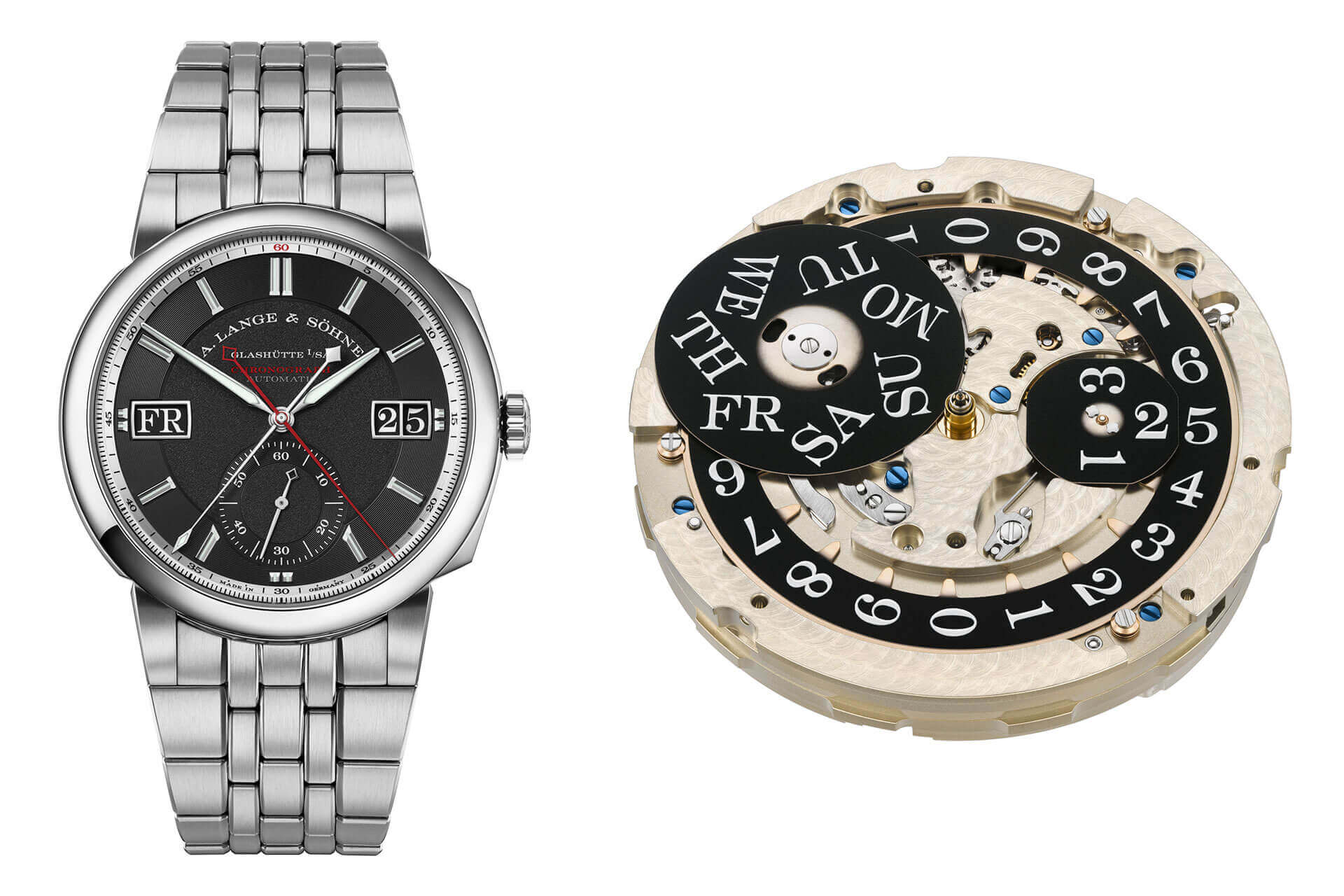
Odysseus, calibre L155.1 and Odysseus Chronograph, calibre L156.1
What do the calibre designations at A. Lange & Söhne mean?
Before we delve into the movements in detail, a word on classification. Where do the calibre designations at Lange come from? All Lange calibres have three-digit codes for clear identification, followed by a dot and then another digit.

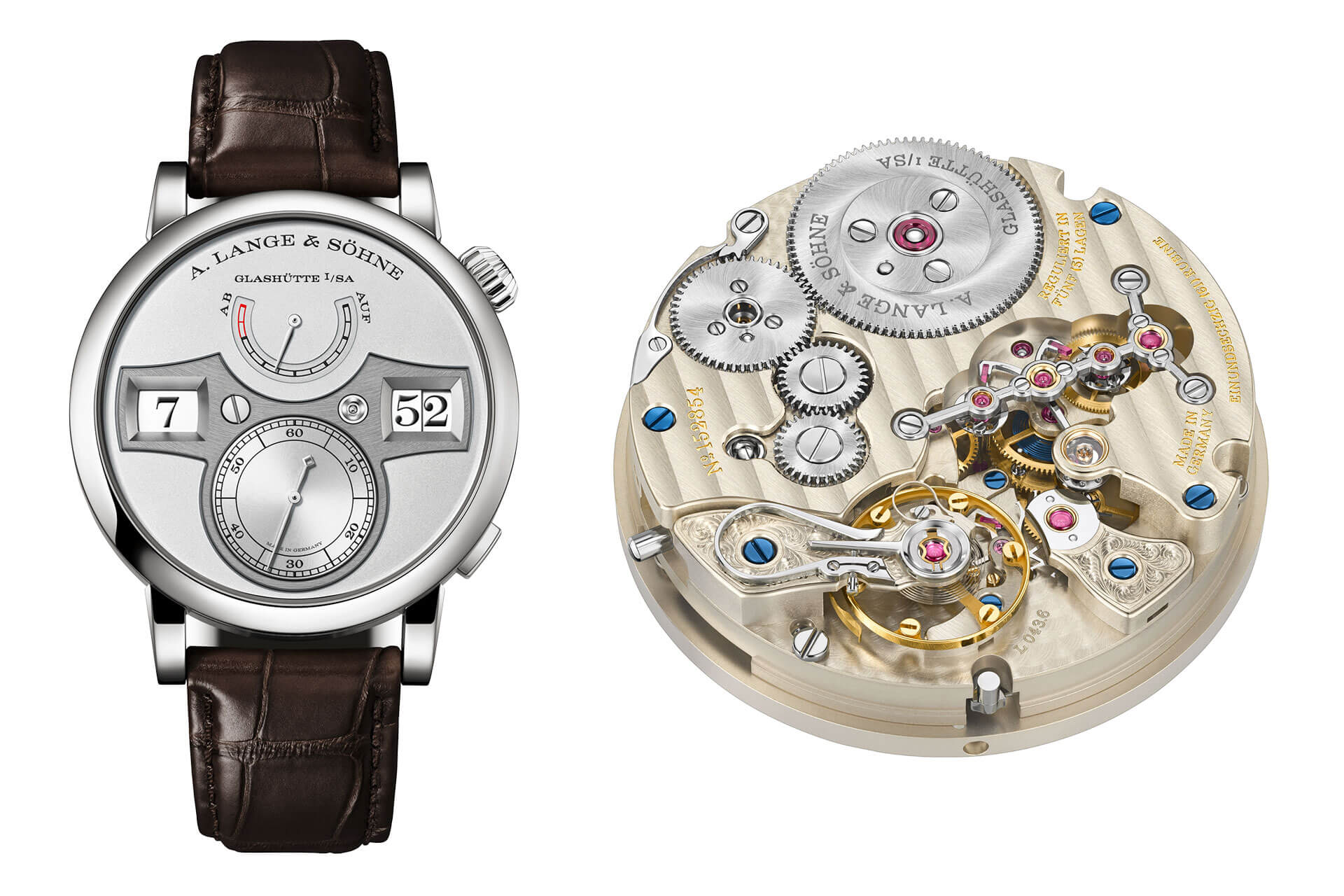
Zeitwerk:
generation 1, calibre L043.1 and generation 2, calibre L043.6
The Zeitwerk calibre L043.1 is presented here as an example: The first two digits, in this case 04, describe the year in which the movement development was started. The digit after the year describes the consecutive project number of that year. So, in the case of L043.1, the Zeitwerk is the third project that was started in 2004. The number after the dot describes the respective iteration.
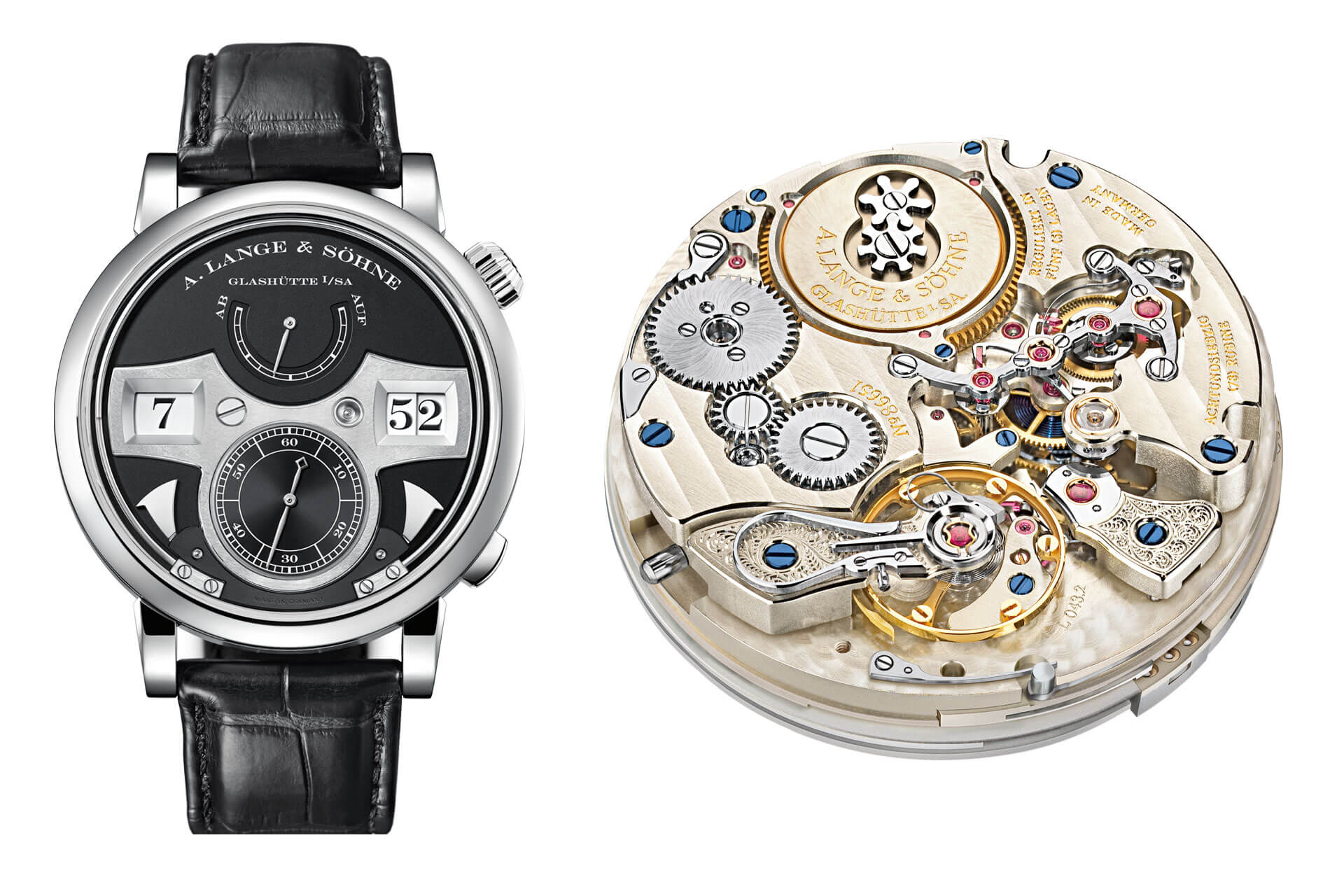
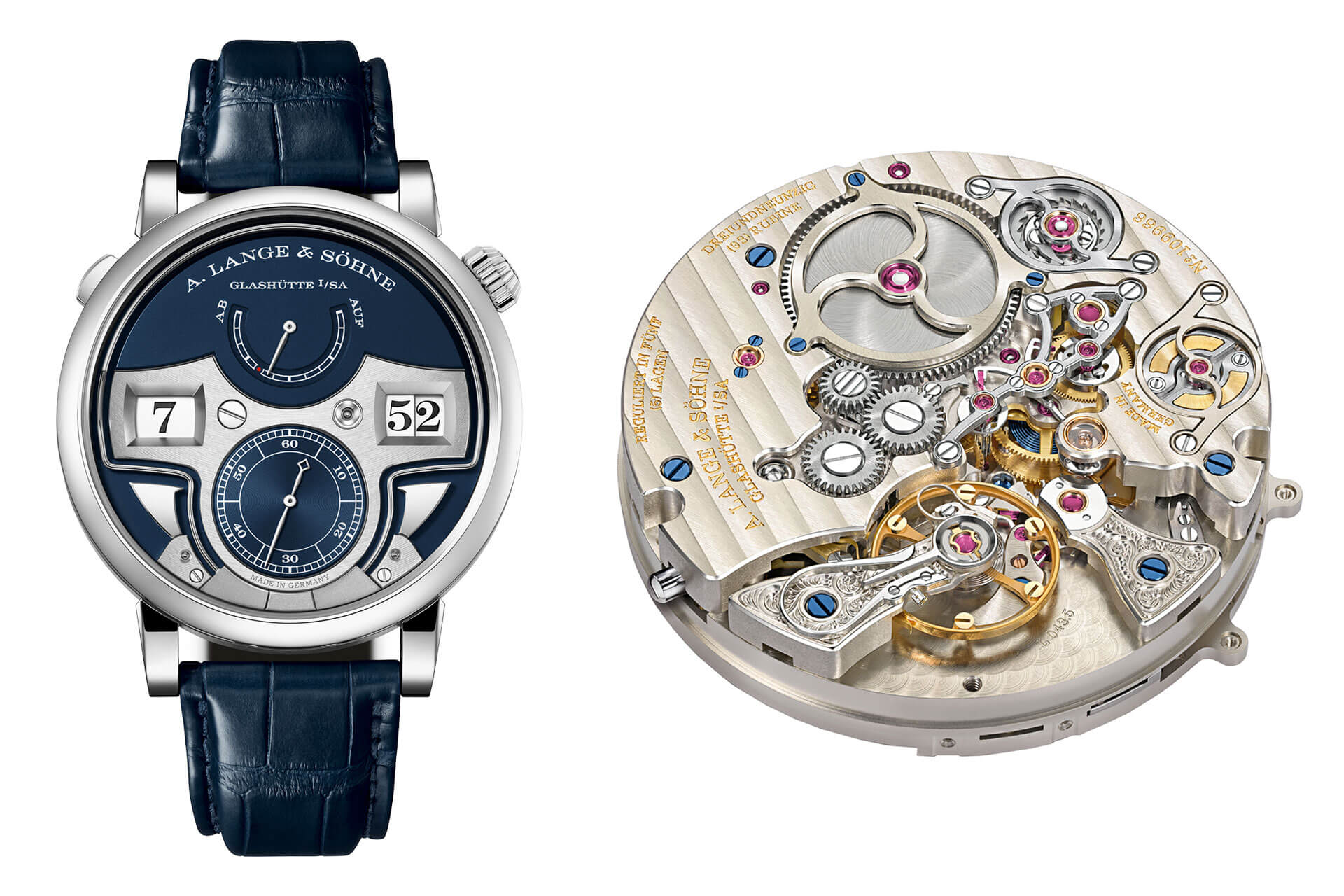
Zeitwerk Striking Time, calibre L043.2 and Zeitwerk Minute Repeater, calibre L043.5
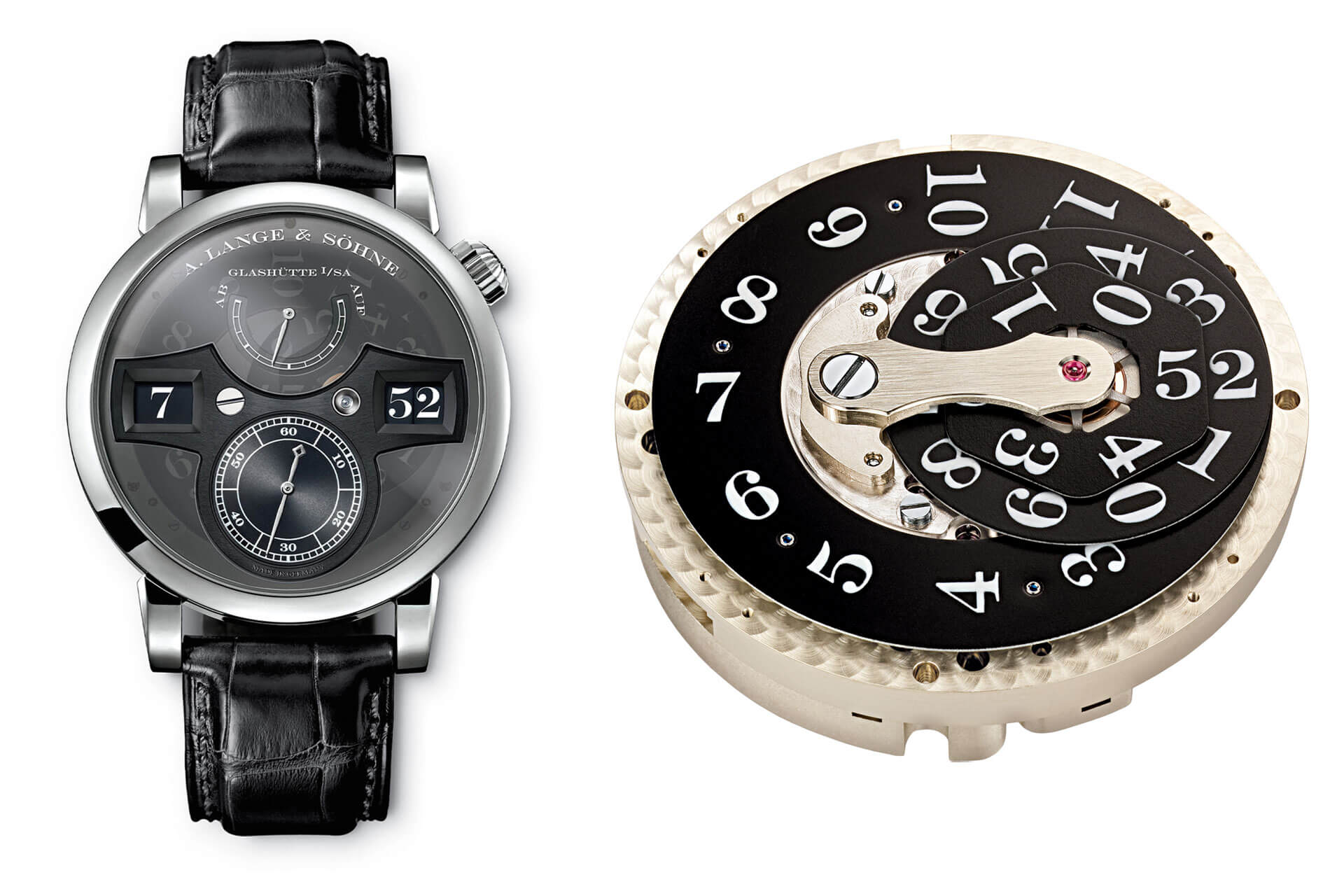
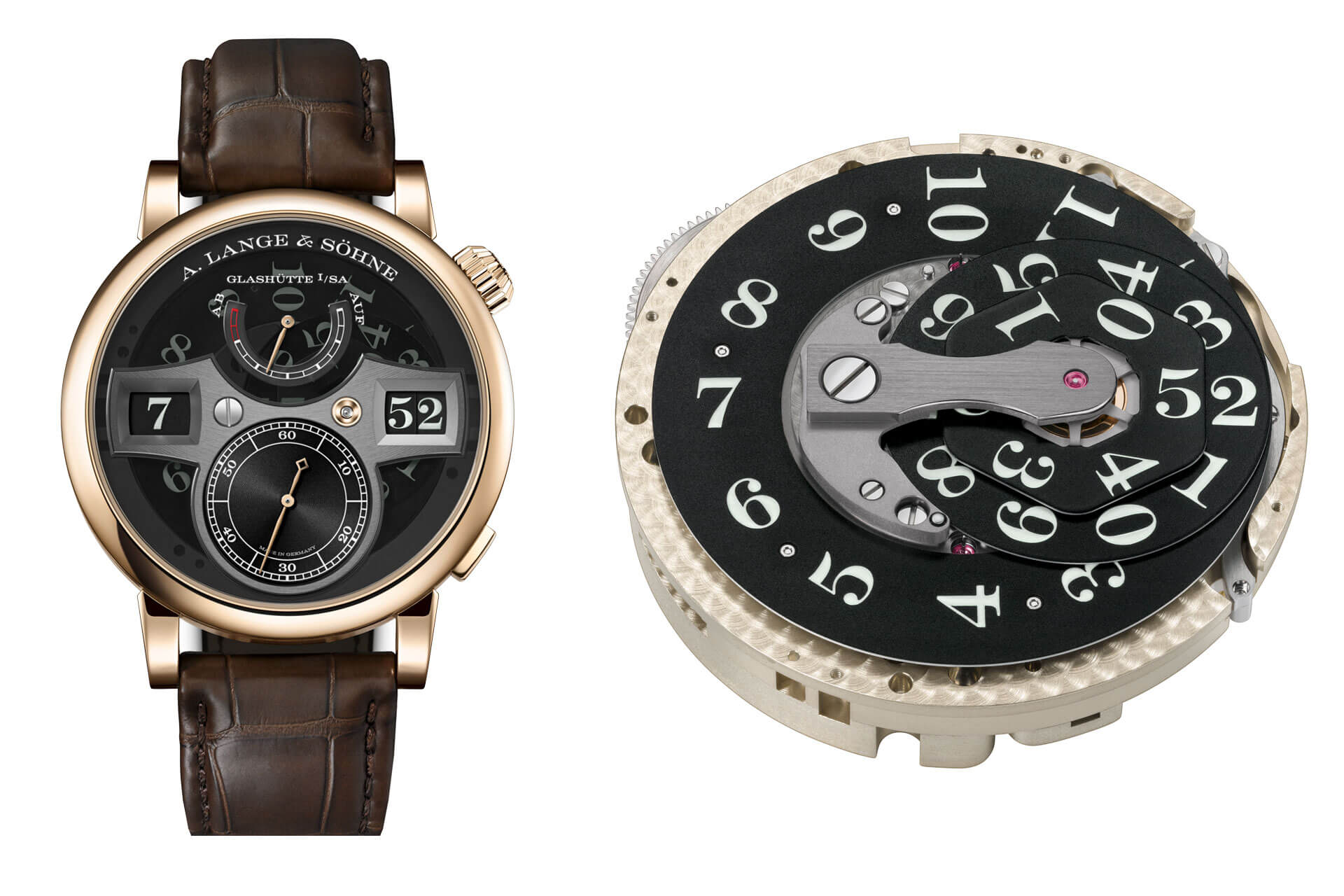
Zeitwerk ‘Luminous’:
generation 1, calibre L043.3 und generation 2, calibre L043.9
The Zeitwerk Striking Time launched in 2011 has the calibre number L043.2, while the L043.5 is assigned to the Zeitwerk Minute Repeater launched in 2015. In 2017, the Zeitwerk family was expanded to include the Zeitwerk Decimal Strike, which is equipped with calibre L043.7. In 2010, the Zeitwerk ‘Luminous’ was introduced with the calibre number L043.3, followed by the update to L043.9 in 2022. The new Zeitwerk is then described by the revised base calibre L043.6 and the L043.8 describes the Zeitwerk Date.
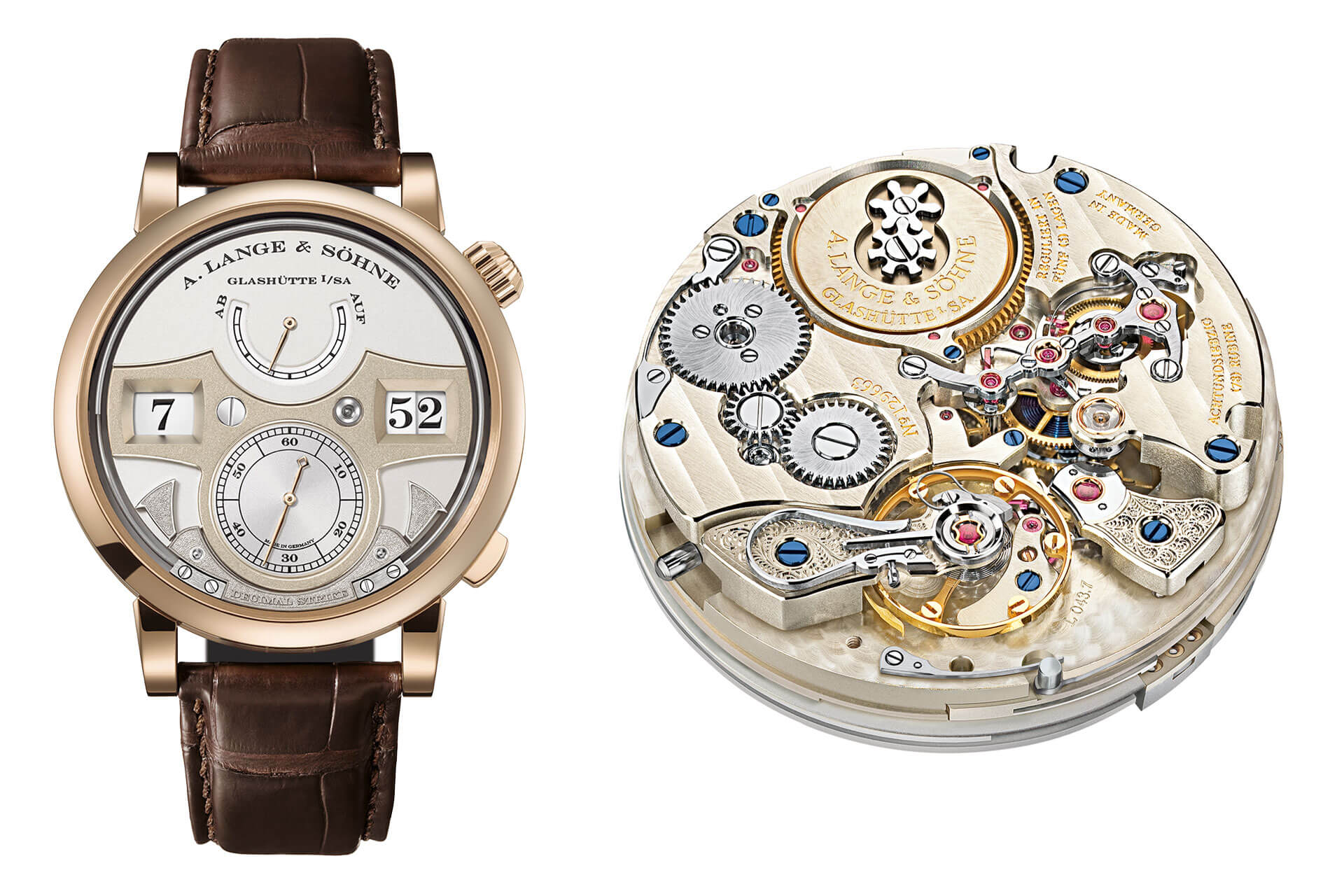
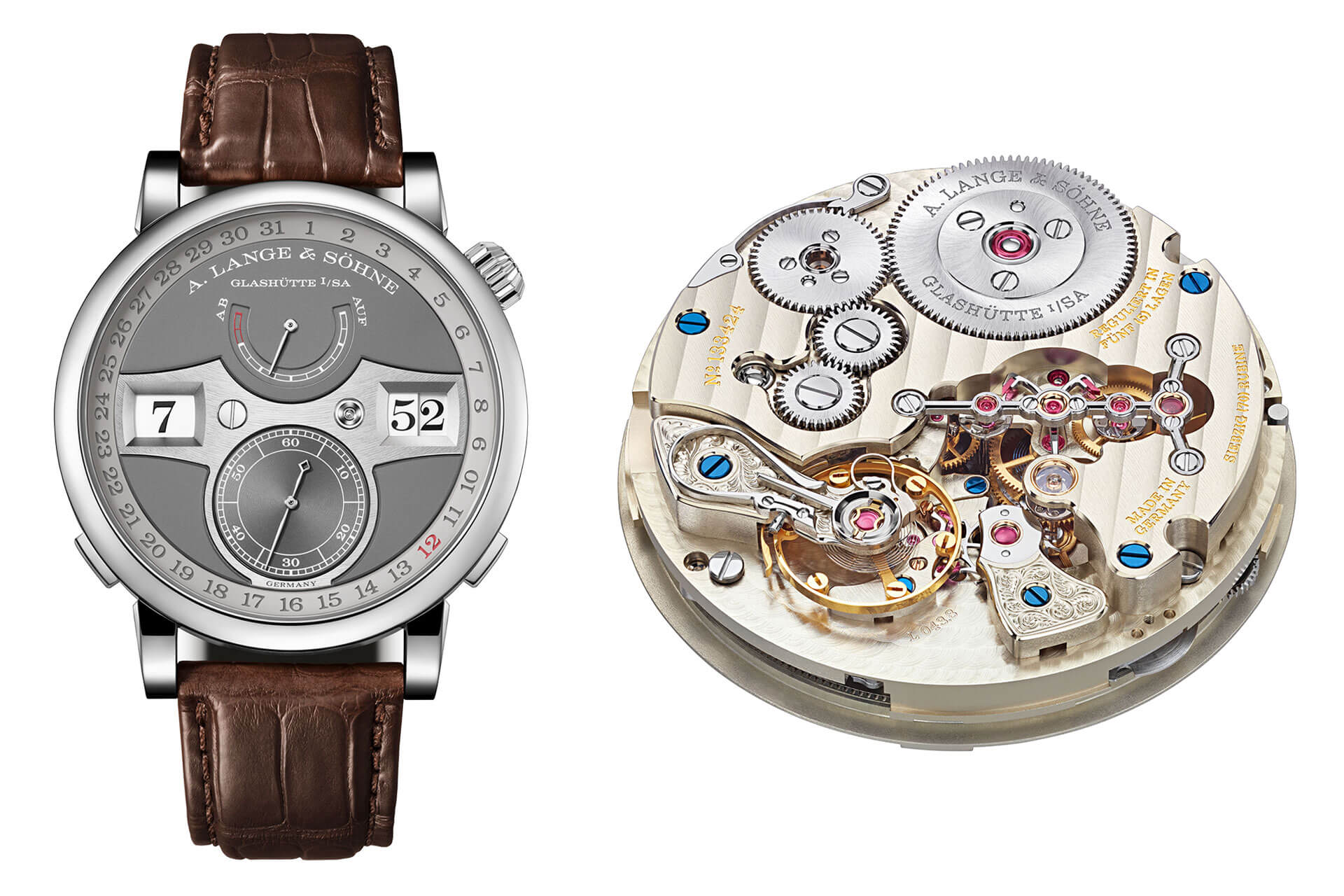
Zeitwerk Decimal Strike, calibre L043.7 and Zeitwerk Date, calibre L043.8
Very special “Pour Le Mérite” models
For those who still have stamina, we have prepared two very special models or model series. Because even in 1994, there was a model in the start collection with the addition “Pour le Mérite.”

“Pour le Mérite” at A. Lange & Söhne: “For Merit”
The name itself comes from a famous Prussian order of merit regarded as a precursor to the later Nobel Prize. The Pour le Mérite order (French for “For Merit”) was established by King Frederick II and was the highest bravery award that could be given to an officer. The order existed in the military class until 1918. It was the natural scientist Alexander von Humboldt who inspired King Frederick William IV in 1842 to create a peace class of the order under the same designation for sciences and arts, for humanities, natural sciences, and medicine, as well as art. In its civilian form, it continues to exist today as a semi-official award with the designation Pour le Mérite for Sciences and Arts, approved by the Federal President as an honorary distinction.
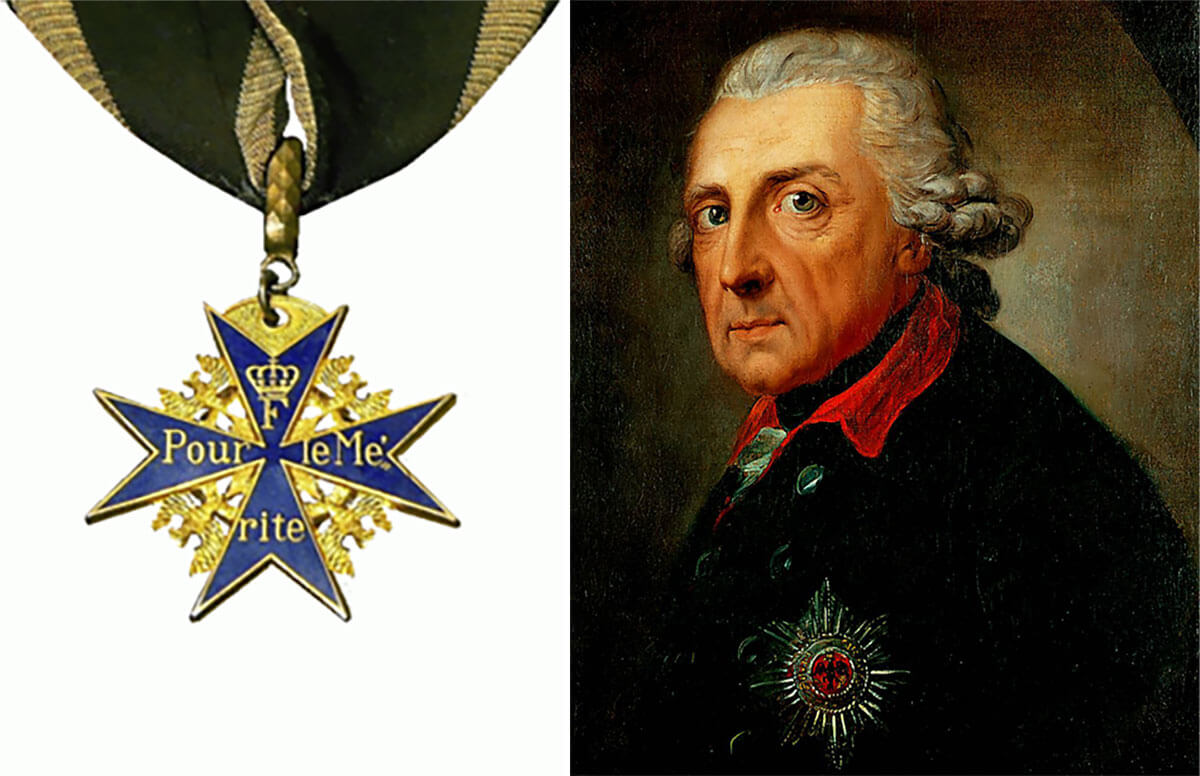
King Friedrich II
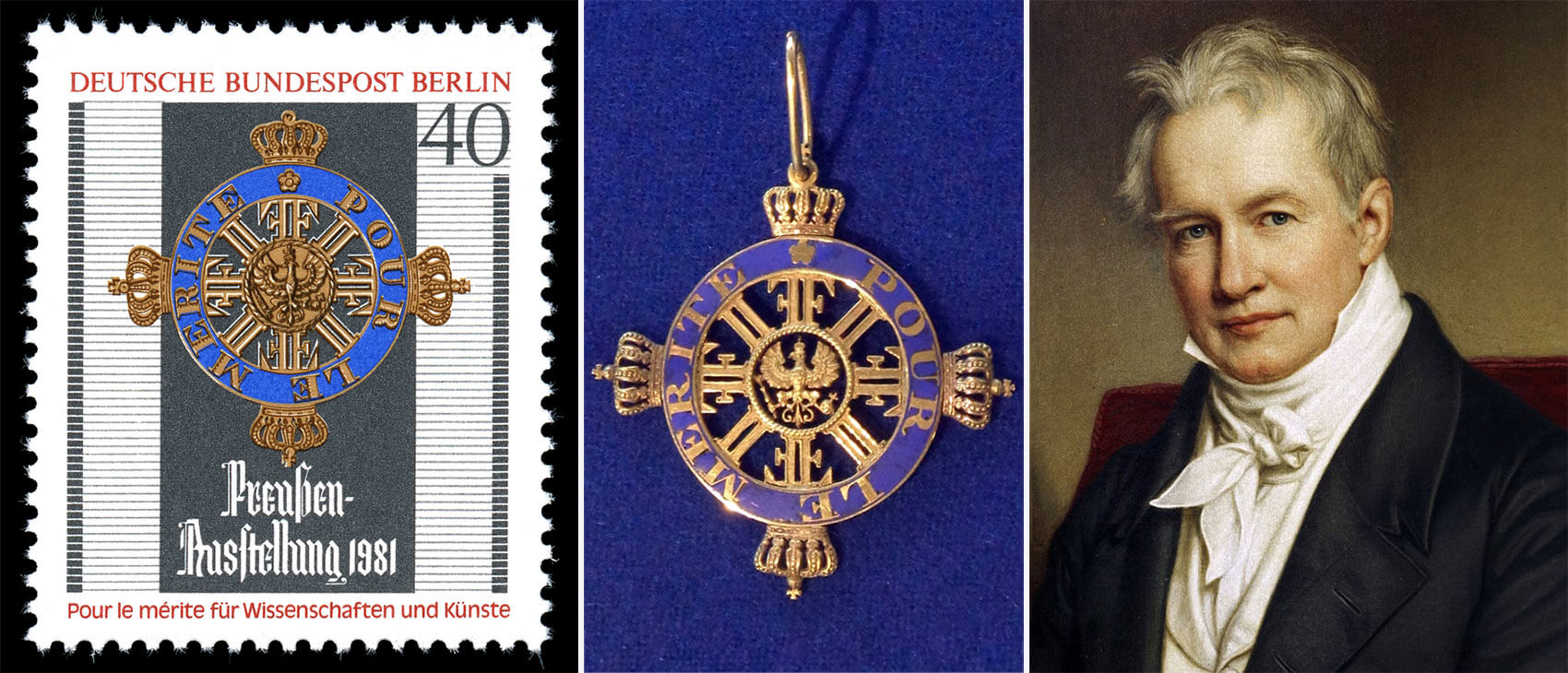
Scientist Alexander von Humboldt
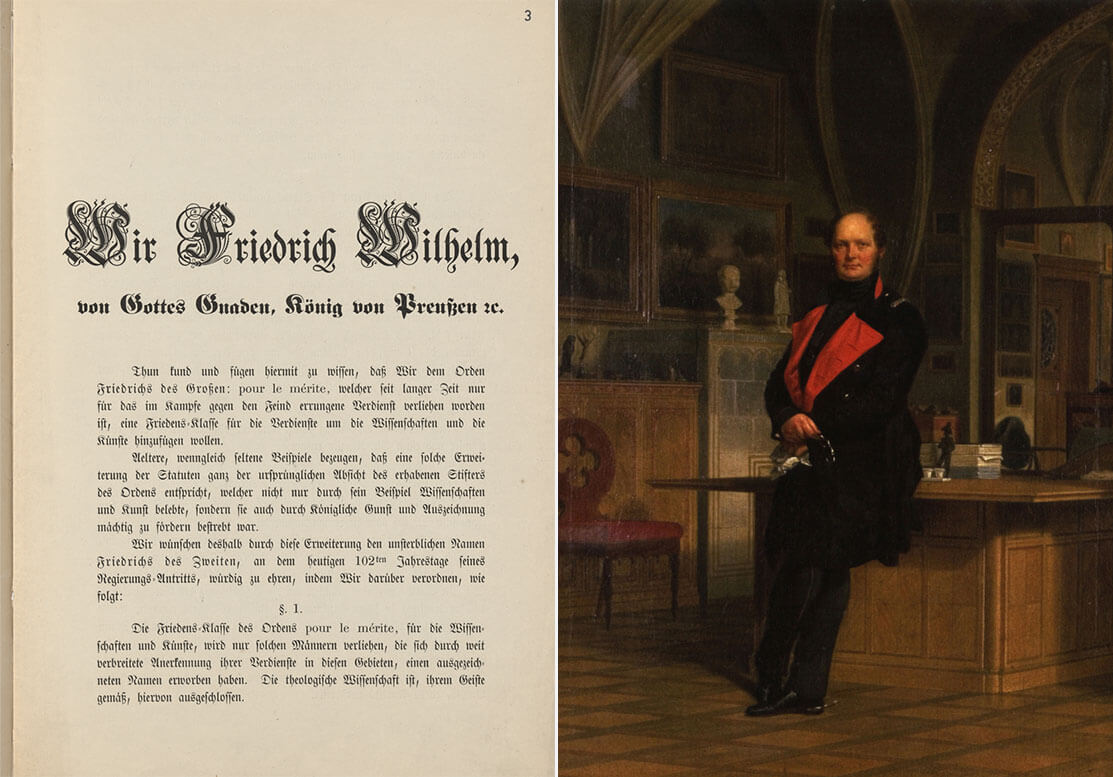
King Friedrich Wilhelm IV

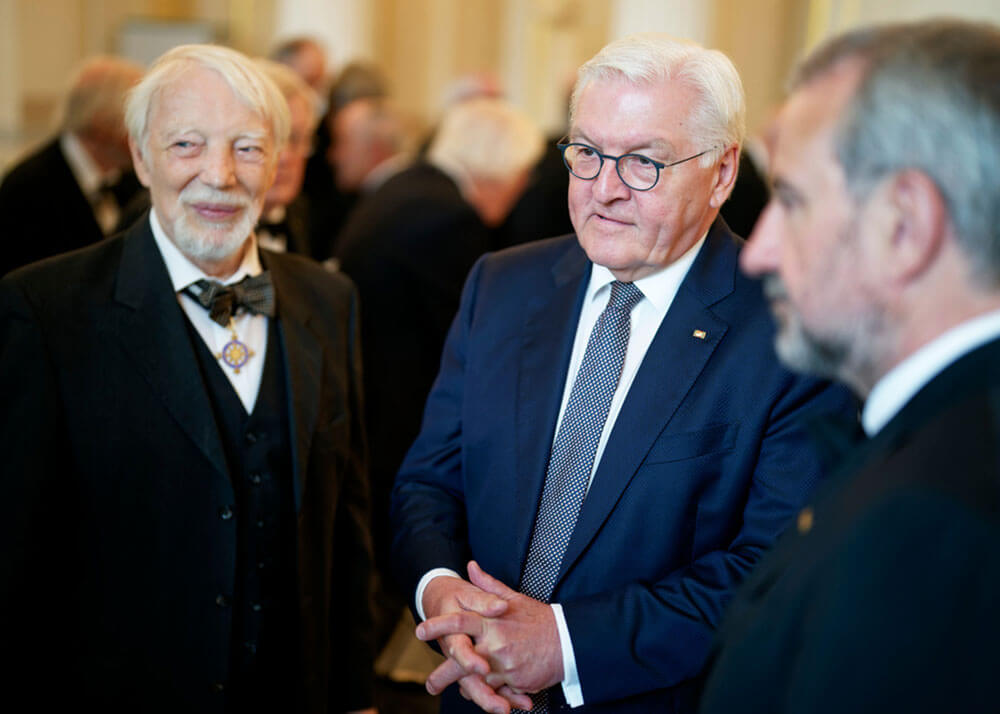
Frank-Walter Steinmeier, President of Germany
A medal of merit as a commitment to oneself
A. Lange & Söhne has incorporated the name of the Order of Merit into the model designation of five timepieces so far. What sounds presumptuous also goes back to Günter Blümlein. For Lange, however, the name signifies a serious commitment: every model with this name must be innovative enough to be included in the rank of a “Pour le Mérite.” As a result, Lange does not have fixed intervals for when a new “Pour le Mérite” appears, to avoid putting pressure on themselves with such exceptional models.
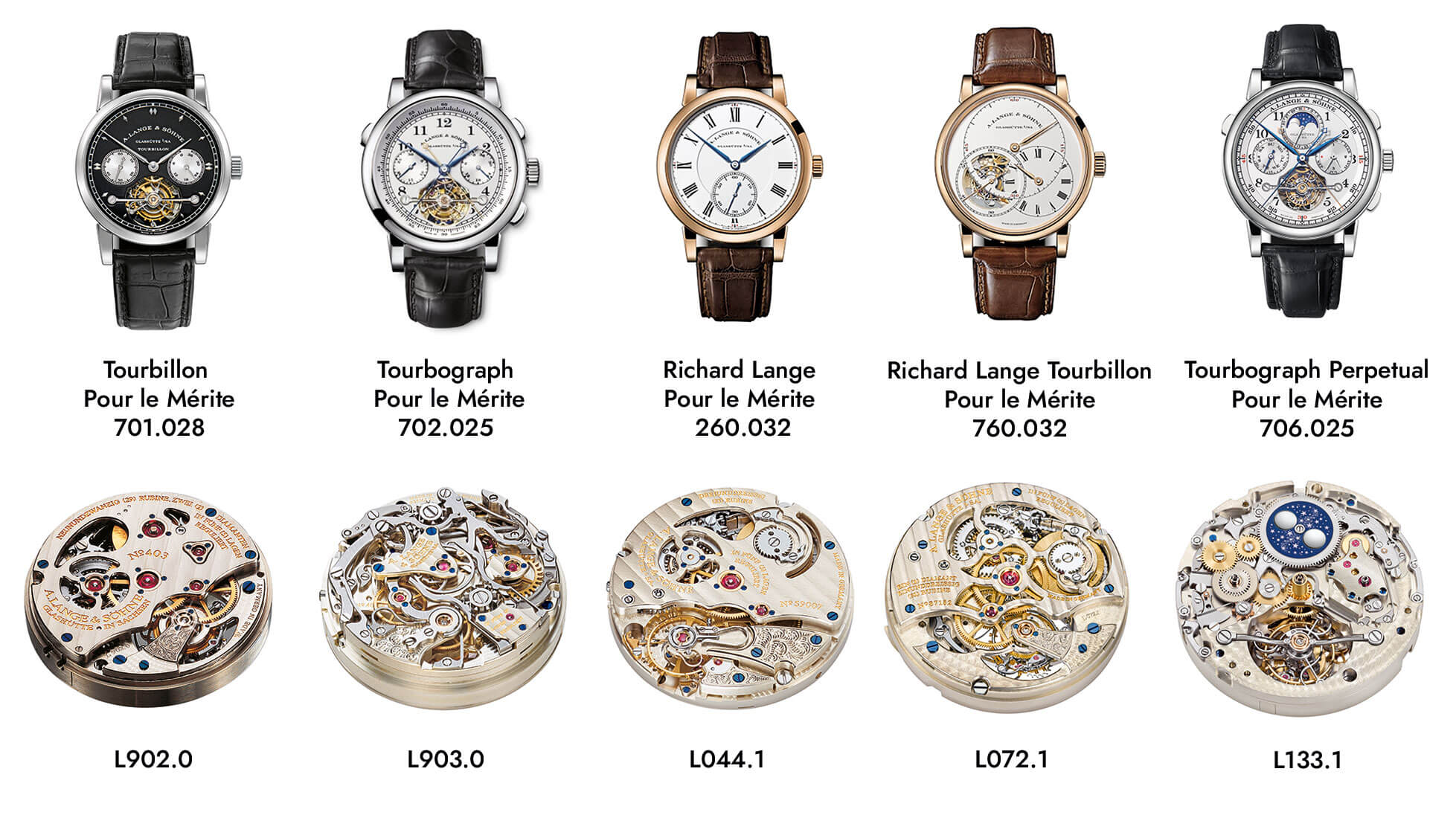
“Pour Le Mérite”: The first watch primarily stood for one thing – The standard set for oneself
When you apply the scientific standard to wristwatches, it means attempting something that no one has tried before with wristwatches. The best example is the Tourbillon “Pour le Mérite” from 1994: a fusée-and-chain transmission mechanism had previously been used in marine chronometers or in a few Lange pocket watches, but this watch was the first wristwatch in the world with this mechanism. Today, all “Pour le Mérite” models share the characteristic of a fusée-and-chain transmission, as in certain special Lange pocket watches. Four of these watches have so far appeared in combination with a tourbillon. Only one, the Richard Lange “Pour le Mérite,” focused solely on the fusée-and-chain transmission as the only complication, making it the purest form of “Pour le Mérite.”
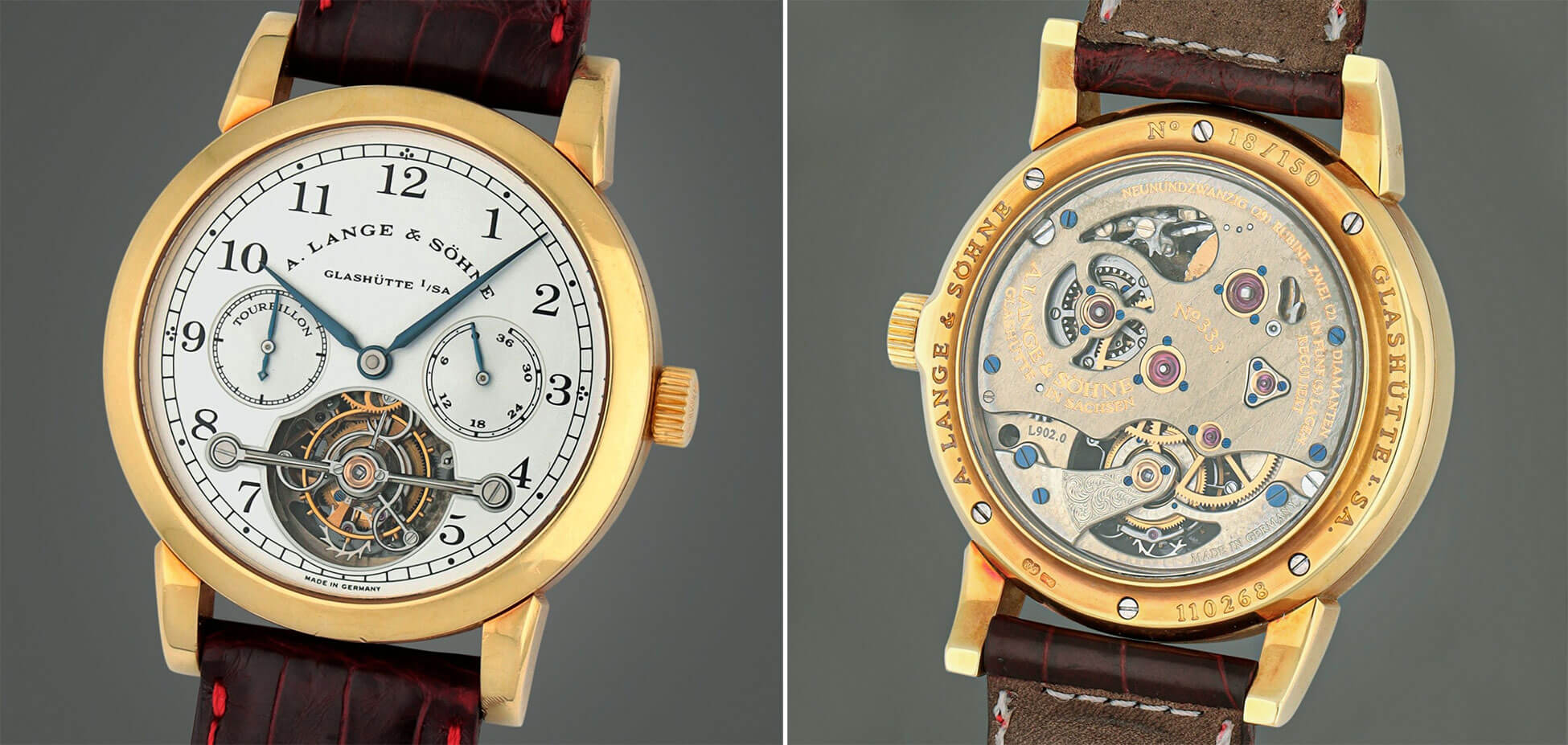
Tourbillon Pour Le Mérite, Ref. 701.001
Credit © Sotheby’s

The chain and fusee drive is one of the most effective complications for increasing the accuracy of mechanical watches.
Lange returns to the world of fine watchmaking
With the Tourbillon “Pour le Mérite,” Lange announced its intention to re-enter Haute Horlogerie, back at the pinnacle of watchmaking. It took eleven years until the next Pour le Mérite appeared, the Tourbograph. Then, in 2009, the Richard Lange “Pour le Mérite” followed. In 2011, the Richard Lange Tourbillon “Pour le Mérite” with a regulator dial followed, and in 2017, the Tourbograph Perpetual “Pour le Mérite” followed.
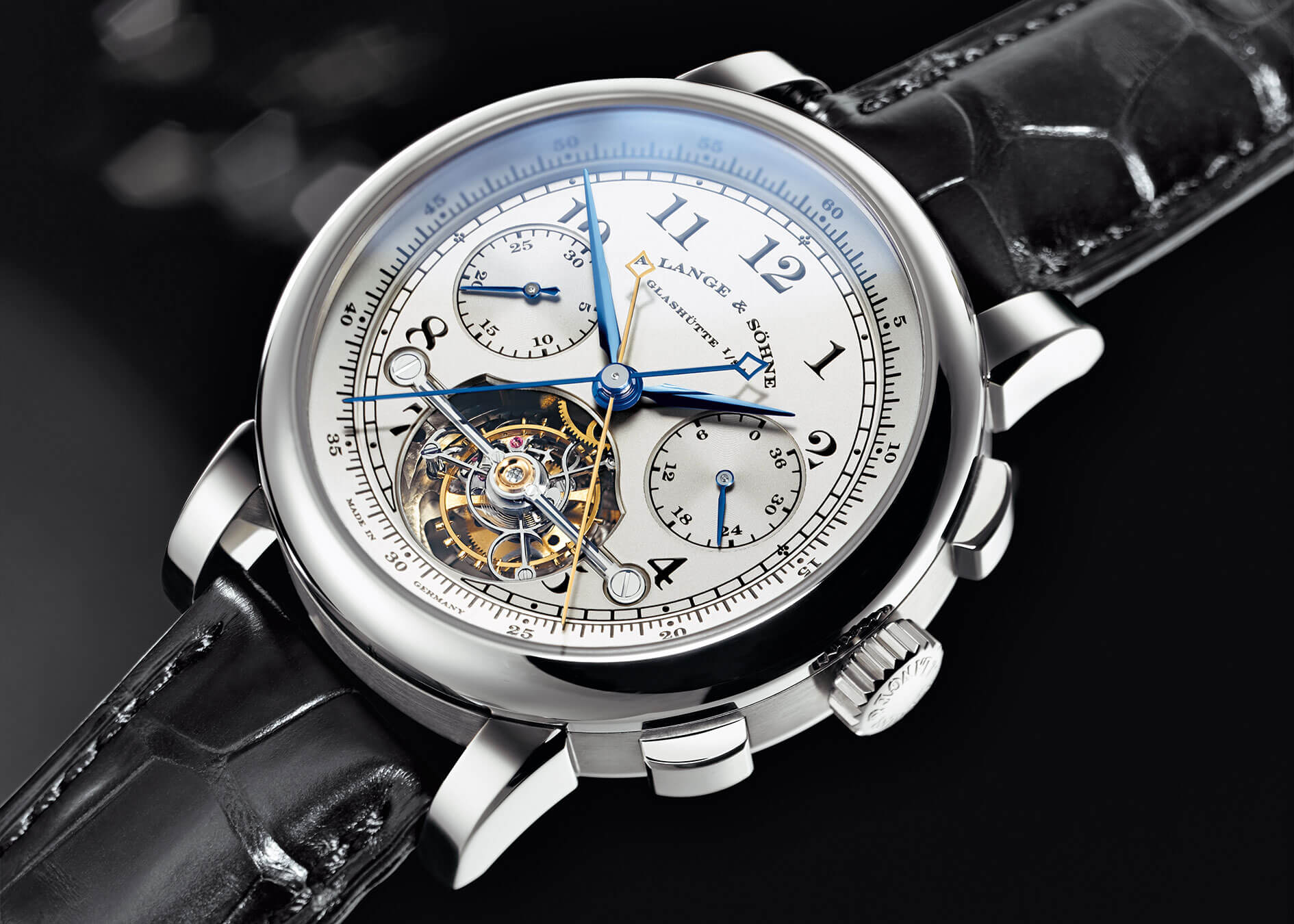
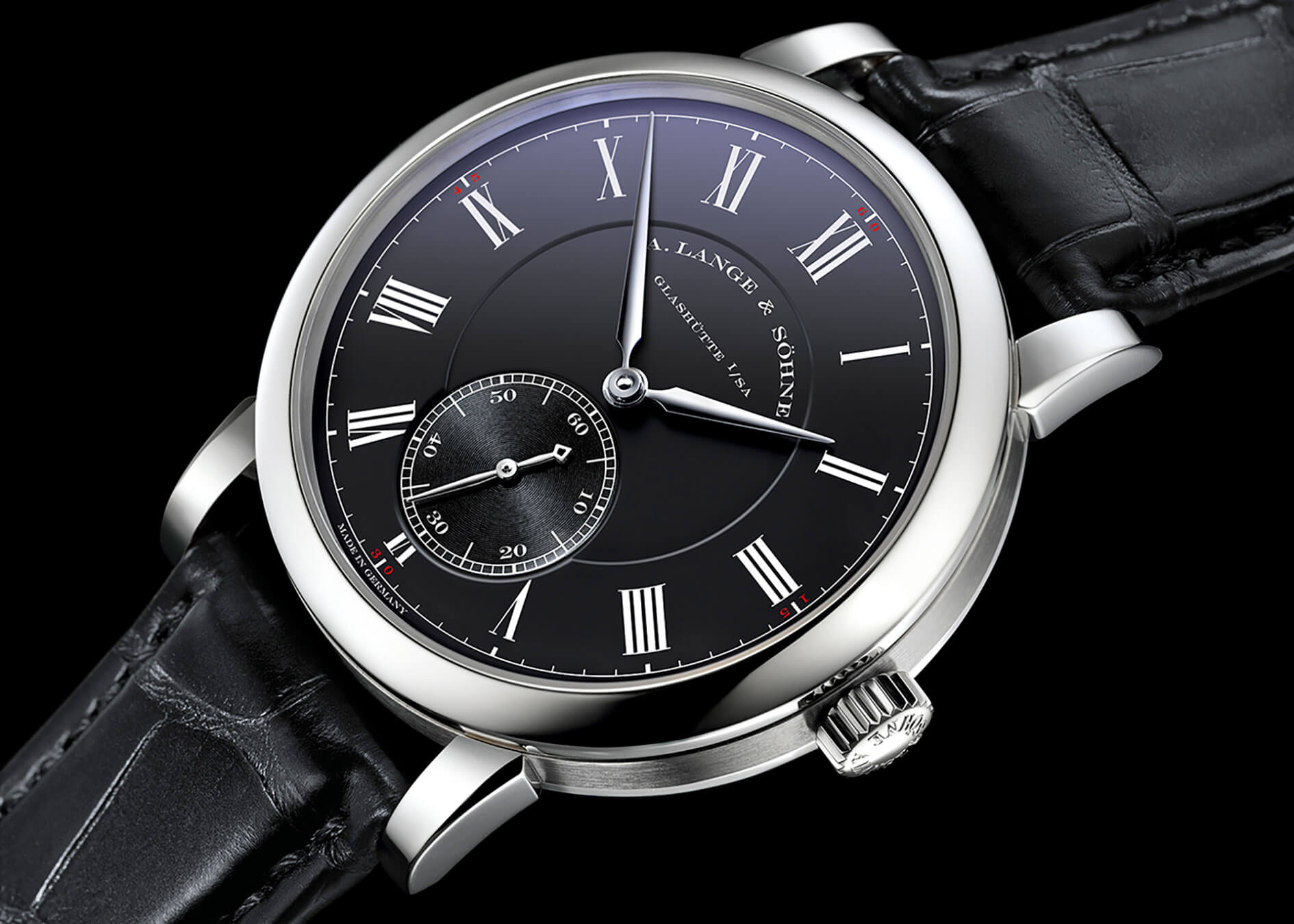
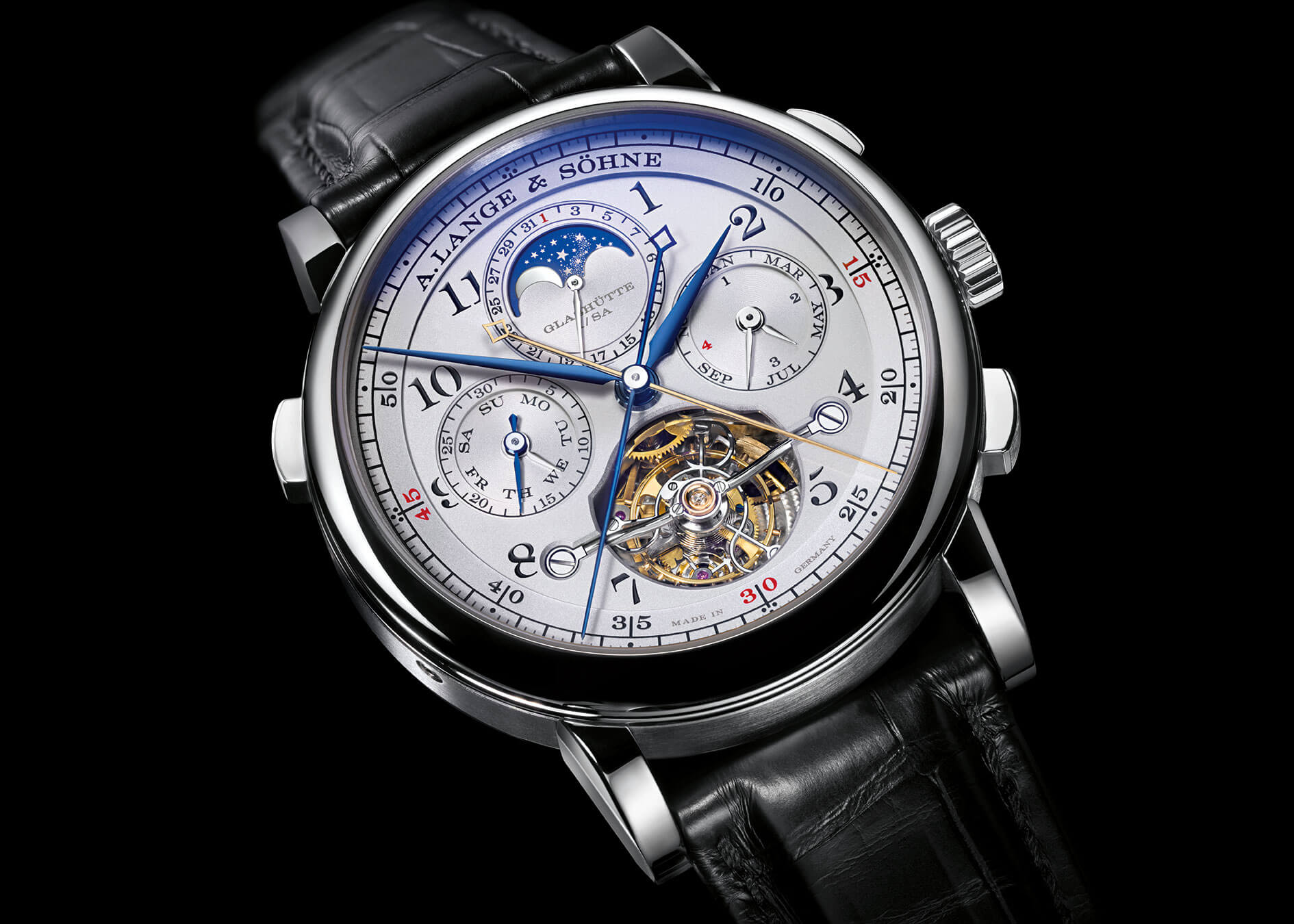
All “Pour le Mérite” watches were limited editions; the first series, highly sought after by collectors today, was limited to 200 pieces in various precious metal cases. The most unusual model in 1994 was certainly the platinum variant, although it was not the rarest with 50 pieces, since there was also a steel watch, along with 19 models in white gold, 24 in red gold, and 106 in yellow gold. The Tourbograph Perpetual “Pour le Mérite” introduced in 2017 was the most complicated watch by A. Lange & Söhne to date, only surpassed by the Grand Complication.
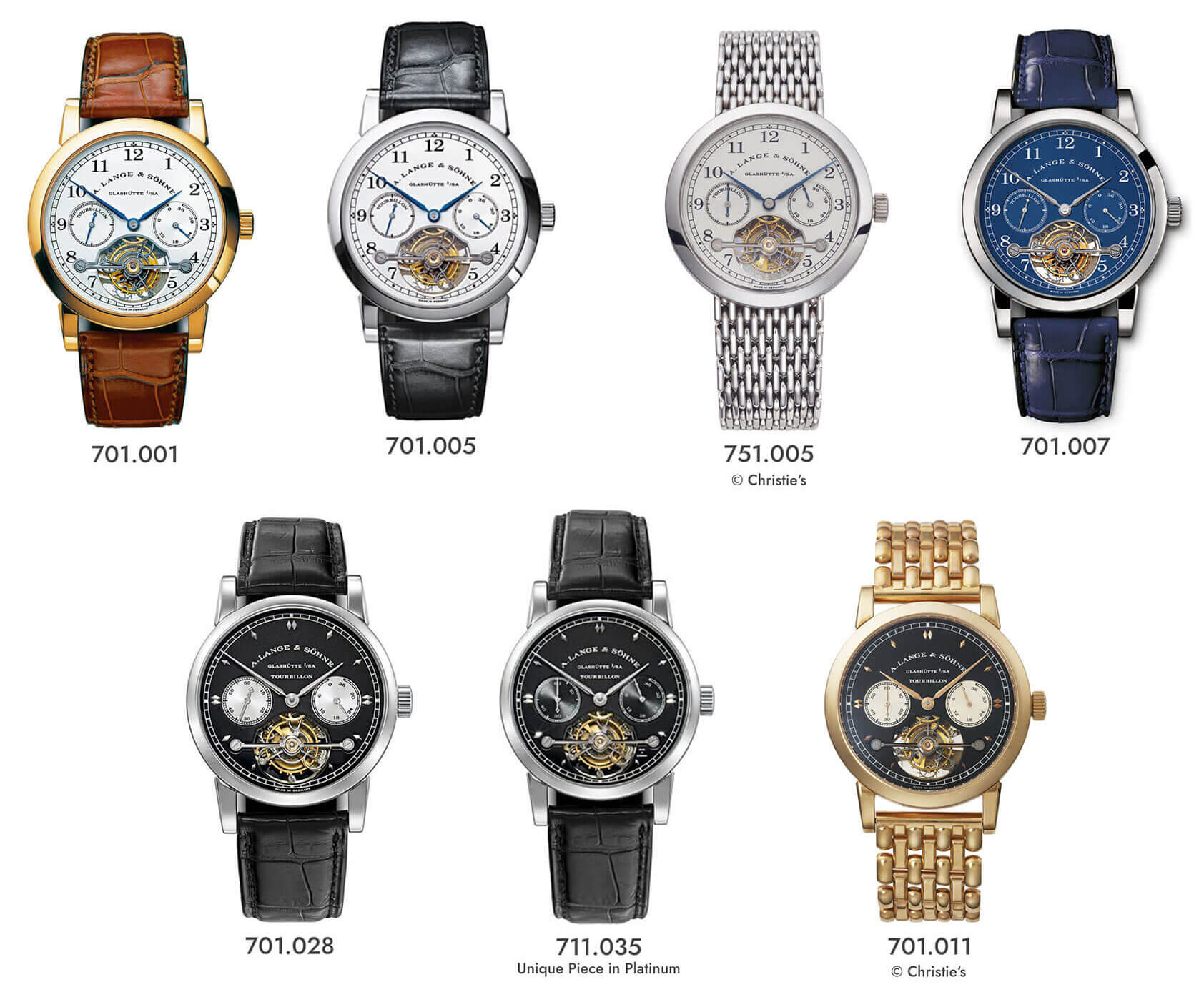
Tourbillon Pour le Mérite, calibre L902.0
A class of its own: The Grand Complication by A. Lange & Söhne
Inspired by the Grand Complication pocket watch No. 42500 from 1902, A. Lange & Söhne presented its most complicated wristwatch in 2013: the Grand Complication. It features a grande and petite sonnerie, a minute repeater, a perpetual calendar, and a split-seconds chronograph with a jumping seconds hand. Assembly and fine-tuning of the mechanisms were so elaborate that only one watch was made each year, totalling only six pieces.
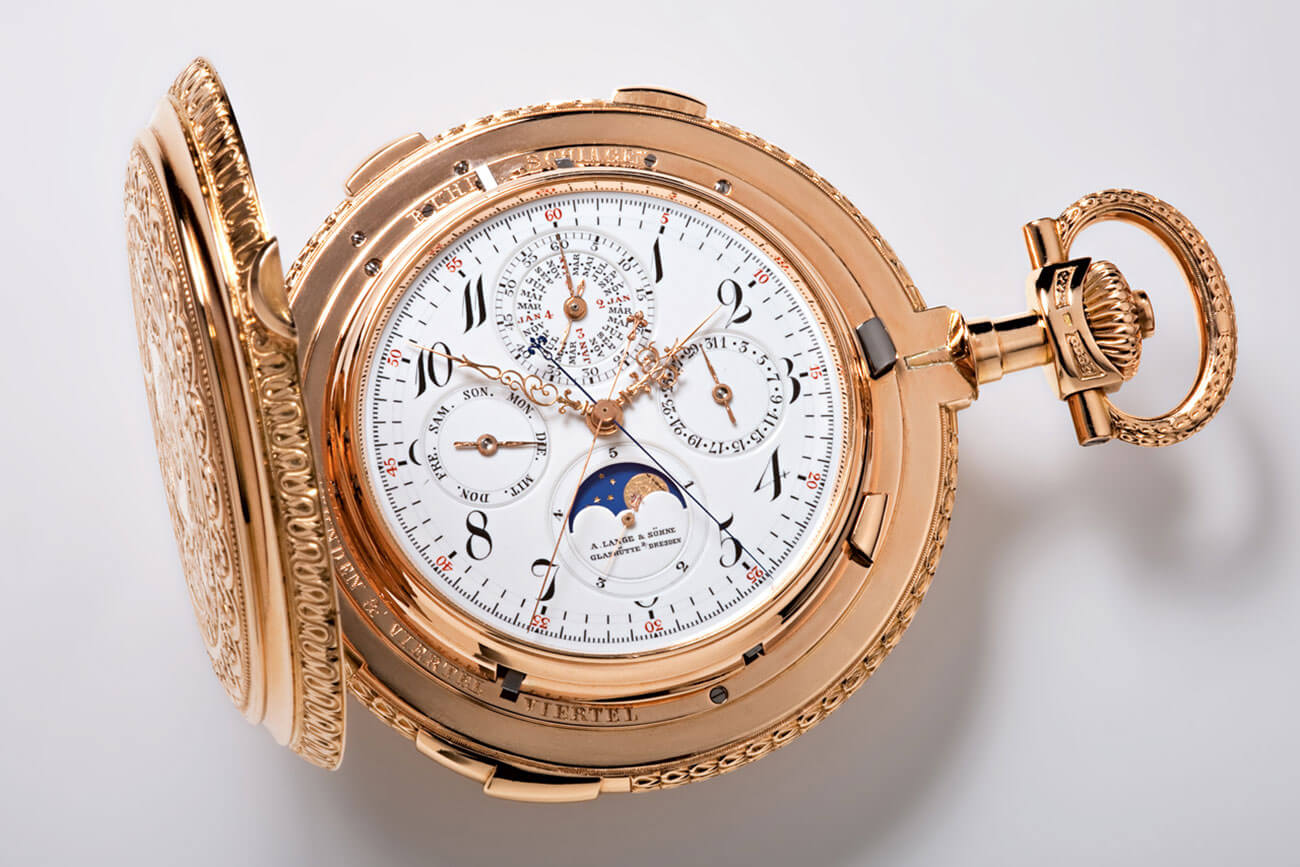
Pocket watch Grand Complication Nr. 42500
When does a complicated watch at A. Lange & Söhne become a Grand Complication?
TThe term is not really uniformly defined. According to a generally accepted Swiss definition, in order to be classified as a grand complication, a watch must have the following functions: a minute repeater, a split-seconds chronograph, and a perpetual calendar. It is rather controversial whether the tourbillon, a device designed to minimize the negative influence of gravity on the accuracy of a watch, can be considered a complication. A. Lange & Söhne does not refer to the Tourbograph Perpetual “Pour le Mérite” as a grand complication, even though it would be according to this definition, mainly to avoid confusion with the grande complication. The Datograph Perpetual Tourbillon would also be considered one if the tourbillon were classified as a complication. Until today, Lange only refers to one watch as a grande complication, namely the model of the same name with the aforementioned seven additional functions and some special features.
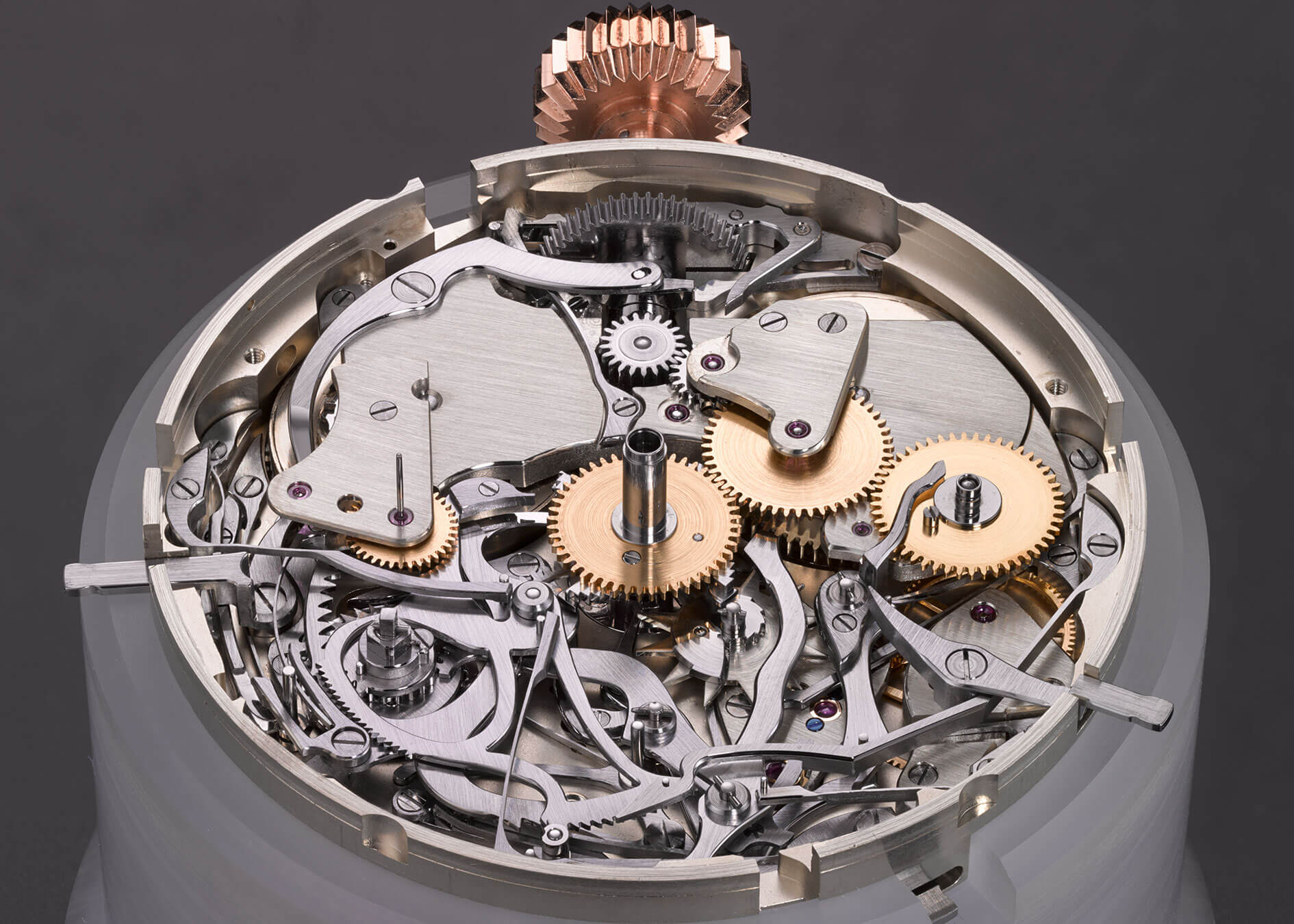
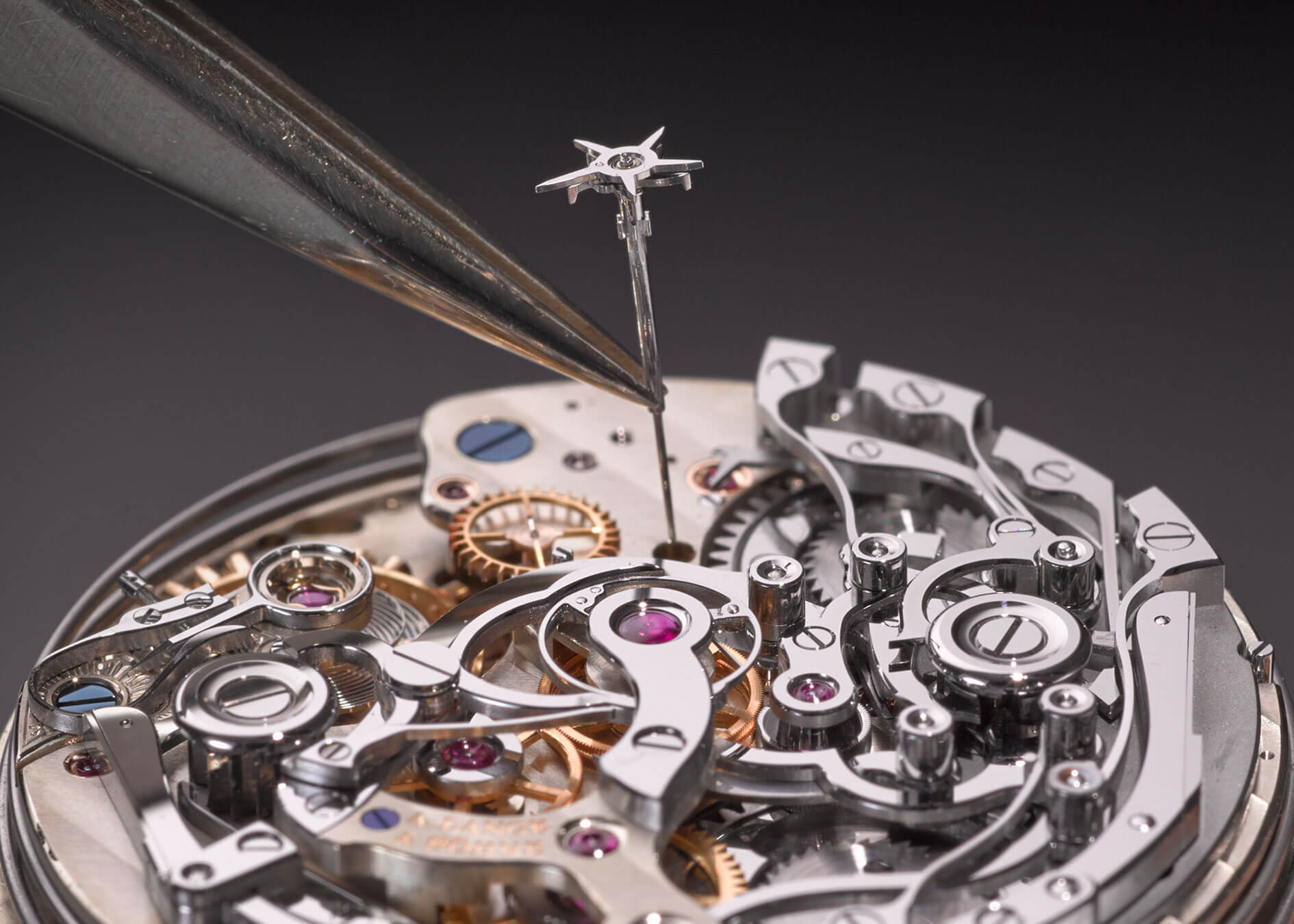
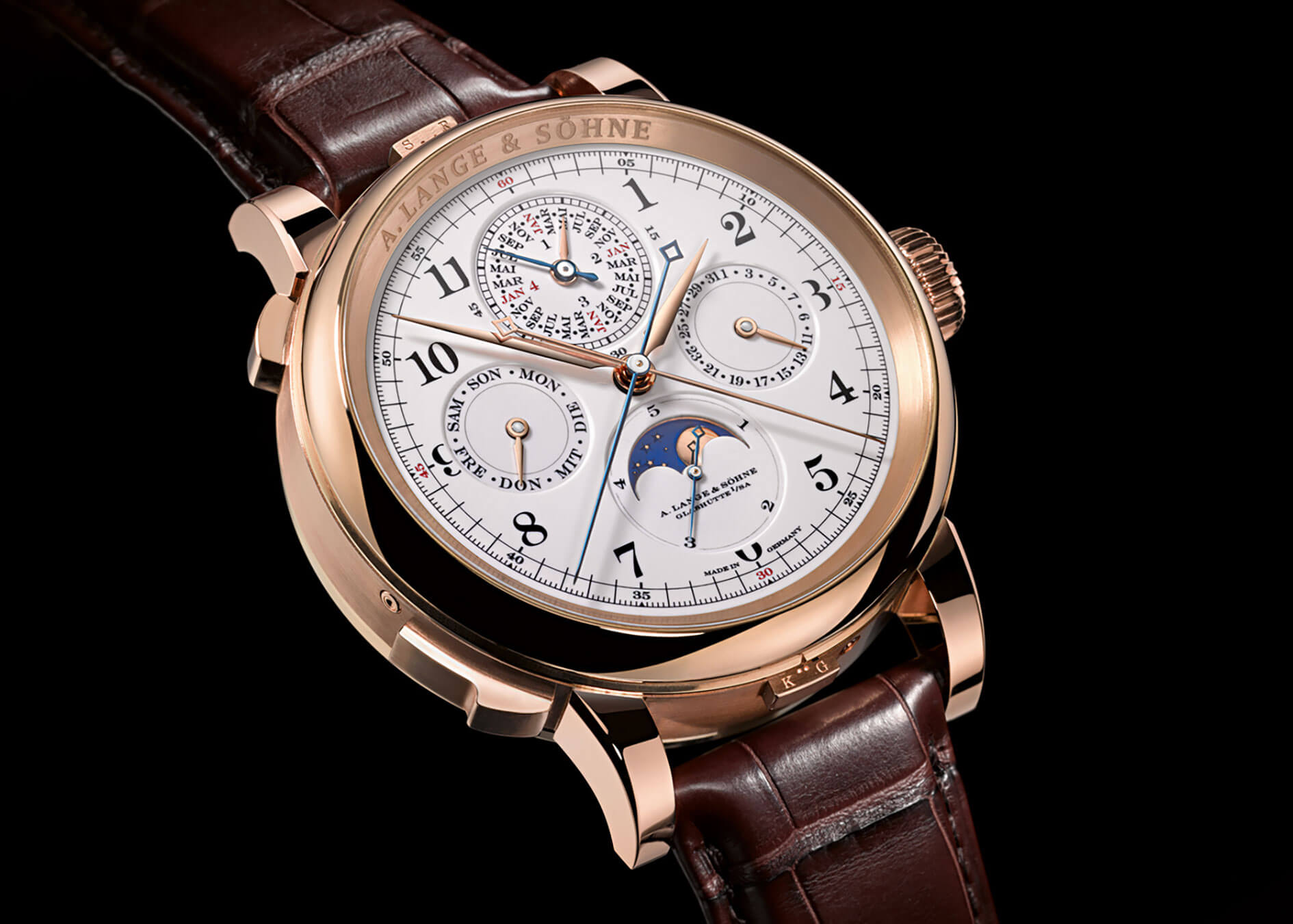
Grand Complication, Ref.: 912.032, Calibre L1902, Number of movement parts: 876.
Complications: Calendar function, Moon phase display, Striking mechanism function, Chronograph, Weekday display
A timepiece for eternity: The Grand Complication No. 42500 by A. Lange & Söhne
Maybe a few more sentences for inspiration for the first Grand Complication of the modern era: the pocket watch No. 42500 from the year 1902 remains one of the most complicated pocket watches ever made. It features a striking mechanism with an hourly grand strike and a quarter-hourly small strike, a minute repeater, a split-seconds chronograph, a stopwatch with intermediate time and fifth-second division. In addition to the main dial, the watch has four circular small displays, including a perpetual calendar at 12 o’clock, a day indicator in the current month at 3 o’clock, a moon phase display at 6 o’clock, and a day of the week display at 9 o’clock. The calendar synchronises all displays daily precisely at midnight, except for the moon. Its movement with a nickel-plated German silver plate consists of 833 individual pieces and weighs a total of around 300 grams. All Arabic numerals and symbols on the enamel dial are hand-painted.
5,600 gold marks – Five years’ salary
This watch was sold in 1902 to a private individual in Vienna. Thanks to a handwritten entry in the family register, we know that the purchase price was 5,600 gold marks. At that time, this corresponded to the equivalent of five years’ salaries for a teacher. In 2001, it reappeared with a heavily corroded and partially incomplete movement. After several years of restoration at A. Lange & Söhne, the watch was first exhibited at the former Geneva Watch Salon in 2010 and is now on permanent loan at the Mathematisch-Physikalischer Salon in the Dresden Zwinger. It inspired the development of the first Grand Complication by Lange & Söhne in a wristwatch, introduced in 2013.

But let’s return to the most important different classes of movements at A. Lange & Söhne.
An overview: The most important movement types from A. Lange & Söhne
The history of automatic movements at A. Lange & Söhne
The first wristwatch from Lange with an automatic movement was the Langematik in 1997 with a small rotor, but it did not have a classic micro-rotor, which gives it an interesting position. The calibre L921.2 bears the charming name SAX-0-MAT. The “0” in the name SAX-0-MAT, read as the letter “O”, refers to this extraordinary function, “SAX” stands for the state of Saxony – and “MAT” for the automatic winding.
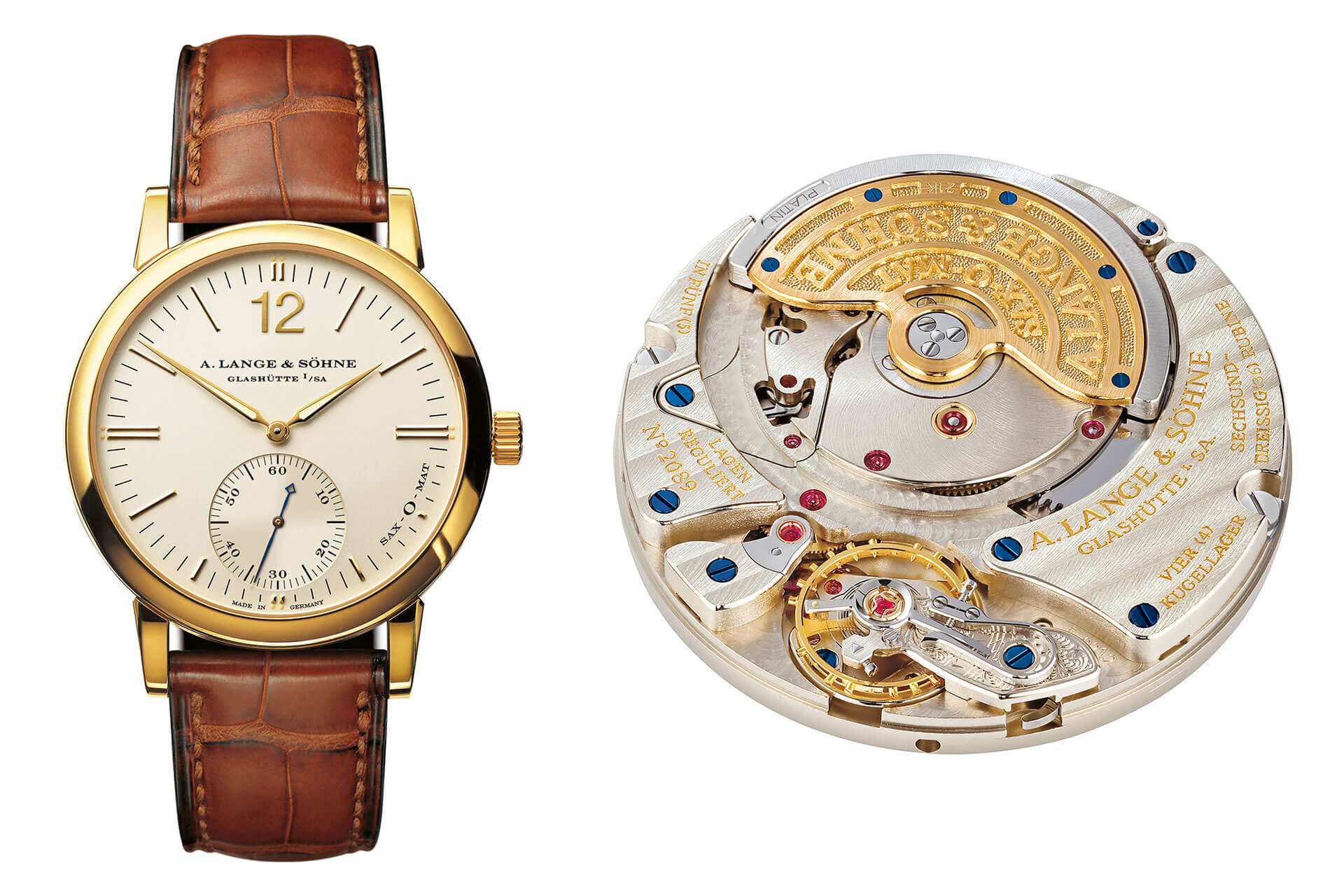
Langematik 301.021, calibre L921.2 ‚Sax-0-Mat‘
The Lange three-quarter rotor
Text Text Text TAt Lange, this rotor is called the “three-quarter rotor” because it is fitted into the brand-typical three-quarter plate, allowing an unobstructed view of the escapement. Its central segment is made of 21-carat gold, while the outer oscillating mass is made of 950 platinum. The winding energy is transmitted towards the barrel through a low-friction winding and reduction gear with four ball bearings. Another innovation is the patented Zero-Reset mechanism, which we will explain at the very end of this story. The developers’ task also included making sure the finely finished balance cock remained visible, so the oscillating mass did not cover it. And of course, at Lange, the rotor had to be very efficient and bidirectional.
A chief designer who paints watercolours in his spare time
Incidentally, the idea for this movement came from the then-chief designer Helmut Geyer. He put his ideas down on paper in watercolour drawings in his spare time. And only after he had clarified all the important design questions did he present them to management. He is now retired, but his son still works at the company today – also as a designer. What could better describe the familial character of this company? The initial power reserve was an impressive 46 hours, but today we know: from 2003 onwards, thanks to our own balance spring, it could do much more.
True engineering artistry is demonstrated in mechanical watches by the power reserve
Engineering excellence is also evident at Lange in the improvement of power reserve over the decades: the first in-house chronograph movement in the Datograph had only a 36-hour power reserve, while its successor already had 60 hours in 2012. The first Zeitwerk in 2009 also had 36 hours, while the successor Zeitwerk Date ten years later in 2019 had twice that, 72 hours. It can be said that since the restart in 1994, the topic of power reserve has been a central pillar in movement development: with the Lange 1 featuring a three-day power reserve, Lange set a benchmark in 1994 achieved through two stacked mainspring barrels. The beautiful German term “Doppelfederhaus” (double barrel), which even made it onto the dial, speaks to the enormous importance of this topic at Lange. Of course, later on, they found technical ways, like with the Grand Lange 1, to achieve this 72-hour power reserve with just one mainspring barrel. The Saxonia today also achieves this power reserve with just one mainspring barrel.

Datograph 403.035, calibre L951.1

Datograph 405.035, calibre L951.6
Good service is not an empty promise at Lange & Söhne
All movements at Lange are fundamentally further developed to make them more service-friendly – a virtue that many watch fans know from none other than Rolex. And at A. Lange & Söhne, not all improvements are communicated in detail. A small example: with the Lange 1, which received a new movement in 2015, many things initially look very similar for the wearer, but now they get a date that changes exactly at midnight. It’s such details that always delight Lange collectors.


Zeitwerk, calibre L043.1 (left) and Zeitwerk Date, calibre L043.8 (right)


Lange 1, calibre L901.0 (left) und Lange 1, calibre L121.1 (right)
The Lange central rotor movements
Despite the innovative three-quarter rotor concept, Lange did not shy away from a central winding rotor. It began with the Lange 1 Daymatic in 2010. To differentiate this watch from the classic Lange 1 with a hand-wound movement, the engineers developed not only the self-winding mechanism but also a mirror-image dial design with a retrograde day of the week display, which became the hallmark of the first Lange 1 with an automatic movement.
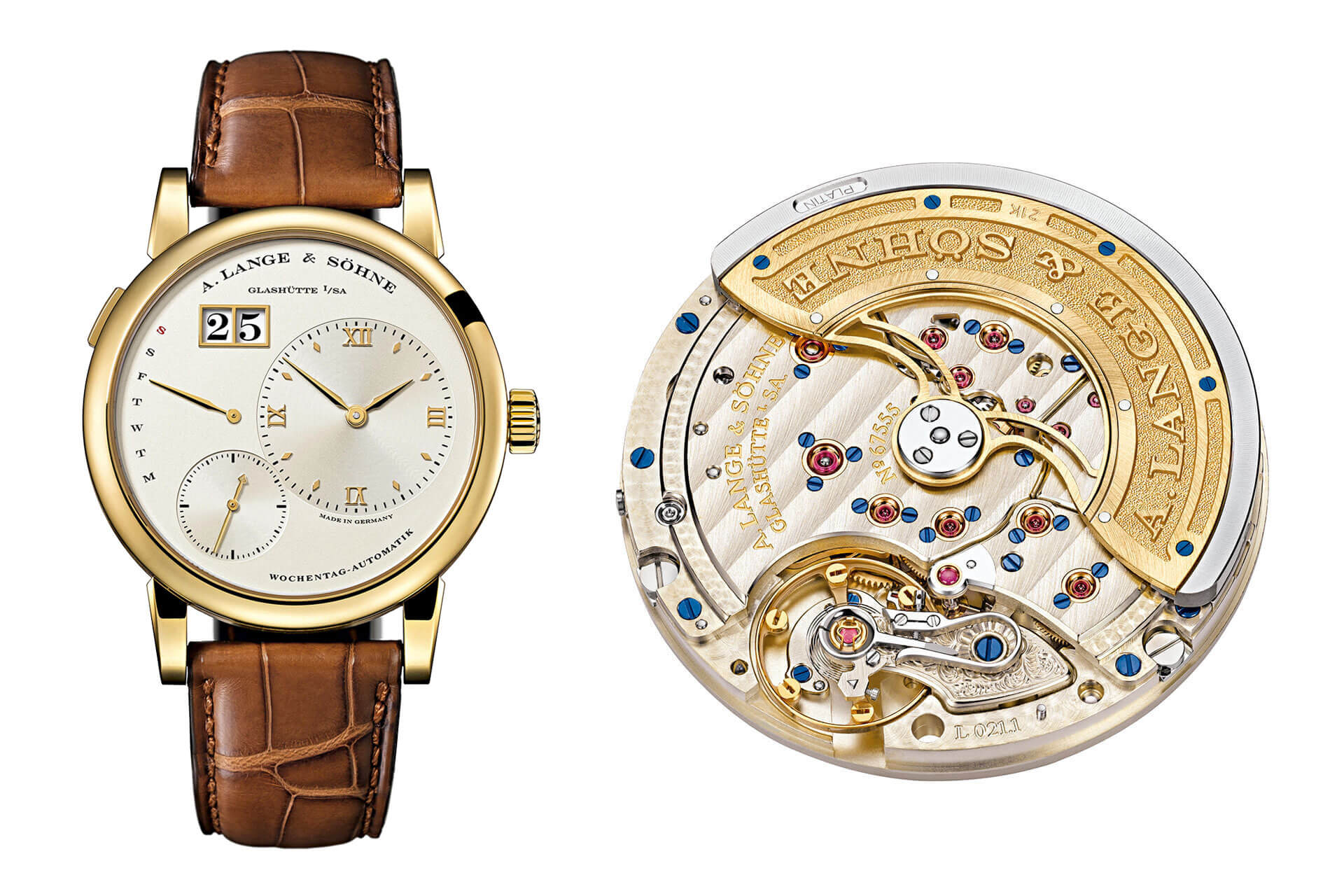
Lange 1 Daymatic 320.021, calibre L021.1
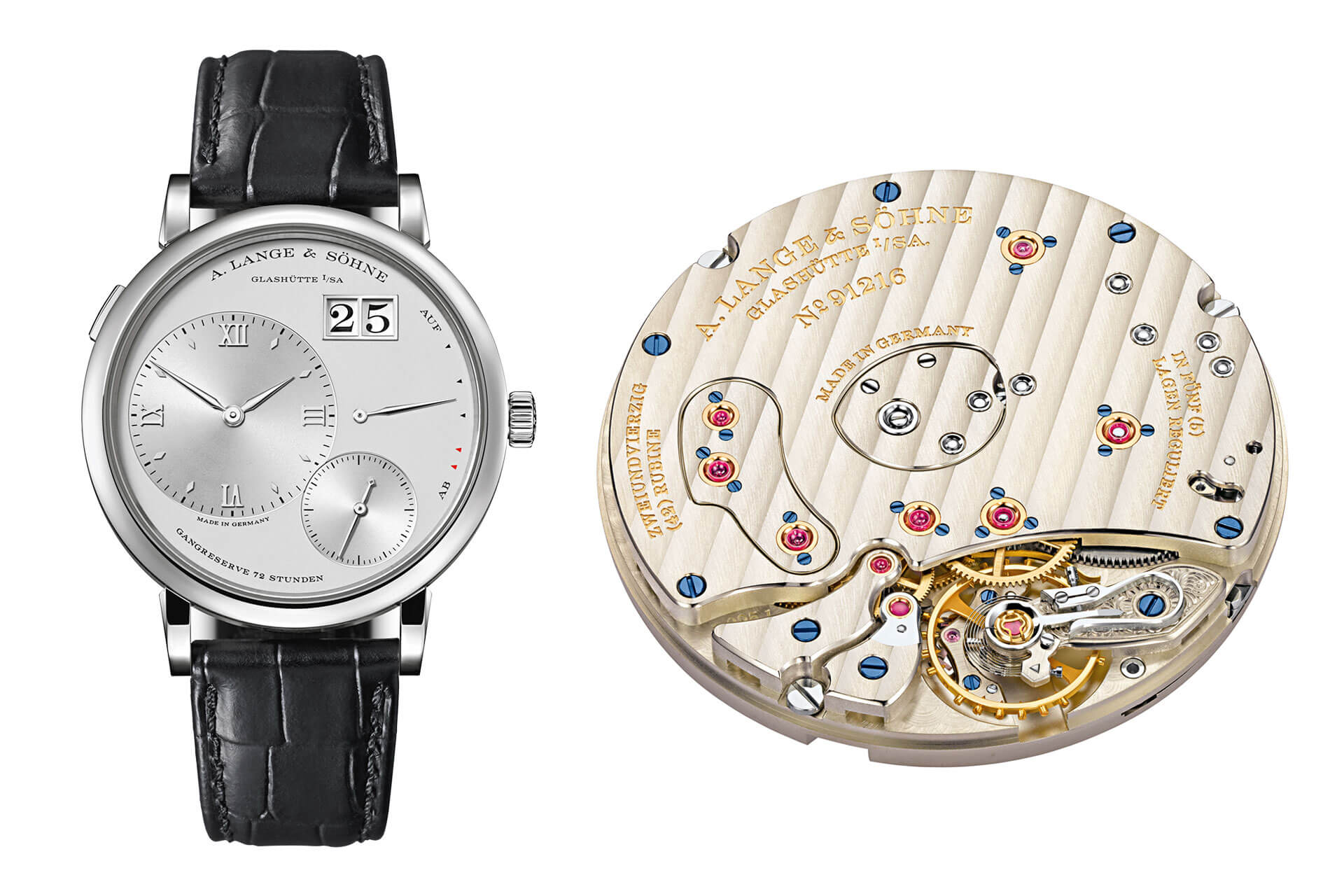
Lange 1 with Manual Winding 117.025, calibre L095.1
A top-notch entry-level movement
Then followed the Saxonia Automatic in 2011. Especially in this entry-level line, one can see the incredible technical excellence of the developers from A. Lange & Söhne: the first Saxonia movement from 1997 contained 307 components, while the revised version had almost 100 fewer, exactly 209. This is also a clear indication that Lange works according to the principle: less is sometimes more. Almost a hundred parts are a lot, especially when the power reserve increases from 46 to 72 hours at the same time. On such topics, the engineers also like to depart from the rather charming principle of the three-quarter rotor and rely on a much more efficient central rotor. Likewise, this watch only has 31 ruby bearings instead of the previous 36. Watchmaking is also about getting by with as few parts as possible. To this day, the Saxonia range represents the entry-level segment for A. Lange & Söhne in terms of price, which is also likely one of the reasons why, even for an absolutely renowned movement manufacturer, they resorted to a simpler but no less efficient movement that was astonishingly still designed in-house and produced with an in-house manufactured balance spring.

Calibre L921.2 ‘Sax-0-Mat’, number of components: 307
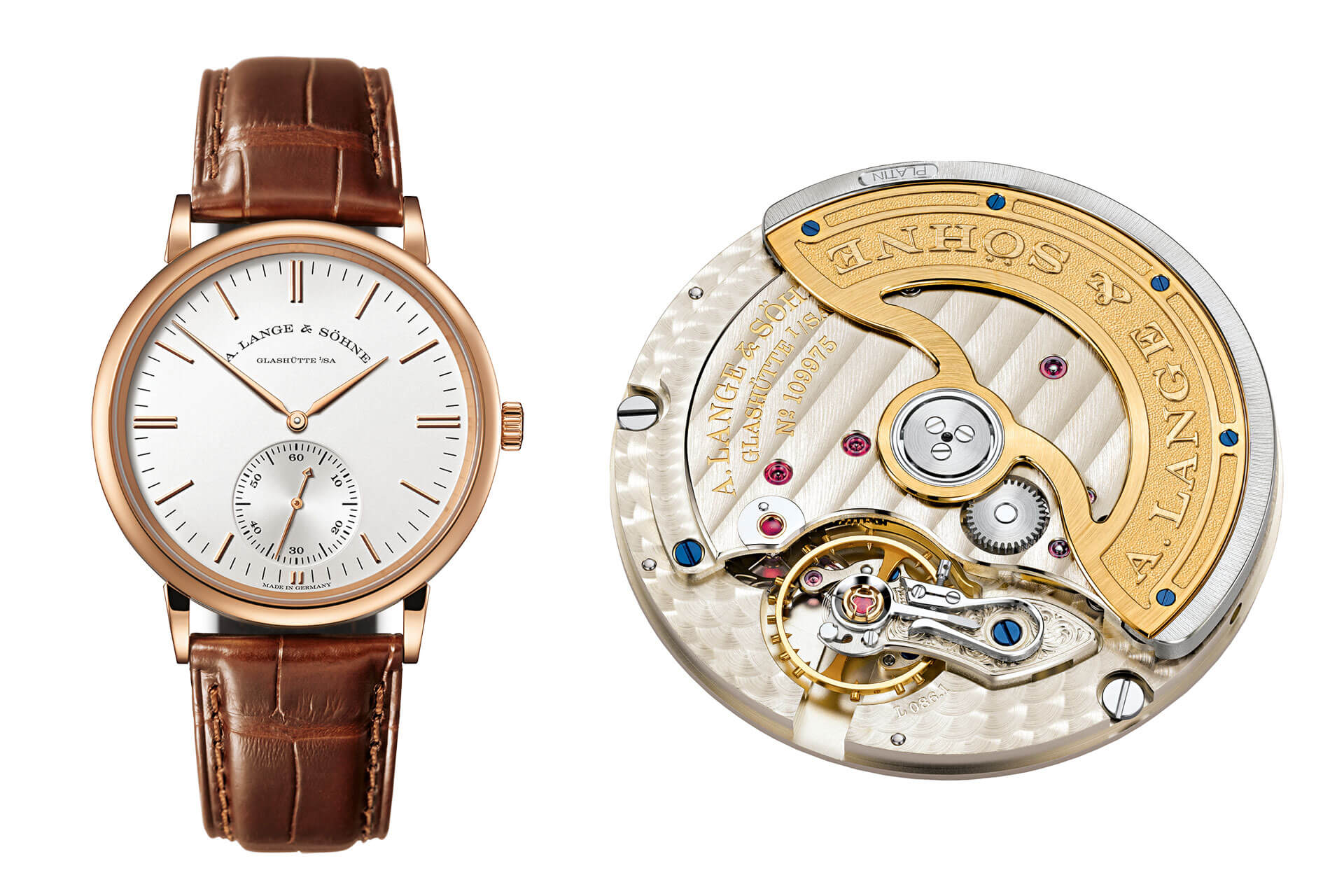
Calibre L086.1, number of components: 209
A bombshell for the watch world: The first chronograph movement in over 30 years
Let us come to a ground-breaking creation by A. Lange & Söhne. The first Datograph caused a sensation internationally in 1999, as none of the major manufactures were producing their own chronograph movements at that time. With the calibre L951.1, A. Lange & Söhne presented the first chronograph movement in 1999 that had been completely newly developed in the entire watch industry in about three decades. For context: even Patek Philippe used chronograph movements from Lemania back then. Essentially, one could say that the Datograph woke up some Swiss manufactures and made them realize that they had to counter with their own movement developments if a small German manufacture, which was just celebrating its five-year comeback, was capable of developing such a movement in-house. The Swiss could not let that sit.

What makes the hand-wound calibre of the Datograph from 1999 so special?
The construction of the patented, precisely jumping minute counter enables unambiguous determination of stop time. And the integrated flyback function allows you to stop a running time measurement, reset the hands to zero, and start a new measurement with just one push of a button. For the first time, the calibre also combines a chronograph with the patented large date from A. Lange & Söhne.
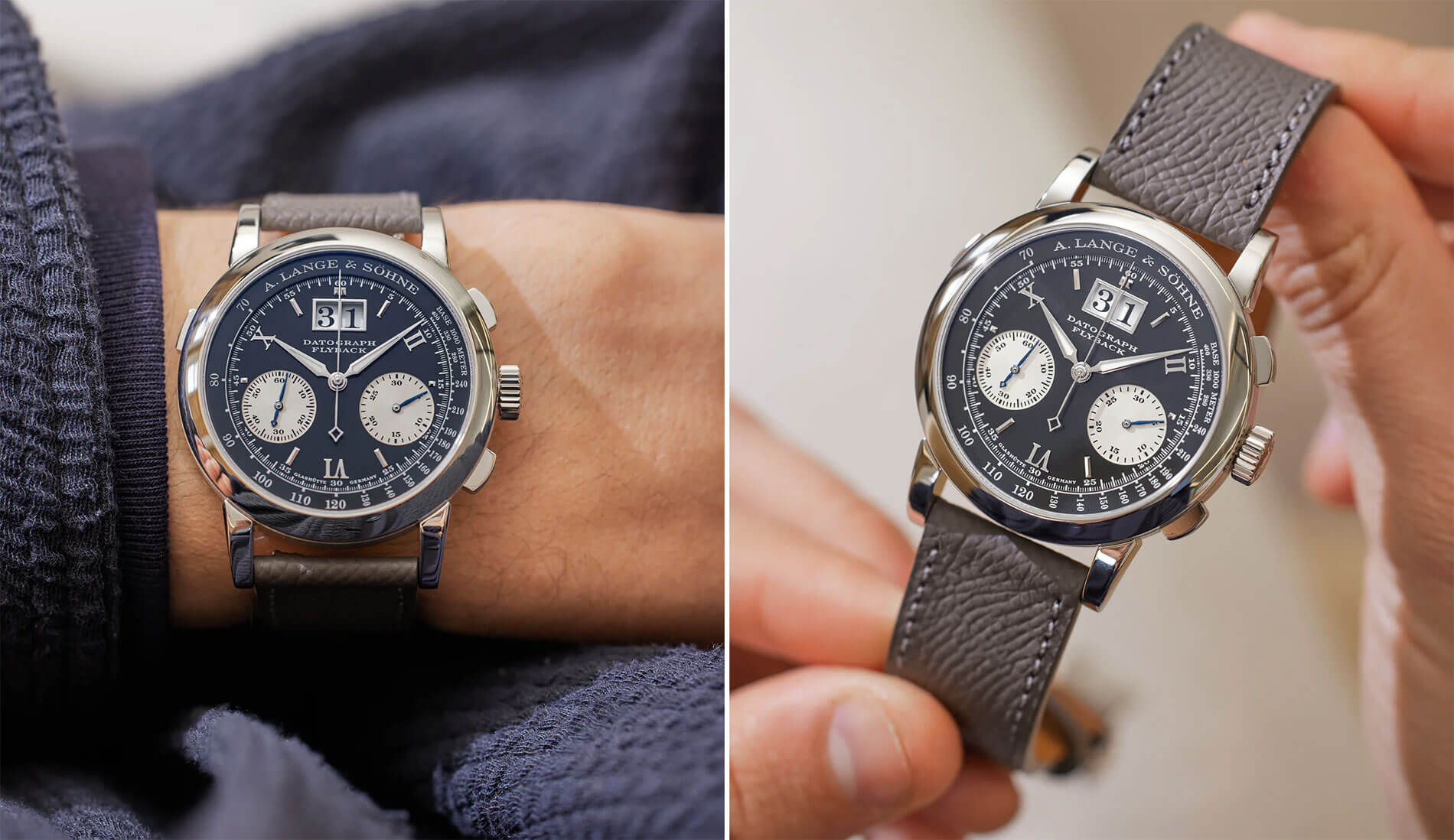
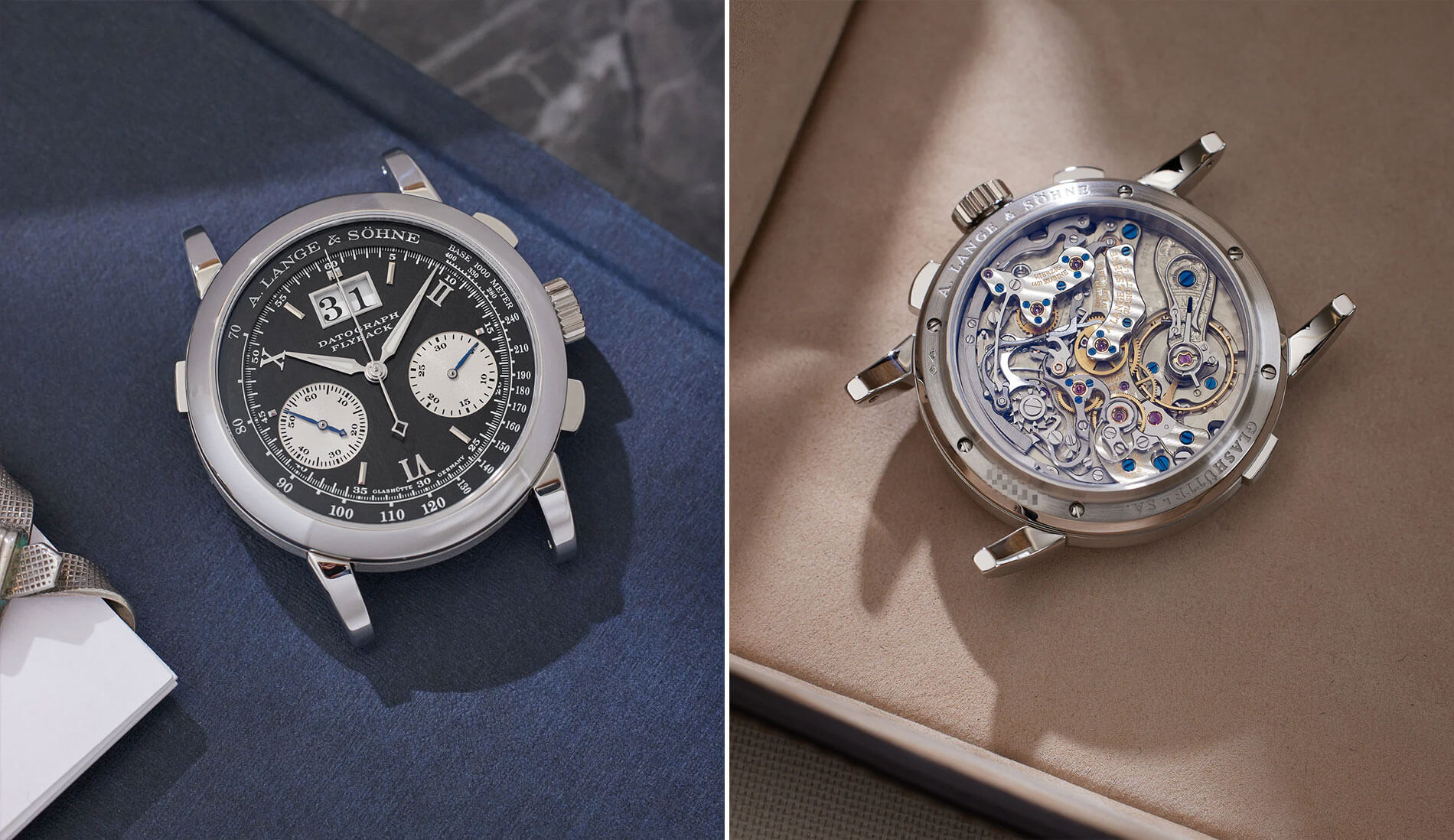
Datograph, 403.035, Platinum
Credit © A Collected Man
The quantum leap in chronograph construction: Double Split
But at Lange, they were already a step ahead. Five years later, the Double Split followed, a rattrapante chronograph that, for the first time, increased the measuring range of intermediate and comparative time measurements in a wristwatch from one minute to an unprecedented 30 minutes. At the same time, the first balance spring developed and produced in-house by the Lange manufacture debuted in the calibre L001.1.

Double Split 404.032, calibre L001.1
30 minutes measurement range instead of just one
The far more obvious innovation in this movement, however, was of course the world’s first double rattrapante mechanism. Thanks to a second pair of stop hands for the minutes, the measurement range is now extended to 30 minutes, opening up many additional application possibilities. With the Triple Split and its calibre L132.1, this self-set record was broken once again 14 years later. Its additional pair of hour hands finally increases the time span for comparative time measurements to twelve hours. The in-house balance spring now provided great freedom in movement development at Lange. This has a completely different meaning than heating screws to a blue colour. Lange was now able to finely adjust the heart of every mechanical watch, the balance, very precisely to the characteristics of the movement. In 2023, the calibre L156.1 premieres in the Odysseus Chronograph, Lange’s first automatic chronograph movement with an innovative, dynamic zero-reset of the stop hands.
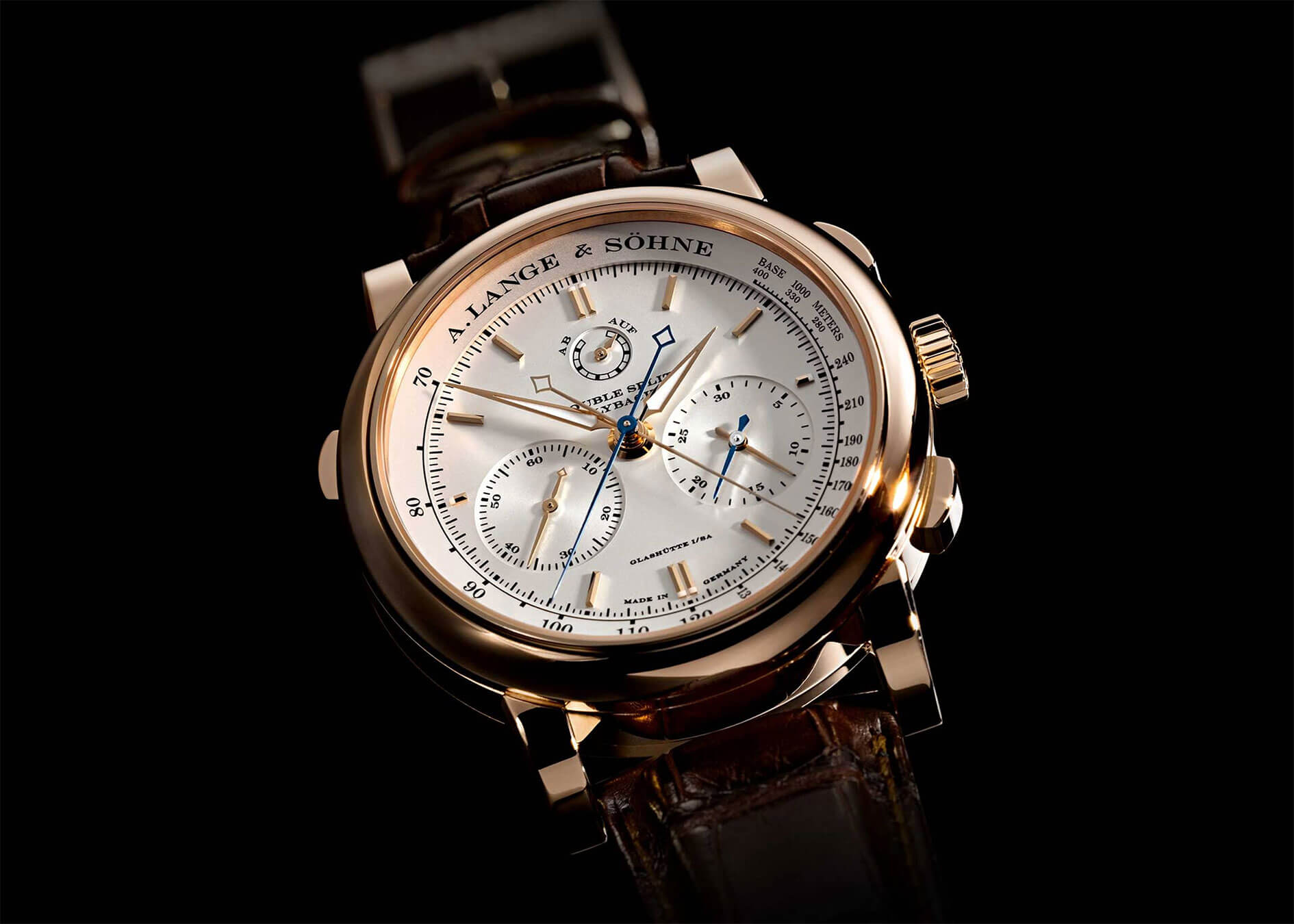
Double Split
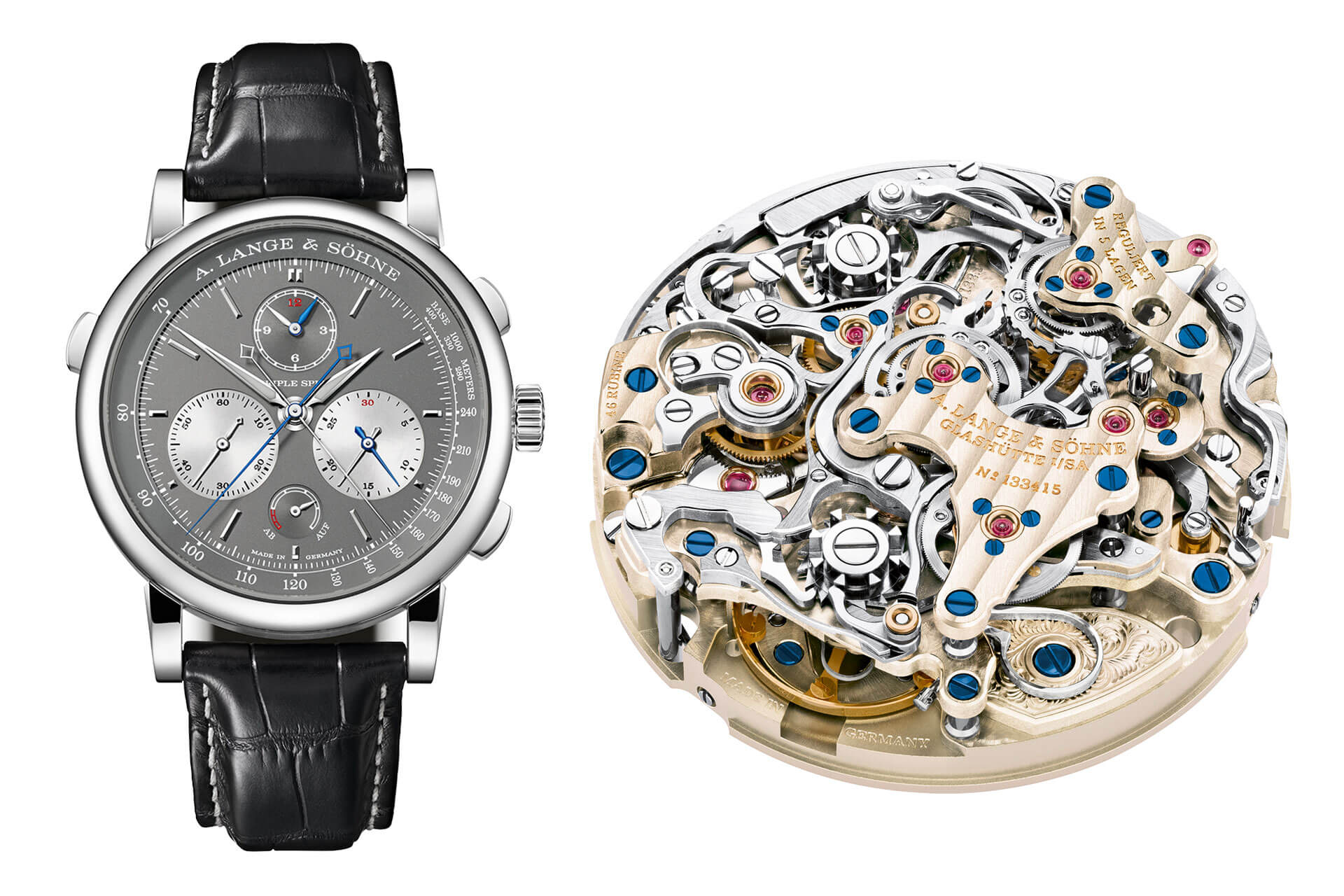

Triple Split 424.038, calibre L132.1 und Odysseus Chronograph, calibre L156.1
The most important models with a tourbillon mechanism
As mentioned at the beginning, a watch in the first collection was already equipped with this delicate tourbillon mechanism, which traditionally compensates for the effect of gravity on the movement. The design of A. Lange & Söhne’s tourbillon cages naturally follows historical Lange pocket watches, but in wristwatches, they are miniaturised many times over. The first tourbillon was the aforementioned “Pour le Mérite,” followed by the Lange 1 Tourbillon in 2000, another world premiere. At the turn of the millennium, this first wristwatch appeared with the combination of a tourbillon, large date, three-day movement, and power reserve indicator. In 2005, the Tourbograph “Pour le Mérite” followed, featuring the complicated Lange calibre L903.0, which for the first time combined a split-seconds chronograph with a tourbillon and chain and fusée drive. The latter additionally compensates for the loss of torque from the mainspring.
Innovation in the tourbillon over 200 years after Abraham-Louis Breguet
In 2008, the Cabaret Tourbillon marked a world premiere in a rectangular-shaped piece: more than 200 years after the invention of the tourbillon by Abraham-Louis Breguet, A. Lange & Söhne succeeded for the first time in creating a stop-seconds mechanism for the balance wheel mounted in the rotating cage. How this works, you will learn at the end of this text.
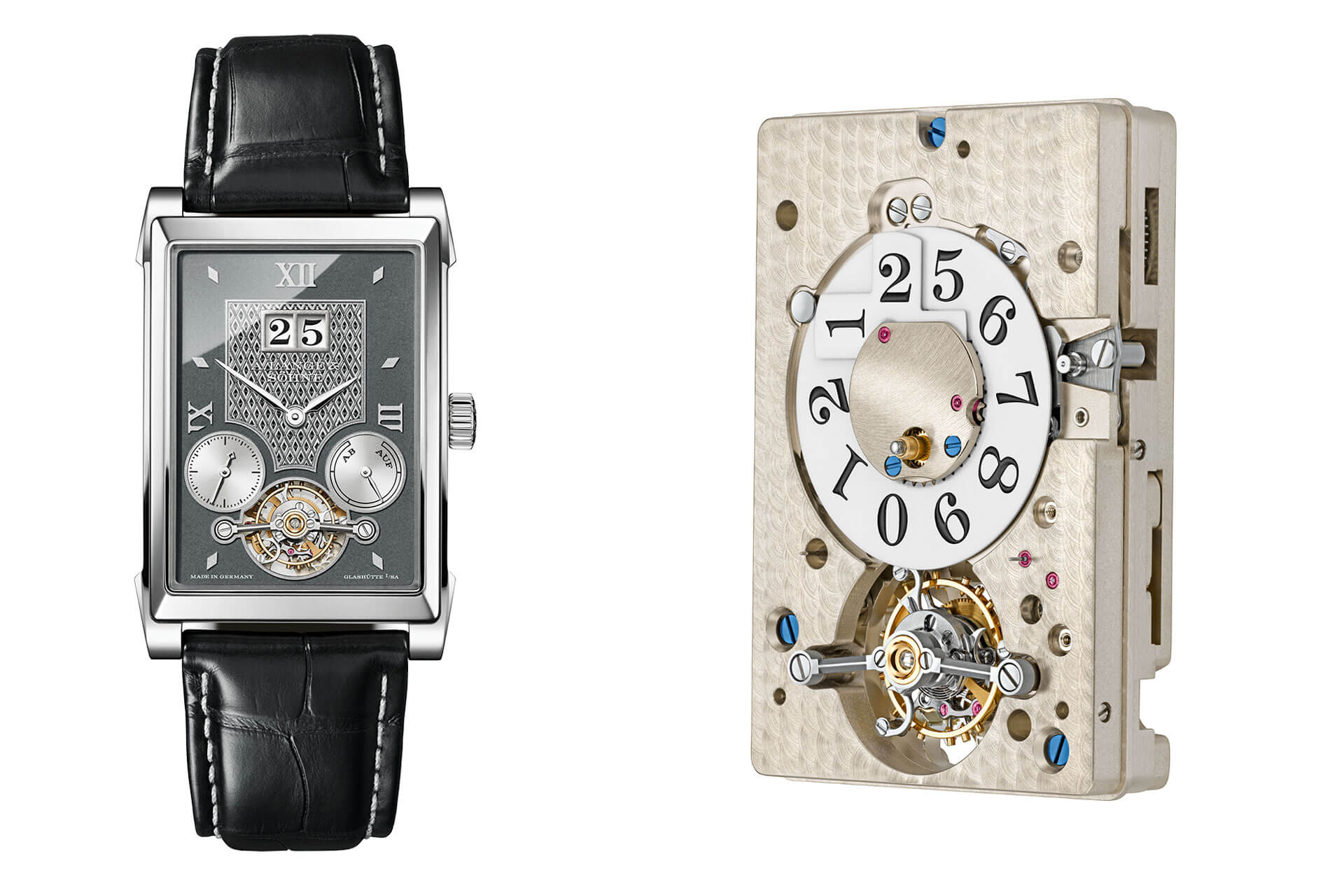
The special challenge was to operate with a stop device within the tourbillon cage. If you suddenly stop only the tourbillon cage, the balance wheel unfortunately oscillates slowly, which would cause the seconds hand to come to a slow stop. Lange solved the problem by introducing a special spring break that presses against the balance wheel rim through a complex lever mechanism.
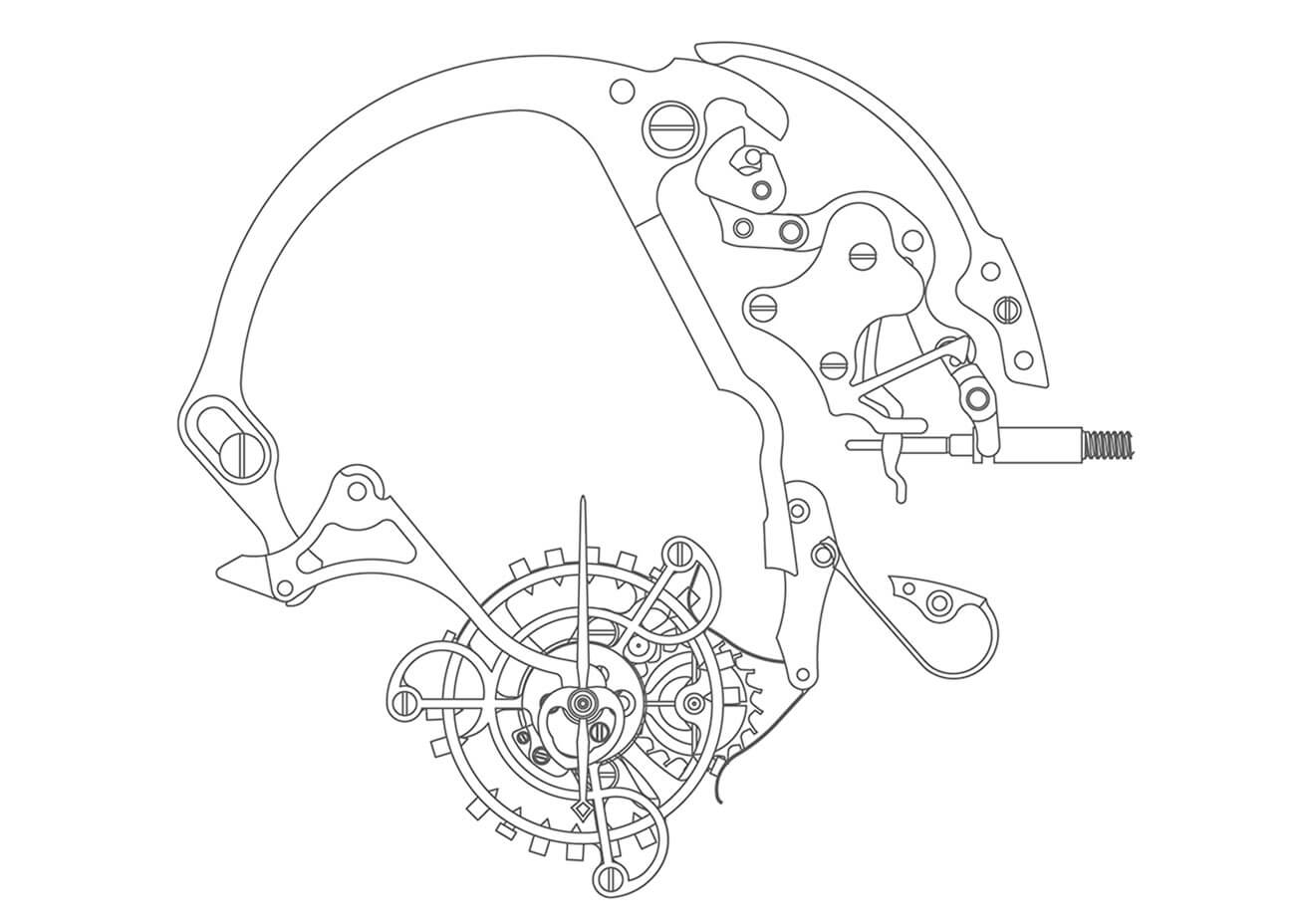
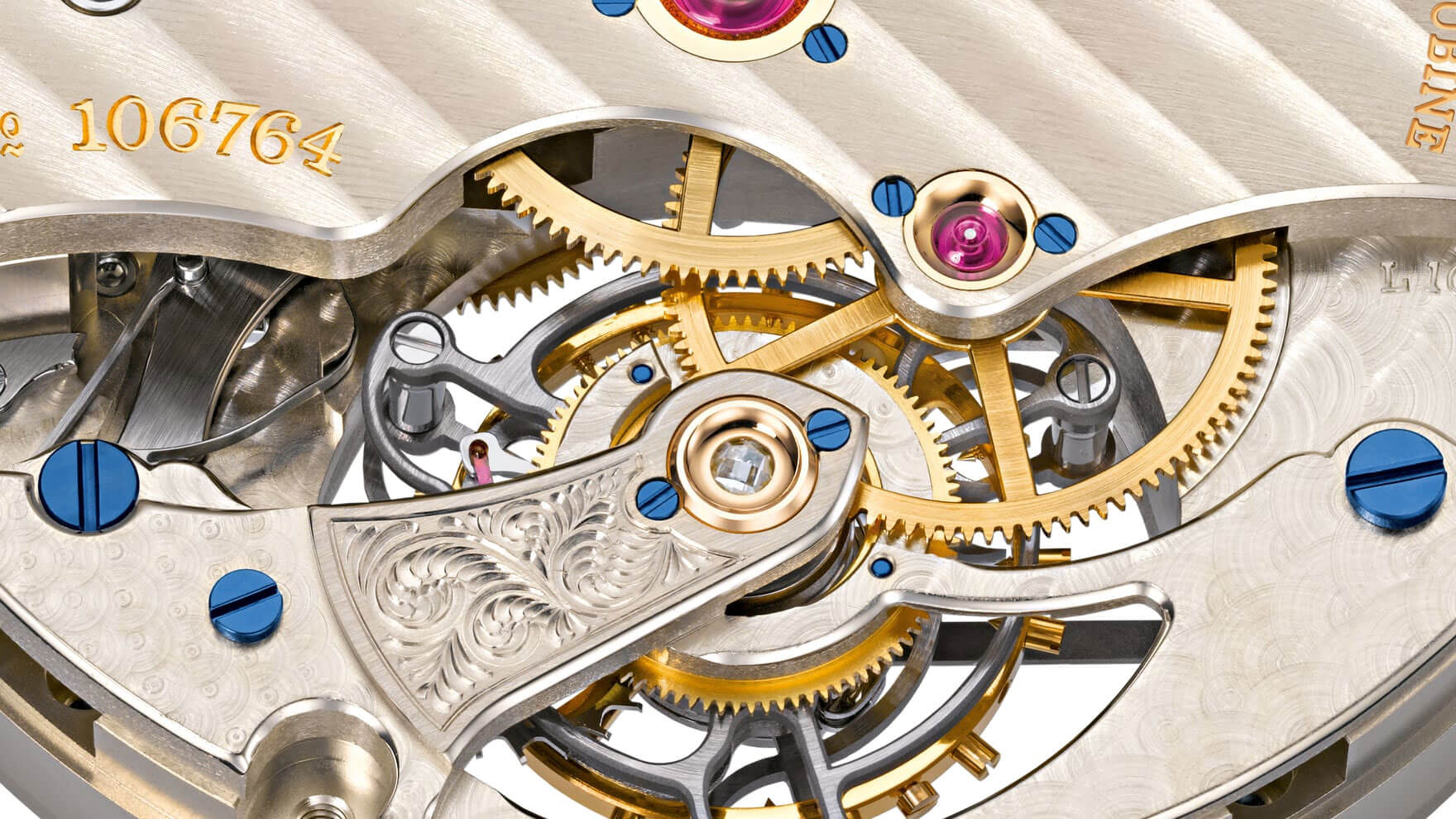
Zero-Reset Function: 1815 Tourbillon
The exciting part: the shape of the stop spring had to be empirically determined and cannot be described mathematically. Only the “Pour le Mérite” movements have not been equipped with this function since they firstly do not have second hands and secondly are dedicated entirely to the principles of traditional fine watchmaking, following the previously described Double Track Approach.
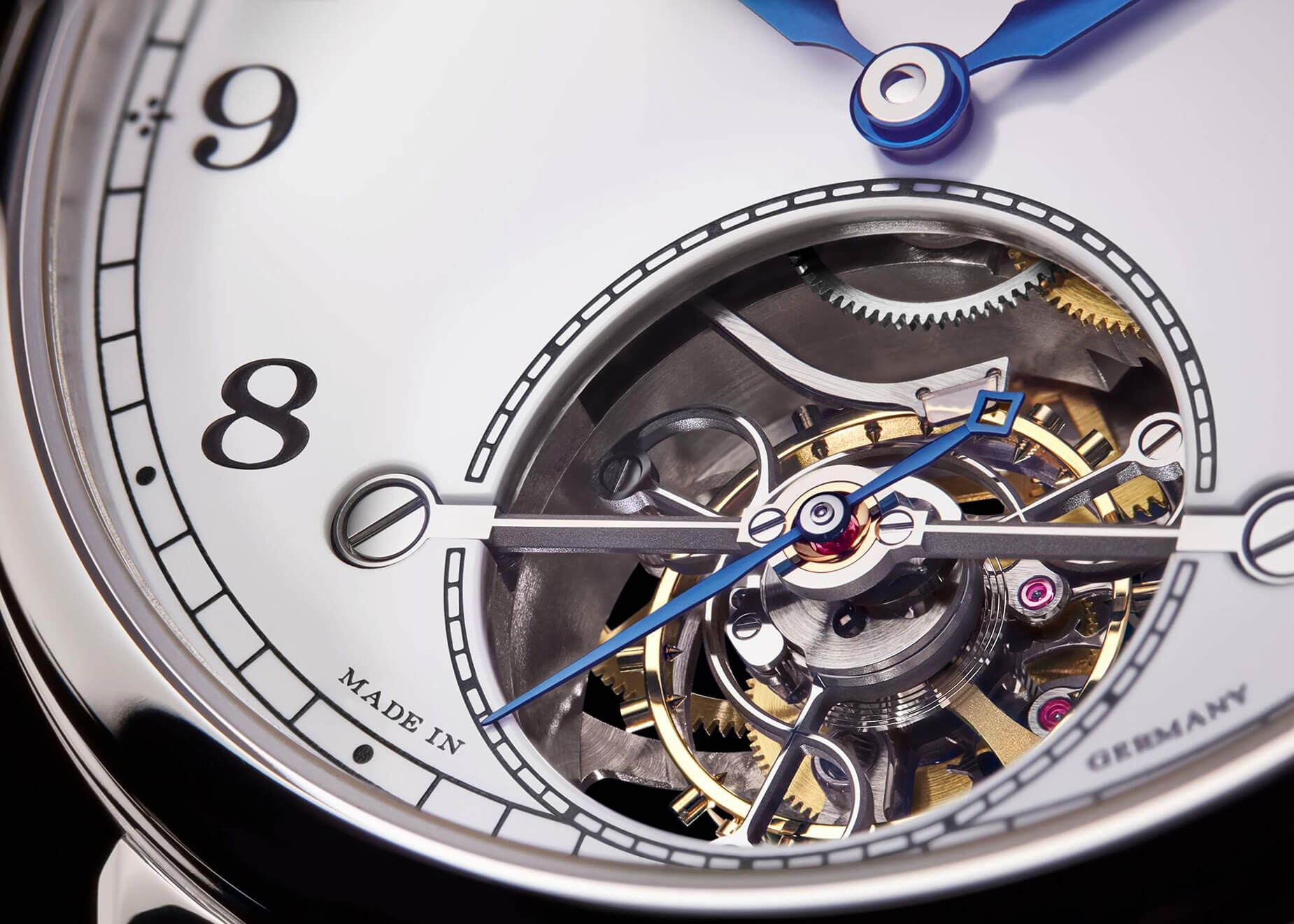
1815 Tourbillon with seconds hand
In the 1815 Tourbillon, this innovation was combined with the Zero-Reset mechanism for the first time in 2014 to allow a wristwatch to be set with absolute second precision. The 2016 Datograph Perpetual Tourbillon also features this stop mechanism since it has a seconds hand. However, the tourbillon mechanism can only be viewed from the movement side, a fate that this watch shares with the Lange 1 Tourbillon Perpetual Calendar launched in 2012.
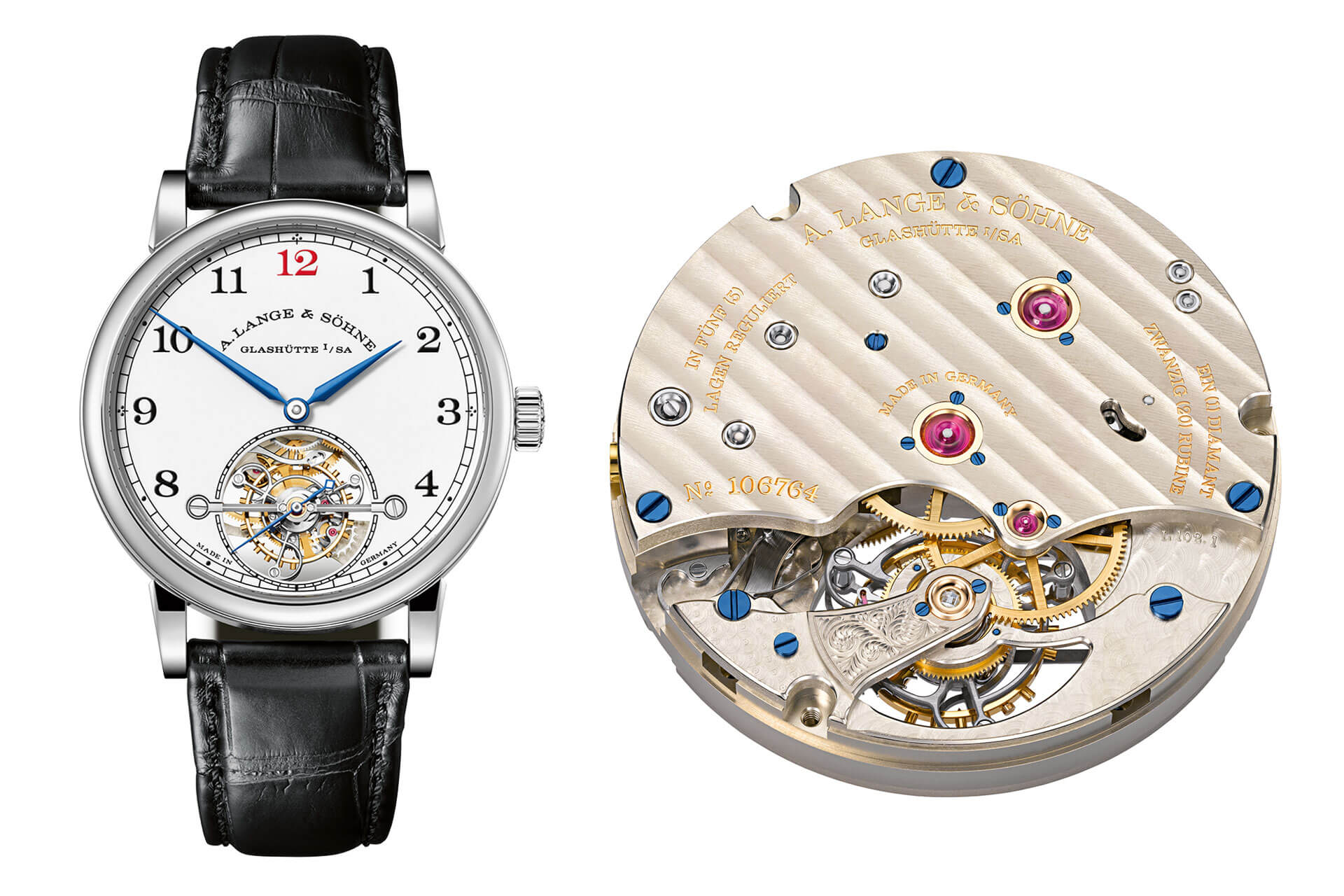
1815 Tourbillon 730.079, calibre L102.1
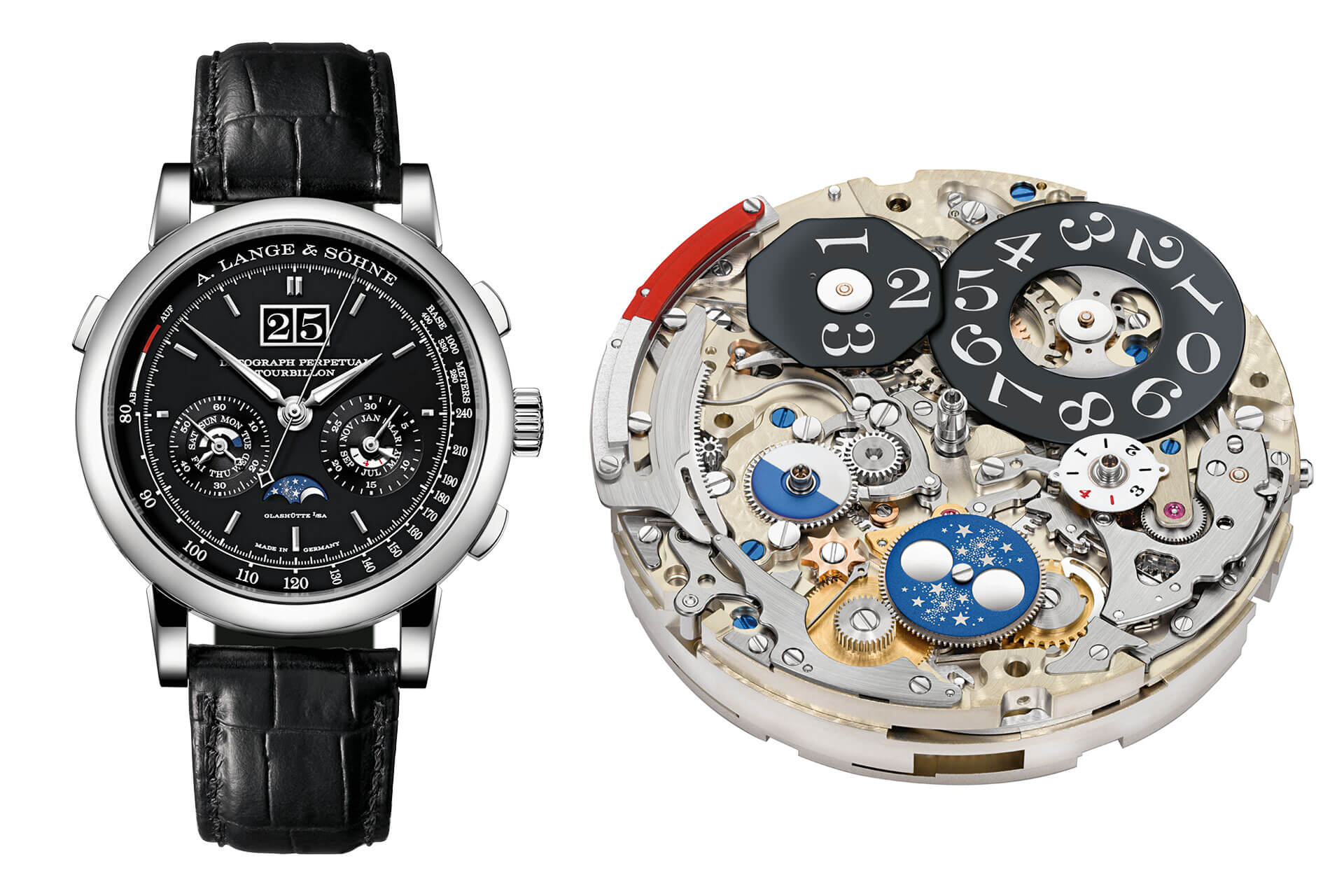
Datograph Perpetual Tourbillon 740.036, calibre L952.2
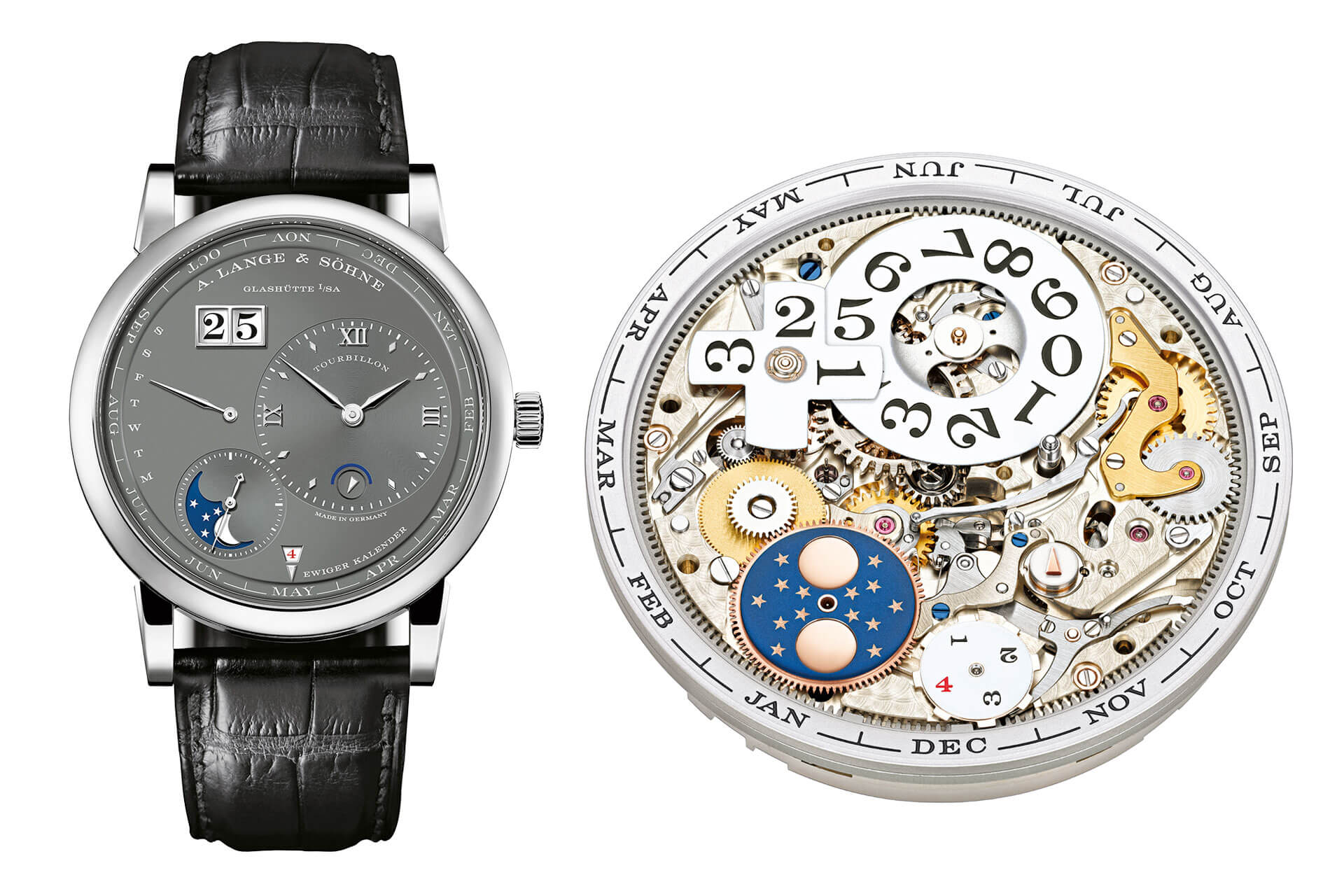
Lange 1 Tourbillon Perpetual Calendar, calibre L082.1
Repeater watches by A. Lange & Söhne
The Zeitwerk Striking Time from 2011 was the first mechanical watch by Lange to feature a striking mechanism. It automatically chimes the quarter and full hours. The quarter-hour intervals are each marked with a bright tone, and a dark tone sounds on the hour. And, of course, this complication at Lange respects the repeatedly described principle of useful functions: the chiming can be turned off at any time, especially at night.
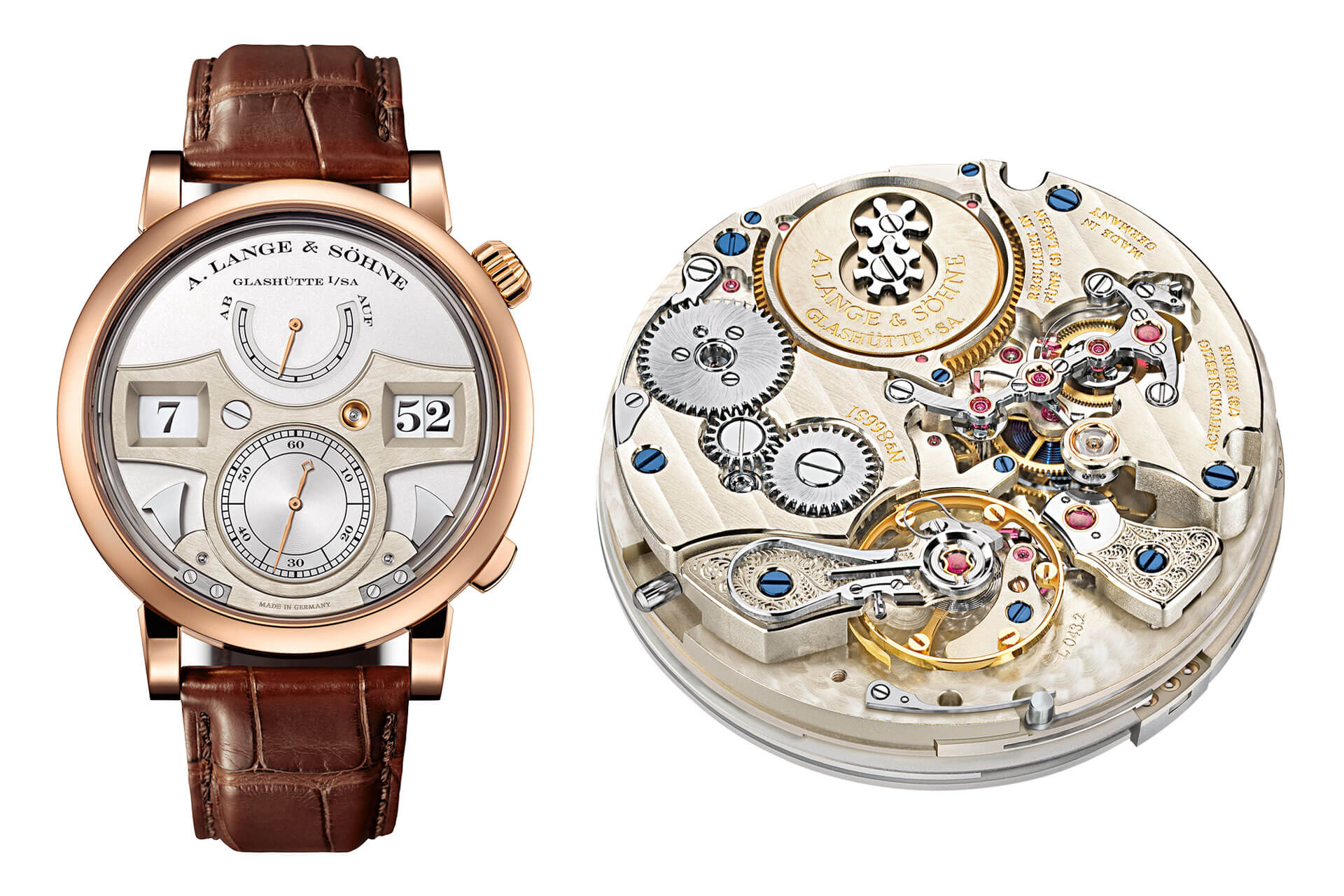
The most complicated wristwatch by A. Lange & Söhne
The first minute repeater was the above-mentioned Grand Complication in 2013. The manufacture calibre L1902 is still the most complicated wristwatch movement ever made by A. Lange & Söhne. It combines a perpetual calendar with moonphase display, a rattrapante chronograph with minute counter, a jumping second, and a striking mechanism with Grande Sonnerie, Petite Sonnerie, and a minute repeater. Altogether, the watch has three barrels: one for the timekeeping, one for the chronograph with jumping seconds, and one for the striking mechanism, which provides enough striking power for 24 hours. This movement consists of 876 parts and requires a high level of patience from the watchmaker. During assembly, any incorrect tone requires the entire movement to be disassembled to find the error. The model was limited to six pieces, whose production took several years. It showcased the full craftsmanship of A. Lange & Söhne. In 2015, the Zeitwerk followed as the first decimal minute repeater.
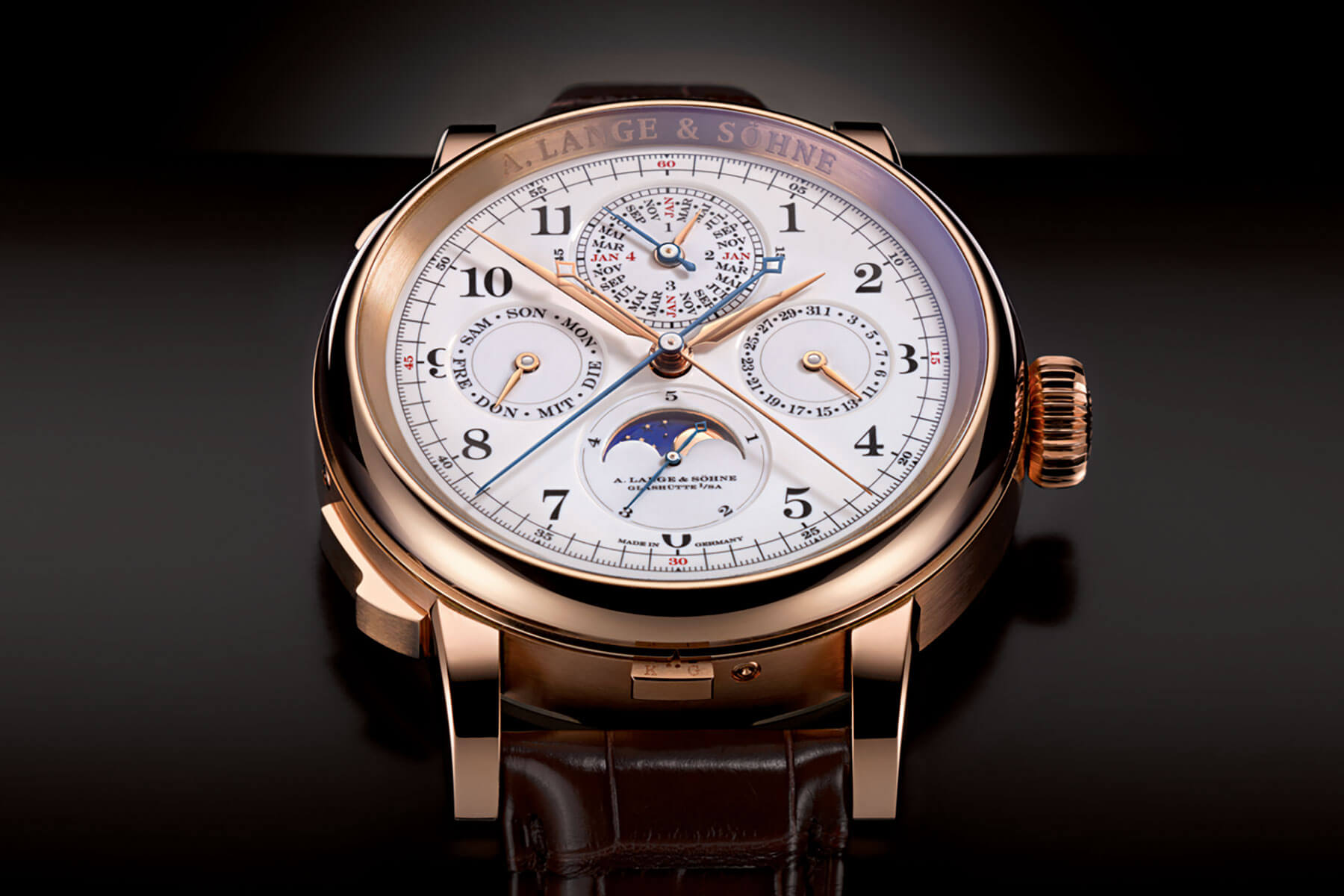
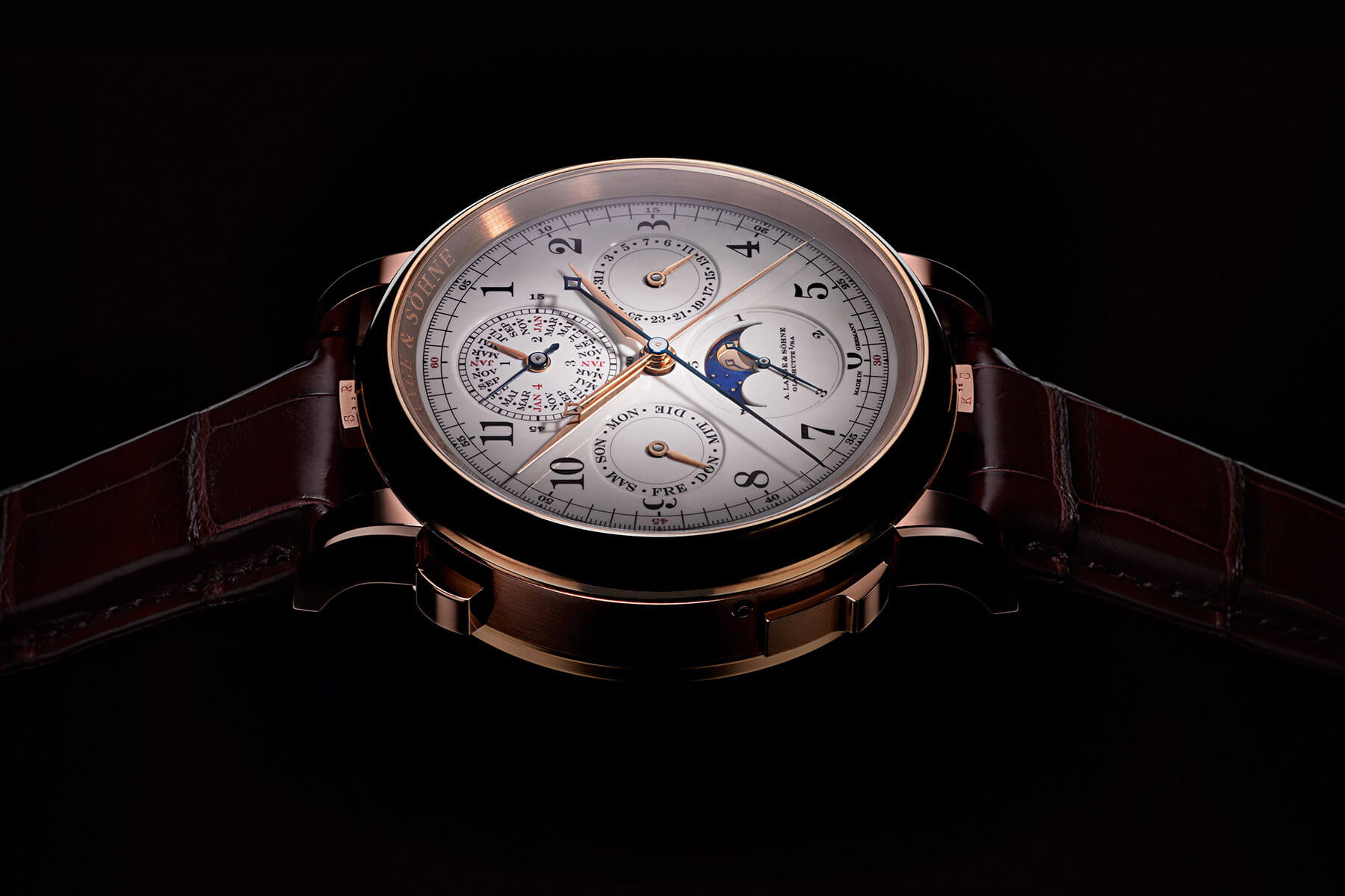

1815 Grand Complication 912.032, calibre L1902
Traditional but extremely innovative
The Richard Lange was launched in 2022 as a minute repeater, implementing traditional themes without sacrificing innovation: for instance, the striking mechanism features a pause elimination. This prevents the usual pause between the hour and minute strikes that occurs when no double strike for the quarter hour is triggered in the first 14 minutes past the hour. A safety mechanism ensures that the minute repeater cannot be activated when the crown is pulled out. Additionally, the crown cannot be pulled out when the striking mechanism is active. A patented hammer lock prevents the hammers from accidentally striking the gongs multiple times. Since 2006, the Richard Lange models have continued the tradition of scientific observation watches with utmost precision and optimal readability.
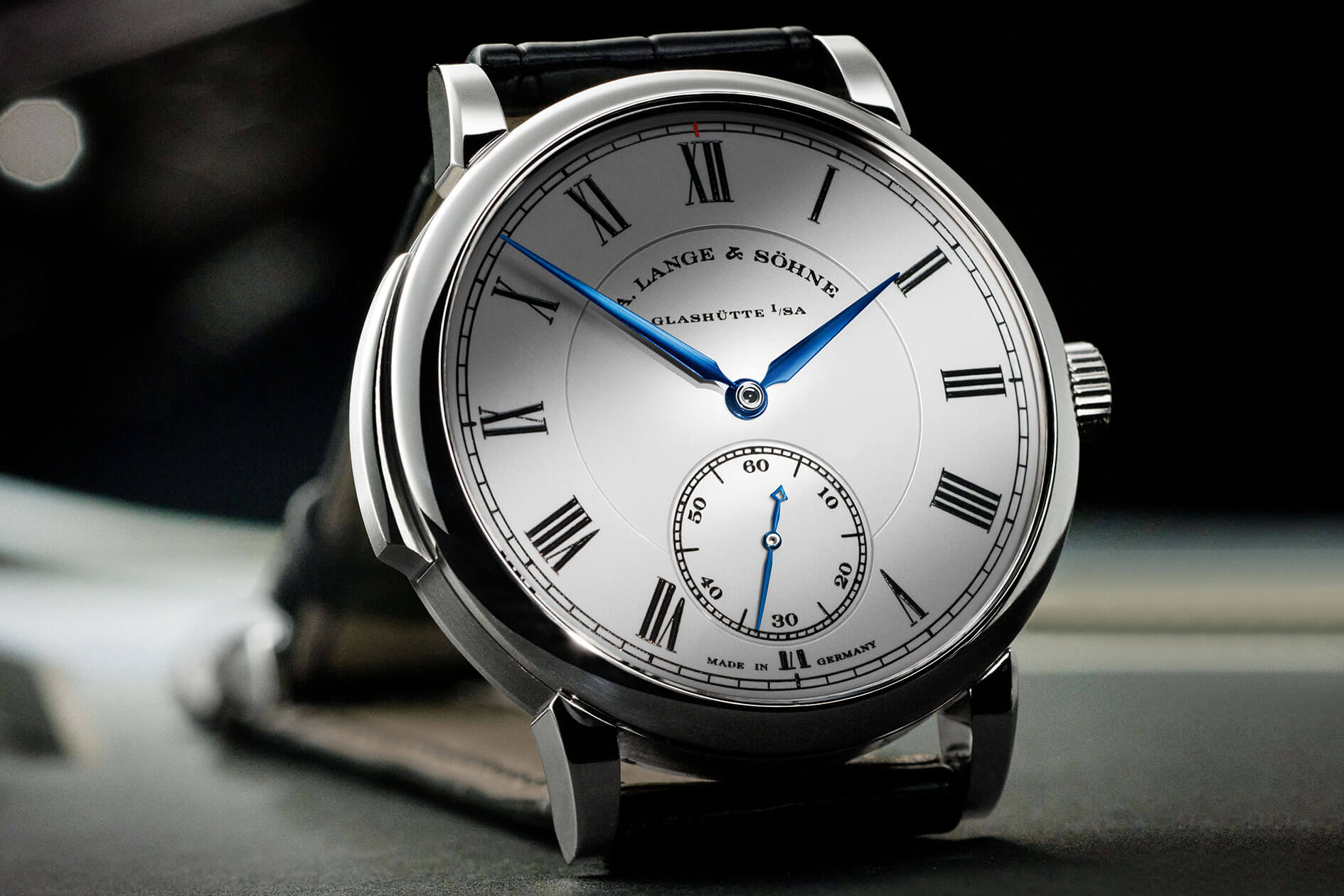
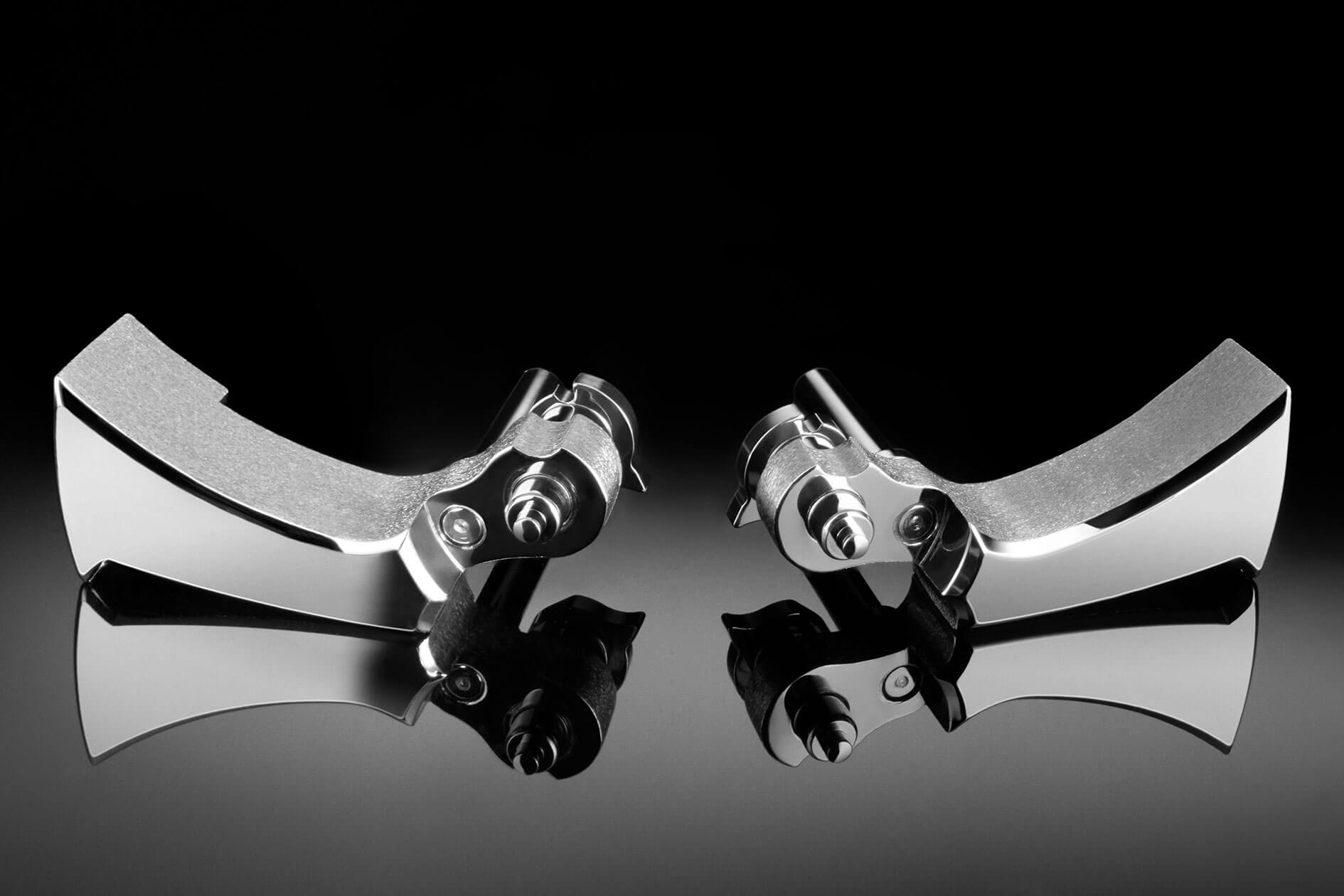
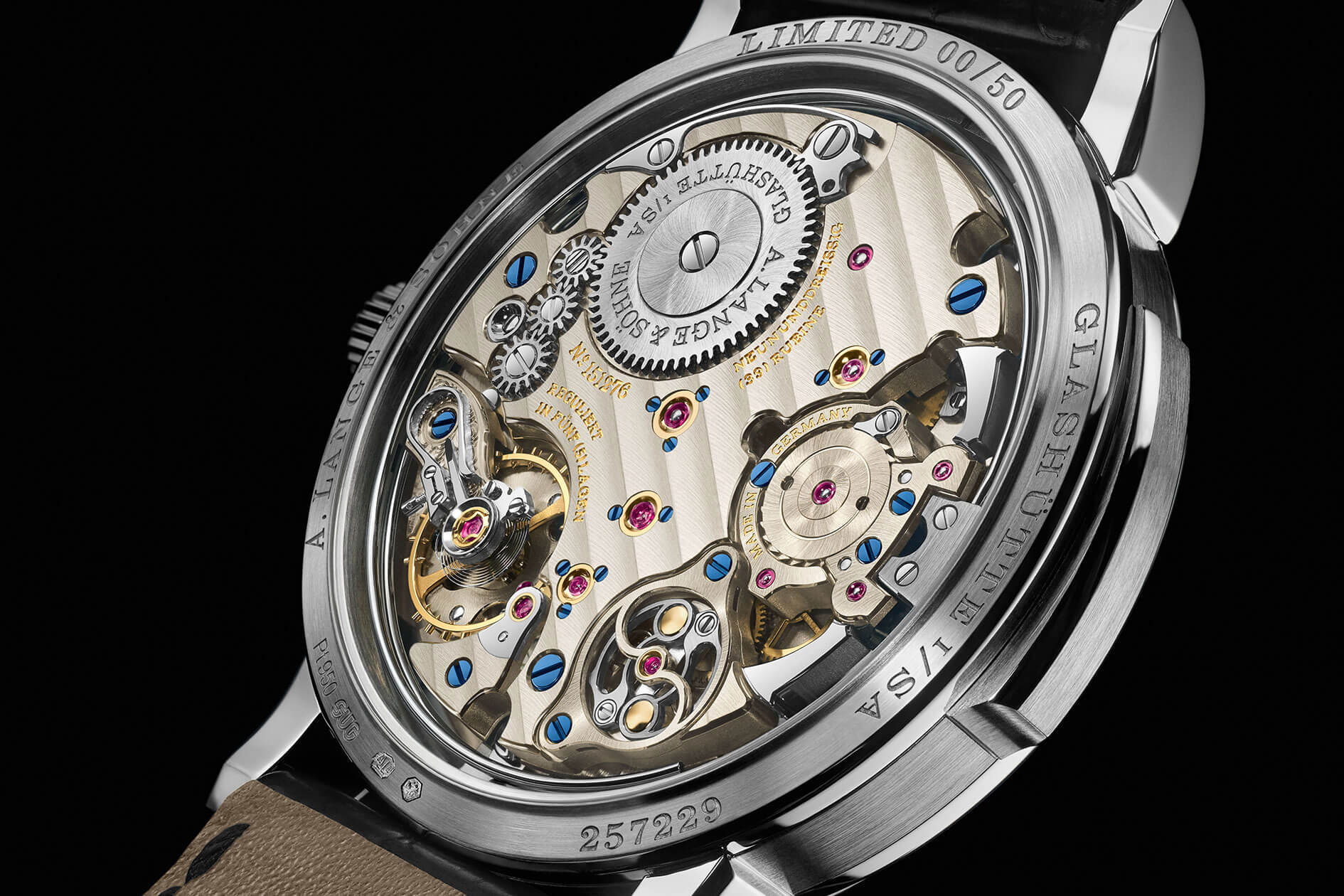
Richard Lange Minute Repeater 606.079, calibre L122.1
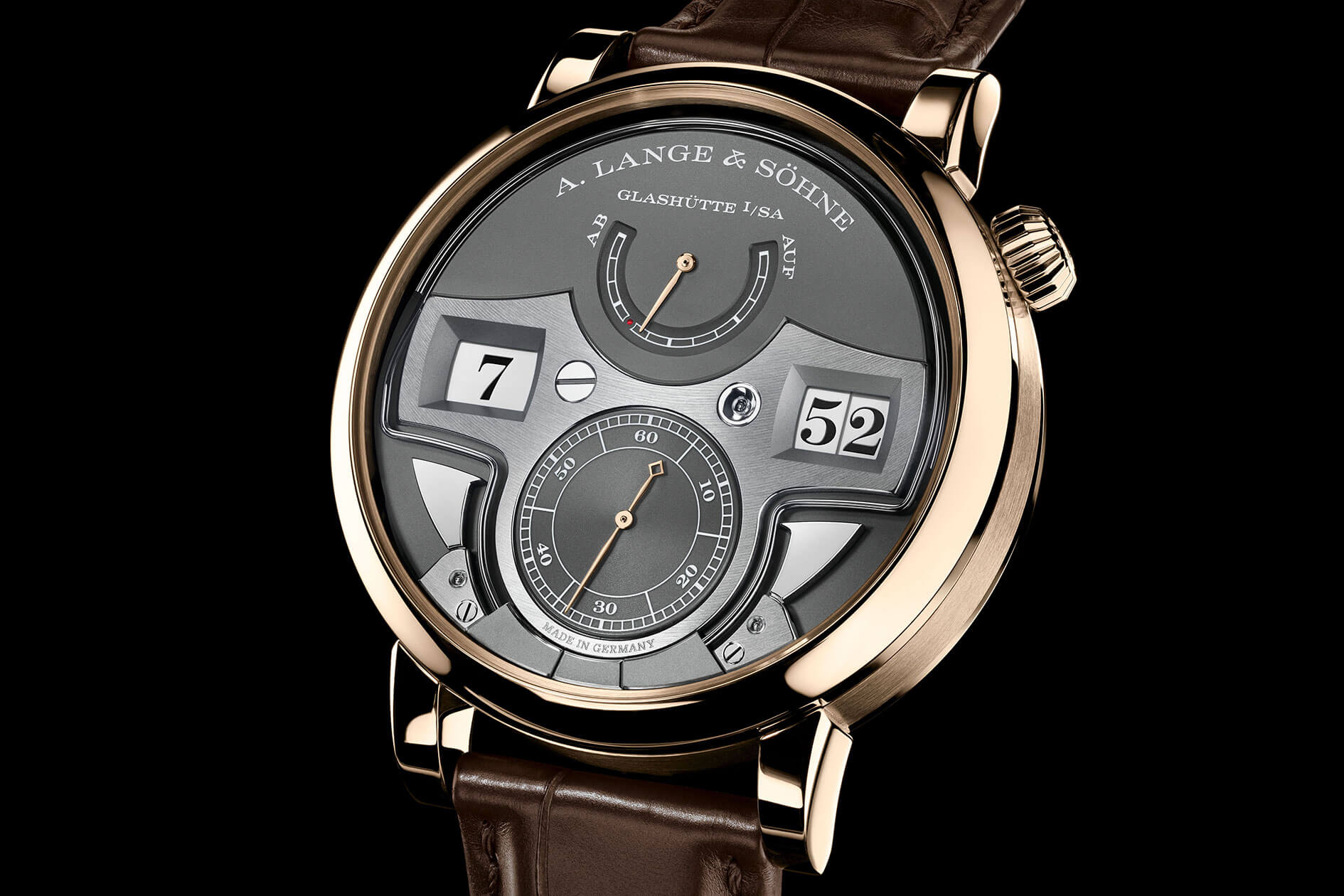
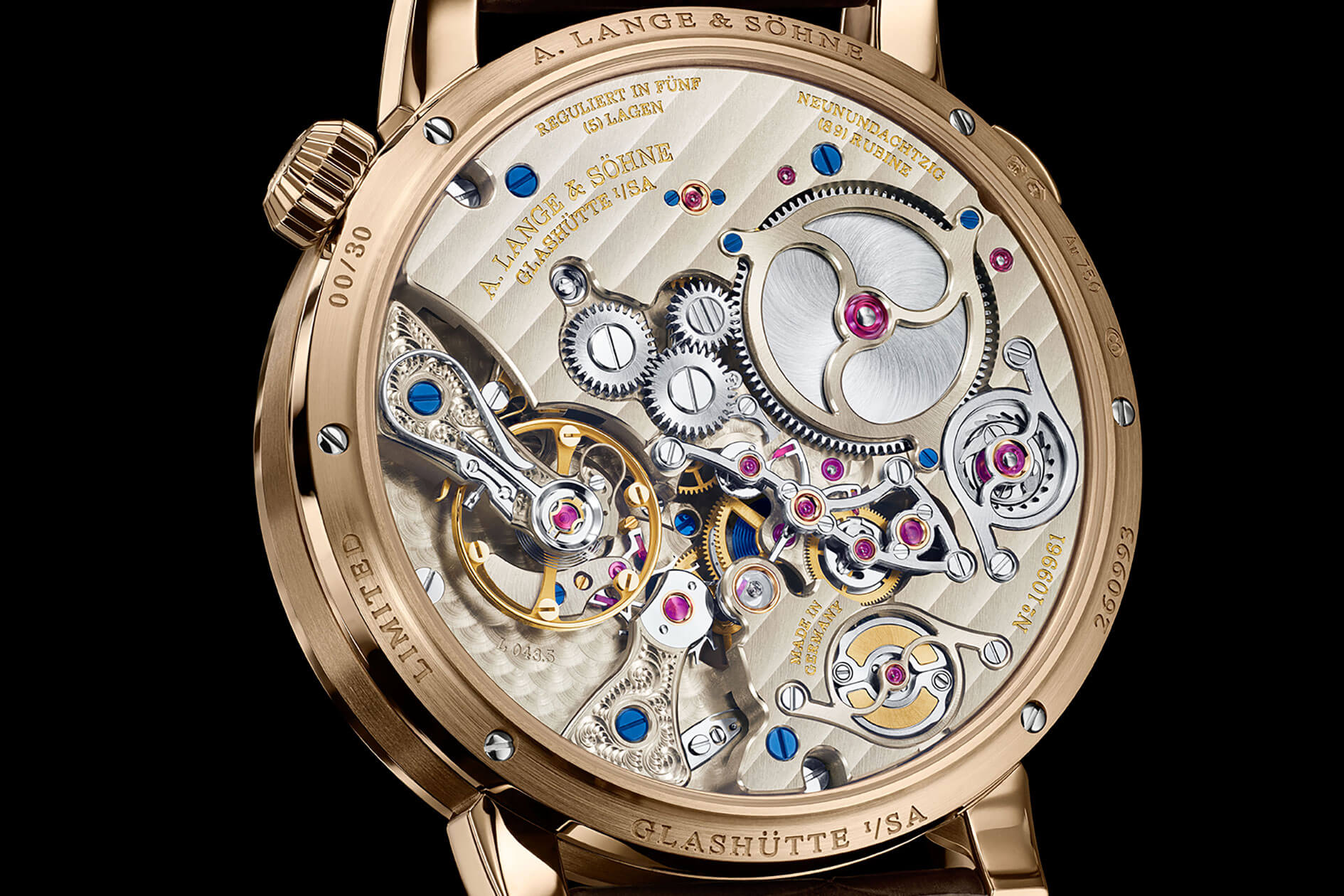
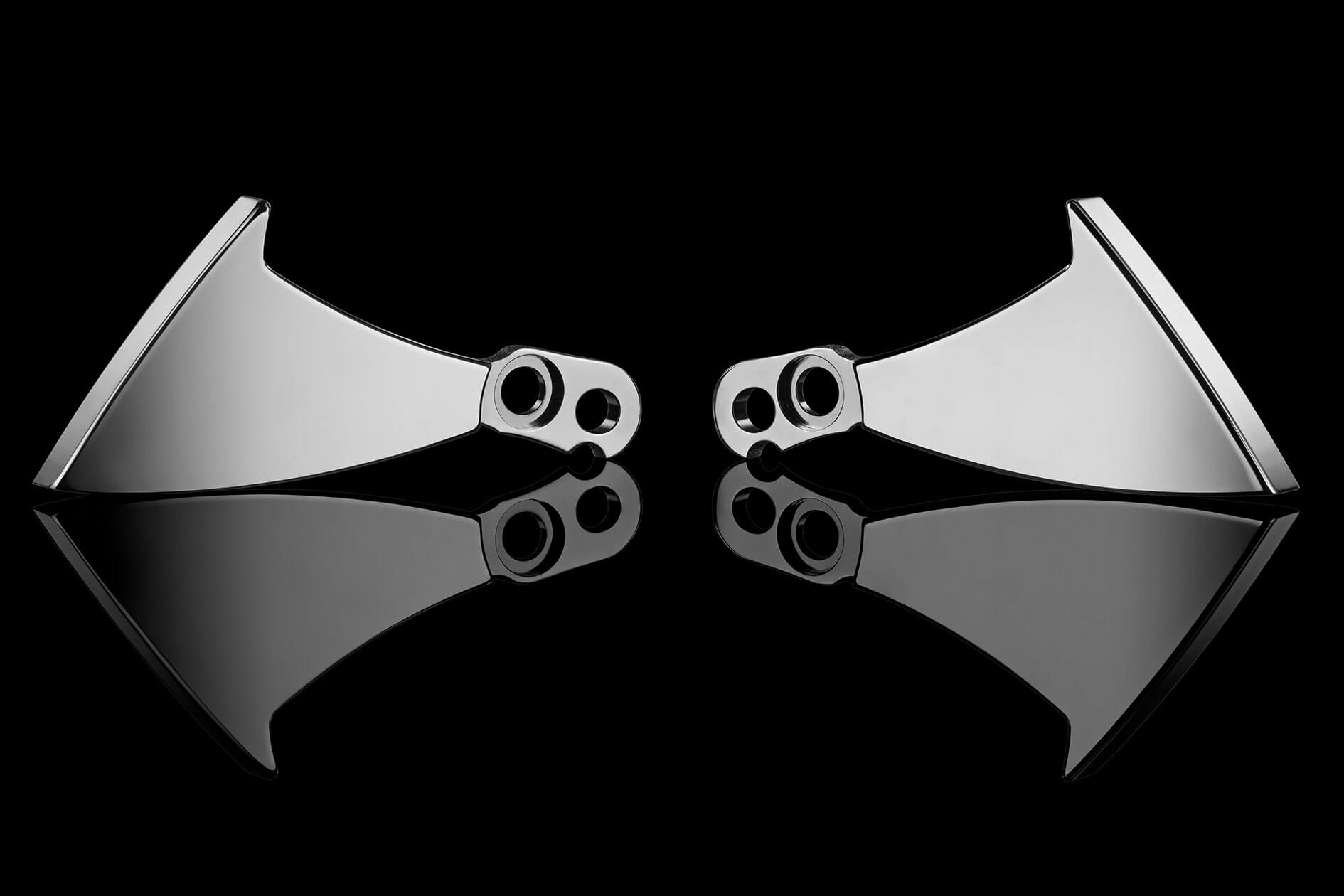
Zeitwerk Minute Repeater 147.050, calibre L043.5
Timepieces with moonphases by A. Lange & Söhne
In addition to the Datograph, the 1815 Moonphase “Hommage à Emil Lange” introduced in 1999 was the first model with this complication, which needs to be corrected by one day only after 1058 years. Equally precise is the Richard Lange Perpetual Calendar “Terraluna,” which also features a spectacular three-part orbital moonphase display on the back, illustrating the constellation of Earth, Moon, and Sun.

1815 Mondphase “Hommage à Emil Lange”
Credit © Mr. Watchley
Most of the other moonphase models maintain their function accurately for 122.6 years. The movement of the Lange 1 Moonphase from 2017 charmingly combines the moonphase with a day-night display in the form of a colour-gradient sky disk that replicates the 24-hour cycle. One sees the moon as it appears in the daylight against a light blue sky.
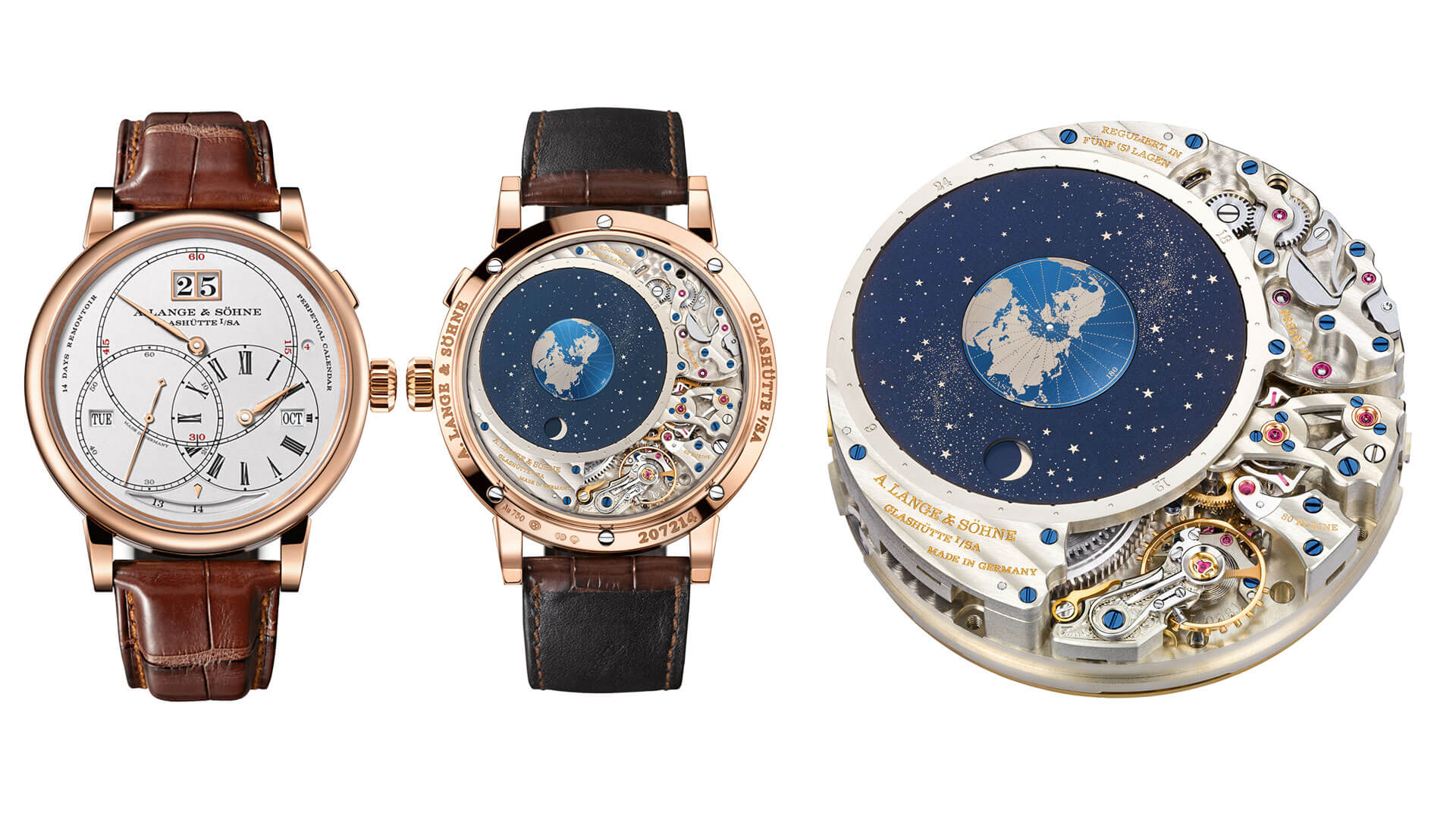
Richard Lange Perpetual Calendar Terraluna 180.032, calibre L096.1
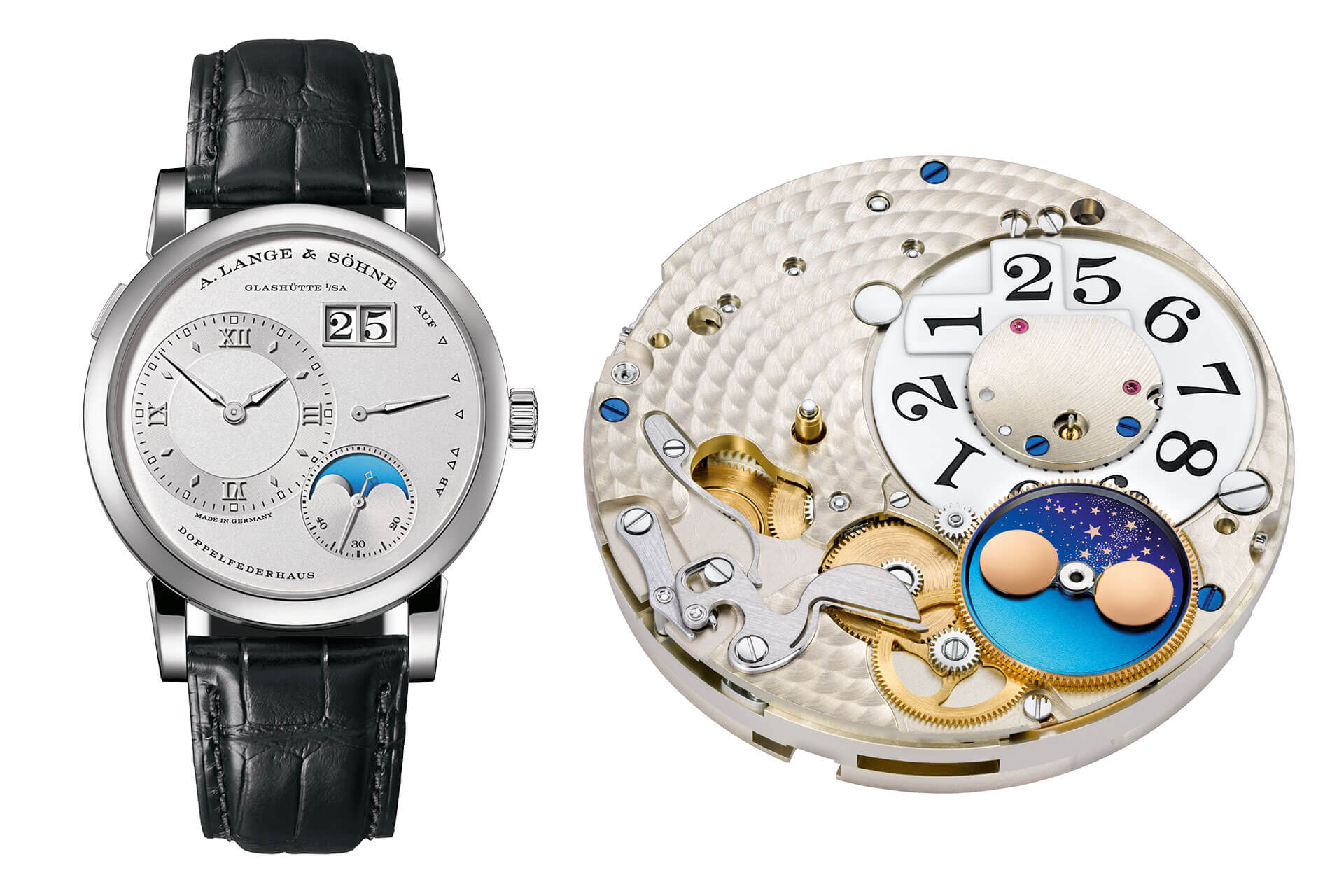
Lange 1 Moon Phase 192.025, calibre L121.3
Then came the Odysseus – the sporty watch from A. Lange & Söhne
How much time was spent on this extraordinary sports watch at A. Lange & Söhne can be read in the interview with chief developer Anthony de Haas. It is important to know that nothing could go wrong with this watch, as it has been demanded by collectors for years as the perfect leisure watch, and also because the manufacture was now breaking new ground in design for the first time. Nevertheless, in this model too, the movement forms the basis for understanding the overall result:
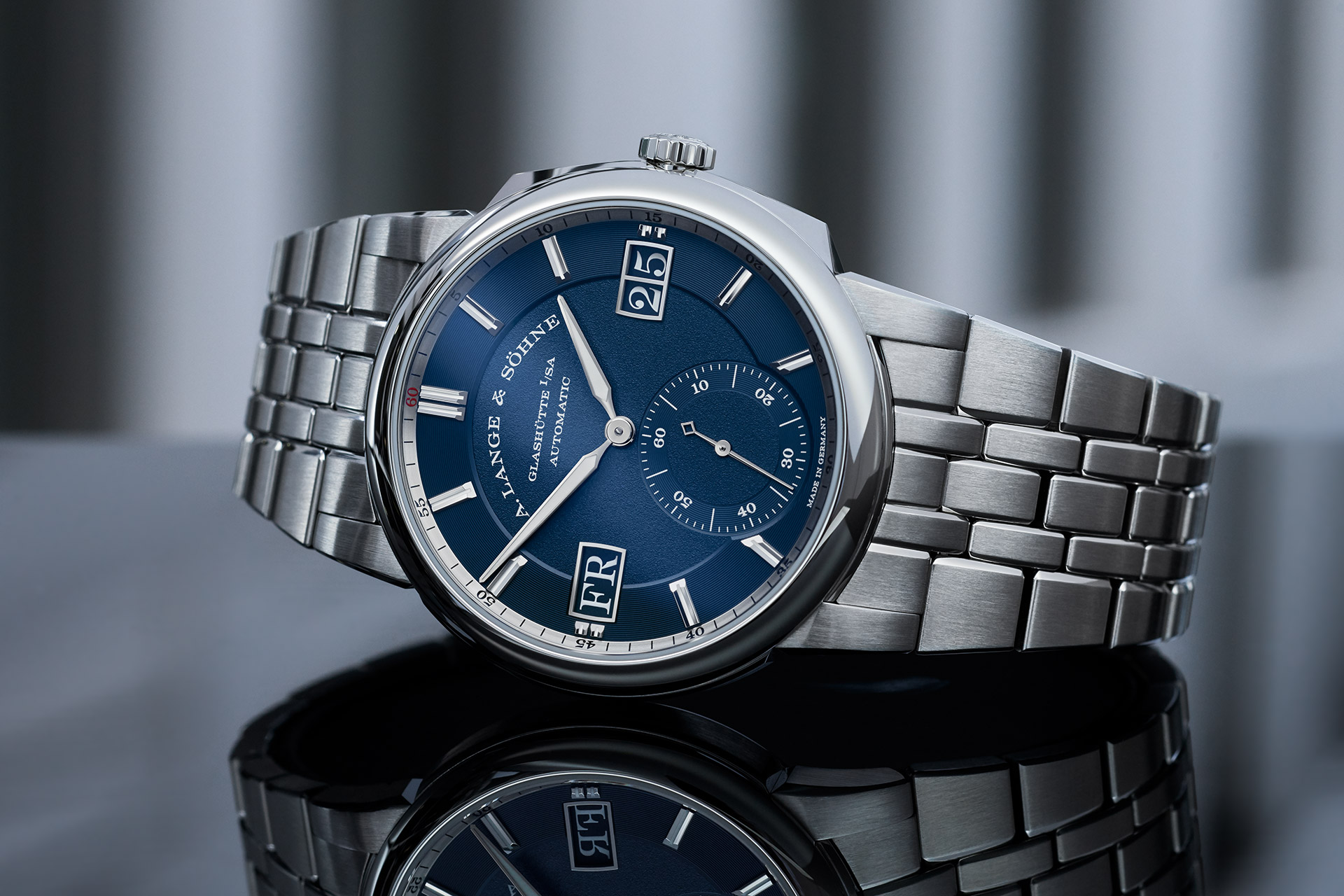
High frequency ensures better rate stability
The calibre L155.1 Datomatic operates at a high frequency of 28,800 semi-oscillations per hour, which is quite high for Lange standards. The oscillation frequency of a balance wheel should generally, and especially for Lange, be matched to the functions: for the Datograph, the 18,000 semi-oscillations are logical because you can then read the fifths of a second on the chronograph. 21,600 vph is the standard for Lange, but with the Odysseus, they opted for a higher 28,800 vph. Why? Let’s take a classic like the Zenith Chronograph El Primero with the high-frequency movement, which offers the additional advantage of displaying the tenth of a second with its 36,600 semi-oscillations. However, this would have the disadvantage for Lange that the wear would be higher and the watches would need servicing more frequently.
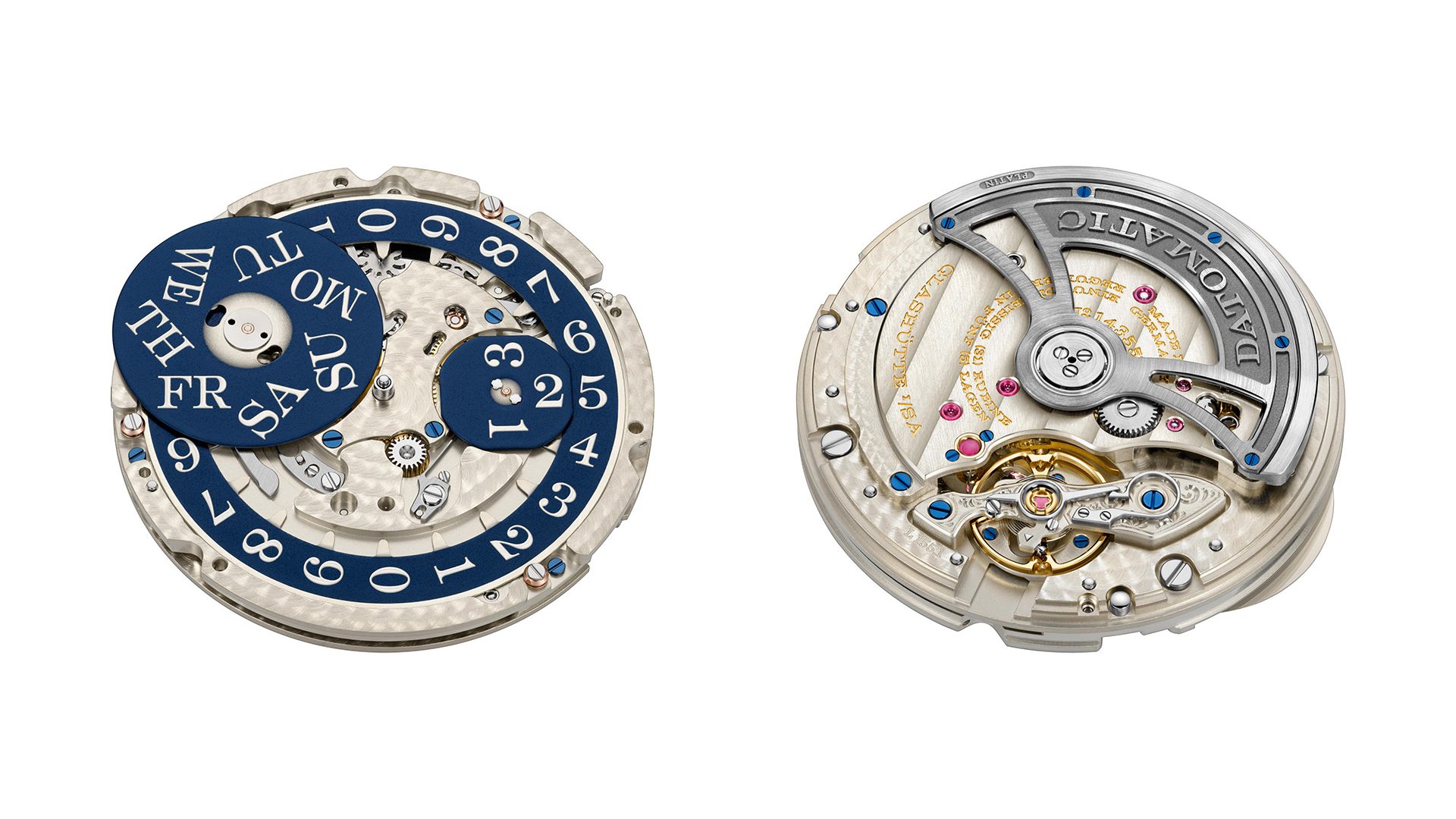
Kaliber L155.1 Datomatic
Thus, they decided on the middle ground of 28,800 vph because it significantly benefits the chronometric stability of watches that may be used in sports. This means external influences have less impact on the timekeeping behaviour of the watch, which is exactly what they wanted to achieve with this model.
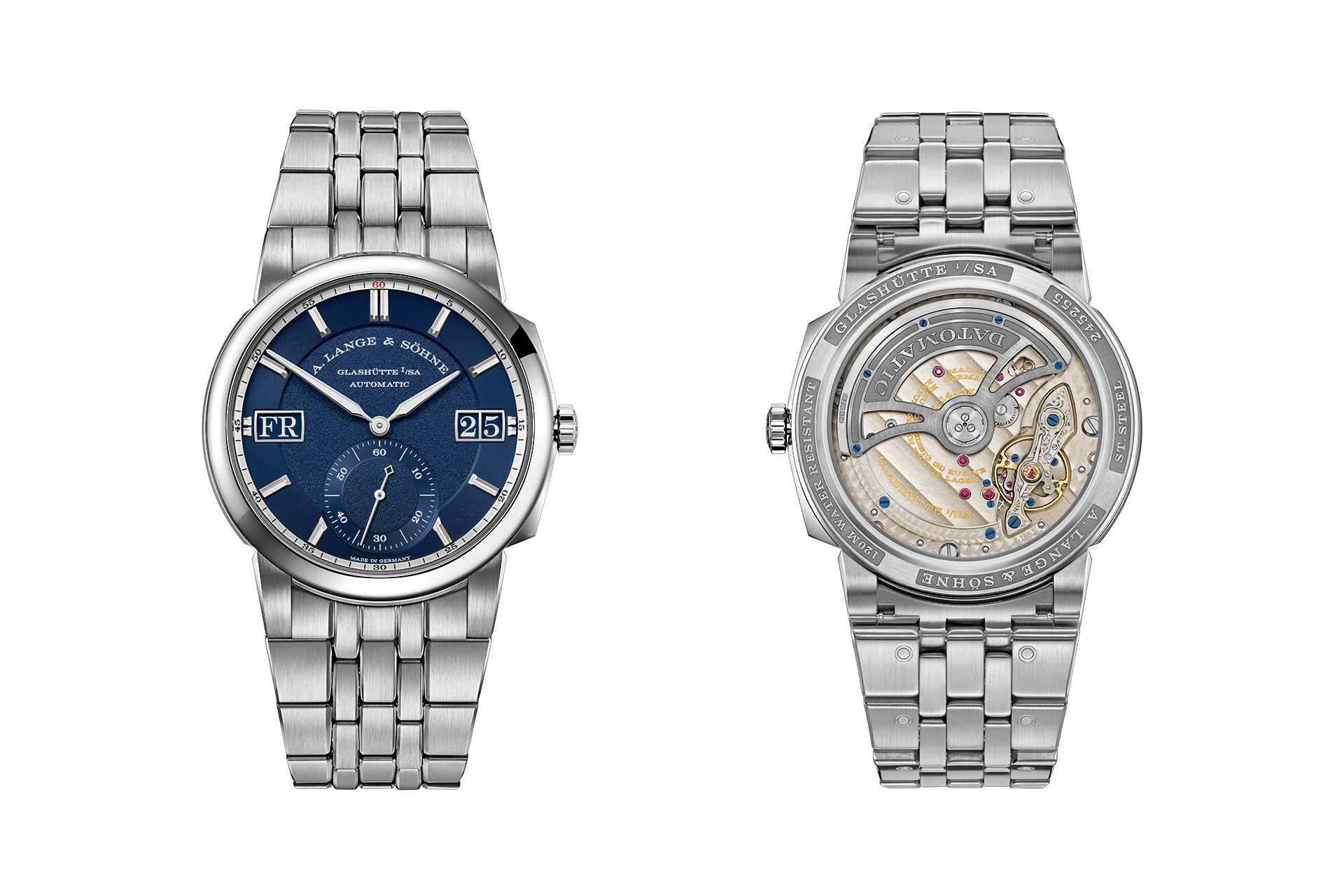
Odysseus 363.179 in Stainless Steel from 2019
Datomatic: A robust piece of work with no compromises in quality
Everything about this work had to become more robust without sacrificing Lange craftsmanship quality: thus, the regulation screws of the balance wheel are recessed in the balance rim, minimizing turbulence. To increase rigidity, the balance is mounted under a balance bridge, which is fixed with two blued screws. The additional name Datomatic stands for the combination of a date mechanism, operated by lateral pushers, and automatic winding.
The winding rotor of the Odysseus, with a 50-hour power reserve, is made of a torsion-resistant, black-rhodium-coated Arcap alloy with an outer platinum weight. In other Lange automatic movements, the rotors are gold-plated, except for the first Langematik from 1997, whose extensively described three-quarter rotor was made of solid 21-carat gold with a screwed-in platinum weight.
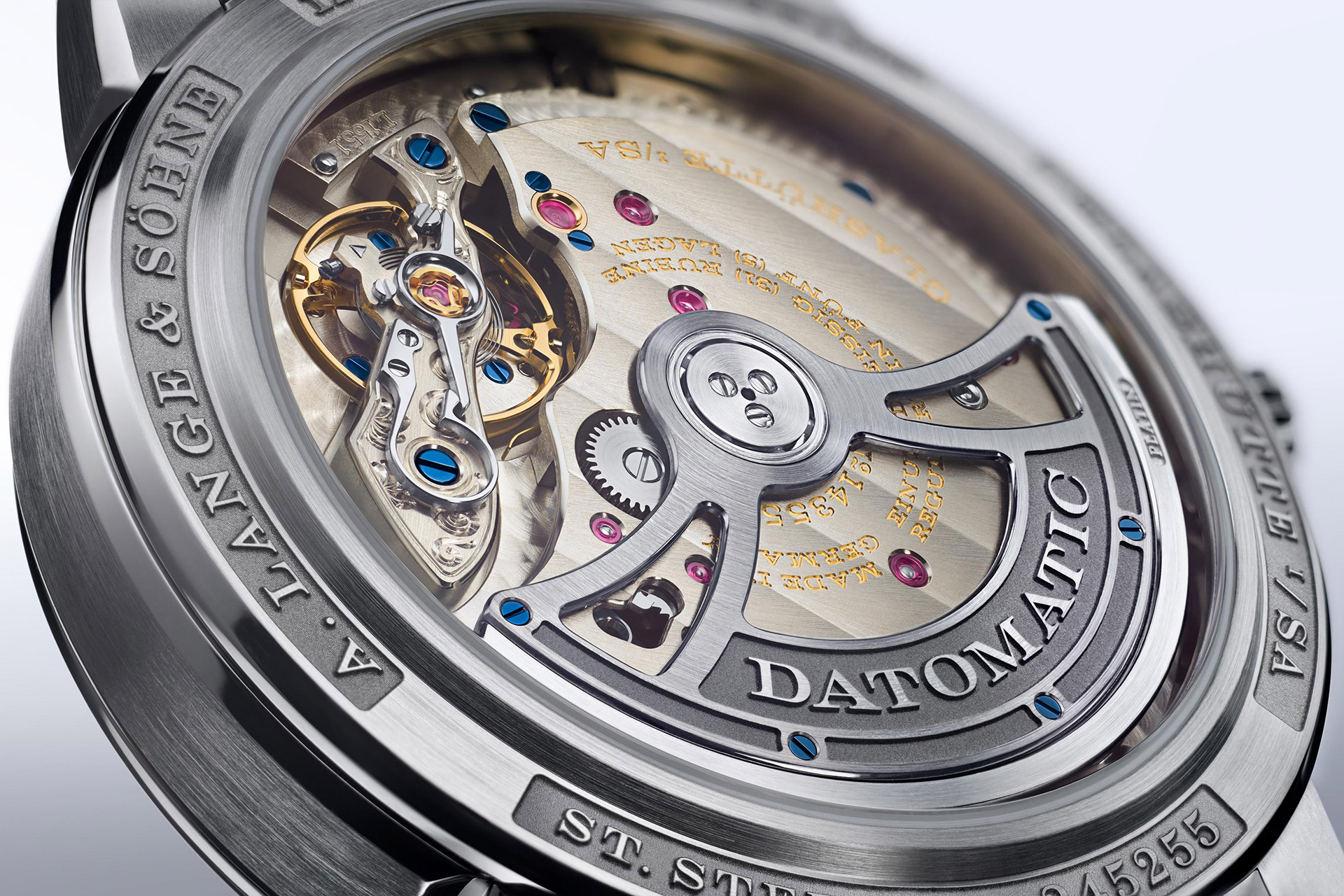
The path to the perpetual calendar
The path to the first perpetual calendar by Lange began with the SAX-0-MAT movement in the Langematik Perpetual in 2001. It was special because it was the first automatic watch in the world to combine a perpetual calendar with a large date display. The Datograph Perpetual followed in 2006, combining a flyback chronograph with a perpetual calendar. The Lange 1 received this function in 2012 in the Lange 1 Tourbillon Perpetual Calendar model, introducing a patented outer month ring to maintain the distinctive dial arrangement of the Lange 1.

Langematik Perpetual 310.028, calibre L922.1 SAX-0-MAT

Saxonia Datograph Perpetual 410.038, calibre L952.1
This was followed by the Grand Complication in 2013, the 1815 Rattrapante Perpetual Calendar in the same year, and finally the Richard Lange Perpetual Calendar “Terraluna” with an orbital moon phase display in 2014. The second Datograph Perpetual in 2016 additionally featured a tourbillon. In 2021, the Lange 1 Perpetual Calendar was introduced with an updated movement in the Lange 1. An exception here is the Tourbograph Perpetual “Pour le Mérite,” a rattrapante chronograph with a tourbillon and perpetual calendar, but featuring the extremely intricate chain and fusée drive from 2017.

Lange 1 Tourbillon Perpetual Calendar 720.032, calibre L082.1

Lange 1 Perpetual Calendar 345.036, calibre L021.3
30 years of watch movements from A. Lange & Söhne
It is impossible to describe all movements in detail in a text that is still reasonably readable. Certain models would surely be worth their own texts, such as Lange’s 31-day movement, the Lumen series, or the Handwerkskunst series with rare movement decorations such as relief engravings and black polish. To keep in mind what all this means in total, here – because it is so impressive – we have made a small list of these achievements regarding all complications.
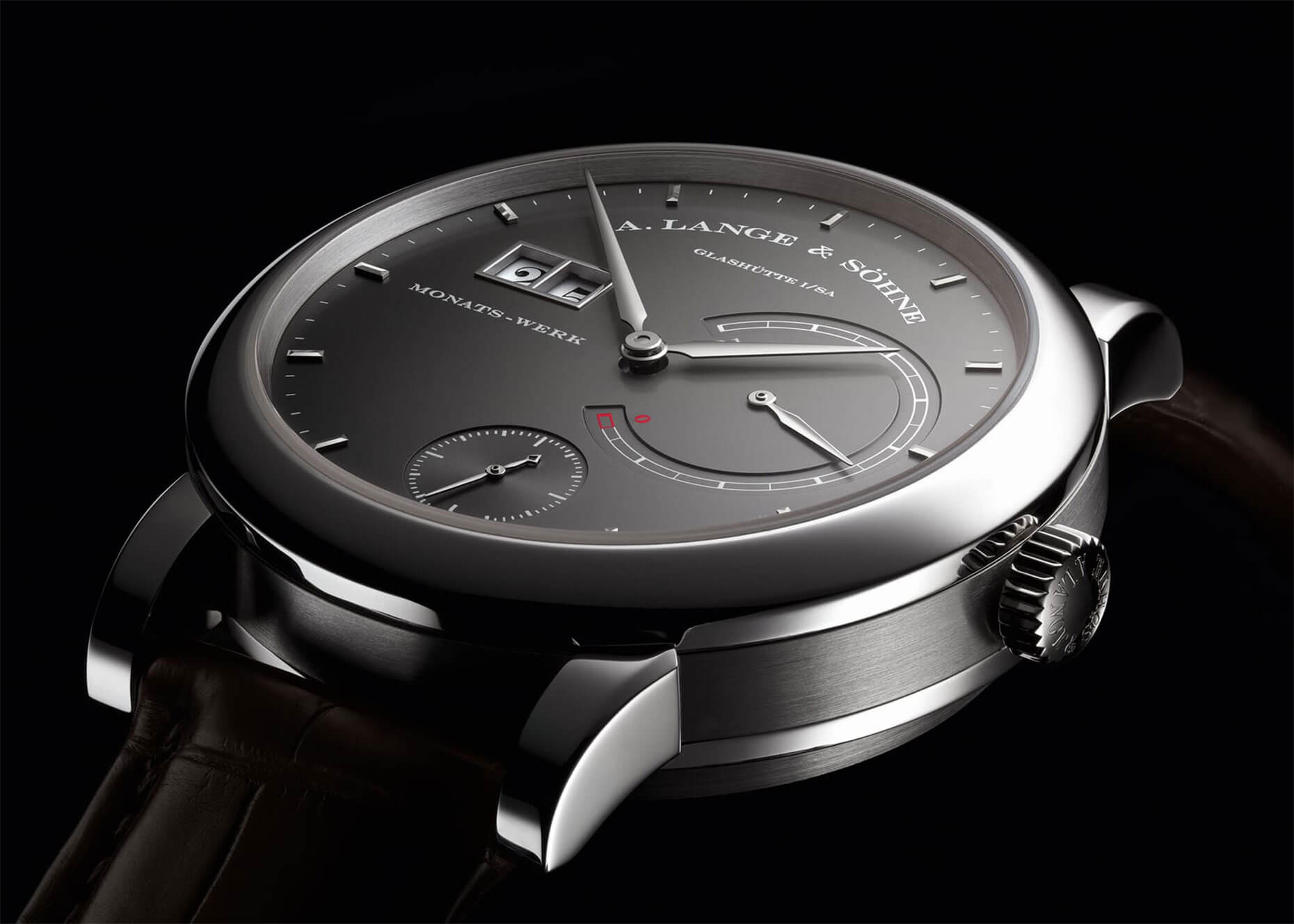
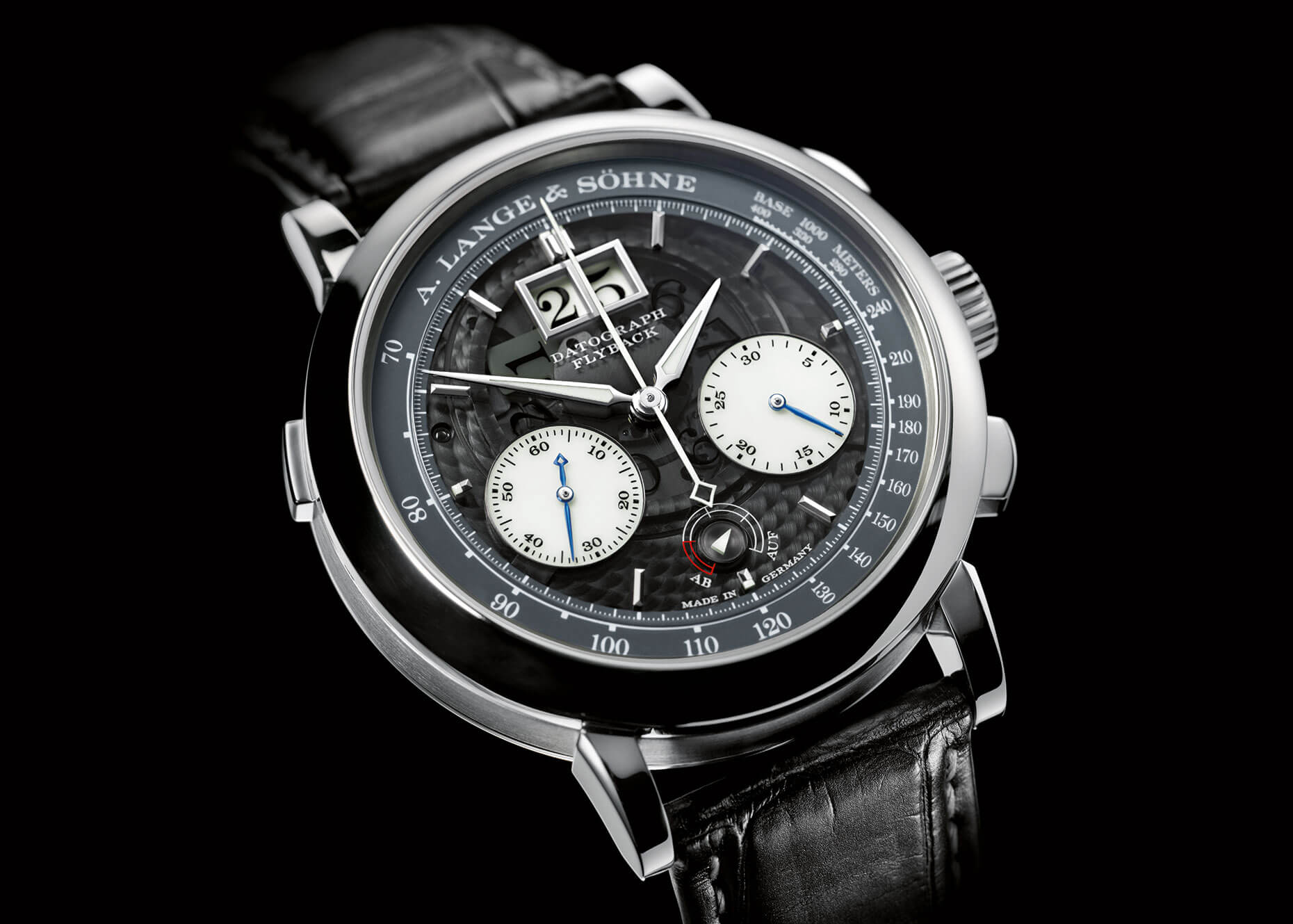
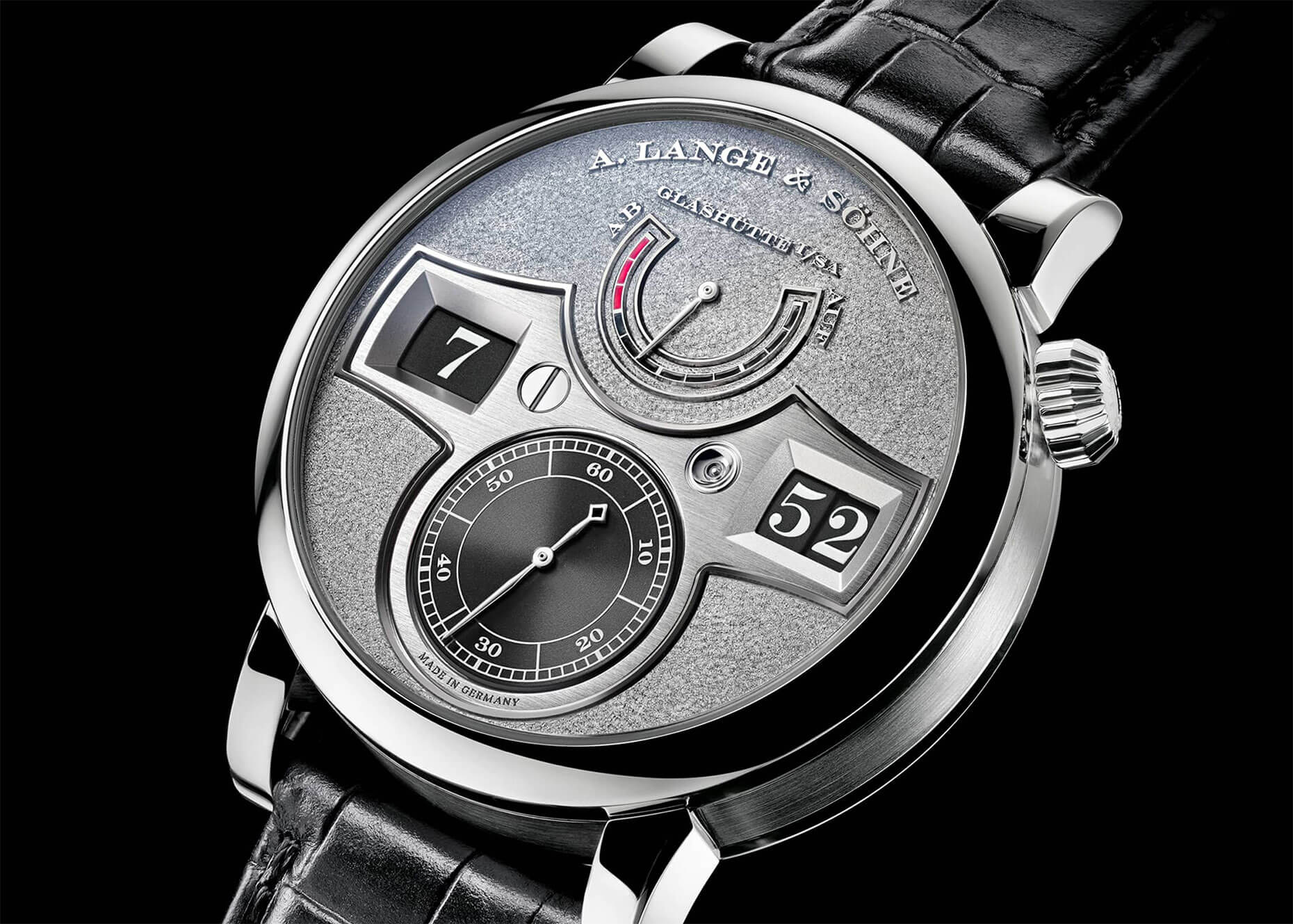
34 models with large date
A. Lange & Söhne has equipped 34 watch movements with the characteristic large date to date, with the Zeitwerk Date having a model with a ring date. In total, there are four models with a day-of-the-week display and 35 with a power reserve indicator.
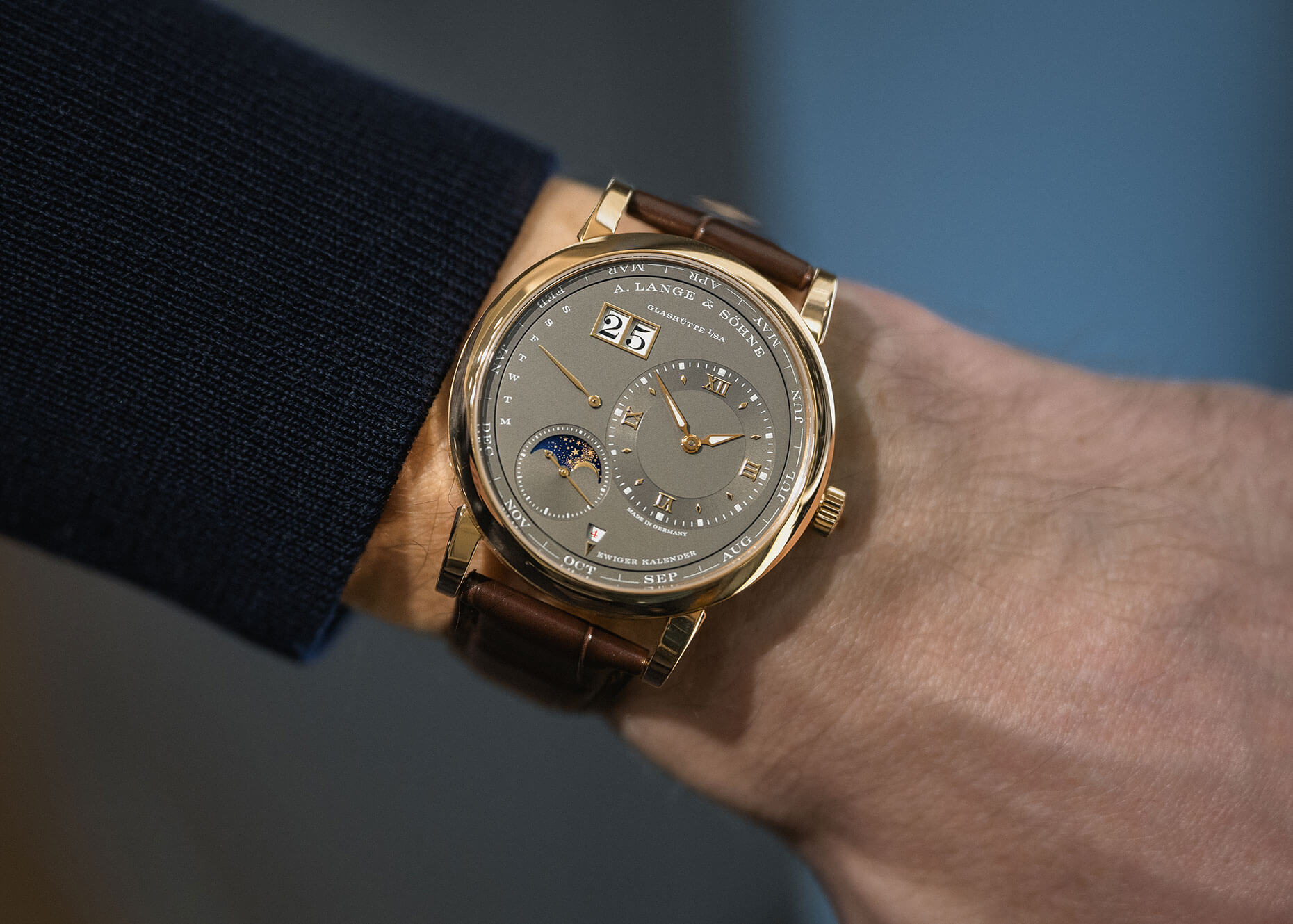
Lage 1 Tourbillon Perpetual Calendar with Big Date
There are now five models with the patented Zero-Reset mechanism. Of the ten in-house developed tourbillons, five also have the patented zero-reset mechanism. The traditional drive by chain and fusée, as previously used in Lange pocket watches, can be found in the five “Pour Le Mérite” special models released so far. Of the 19 movements with moonphase displays, two work accurately to 1,058 years (including the Richard Lange Perpetual Calendar “Terraluna”), while the others work accurately to 122.6 years in the classic manner.
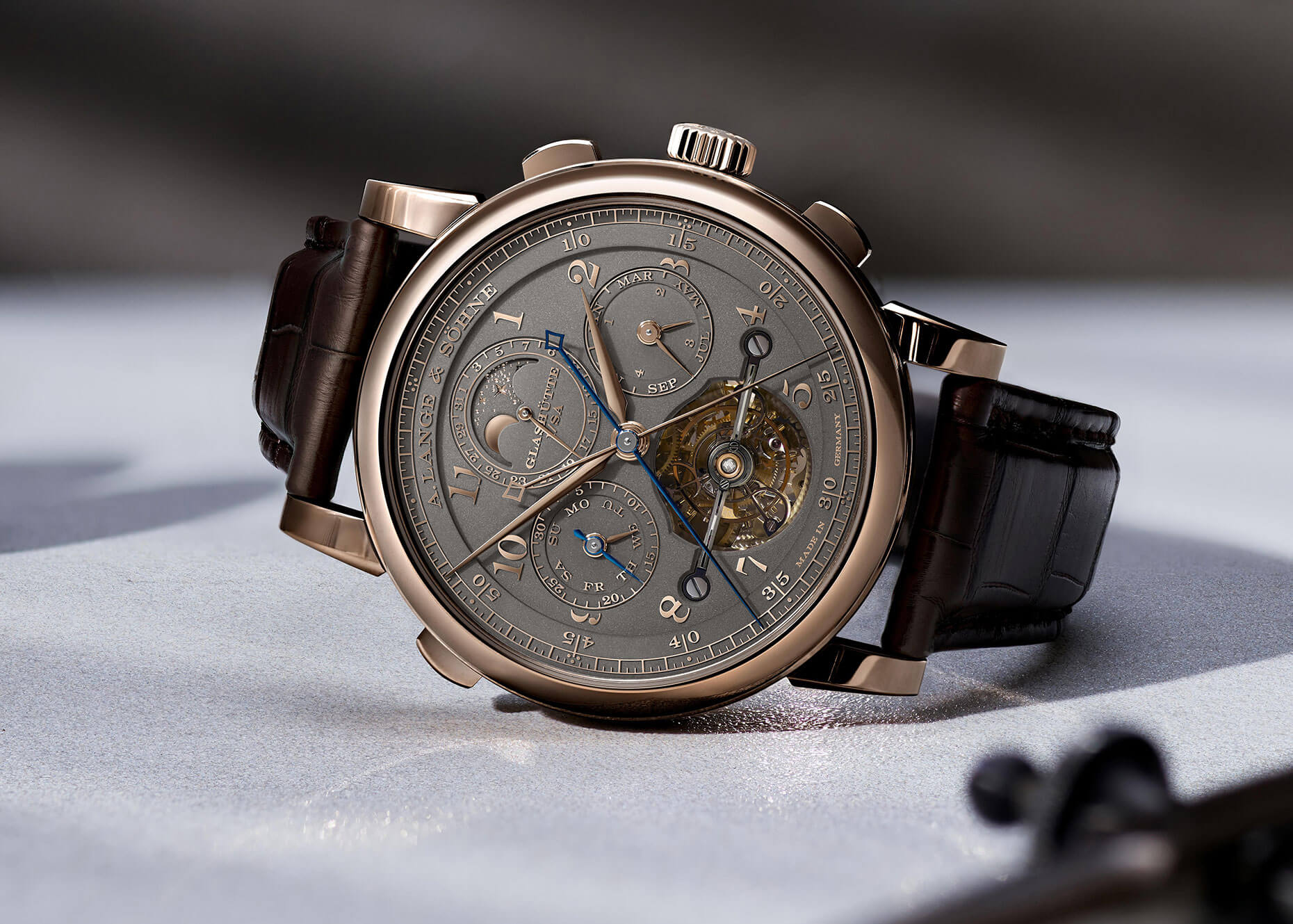
The Tourbograph Perpetual ‘Pour le Mérite’ combines five complications: fusée-and-chain transmission, tourbillon, chronograph with rattrapante function, and perpetual calendar.
A total of 13 models with their own chronograph movements
Let’s move on to perhaps the most important and elaborate category of works: 13 models with their own chronograph movement have been developed, seven of them with flyback and seven with rattrapante function. Of the mentioned seven rattrapante or split-seconds models, two even allow comparative time measurements up to 30 minutes or 12 hours thanks to the patented Double-Split and Triple-Split technology.
If the achievements in the field of chronographs were not already glorious enough, here are the additional complications of the Glashütte manufacture: ten own movements with perpetual calendars, two of them with a rotating month ring, namely in the Lange 1 Tourbillon Perpetual and in the Lange 1 Perpetual. There are also two annual calendars and two extremely long-running movements, namely the Lange 31 with a 31-day power reserve and the Richard Lange Perpetual “Terraluna” with a 14-day runtime.
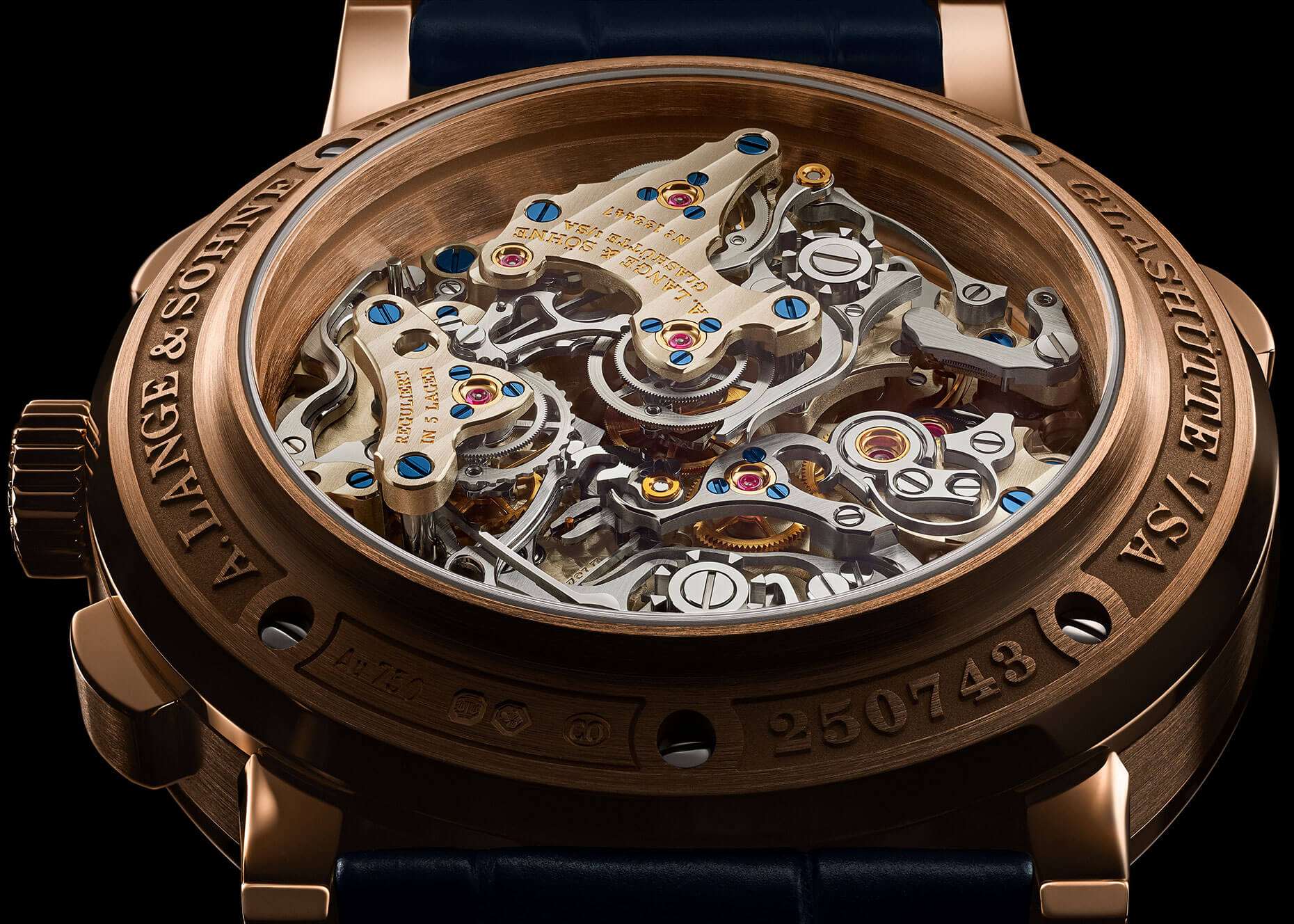
Saxonia Triple Split 424.037, calibre L132.1 – The world’s first mechanical rattrapante chronograph capable of multi-hour comparative time measurements.
Nine watches with digital jump display
If the achievements in the field of chronographs were not already glorious enough, here are the additional complications of the Glashütte manufacture: ten own movements with perpetual calendars, two of them with a rotating month ring, namely in the Lange 1 Tourbillon Perpetual and in the Lange 1 Perpetual. There are also two annual calendars and two extremely long-running movements, namely the Lange 31 with a 31-day power reserve and the Richard Lange Perpetual “Terraluna” with a 14-day runtime.
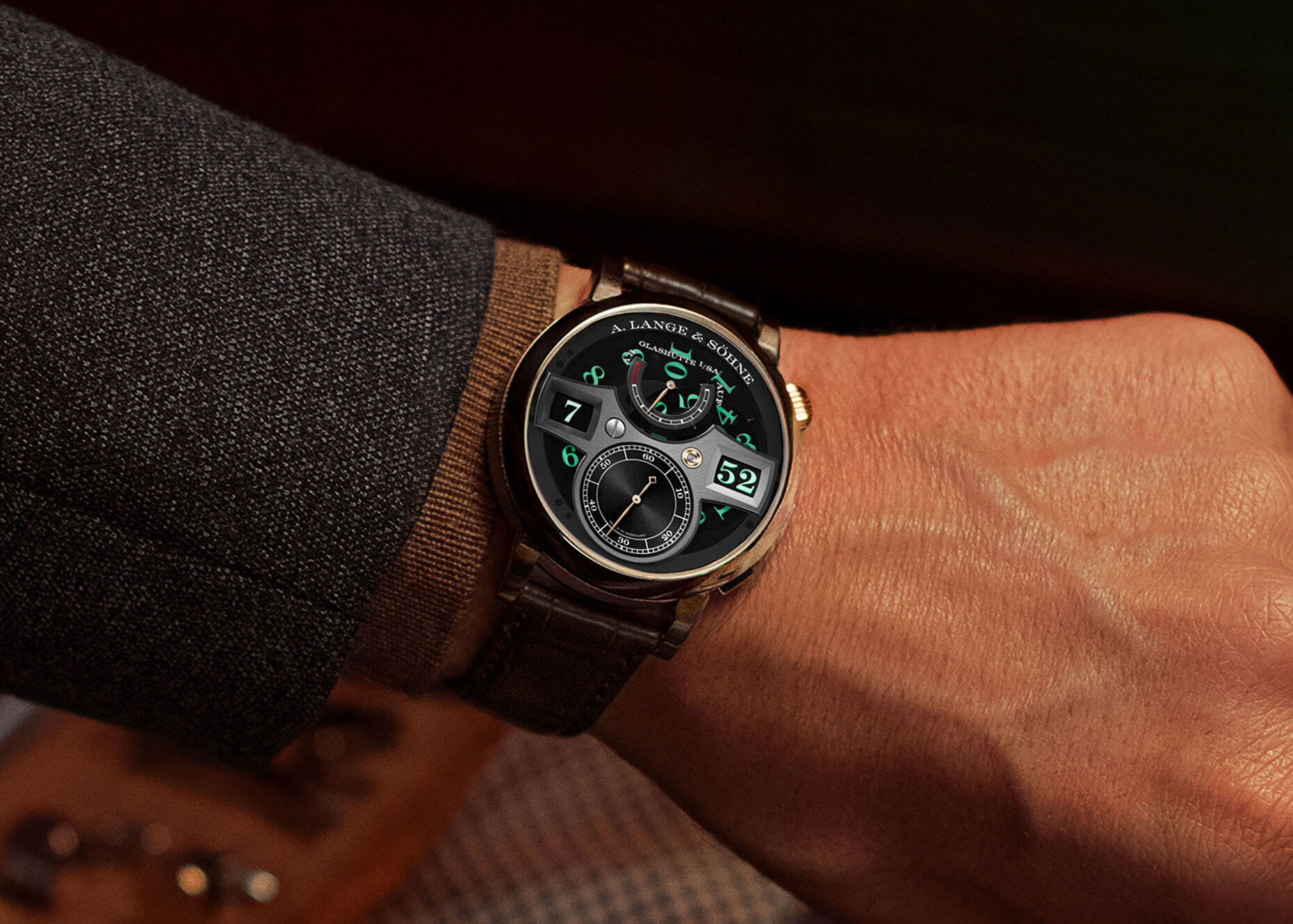
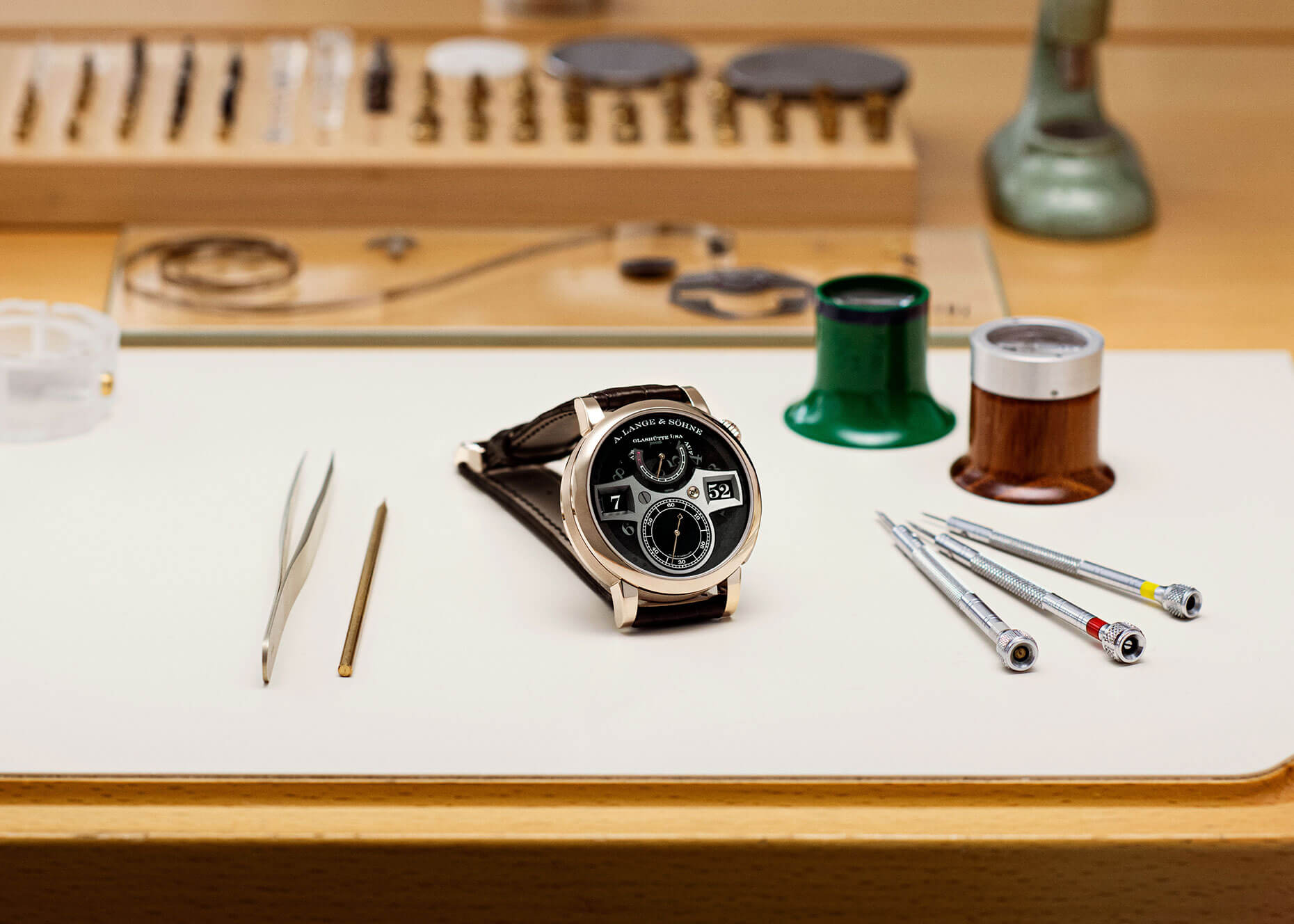
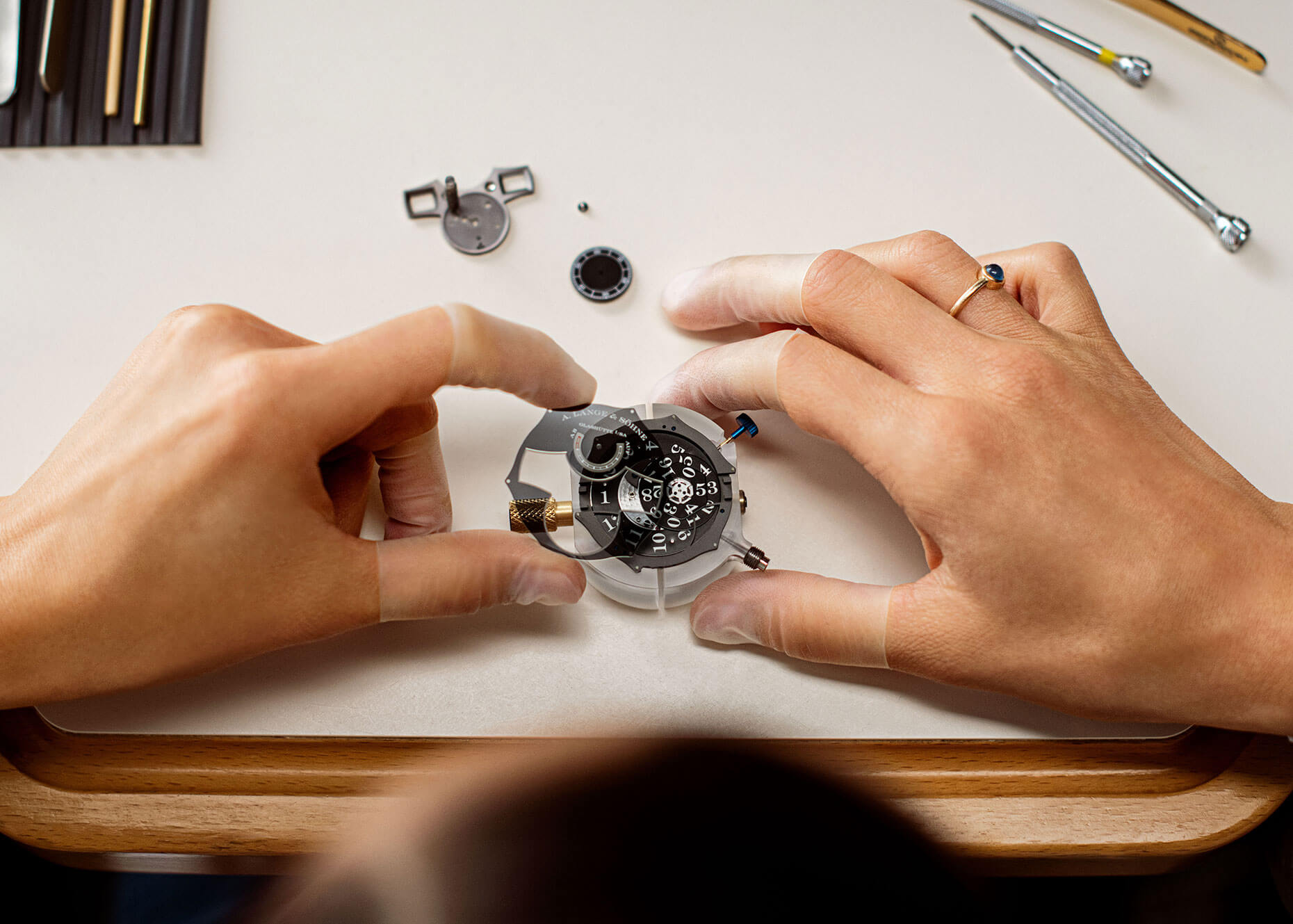
Three movements with minute repeaters
You think that’s enough? No way! The cherry on top in watchmaking traditionally includes movements with minute repeaters. Lange has three movements equipped with this feature, and the famous Grand Complication even includes both a Grande and Petite Sonnerie. The Zeitwerk Striking Time and Zeitwerk Decimal Strike have their own chime mechanisms that strike “en passant”. Did we forget something? Yes, the Grand Complication features a flashing second, the so-called “seconde foudroyante,” where the second hand rotates around its axis in five intervals per second, thus displaying the fifths of a second and performing an astonishing 86,400 rotations per day.
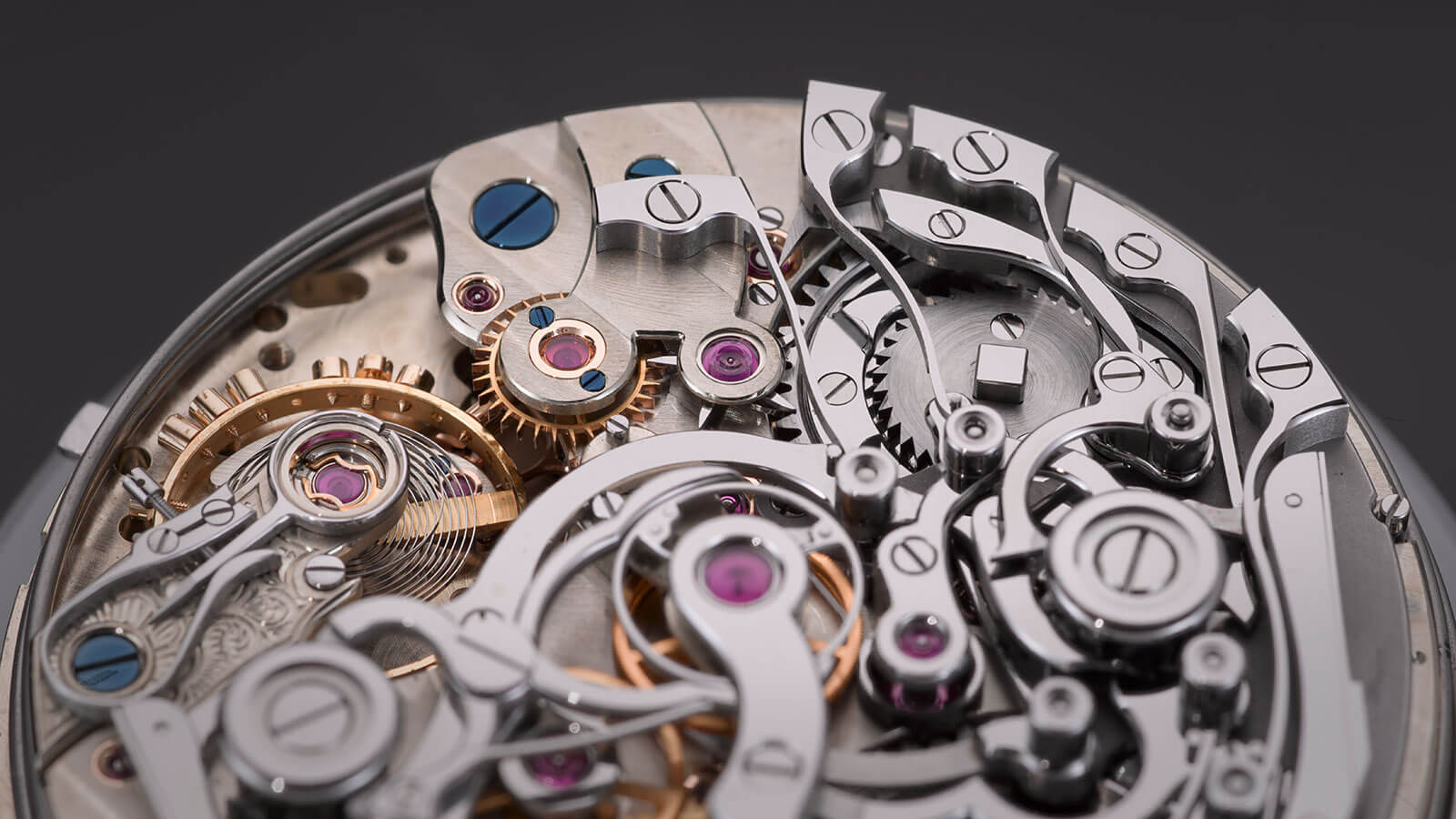
Calibre L1902 with flashing seconds, Grand Complication 912.032
Conclusion: Comparable only with its own history
What can or should one compare these achievements to? Other watch companies tick differently and develop movements differently. In this case, only a look back at A. Lange & Söhne’s own history suffices. In 2000, Martin Huber from Munich published a report: the so-called “Lange List” (the book is out of print but can still be found in antiquarian bookshops) lists all of Lange’s movement developments from the founding year 1845 to the expropriation in 1948. Among the impressive 89 listed movement categories, there are 15 with minute repeaters in various versions, as well as eight striking movements, ten quarter-hour repeating movements, and one 5-minute repeater. Not counted are the special models for ladies among these repeater movements.
If your head is buzzing as much as ours, at least you know one thing: there is (almost) no horological challenge that this company has not faced in the last 30 years since the relaunch of its own models under the name A. Lange & Söhne. And if the developers around Anthony de Haas haven’t done it yet, there is a very specific reason for it.
The most important patents of A. Lange & Söhne
For all these 72 movements, A. Lange & Söhne have registered numerous patents over the last 30 years. No one has yet taken the trouble to count them all. We met this naturally not unattractive modesty (especially in Germany, where people are very proud of their engineering knowledge and inventiveness) with the question:
What are the most important patents of A. Lange & Söhne?
We have listed and explained perhaps the nine most important ones below.
Zero-reset mechanism
In 1997, A. Lange & Söhne introduced its first automatic movement, which was also elaborate: The multiple award-winning SAX-0-MAT calibre features the aforementioned integrated zero-reset mechanism. How does it work? It stops the balance wheel when the crown is pulled and swiftly moves the second hand to the zero position to make setting the exact time easier. The patent was granted in the year 2000.
The hand-wound movements of the 1815 Tourbillon and the Richard Lange Jumping Seconds also feature a zero-reset function, making it easier to set the watch precisely. For the latter model, the mechanism was designed as an independent module and equipped with a multi-disc clutch that securely holds the large second hand during sudden accelerations and decelerations.
In 1997, A. Lange & Söhne introduced its first automatic movement, which was also elaborate: The multiple award-winning SAX-0-MAT calibre features the aforementioned integrated zero-reset mechanism. How does it work? It stops the balance wheel when the crown is pulled and swiftly moves the second hand to the zero position to make setting the exact time easier. The patent was granted in the year 2000.
The hand-wound movements of the 1815 Tourbillon and the Richard Lange Jumping Seconds also feature a zero-reset function, making it easier to set the watch precisely. For the latter model, the mechanism was designed as an independent module and equipped with a multi-disc clutch that securely holds the large second hand during sudden accelerations and decelerations.
Exact jumping minute counter
The precisely jumping minute counter was first introduced in 1999 in the Datograph, with Lange’s first chronograph calibre, and was patented in 2001. It allows the minute counter hand to move exactly one tick after 60 seconds have elapsed, even if the time measurement is stopped right at the zero mark. This way, the minute value can always be read unequivocally. This construction allows the watchmaker to precisely adjust the jump of the minute counter even in the already assembled movement. In the current collection, all Datograph models as well as the Double Split and the Triple Split are equipped with it.
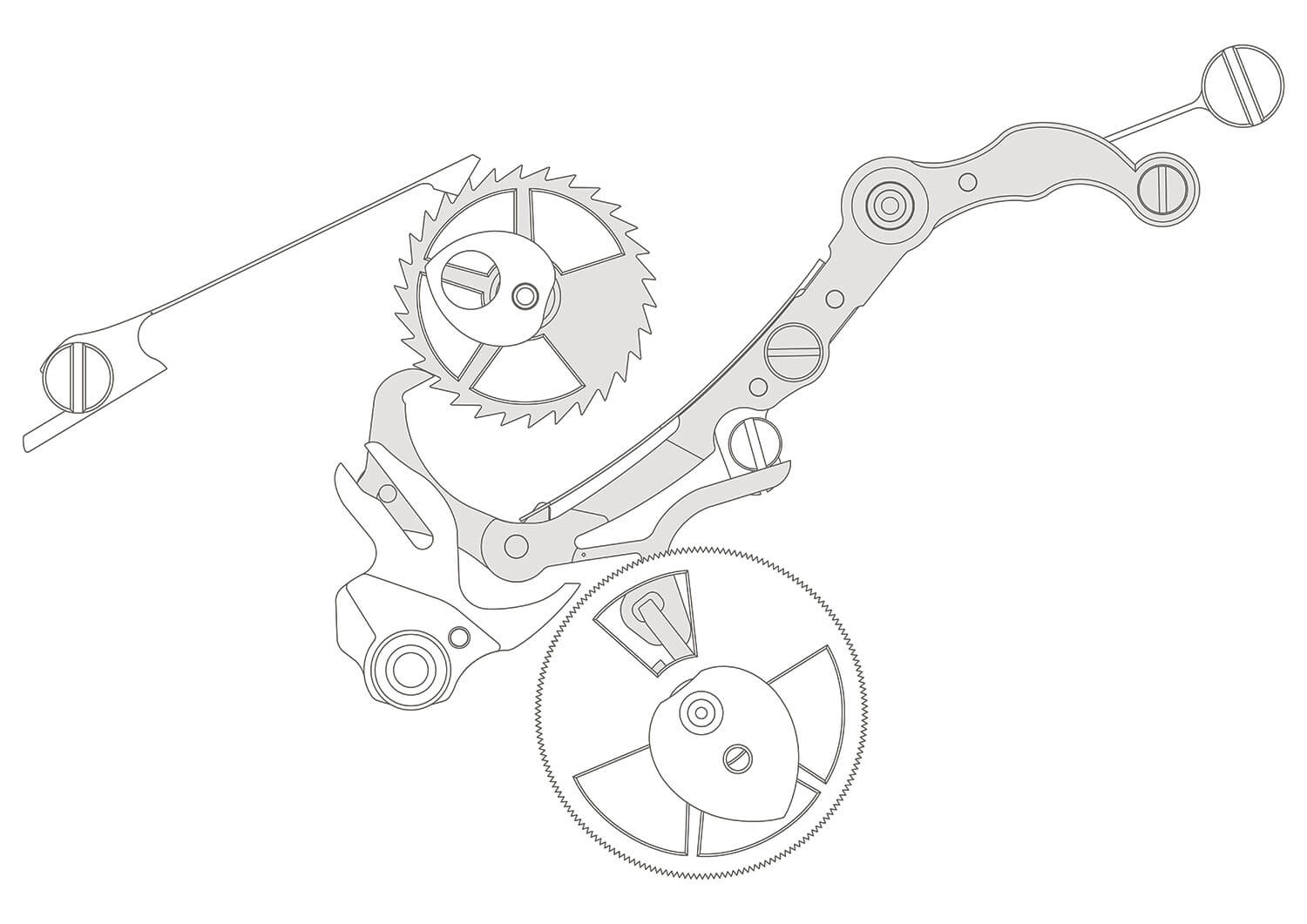
Isolator mechanism
Let’s stick with the chronographs. Thanks to the sophisticated mechanism, it is possible to measure intermediate times with the Double Split and Triple Split split-seconds chronographs without any drop in amplitude. The mechanism, patented in 2005, avoids the friction losses that occur with conventional designs by disengaging the positive connection between the split-seconds hands and the chronograph hands on the central chrono axis and on the minute counter axis when the split-seconds pusher is activated.
Tourbillon-stop
This invention, patented in 2008, has garnered much attention: More than 200 years after the invention of the tourbillon by Abraham-Louis Breguet, A. Lange & Söhne answered the question of how to stop the oscillating balance wheel inside a rotating tourbillon cage to set watches equipped with this complication to the exact second. This is achieved by pulling the crown, which triggers a complex lever mechanism that lowers a movably mounted V-shaped spring onto the balance wheel rim, stopping the balance wheel immediately. Pressing the crown releases this “brake” and the balance wheel starts oscillating again instantly. The mechanism can be found in, among others, the Lange 1 Tourbillon Perpetual Calendar, the 1815 Tourbillon, and the Datograph Perpetual Tourbillon.
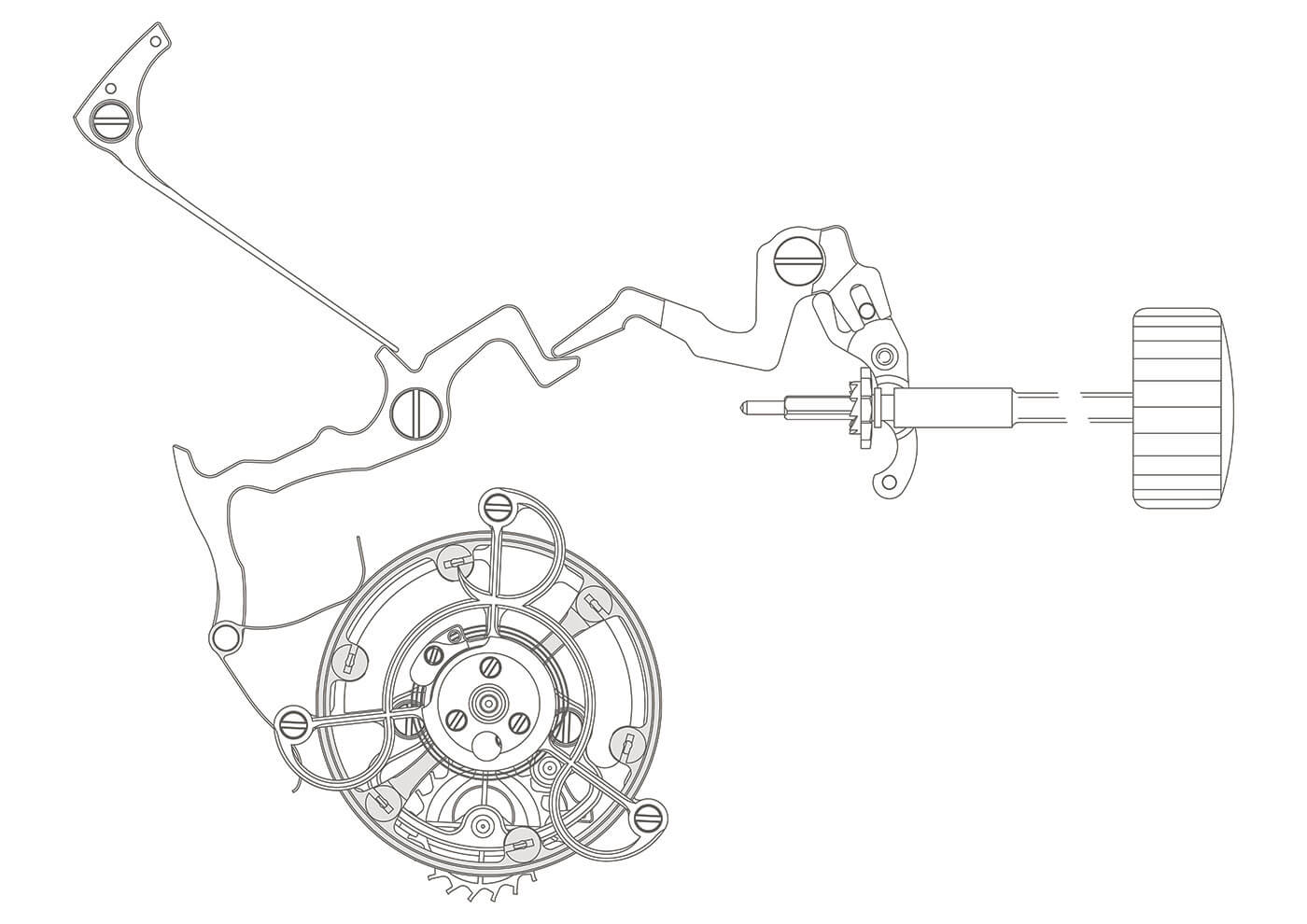
Remontoir
The development of this patent, granted in 2010, goes back to the Lange 31, as Anthony de Haas explained in our interview, and was inspired by old Lange pocket watch movements. In all models of the Zeitwerk watch family, this small power plant between the barrel and balance is required as a pacemaker for the jumping advancement of the discs. At the same time, it makes an important contribution to rate stability by ensuring that the balance is driven with consistent force over the entire running time, regardless of the watch’s power reserve and unaffected by the energy-consuming switching operations. Without these ideas behind this patent, the Zeitwerk would not exist.
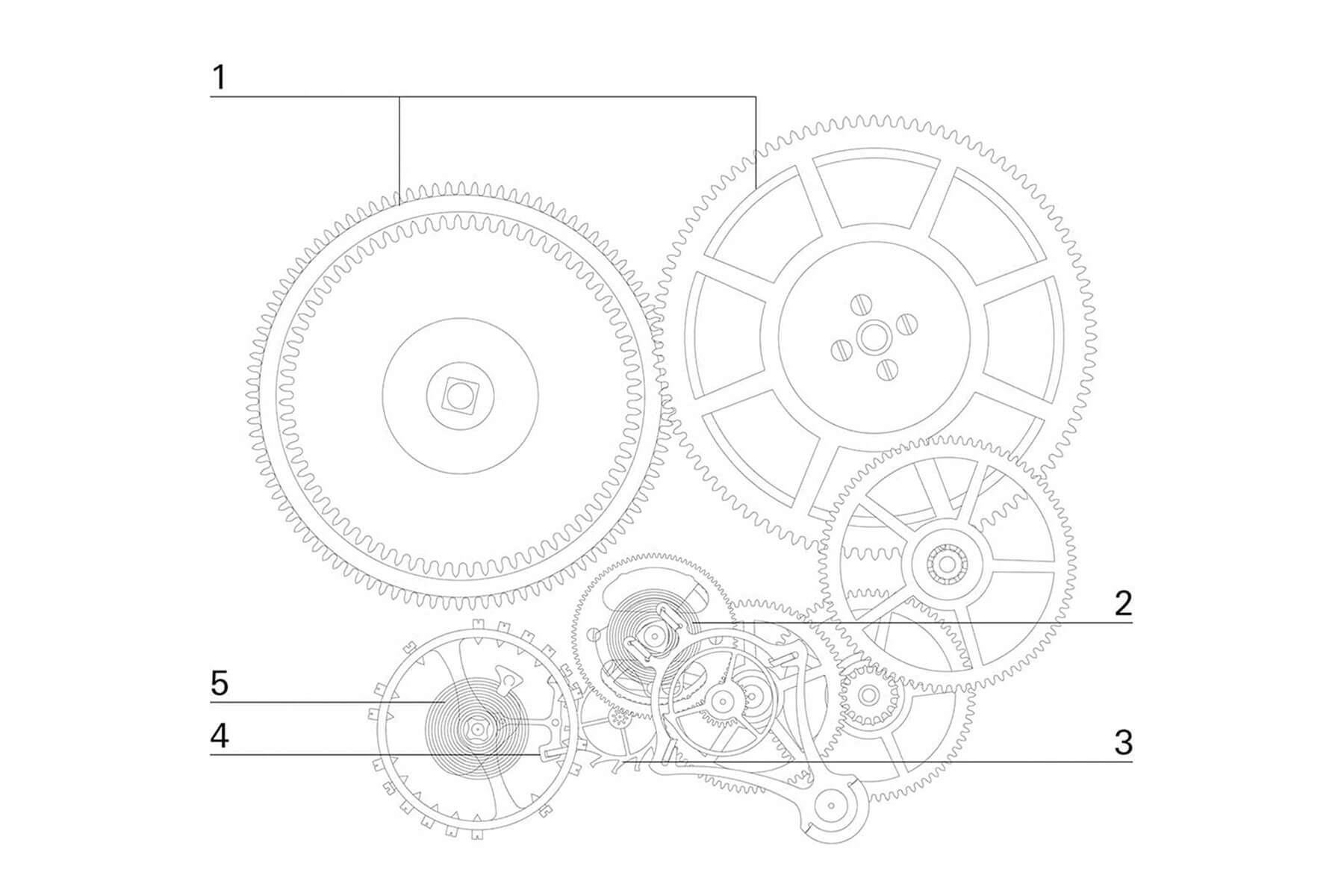
The patented tensioning mechanism of the Richard Lange ‘Terraluna’ perpetual calendar
Jumping numerals
Let’s stay with the Zeitwerk, perhaps the most innovative and modern Lange watch. In 2011, this patent was granted, which is crucial for the exact jumping numeral display of the Zeitwerk models. The module, consisting of three discs, is designed so that the displayed time can be read from left to right. With a gentle click and barely perceptible to the human eye, the aforementioned remontoir mechanism advances the time from minute to minute, until at the full hour, it propels all three numeral discs forward by exactly one increment simultaneously.
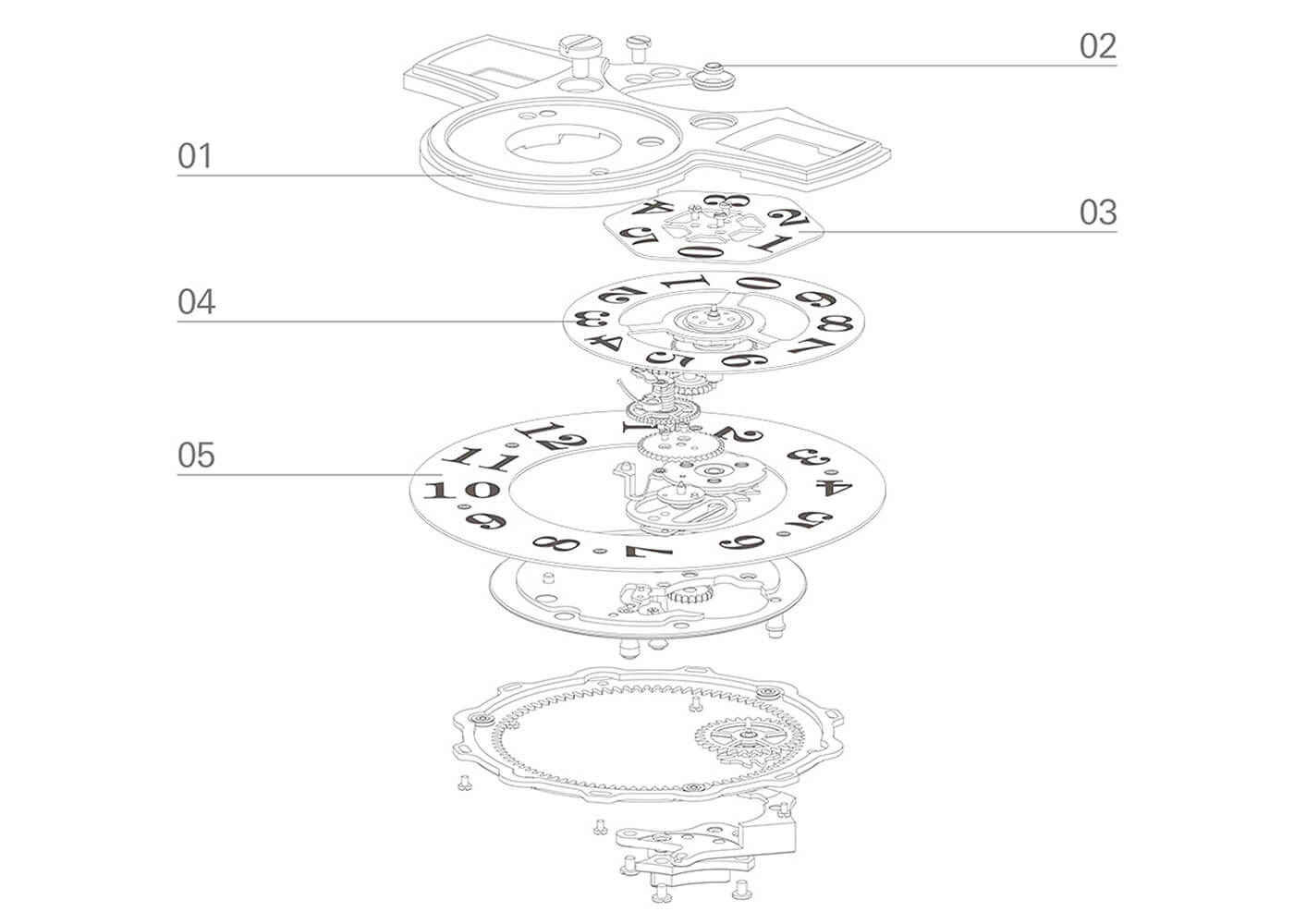
01 – nickel silver time bridge, 02 – colourless sapphire bearing jewel, 03 – tens of minutes disc with the numbers 0 to 5, 04 – units of minutes disc with the numbers 0 to 9, 05 – hour ring with the numbers 1 to 12
Semi-transparent dial coating of the Lumen models
The seventh patent, granted in 2013, deals, at least partially, with the Zeitwerk. It concerns the highly coveted Lumen models, where the digits or entire dials are coated with luminous material and transparent sapphire crystal discs replace the traditional Lange dials made of German silver. The technical challenge in developing these watches was to charge the luminous elements hidden under the dial with light energy during the day.
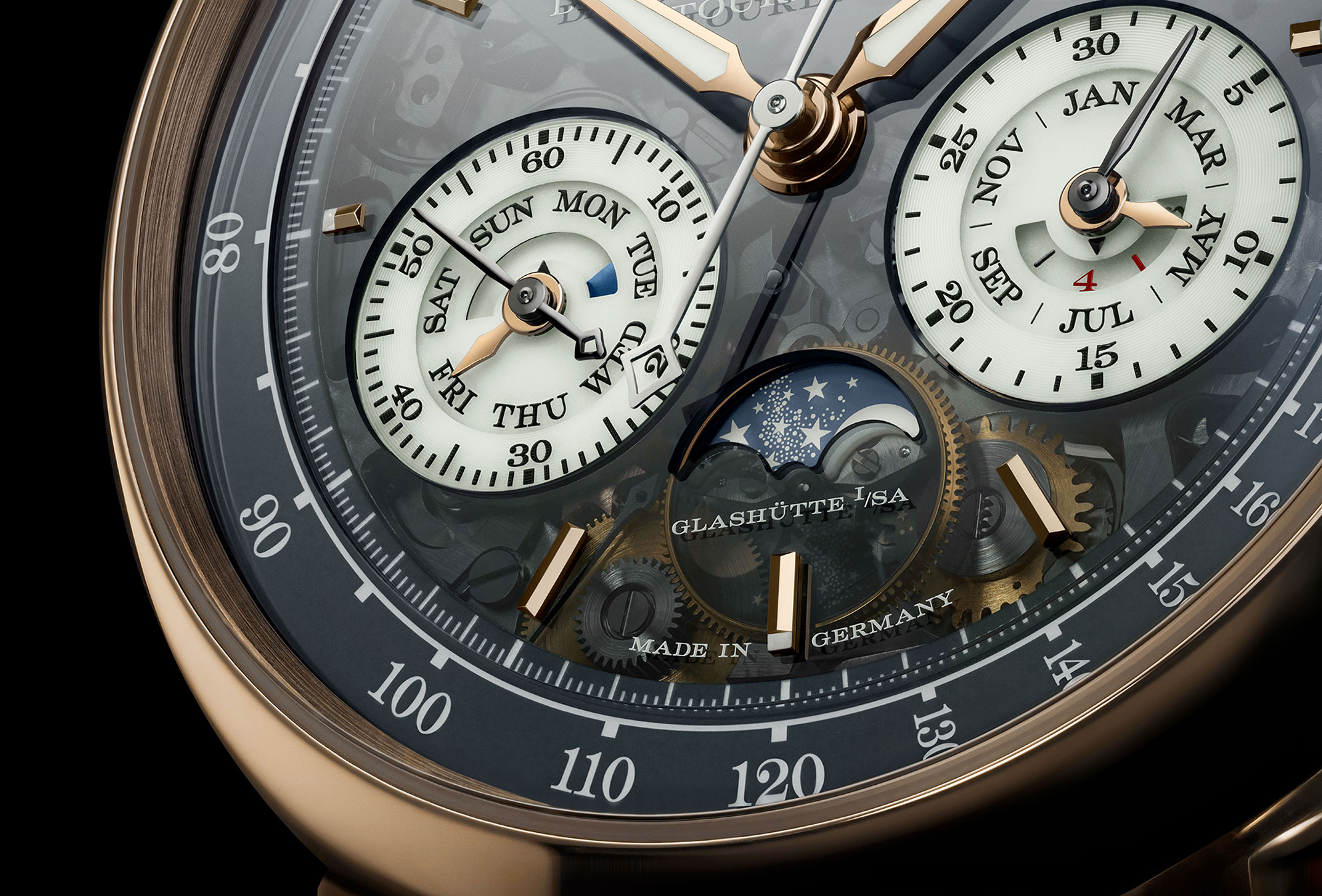
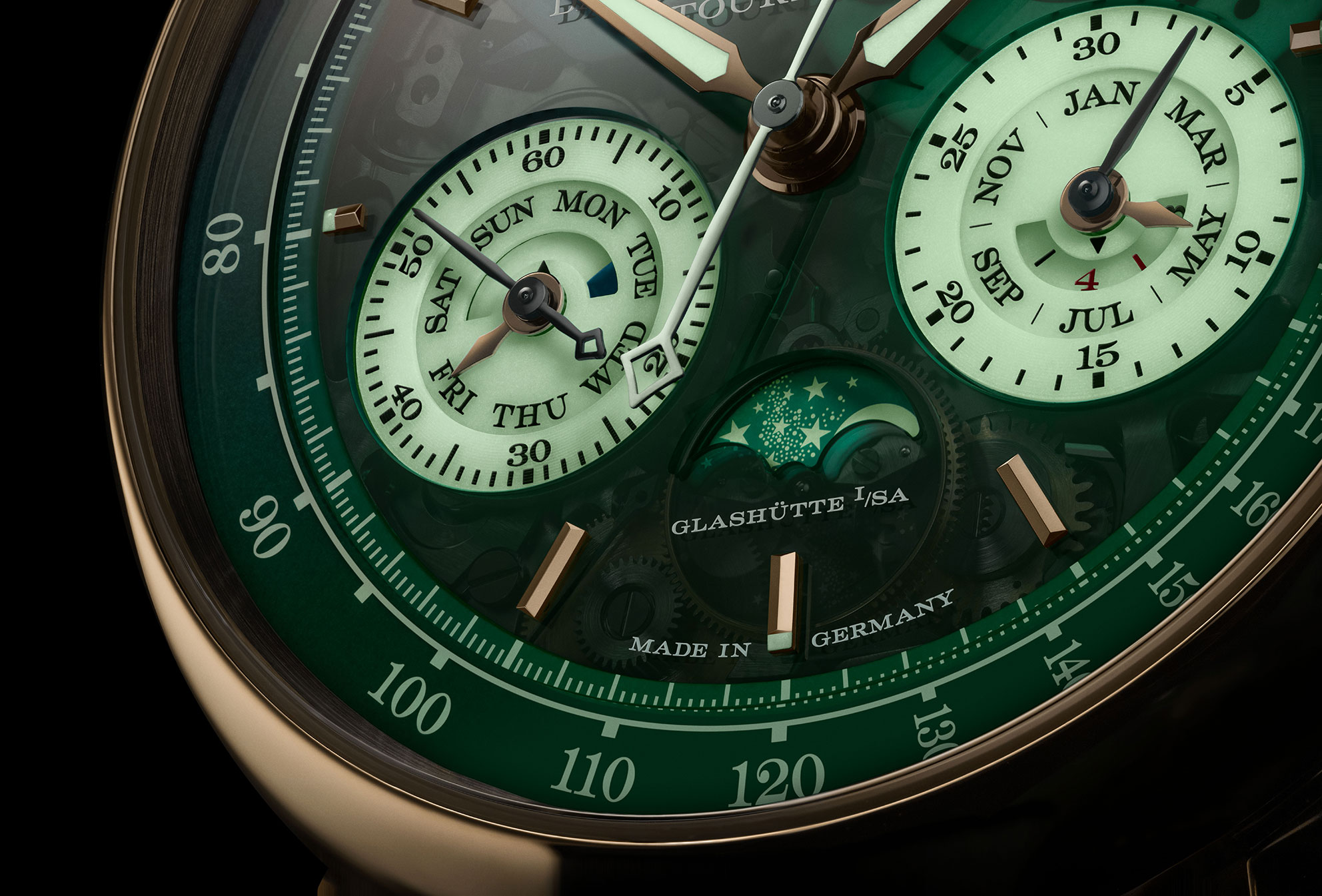
The team led by Anthony de Haas found the solution in a sapphire crystal dial with a semi-transparent and UV-light-permeable coating. At the same time, light waves in the visible range are dampened while ultraviolet light waves are allowed through to make the displays of the Zeitwerk “Luminous,” Grand Lange 1 “Lumen,” Grand Lange 1 Moon Phase “Lumen,” and most recently the new Datograph Perpetual Tourbillon Honeygold “Lumen” glow at night.
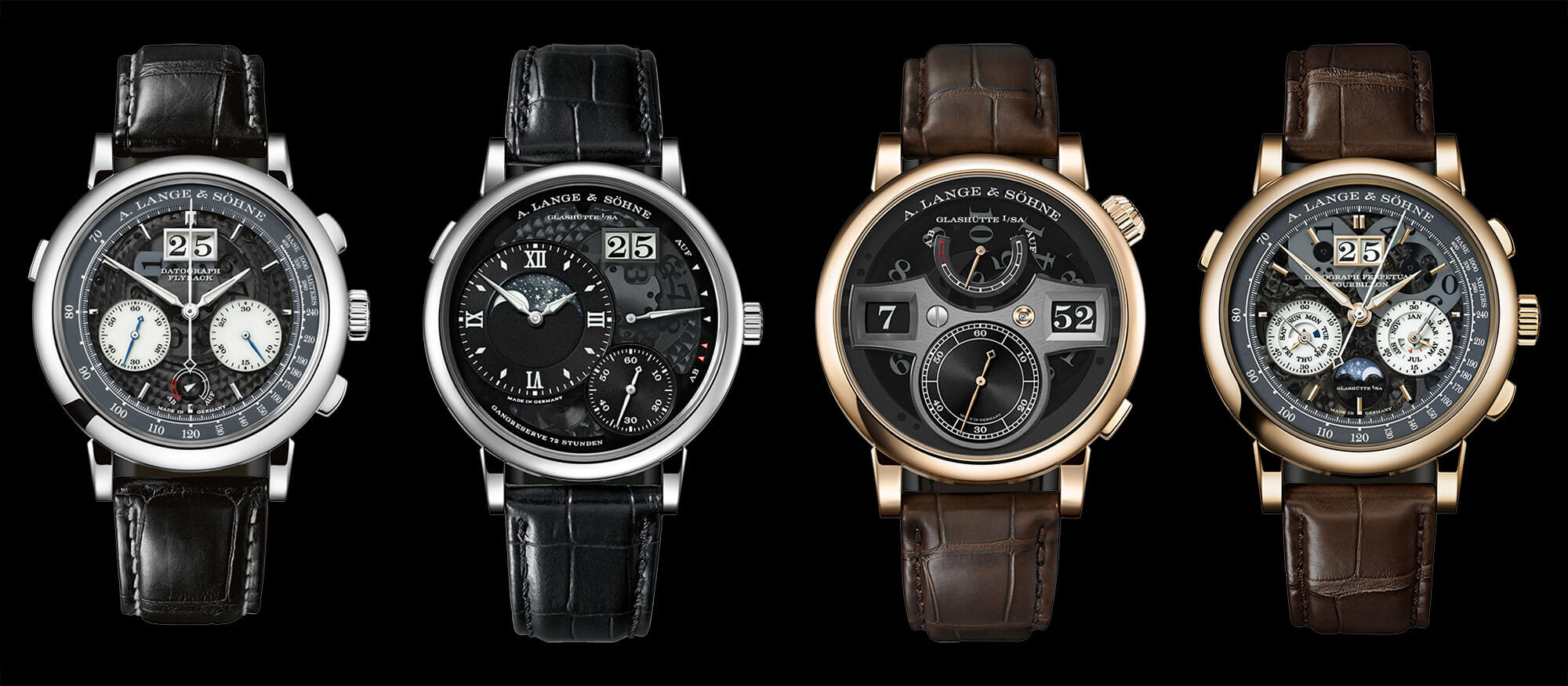
Orbital moonphase display
Let’s move on to astronomy. This mechanism was patented in 2014. In the Richard Lange Perpetual Calendar “Terraluna”, the patented orbital moonphase displays the constellation of the moon in relation to the earth and the sun on the back of the watch through the sapphire crystal case back. The display is presented as it would appear to an observer in the northern hemisphere. It consists of three discs: a sky disc, a moon disc underneath it, and a central earth disc. The balance wheel takes the position of the sun in the arrangement. The display follows the synodic lunar cycle of 29 days, 12 hours, 44 minutes, and 3 seconds so precisely that it only needs to be corrected by one day after 1,058 years.
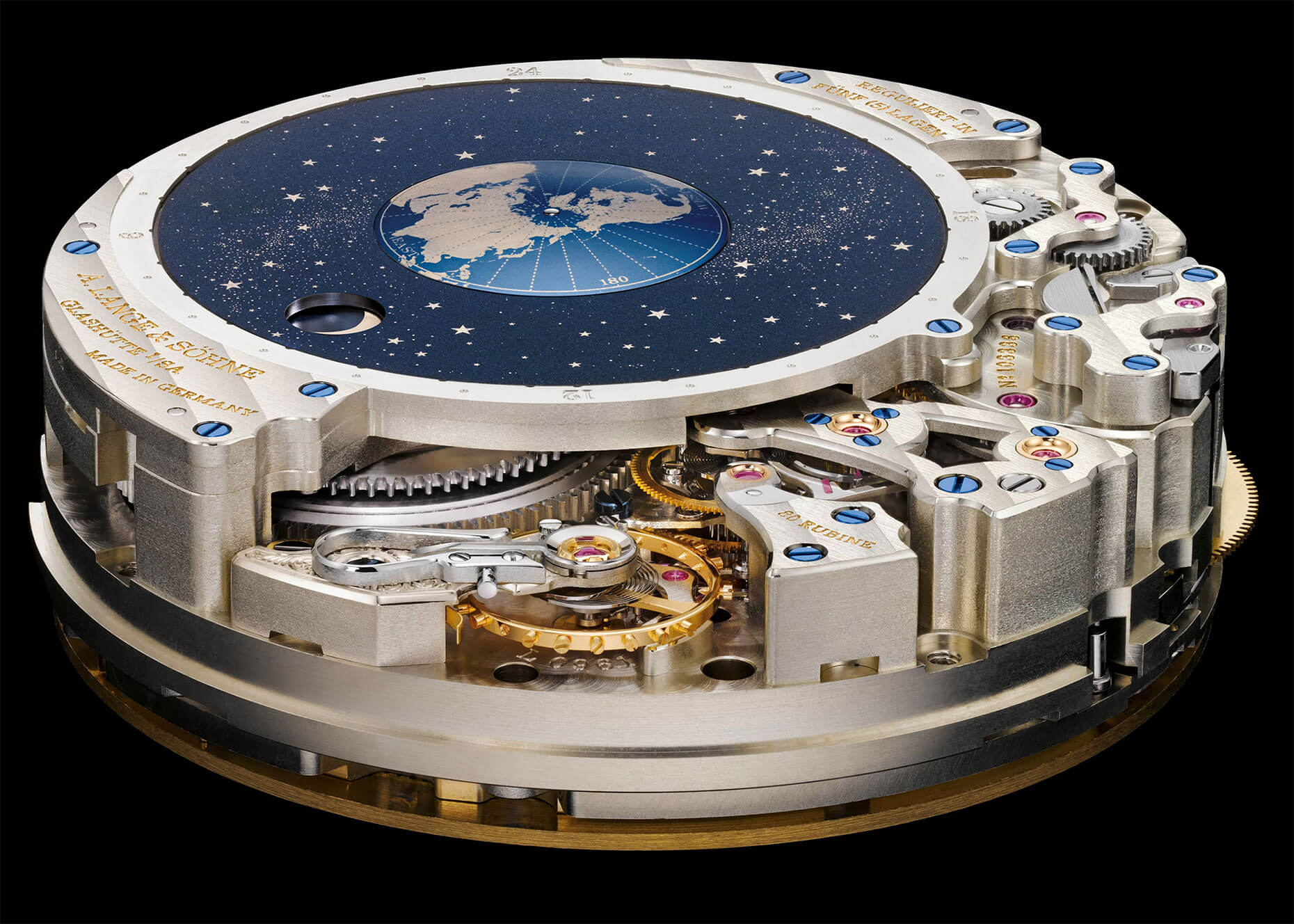
Delay of digit advancement
The last patent presented here also focuses on the Zeitwerk, in this case, the minute repeater of the line. To ensure the smooth operation of the complex mechanics in the Zeitwerk Minute Repeater, elaborate safety mechanisms had to be built into the movement. The switching of the numeral disks is delayed while the striking mechanism is running, until the repeater process is fully completed. Since the stages of the repeater mechanism are fixed to the shafts of the jumping numeral disks due to design constraints, a switching process during repeating could lead to mechanical conflicts and damage the movement. The delay also ensures that the acoustic signal always corresponds to the displayed time.
